
- Travel blog

Is Cusco Peru Worth Visiting? What to See and Do in Cusco, Peru
Home » Travel Information » Is Cusco Peru Worth Visiting? What to See and Do in Cusco, Peru

The Ultimate Guide to Cusco: Explore the Best of Peru’s Historic Capital
Cusco is a fascinating gateway to rich Andean culture, offering a perfect starting point for exploring Machu Picchu and the Sacred Valley. Discover our complete travel guide below, packed with essential information, expert travel tips and must-see attractions to make the most of your trip to Cusco.
Introduction
The historic capital of the Inca Empire, Cusco is a city rich in history, culture and natural beauty. Cusco is the gateway to some of Peru’s most famous attractions, such as Machu Picchu and the Sacred Valley . Whether you like adventure, history or simply immersing yourself in a new culture, Cusco has something to offer everyone.
Where is Cusco located?
Located in the Andes Mountains in southern Peru, Cusco was known by the Incas as the “navel of the world”. From above, the city is seen wedged like a bowl between towering peaks. The impressive mountain scenery, combined with its remarkable Inca and colonial architecture, make Cusco an impressive tourist destination. Nevertheless, its unique topography also means that the city is characterized by steep hills, which can be a challenge for visitors arriving from sea level.
Note: See our blog about how to avoid altitude sickness in Cusco.
Cusco Elevation
The city of Cusco is located some 3,400 meters above sea level (11,150 feet), making it one of the highest cities in the world. This impressive altitude means that visitors may experience symptoms of altitude sickness, which is common coming from sea level locations, such as shortness of breath, dizziness or fatigue. To mitigate these effects, it is essential to acclimatize gradually, stay well hydrated and avoid strenuous activities especially on your first day in Cusco.
Climate & Weather in Cusco
Located in the Andes Mountains of Peru, Cusco enjoys a subtropical altiplano climate due to its high altitude. The weather in Cusco is mainly dry and temperate, with two distinct seasons: a dry season, corresponding to winter (May to October), and a rainy season, coinciding with summer (November to April). During the dry season, skies are clear and temperatures are cooler, while the rainy season brings frequent rain, often in the form of afternoon showers. Although temperatures in Cusco can approach freezing, they usually remain above freezing. On the other hand, in the surrounding mountains, temperatures are much colder and sometimes drop below freezing.
Dry season (May to September)
The dry season in Cusco coincides with the southern hemisphere winter, with warm, sunny days and cold nights. July and August are the driest months, with nighttime temperatures often dropping below freezing.
Daytime: 19-20°C (66 to 68°F) At night: 0-4°C (32-39°F)
Rainy season (November to March)
During the summer in the Andes, Cusco experiences brief and occasional rains. January and February are the rainiest months, with warmer nights due to increaseed cloud cover.
Daytime: 19-21°C (66-70°F) Nighttime: 6-7°C (43-45°F)
Is it worth visiting Cusco?

Cusco is definitely worth a visit. It is a gateway to Machu Picchu and a must-see for travelers exploring Peru. Beyond Machu Picchu, Cusco is steeped in history, as it was the capital of the Inca Empire. Emblematic sites such as Qorikancha and Sacsayhuaman showcase its rich past, blending Inca and colonial architecture.
The vibrant culture of the city is evident in festivals such as Inti Raymi and in its bustling markets, which offer an authentic taste of Andean life. Surrounded by the breathtaking Andes and nearby attractions such as the Sacred Valley, Cusco is perfect for both outdoor adventurers and history enthusiasts. The city of Cusco is an unforgettable destination, far beyond a simple stop at Machu Picchu.
The Best Time to Visit Cusco Peru
(august to december).
The dry season is generally considered the best time to visit Cusco for its clear skies and pleasant temperatures. However, this period also coincides with the peak tourist season. For optimal sightseeing and a quieter experience, consider visiting the city during the months of August through December. This period continues to offer ideal conditions for exploring Cusco and its surroundings, while avoiding crowds and benefiting from seasonal discounts and offers.
Note: Cusco is an unforgettable destination, far beyond a simple stop at Machu Picchu.
What to See in Cusco, Peru
Things to do:.

Plaza de Armas of Cusco
The Plaza de Armas of Cusco is the heart of the city and a must-see for anyone visiting the city. This historic Cusco square has been a central point since the Inca Empire, where it served as a meeting place for important events. Today, it remains the cultural and social center of the city, surrounded by beautiful colonial architecture, such as the Cusco Cathedral and the Church of the Society of Jesus. The plaza is a lively place full of restaurants, bars, cafes and stores. It is an ideal place to relax, people-watch or start exploring the city. The Plaza de Armas is not only a symbol of Cusco’s rich history, but also the perfect starting point for anyone wishing to explore this fascinating city.

Qoricancha Temple
Qorikancha (also spelled Coricancha), in Quechua meaning “Temple of the Sun”, was the most important temple of the Inca Empire. It was dedicated to the Sun God, and was the religious, political and astronomical center. The walls of the temple were covered with gold, a symbol of the Incas’ veneration of the sun. By the time the Spanish colonized Peru, they built the church of Santo Domingo on the foundations of the Qorikancha temple, blending Inca and colonial architecture. Today, visitors can still contemplate the Inca stonework, famous for its precision, alongside the colonial structures. The site also contains artifacts and exhibits about the Inca culture and their advanced astronomical knowledge.
Qorikancha is a must-see stop for visitors new to Cusco and wishing to explore Cusco’s rich mix of Inca and colonial history. Its significance as a spiritual and architectural marvel makes it one of the city’s most important landmarks.

San Blas Barrio
The neighborhood of San Blas is one of the most charming and artistic in Cusco. Located uphill from the Plaza de Armas of Cusco, it is known for its narrow cobblestone streets, old houses and vibrant handicraft stores. The neighborhood has a bohemian atmosphere, attracting artists and artisans selling traditional crafts, jewelry and artwork. The San Blas square is home to the San Blas Church, one of the oldest in Cusco, which has a beautifully carved wooden pulpit. The neighborhood also offers some of the best views in Cusco, with picturesque spots where you can enjoy panoramic views.
San Blas is also a great place to explore for its cozy cafes and restaurants. It is the perfect area to experience the creative side of Cusco while soaking up its historic charm.

The Inca Museum
The Inka Museum of Cusco is one of the best places to better understand the Inca culture and its rich history. Housed in a beautiful colonial building, the Casa del Almirante, the museum features a vast collection of artifacts, including ceramics, textiles, royal mummies and metalwork, which showcase the impressive Inca and pre-Inca craftsmanship and culture.
The museum offers a wealth of information about Inca society, their way of life and religious beliefs. It also highlights the development of the other pre-Inca cultures and the subsequent Spanish conquest, giving visitors a complete understanding of the region’s history.
With expert guides, the Inca Museum is an essential stop for anyone interested in the history of the Inca Empire.

San Pedro Market
The San Pedro Market is the most authentic and bustling market in the city, offering a truly authentic local experience. Located just a short walk from the Plaza de Armas, it is a place where Cusqueños shop for everything from fresh produce to handicrafts. The market offers a variety of fruits, vegetables, cheese, fish, food, spices and traditional Andean ingredients such as quinoa and coca leaves. Mercado de San Pedro is a great place to buy souvenirs such as alpaca textiles, handmade jewelry and ceramics at great prices. There are also stalls selling freshly prepared local dishes such as ceviche, empanadas and fresh juices, making it an ideal place for a quick and affordable meal.

Choco Museum
Chocolate lovers flock to this museum for its hands-on chocolate-making workshops and the chance to enjoy a delicious hot chocolate with a unique flavor. The café’s balcony also offers impressive views of the city. Be sure to try the “bean to bar” workshop, where you’ll learn about the cultivation and production of chocolate before creating your own personalized bars. If you’re short on time, make a quick stop to buy some of the museum’s specialty chocolate products.
Entry is free into the small museum where you can learn about the history of chocolate

Twelve Angle Stone
Head to Hatunrumiyoc, a narrow historic street, to admire an impressive example of Inca mastery of stonework. The precision of the Inca masonry technique, in which the stones fit together perfectly without mortar, is on display here in all its splendor. The highlight is the famous Stone of the Twelve Angles, perfectly integrated to the lower wall of the Archbishop’s Palace. Don’t miss the opportunity to have your photo taken in front of this extraordinary stone, often accompanied by a local dressed in traditional Inca costume, adding a touch of authenticity to your experience.

Sacsayhuaman Ruins
Sacsayhuaman is one of the most remarkable archaeological sites near the city of Cusco, famous for its massive, precisely carved stone walls. Nestled on a hill overlooking the city, this ancient fortress shows the incredible skill of Inca masonry. The site is famous for its enormous stones, some weighing over 100 tons, which fit together perfectly without the need for mortar.
Historically, Sacsayhuaman was an important religious and ceremonial center for the Incas, serving originally as a ceremonial space. Its impressive construction and strategic location highlight its importance in Inca society. Sacsayhuaman is a must-see place, where festivals and events are also held, adding to its cultural importance.

Tambomachay Ruins
Tambomachay is an interesting archaeological site located near Sacsayhuaman and the city of Cuzco, famous for its exceptional hydraulic works. Known locally as the “Baths of the Inca”, this site shows the advanced hydraulic engineering of the Incas through a series of aqueducts, canals and fountains. The precise stone canals and waterfalls highlight the Incas’ impressive water management skills and their reverence for water as a sacred element. Although the archaeological site is partially destroyed, it still continues to impress visitors. Visiting Tambomachay provides a glimpse into the sophisticated engineering and spiritual practices of the Inca civilization, making it a valuable stop for anyone interested in understanding more about the hydraulic engineering of the Inca era.

Cristo Blanco
The White Christ of Cusco is an emblematic monument that offers scenic experiences. Perched atop a mountain, a hill overlooking the city, this imposing white statue of Jesus Christ stands as a prominent symbol of faith and peace. Erected in 1945, the statue reflects Cusco’s deep Christian heritage and serves as a symbol of hope and unity. Visitors enjoy breathtaking panoramic views of Cuzco and the surrounding Andes. Its elevated location provides an excellent vantage point for capturing stunning photographs of the city and its beautiful mountains.
To visit the White Christ you do not need an entrance ticket nor is there a visiting hours, although we recommend visiting it in the morning between 9:00 am and 11:00 am.

Rainbow Mountain
Exploring Rainbow Mountain, or Vinicunca, is one of the best things to do in Cusco if you like adventure. This stunning natural wonder, located about 3 hours from the city, features vibrant multicolored layers created by mineral deposits over millions of years. The hike to the summit, which reaches an altitude of over 5,000 meters (16,500 feet), is challenging but incredibly rewarding once you reach the top, with breathtaking panoramic views of the surrounding Andes. Along the way, you will pass traditional villages, alpaca herds and snow-capped peaks. Visiting Rainbow Mountain is an unforgettable experience and a must on any Cusco itinerary.

Humantay Lake
Lake Humantay is a must-see for nature lovers exploring Cusco. Nestled high in the Andes, at 4,200 meters altitude, this turquoise jewel is fed by the glaciers of Mount Humantay. The hike to the lake is a moderate challenge, but the breathtaking reward is worth every step. If you want to take it easy there is also the option of renting horses. The Humantay Lake is surrounded by towering snow-capped peaks and lush vegetation, the lake offers breathtaking views and a tranquillity Whether you are looking for adventure or simply want to enjoy the natural beauty of the Andes, Humantay Lake is a highlight not to be missed on your travels to Cusco.
Explore the Sacred Valley of the Incas
Things to see:.

Ollantaytambo Ruins
The ruins of Ollantaytambo are an extraordinary archaeological site in Peru’s Sacred Valley. Known for its impressive terraces and ceremonial structures, this ancient Inca site served as both a fortress and a religious center. The site includes terraced platforms, intricate stonework and the prominent Temple Hill, which offers panoramic views of the valley. Ollantaytambo was also an important site during the Spanish conquest. Today, it remains a popular destination for those exploring Inca history and breathtaking scenery.

Pisac Ruins
The ruins of Pisac are an impressive archaeological site located in the province of Calca in the Sacred Valley of Peru, near the mountaintop village of Pisac. This ancient Inca site, famous for its impressive cultivation terraces and extensive ruins, offers a fascinating insight into the agricultural and architectural achievements of the Incas.
Pisac was also a strategic location, offering impressive panoramic views of the Sacred Valley. It played an important role in the Inca Empire, both as a religious center and as a center of agricultural production as it supplied food for almost the entire kingdom. Today, the ruins of Pisac are a popular destination for travelers interested in Inca history, architecture and stunning natural scenery.

The Salt Mines
The Maras Salt Flats, also called Salinas de Maras , located in the Sacred Valley, near Cusco, are a fascinating and picturesque place, these ancient salt pans have been used since Inca times and remain an important source of salt today. The site consists of thousands of salt evaporation ponds, set out in a series of terraces. Each pool is filled with water from a natural salt spring and allowed to evaporate in the sun, leaving crystallized salt behind.
Those visiting the Salt Mines can explore the terraces, learn about traditional salt production methods and enjoy panoramic views of the surrounding valley.

The Ruins of Moray
The ruins of Moray are a captivating archaeological site located in Peru’s Sacred Valley, near the town of Maras. The site is famous for its characteristic circular terraced depressions, believed to have been used by the Incas as an agricultural laboratory. The concentric terraces, allowed the Incas to experiment with different crops and growing conditions by creating different microclimates in the depressions. The intricate design of the terraces, shows the advanced agricultural techniques of the Incas. The site also offers panoramic views of the surrounding landscape. Moray provides a unique insight into Inca agricultural innovation and the impressive engineering skills of the ancient civilization.

Alpaca Farm
Manos de la Comunidad is a large alpaca farm near the city of Cusco that offers an enriching experience for visitors interested in Andean culture and traditional handicrafts. At the farm you can interact with alpacas , llamas and vicuñas learning all about their care and the role they play in the local culture. The farm highlights the importance of alpacas to the community and offers a hands-on view of their sustainable and ethical breeding practices. The alpaca farm can be easily reached from Cuscp or Pisac, admission is free although you will be offered to visit an alpaca store in case you would like to buy something.
Where to Stay in Cusco, Peru
We believe that one day is not enough to explore all the attractions that Cusco has to offer, so to fully enjoy your stay, it is essential to choose the right accommodation. Cusco caters to all types of travelers with a wide range of accommodation options, from budget hostels to luxurious hotels. Cusco offers a huge variety of hotels allowing you to select the hotel that best suits your needs and preferred location. For those who want to be in the middle of the action, staying near the Centro Historico is ideal. If you prefer a more serene atmosphere, there are also quieter options.
Here a list of the best hotels in Cusco according to your budget to consider:
- Posada San Blas
- Cusco Plza Nazarenas
- Hotel Las Quenas
- Hotel San Pedro Plaza
- Hotel Monasterio San Pedro
- Quechua Hotel Cusco
- Niños Hotel Meloc
- Hotel Palacio del Inka
- Hotel Monasterio (Belmond)
- Palacio Nazarenas
- JW Marriott El Convento Cusco
- Aranwa Cusco Boutique Hotel
- Casa Andina Premium Cusco
- Sonesta Hotel Cusco
- Novotel Hotel Cusco
Where to Eat in Cusco
Cusco offers a huge variety of typical restaurants, with dishes for all tastes. For traditional Peruvian cuisine, try Cicciolina or Gaston Acurio’s Chicha, which offer a delicious take on local dishes. Pachapapa restaurant , in San Blas, is perfect for tasting hearty Andean cuisine, we also recommend eating at the Morena restaurant, consider that for all these restaurants you must make your reservation at least a couple of hours in advance.
For a modern touch, MAP Café offers elegant Peruvian cuisine inside a museum. If you’re in the mood for international flavors, Uchu Peruvian Steakhouse restaurtant is great for steaks, while Jack’s Café offers a mix of Peruvian and global breakfasts. Vegetarians and vegans should try Kusikuy or Green Point for delicious plant-based dishes. For a casual meal, we recommend Mercado de San Pedro. Don’t miss the sweet treats at La Valeriana or Chocolatier, where you’ll find delicious chocolates and desserts.
Best Restaurants in Cusco
A city rich in history and culture, Cusco also has a dynamic culinary scene that reflects its vibrant heritage. Whether you are looking for traditional Peruvian flavors or a modern twist on classic dishes, there are restaurants in Cusco to suit all tastes. From fine dining experiences to casual and tasty street food, the city offers a range of options that highlight the best of local and international cuisine. Here is a list to some of the best restaurants in Cusco:
- Greens Organic
- Morena Restaurant
- Chicha Restaurant
- Kusykay Peruvian Craft Food
Travel Tips
Altitude sickness in cusco.
Altitude sickness is a common concern for those visiting Cusco, given its high altitude of about 3,400 meters (11,200 feet). Symptoms can vary including, headache, nausea, dizziness and fatigue, while more severe cases can lead to serious illnesses such as pulmonary edema. To minimize the risk, acclimatize gradually by spending a few days at lower altitude, we recommend staying in the Sacred Valley first and then in Cusco, stay hydrated and avoid alcohol and heavy meals especially during your first 2 days. Taking it easy and drinking mate de Coca or Muña tea a traditional remedy, can also help. In case of severe symptoms, seek medical attention immediately at local clinics in Cusco.
Boleto Turistico
The Boleto Turistico is essential for your exploration of the city’s main attractions. This ticket gives you access to the main attractions such as Sacsayhuaman, Qenqo, Puka Pukara and Tambomachay. In the Sacred Valley you can visit, Moray, Ollantaytambo, Pisac, Chinchero as well as museums in the city. There are general admission tickets, which cover most attractions and are valid for 10 days, and partial tickets for specific sites. You can buy the Boleto Turistico at the main tourist office, near the Plaza de Armas, or at each of the sites. Keep the ticket well, as you will need it to enter each site.

What to Wear in Cusco
The weather in Cusco can be highly changeable due to its high altitude, so dressing appropriately is key to staying comfortable. Here is a quick guide on what to wear depending on the season:
Rainy season (November to March):
Waterproof jacket: Essential for unexpected showers Layered clothing: Temperatures can vary from cool to warm, so layering will help you adjust as needed. Waterproof footwear: Waterproof boots or shoes will keep your feet dry and comfortable. Sun protection: A hat and sunscreen are important, as the sun can be strong even when during the wet season.
Dry season (April to October):
Warm clothing: In the early morning and evening it can get quite chilly, so bring a warm jacket with you. Light, breathable clothing: Daytime temperatures are more enjoyable, so light, breathable clothing will keep you comfortable during the day. Sun protection: Sunglasses, a sun hat and sunscreen are crucial, as the sun can be intense at higher elevations. Comfortable footwear: Good footwear is essential for exploring Cusco and the surrounding area.
Conclusions
In conclusion, Cusco is a fascinating destination where a rich historical heritage and unique cultural experiences converge in the heart of the Andes. With its impressive mix of Inca and colonial architecture, its lively bustling markets and its proximity to impressive sites such as Machu Picchu and the Sacred Valley , Cusco offers an unforgettable travel experience. To get the most out of your visit, plan your trip in advance, allow time to acclimatize to the altitude and pack appropriately for different weather conditions. Cusco promises a journey full of discoveries and wonders.
Get in Touch with “Come see Peru Tours”
Let us help you design your tour your way. A travel specialist will contact you shortly. If you don’t see a response, please check your spam box.

Lorem ipsum dolor sit amet, consectetur adipiscing elit. Fusce non bibendum nunc. Duis a ipsum et risus tempor aliquet non non quam. Integer porta sed enim eget vulputate
Custom your Trip
Email Address
Phone or WhatsApp
Privacy Overview

Getty Images/Flickr RF
Welcome to the navel of the world. The undisputed archaeological capital of the Americas, Cuzco is the continent’s oldest continuously inhabited city and the gateway to Machu Picchu. Cosmopolitan Cuzco (also Cusco, or Qosq’o in Quechua) thrives with a measure of contradiction. Ornate cathedrals squat over Inca temples, massage hawkers ply the narrow cobblestone passages, a rural Andean woman feeds bottled water to her pet llama while the finest boutiques sell pricey alpaca knits.
Attractions
Must-see attractions.

Museo Machu Picchu
This newish museum exhibits 360 pieces from Machu Picchu taken by Hiram Bingham's expeditions and recently returned by Yale University, including stone…

Cusco Planetarium
An excellent way to explore the fascinating Inca cosmovision. They defined constellations of darkness as well as light, used astronomy to predict weather…
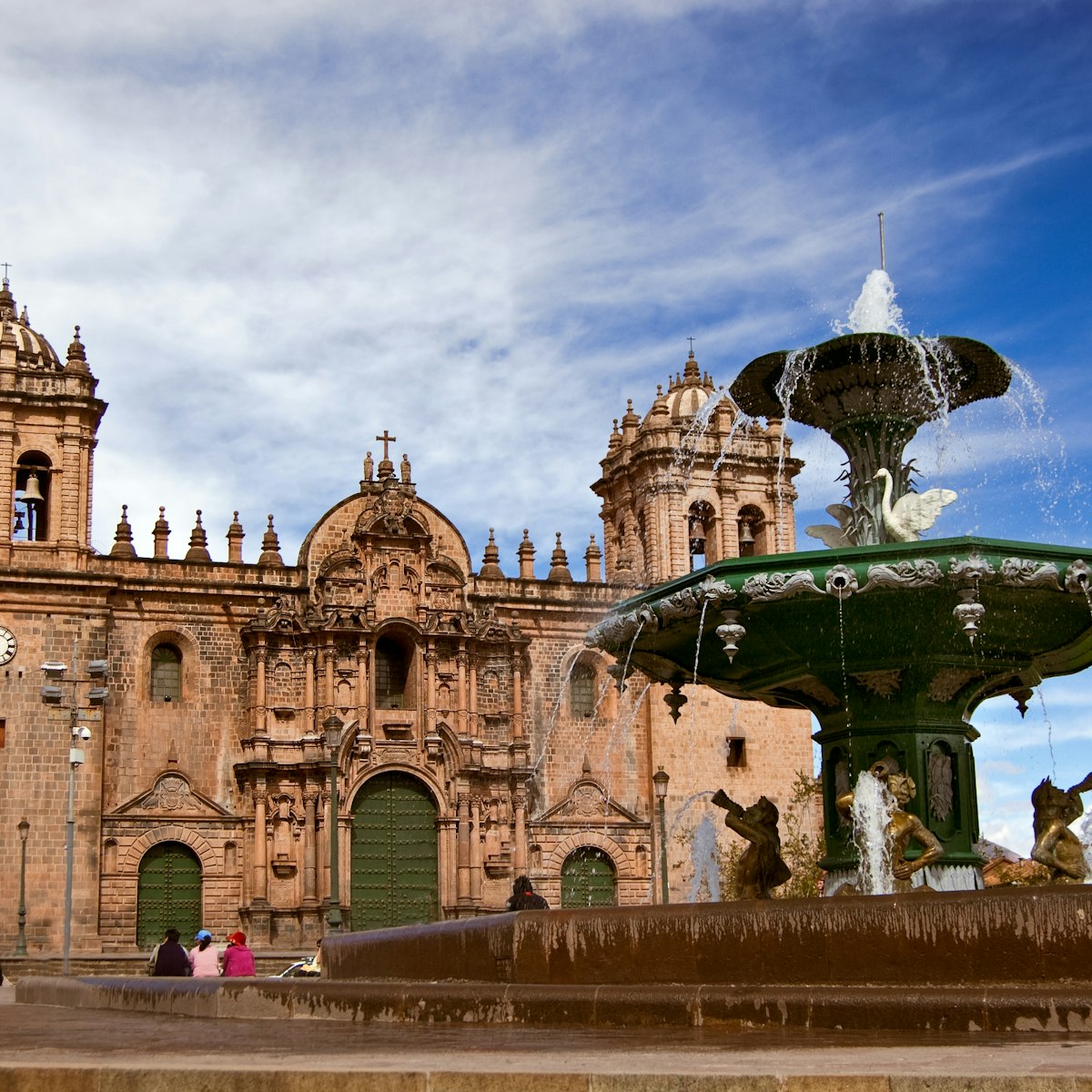
La Catedral
A squatter on the site of Viracocha Inca’s palace, the cathedral was built using blocks pilfered from the nearby Inca site of Sacsaywamán. Its…

If you visit only one Cuzco site, make it these Inca ruins forming the base of the colonial church and convent of Santo Domingo. Once the richest temple…

Plaza de Armas
In Inca times, the plaza, called Huacaypata or Aucaypata, was the heart of the capital. Today it’s the nerve center of the modern city. Two flags usually…

Iglesia de La Compañía de Jesús
Built upon the palace of Huayna Cápac, the last inca to rule an undivided, unconquered empire, the church was built by the Jesuits in 1571 and…

Museo de Arte Precolombino
Inside a Spanish colonial mansion with an Inca ceremonial courtyard, this dramatically curated pre-Columbian art museum showcases a stunningly varied, if…

Templo y Convento de La Merced
Cuzco’s third most important colonial church, La Merced was destroyed in the 1650 earthquake, but was quickly rebuilt. To the left of the church, at the…
Plan with a local
Experience the real Peru
Let a local expert craft your dream trip.
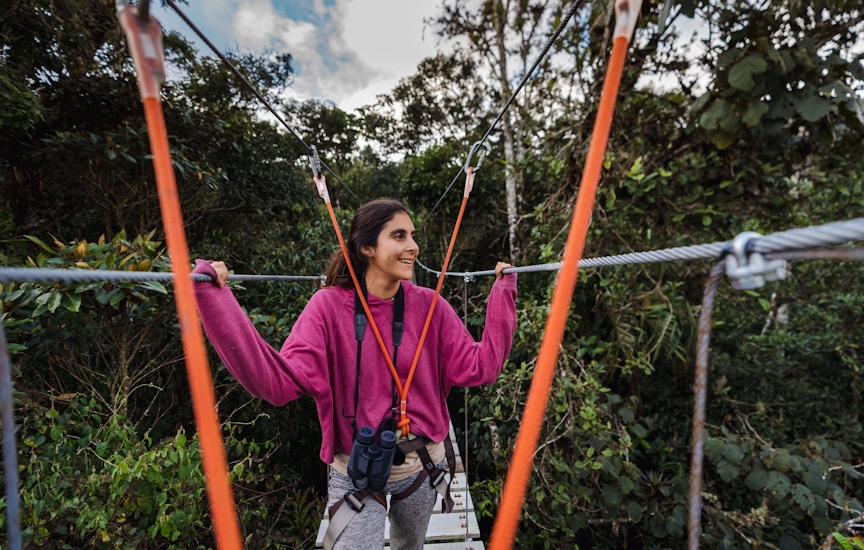
Latest stories from Cuzco

Feb 7, 2020 • 4 min read
Peru's Rainbow Mountains are stunning. But there's always a crowd. For a bit more elbow room and comparable views trek through the Ausangate Mountains.

Jan 8, 2020 • 9 min read
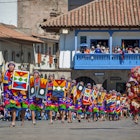
May 22, 2019 • 3 min read

Feb 18, 2019 • 4 min read

Nov 20, 2018 • 1 min read

Mar 1, 2018 • 6 min read

Nov 8, 2017 • 7 min read
in partnership with getyourguide
Book popular activities in Cuzco
20 Best Things to Do In, From, and Around Cusco (Chosen by Experts!)

1. The Cusco Cathedral
2. san blas neighborhood, 3. the cristo blanco statue, 4. taste the delights of peruvian cuisine, 5. farmers market & cooking class, 6. climb to one of the many viewpoints, 7. visit the ruins of tambomachay, 8. nightlife in cusco, 9. learn about inca history in one of cusco’s many museums, 10. embark on an exhilarating atv tour through the south valley, 11. visit the picturesque wetlands of huasao, 12. paint pucará bulls and take home a souvenir, 13. attend a weaving class with talented artists of the andes, 14. hike to the inca fortress of sacsayhuamán, 15. the humantay lake, 16. take a stroll on the picturesque siete borreguitos street, 17. sapantiana aqueduct, 18. the qosqo center of native art, 19. rainbow mountain and other day trips, 20. inca trail to machu picchu.
Built between 1560 and 1664 and nestled in the heart of Cusco, the beautiful Cusco Cathedral boasts an imposing exterior, intricate architecture, and a unique collection of religious art.
The gigantic main doors of the cathedral are open to genuine worshippers between 6 a.m. and 10 a.m., but religious festivals are also a superb time to see the cathedral. Additionally, you can visit the cathedral on a Cusco walking tour. Whichever way you experience this gem, this is unquestionably one of the best things to do in Cusco!
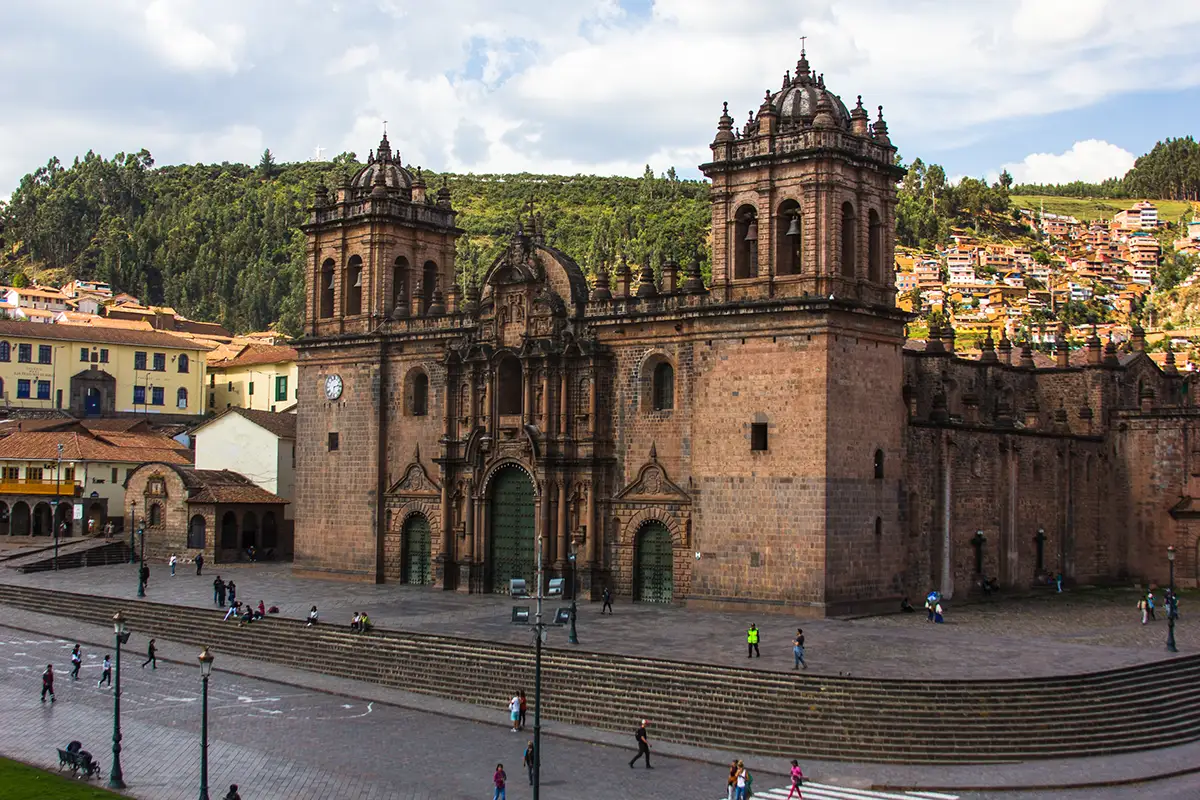
Facade of the Cusco Cathedral in Peru.
San Blas, Cusco's oldest and undeniably most attractive neighborhood, is known for its exceedingly narrow and colorful streets. Each of the houses and businesses lining the streets features painted blue doors and colorful adornments, which gives this bustling neighborhood its bohemian charm.
The neighborhood is home to local artists who sell their work here. You can also find hidden cafes serving a variety of cuisines, including French, Italian, American, and, of course, Andean. Don’t forget to bring your camera, as this is one of the most photogenic places in the city.
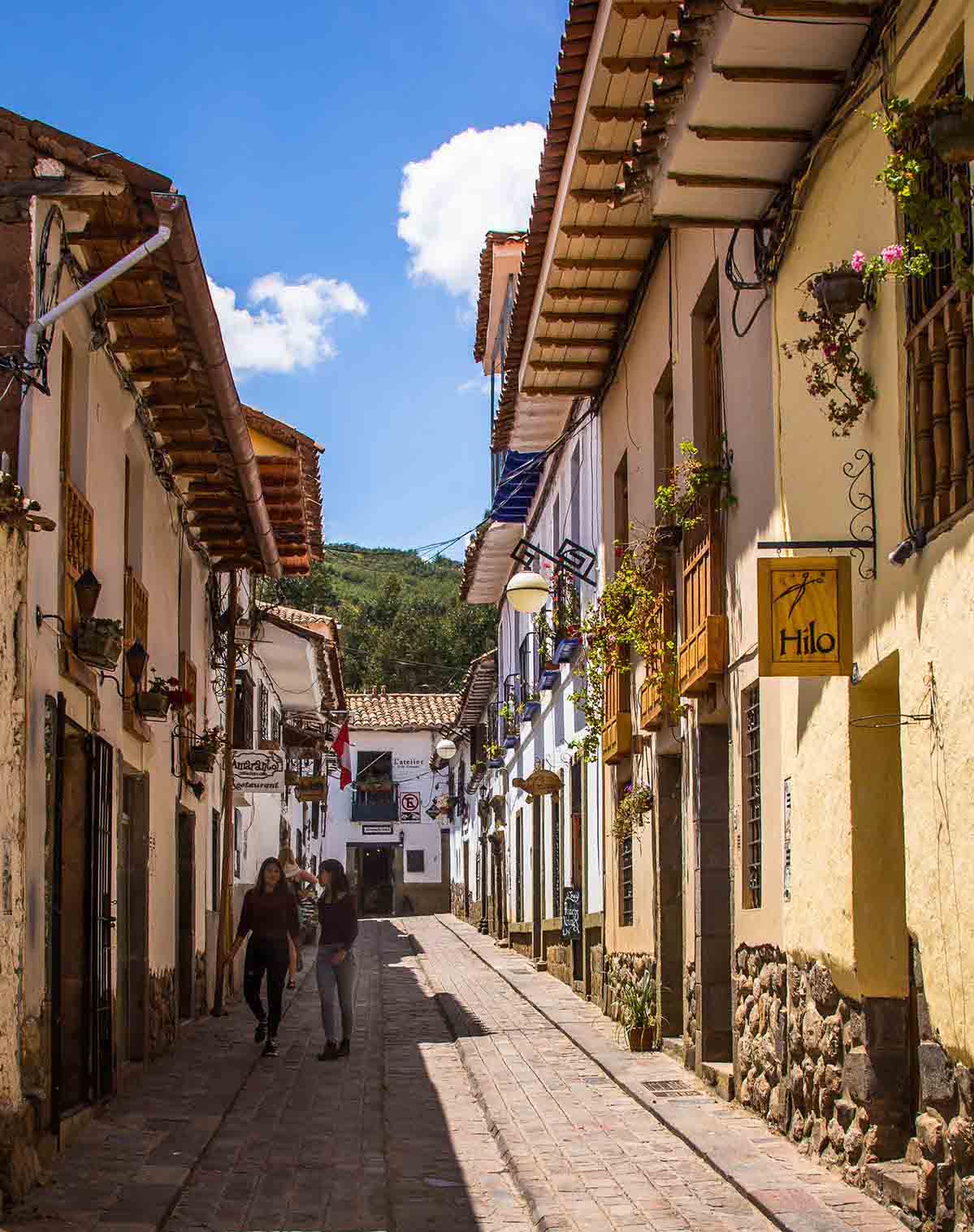
A colorful street in the San Blas neighborhood, Cusco. Photo by Daniella Beccaria
Cusco Tours :

Perched high above the colonial center of Cusco, standing tall at 8 meters, or 26 feet, is Cusco's most famous statue, the Cristo Blanco. It is a statue of Jesus Christ with raised arms, which symbolizes the protection of the city. It is similar to Christ the Redeemer in Rio de Janeiro, but in miniature format.
It was designed by local artist Francisco Olazo Allende and was gifted to the city by the Palestinian Arab community, which sought refuge in Cusco after World War II. Located only a 10-minute walk from the famous Sacsayhuamán archaeological site and offering panoramic views of the city, the Cristo Blanco statue is definitely worth visiting.
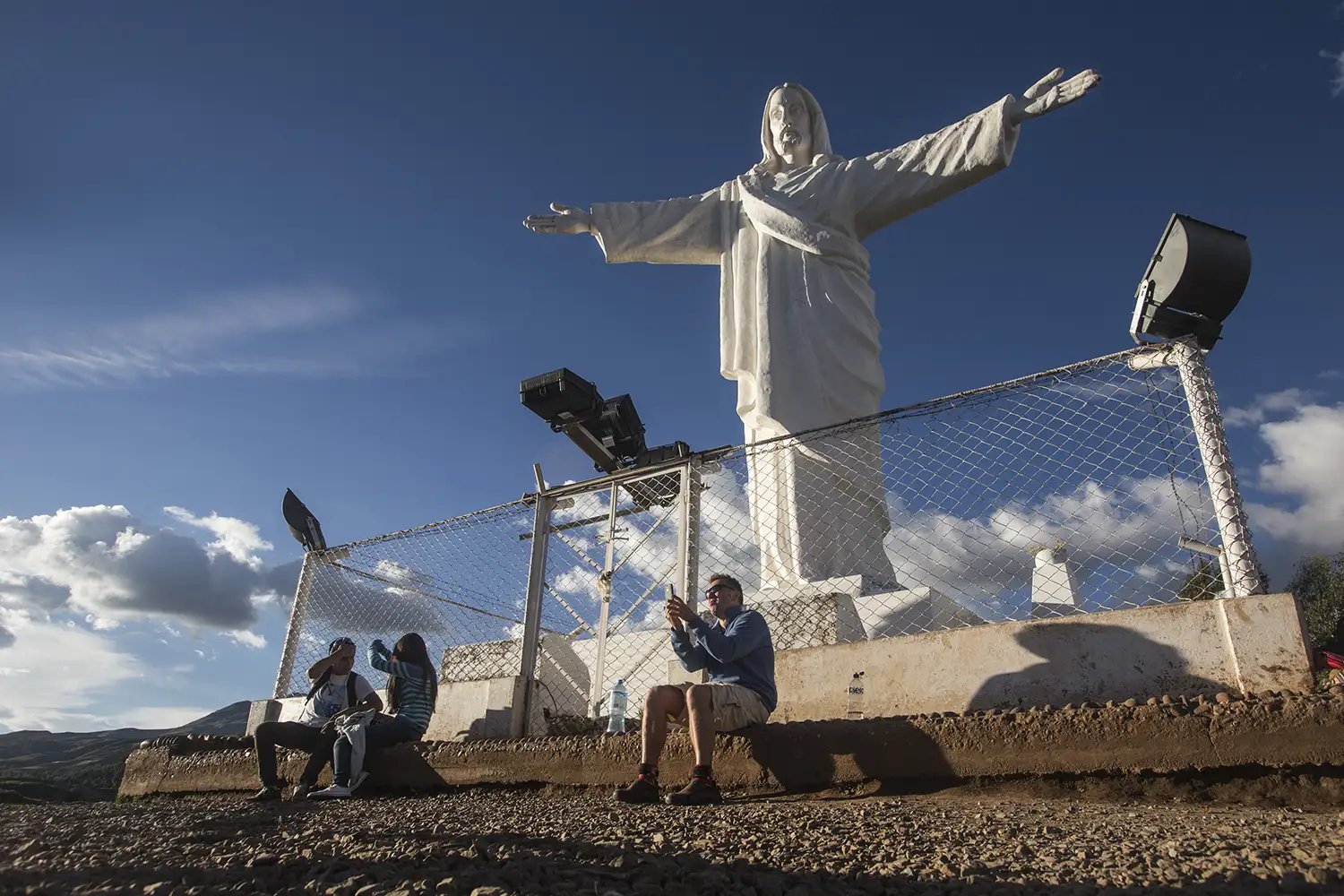
The Cristo Blanco Statue.
Peru is known as one of the top gastronomical destinations in the world, so it comes as no surprise that Cusco is home to a plethora of enticing restaurants and bars. Order fresh trout ceviche made with local fish, mouthwatering Lomo Saltado, try a succulent alpaca steak, or step out of your comfort zone and order one of the local favorites, cuy al horno, or, translated, oven-baked guinea pig. Additionally, more than 3,000 types of potatoes grow in Peru, so be sure to try them fried, baked, and boiled.
Once you've had your fill of some of the world's best cuisine, lounge on the many balconies in the main plaza and enjoy the sights while enjoying a coffee or sipping on Peru’s national drink, the pisco sour. The bars and restaurants in Cusco won't disappoint!
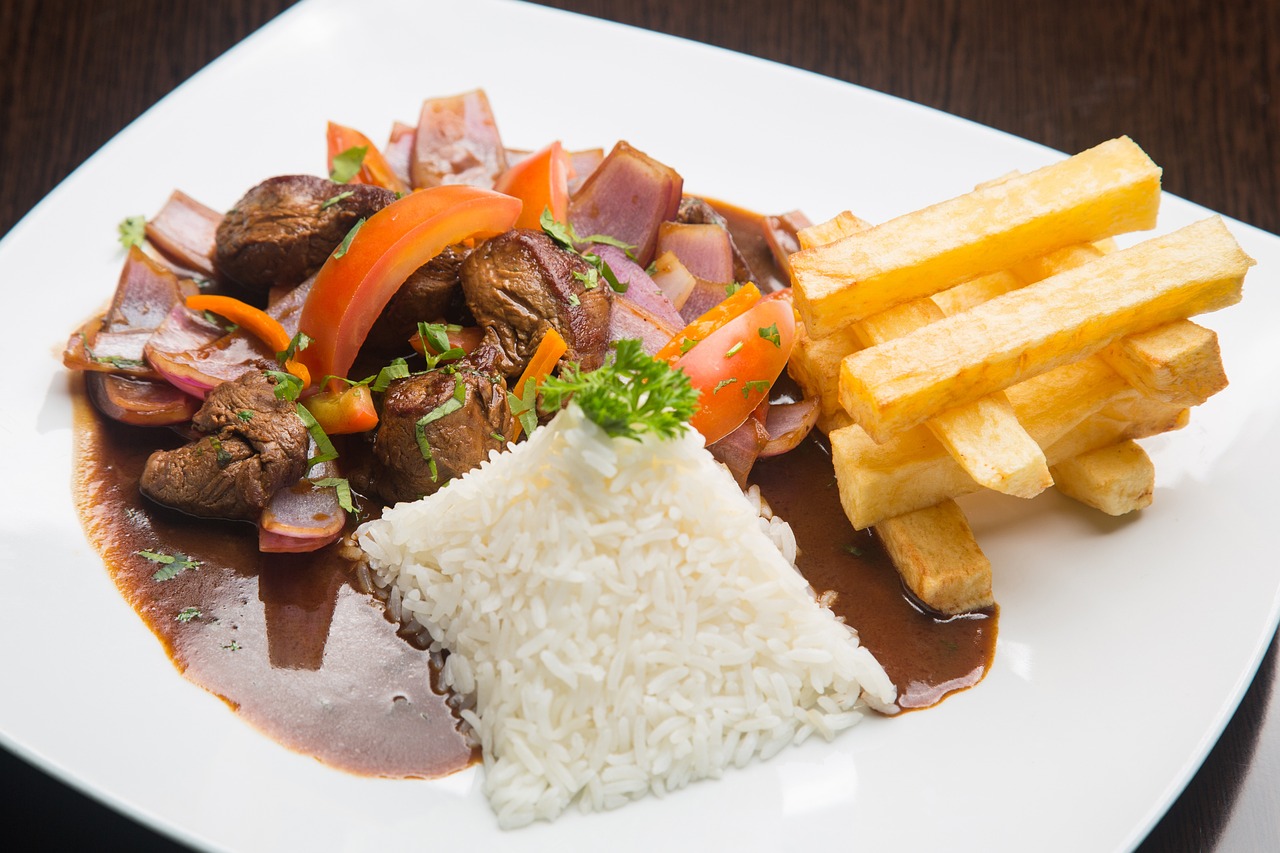
A specialty of Peruvian cuisine, Lomo Saltado. Photo by NANDEY4J on Pixabay.
The local farmer’s markets are undeniably one of the best things to do in Cusco, as they provide you with the opportunity to try new foods and even practice your Spanish a bit. Grocery shopping in the market also provides insight into Peruvian culture and daily life.
Visit any of Cusco’s best markets, book a cooking class to use those delectable ingredients, and try world-famous Peruvian cuisine at home! Below, we will list some of the city's best markets.
San Blas Market
San Pedro Market
Wanchaq Market
Huancaro Market
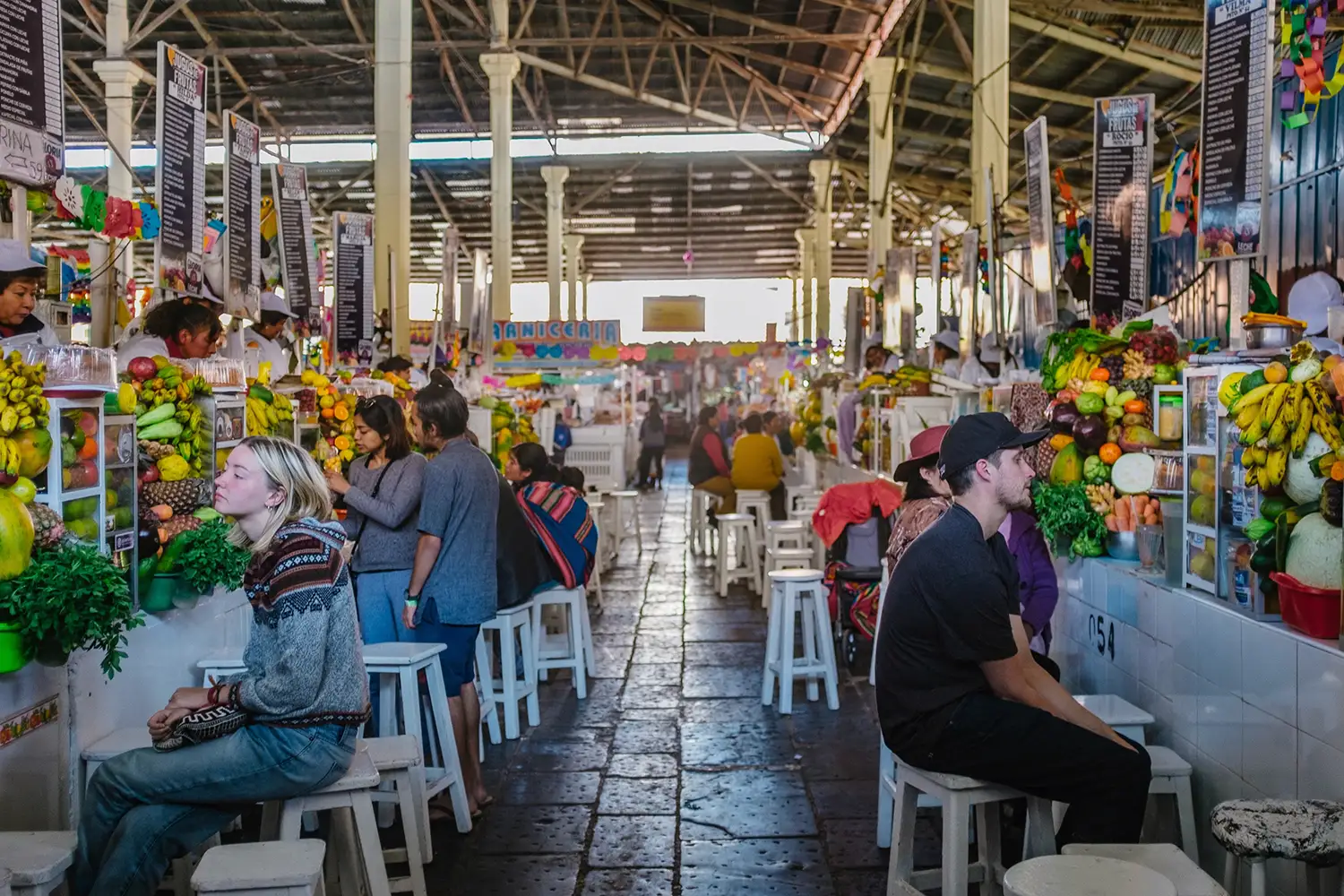
Mercado San Pedro in Cusco. Photo by Ashim D’Silva on Unsplash.
Another exciting addition to your Cusco itinerary is taking in one of the city’s breathtaking vistas. Just a 15-minute walk up from the Cusco plaza de armas, or Cusco main square, you'll find the Mirador de San Cristobal, Plaza Santa de Santa Ana, and the Mirador de San Blas, where you can find sweeping panoramic views of the towering Andes and the city below.
These are the most accessible viewpoints, but if you’re wanting to go even higher, take a picnic up to the Qenqo ruins or visit Sacsayhuamán for even more views. Picturesque views await you, so remember your camera or smartphone!
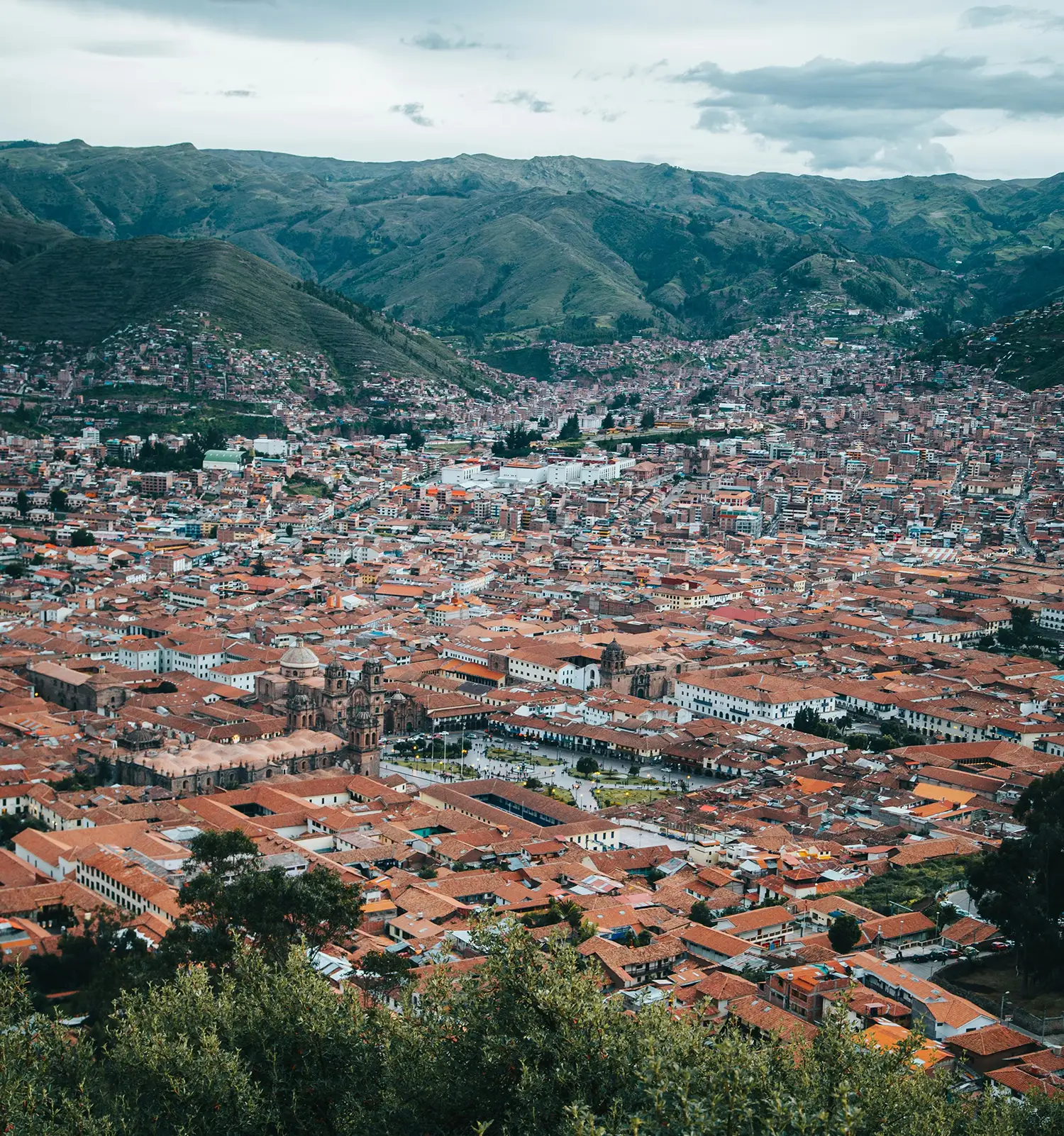
Beautiful view of the city and the Cusco plaza de armas. Photo by anibal porras on Unsplash.
Tambomachay, also known as El Baño del Inca, which translates to the “bath of the Inca,” is one of the many Cusco ruins located near the outskirts of the city. This stunning archaeological site consists of a series of aqueducts, canals, and waterfalls fed by natural springs that run through the terraced rocks.
While its actual purpose remains unknown, it is believed to have been a temple of worship for water and played an important function related to the regeneration of the land. Adding it to your list of things to do in Cusco is a must for history buffs!
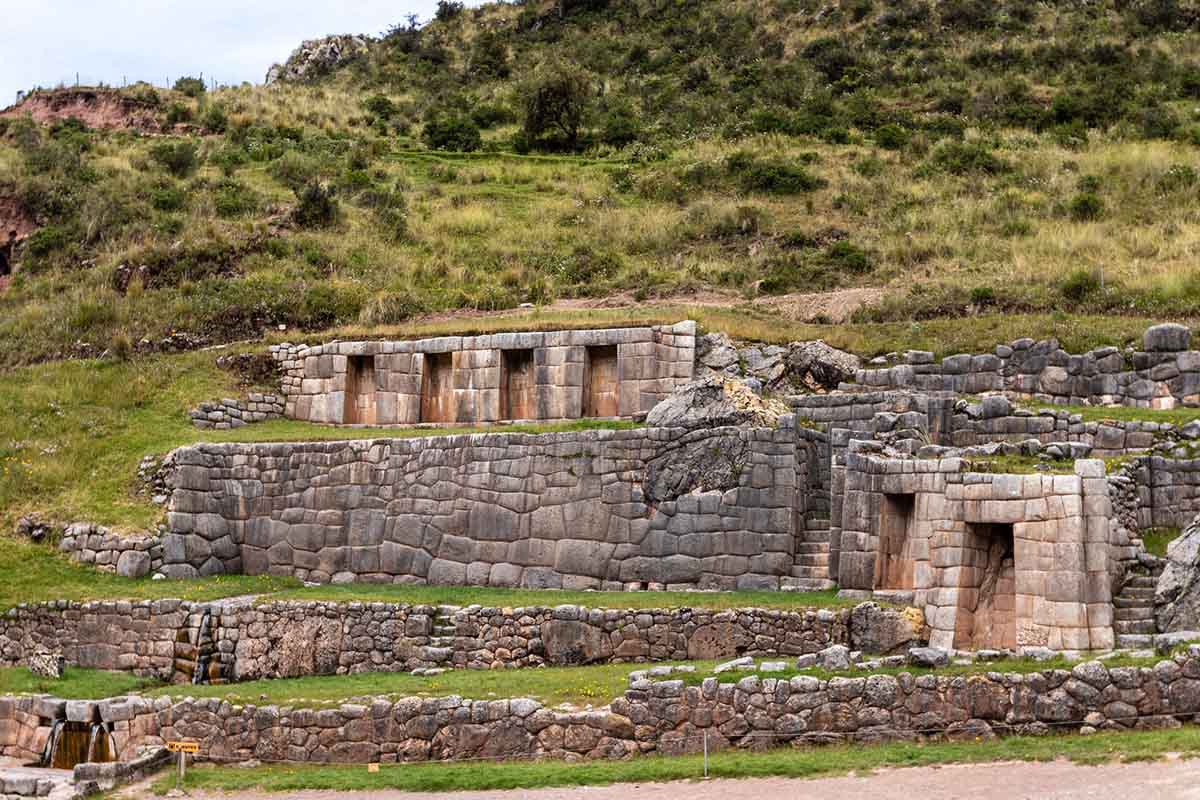
The ruins of Tambomachay, also known as the Bath of the Inca, located just outside of Cusco. Photo by Brian Jeffery Beggerly on Flickr.
After a thrilling day of visiting Machu Picchu or other attractions within or around Cusco, why not experience the vibrant nightlife? Cusco is known throughout Peru for being one of the cities with the best nightlife, and there are countless bars and clubs with a variety of themes to experience.
While it might seem difficult to choose a spot to your liking, the best spot to start is the Cusco main square, as its surroundings are full of bars and clubs where you can enjoy a night of salsa, rock, reggaeton, or the genre of music that you prefer. Whether you are looking to dance the night away or simply enjoy a drink with a lively atmosphere and good music, Cusco's nightlife scene should not be missed!
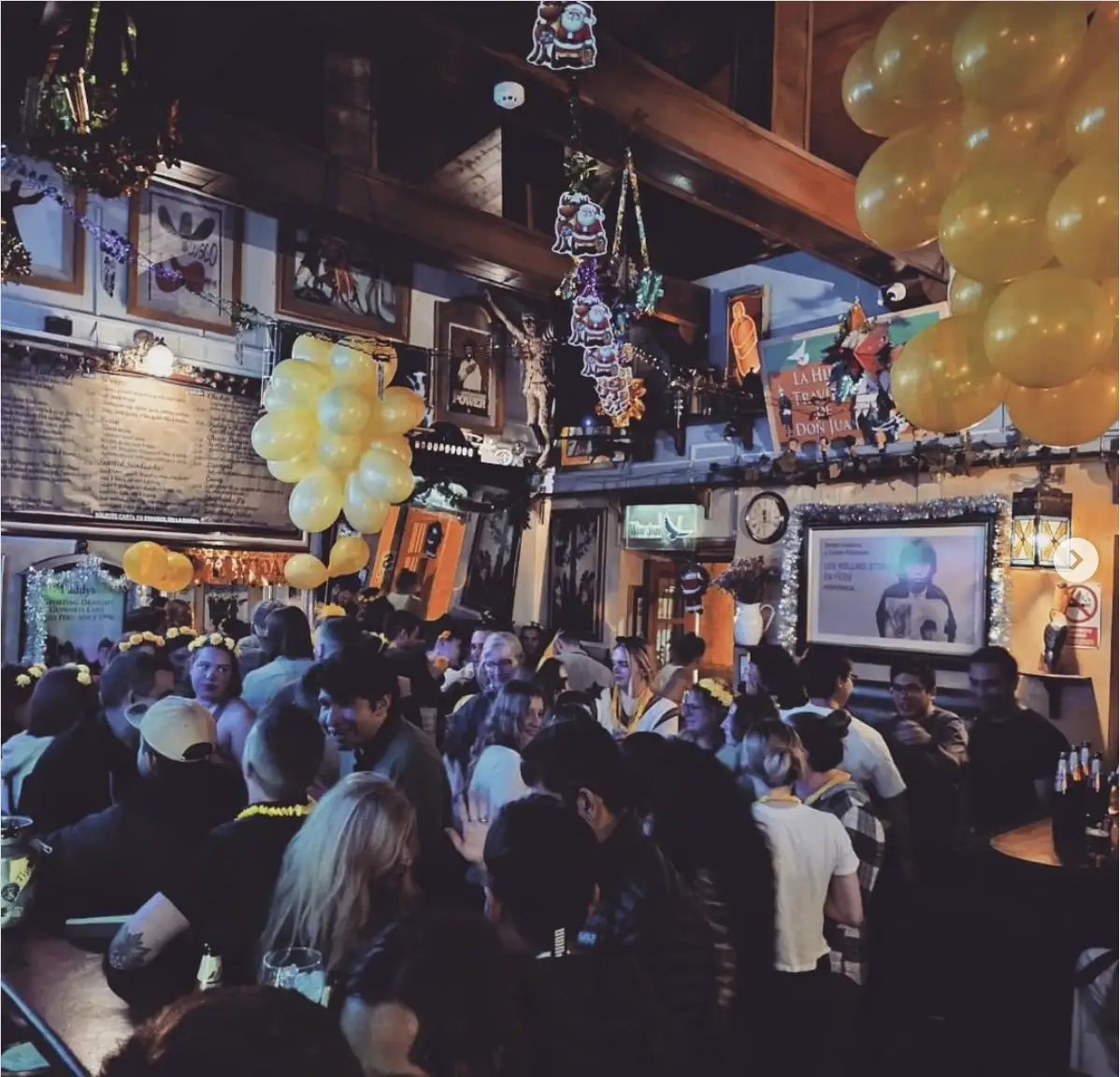
The nightlife scene in Cusco. Photo by Paddy's Irish Pub on Instagram.
Step into the past with a visit to the Cusco Regional History Museum, which is home to ancient Inca relics and restored Spanish paintings. After that, explore the museum beneath the Coricancha, where they have elongated skulls and mummies on display. Finally, check out the Inca Museum, which boasts 3D models of Machu Picchu and other archaeological sites across Peru, a massive collection of Inca artifacts, and an even larger collection of mummies that are nearly perfectly preserved.
Whether you are a history fanatic or are simply looking for something interesting to do in Cusco, all of the Cusco museums are worth a visit if you have time.
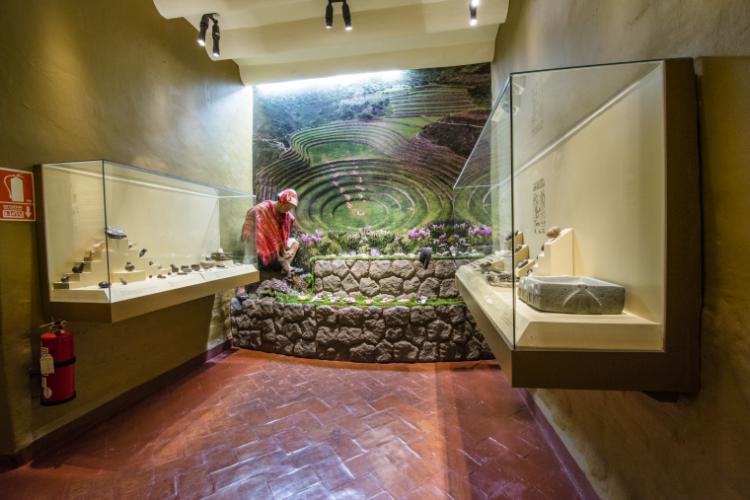
Cusco Regional History Museum. Photo by Cusco Regional History Museum.
Embark on an exhilarating ATV tour through the stunning landscapes of Cusco’s South Valley. You will ride along dirt roads past local farms and grazing animals, appreciating the breathtaking scenery of the Andean landscape speckled with homesteads. You’ll also visit the Tipon archeological site and a traditional town nearby, Oropesa, famous for its delicious bread.
For thrill seekers or those looking for a unique blend of adventure, culture, and natural beauty, this is unquestionably one of the best things to do in Cusco.
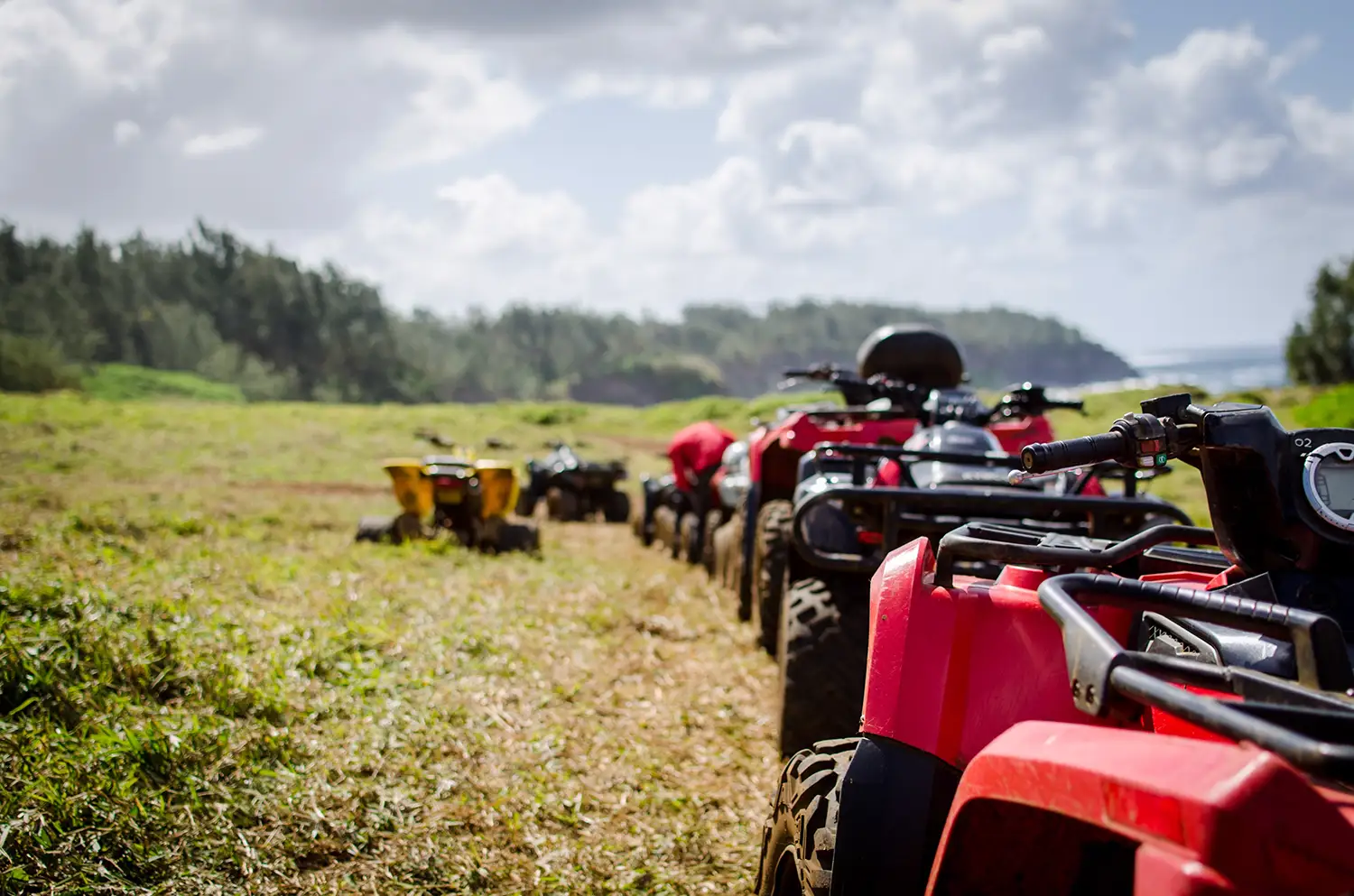
Embark on an exhilarating ATV tour. Photo by Kilyan Sockalingum on Unsplash.
The Huasao wetlands are situated in the southern valley of Cusco. Not many foreign tourists visit these wetlands, but it is an excellent option if you travel on your own through the so-called ‘South Valley of Cusco’. It is most famous for its scenic beauty, where several species of birds live; however, in recent years, incredible wooden sculptures with different figures of animals and fictional characters were created, which attracted visitors, especially those from Cusco.
There are no guided tours, but the wetlands are only 30 minutes from Cusco and can easily be reached by public transport from La Cultura Avenue in the city, making them worth visiting in your free time.
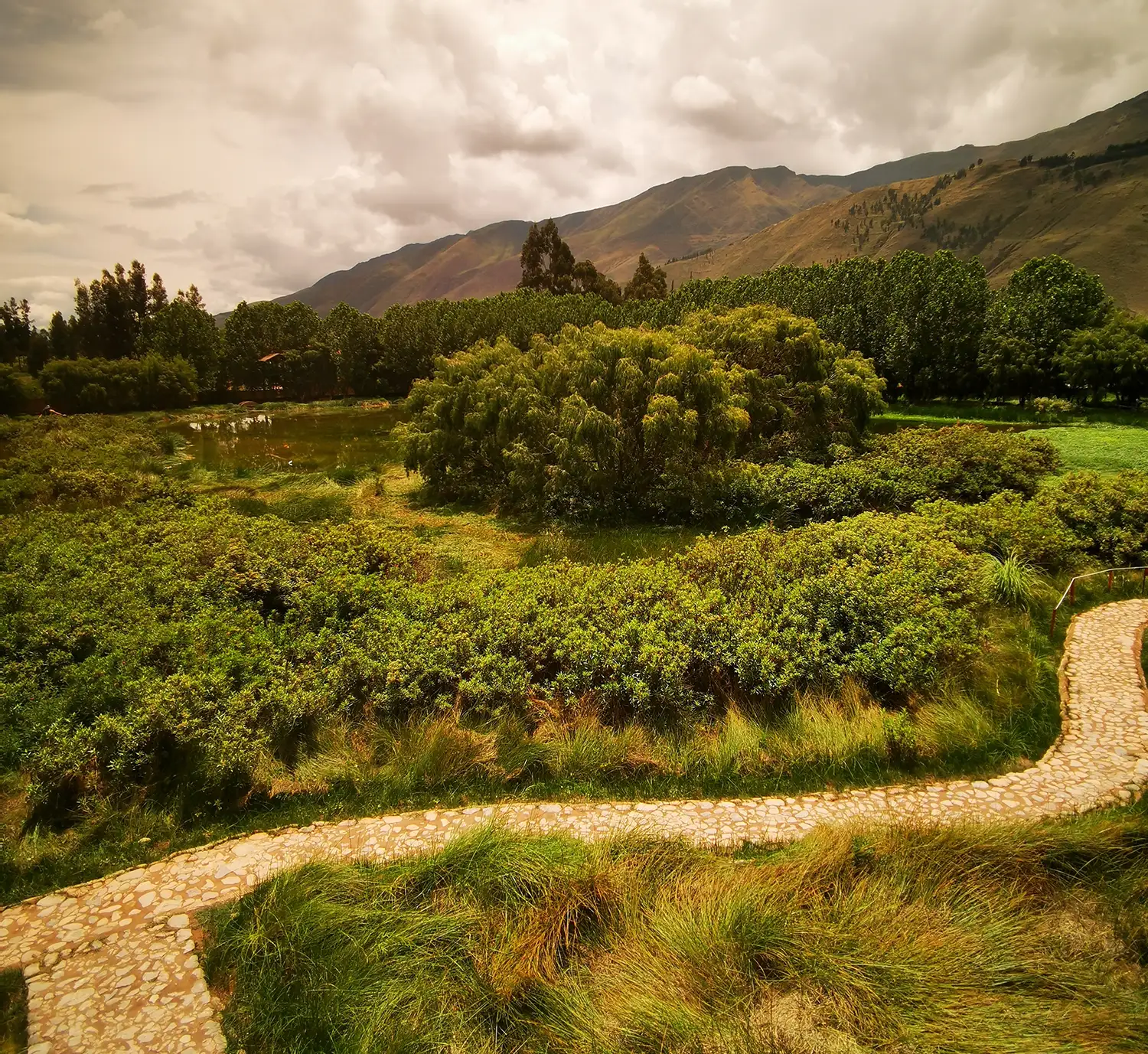
The Huasao wetlands. Photo downloaded from Wikimedia Commons.
You’re likely to see small, cartoon-like ceramic Pucará bull figures with brightly colored patterns in the southern Andes of Peru. They often appear on the roofs of homes (always in pairs) in order to attract happiness, prosperity, protection, and fertility. Each color and design has a different meaning and purpose for the couple living in the house under their care.
Not only is creating your own ceramic Pucará bull one of the best things to do in Cusco, but it's also the perfect opportunity to craft a souvenir for when you head back home.
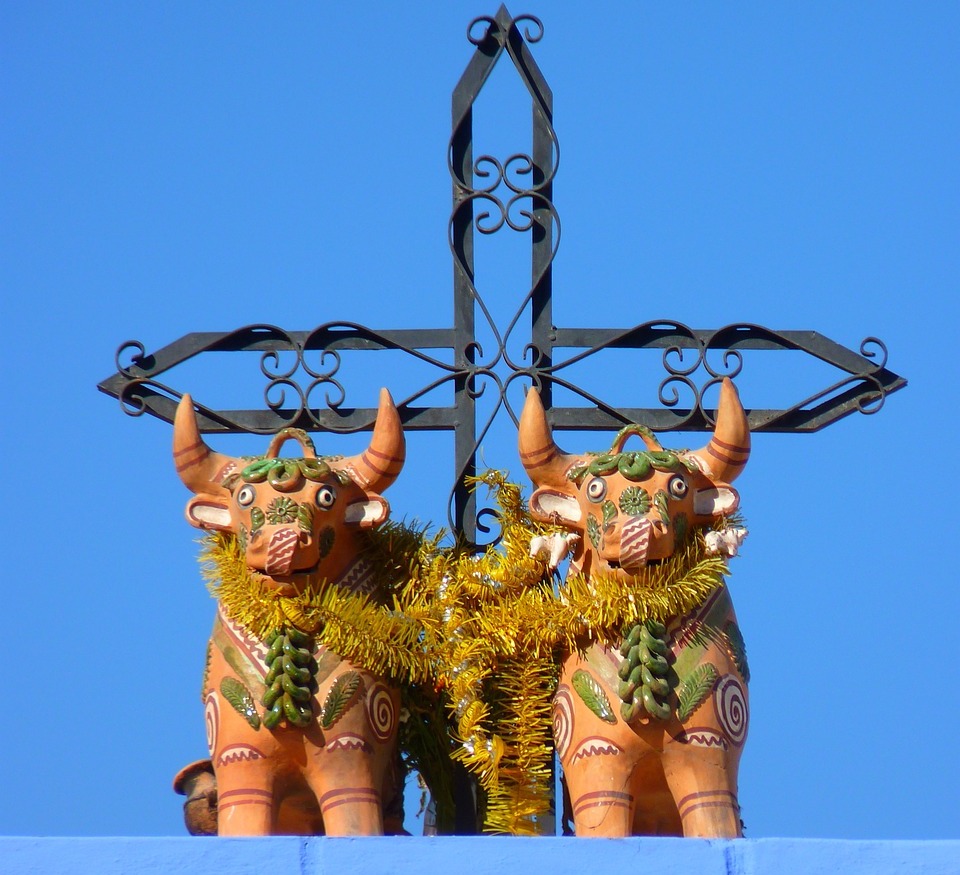
Pucará bull figures. Photo by LoggaWiggler on Pixabay.
Artesanal craftwork reigns king in Cusco, and traditional weavers are among the many talented artists of the Andes. Wools from local animals are washed, spun, and dyed with the natural plant materials before being skillfully intertwined using ages-old patterns for modern man to enjoy.
If you're keen on learning something new, then spending a day learning how to create colorful textiles is unquestionably a cultural experience you should try!
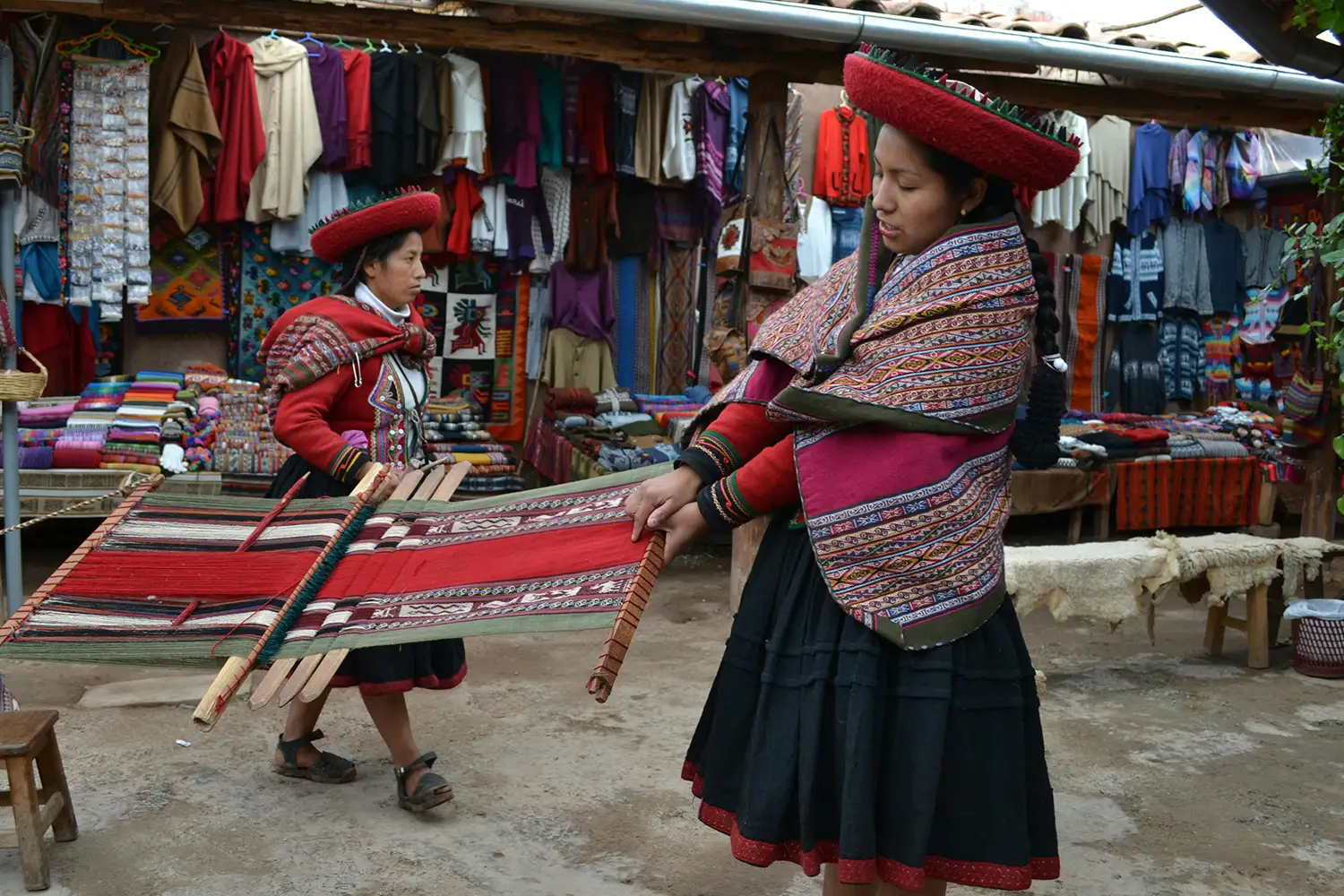
Women weaving. Photo by Pamela Huber on Unsplash.
The stone fortress of Sacsayhuamán was used to protect the Inca capital of Cusco when the Spanish invaded and boasts enormous stones weighing up to 125 tons each. The ruins are one of the Incas' most spectacular structures and can be seen from almost anywhere in Cusco, including the Plaza de Armas.
You can hike from the main plaza by taking the most direct route up Pumacurco, but if you’d rather save your legs the extra 30 minutes, you can go by bus or taxi for just a few soles.
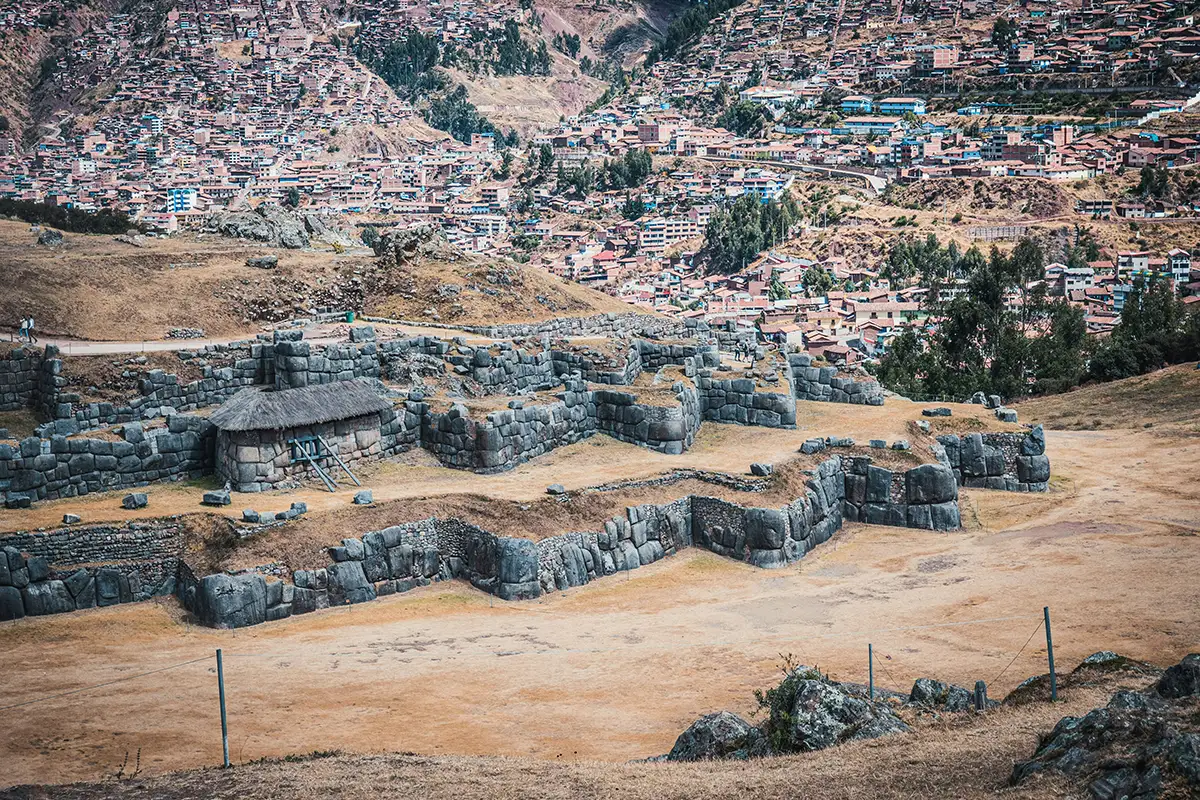
Impressive formation of polygonal, cyclopean walls of Sacsayhuamán. Photo by Ruben Hanssen.
Humantay Lake, or Laguna Humantay, sparkles in the Andes mountain range like an emerald jewel. It's brilliant green and blue water makes it one of the most well-known lakes in Peru, as well as one of the top day trips from Cusco. The trailhead is only a 3-hour drive from Cusco, from where the hike to the lake and its breath-taking scenery will start. After an adventure-filled day, the return to Cusco and some well-deserved rest await.
No photograph can do this mystical gem justice, so paying a visit to Humantay Lake on your trip to Cusco is simply an opportunity that you should not pass on!
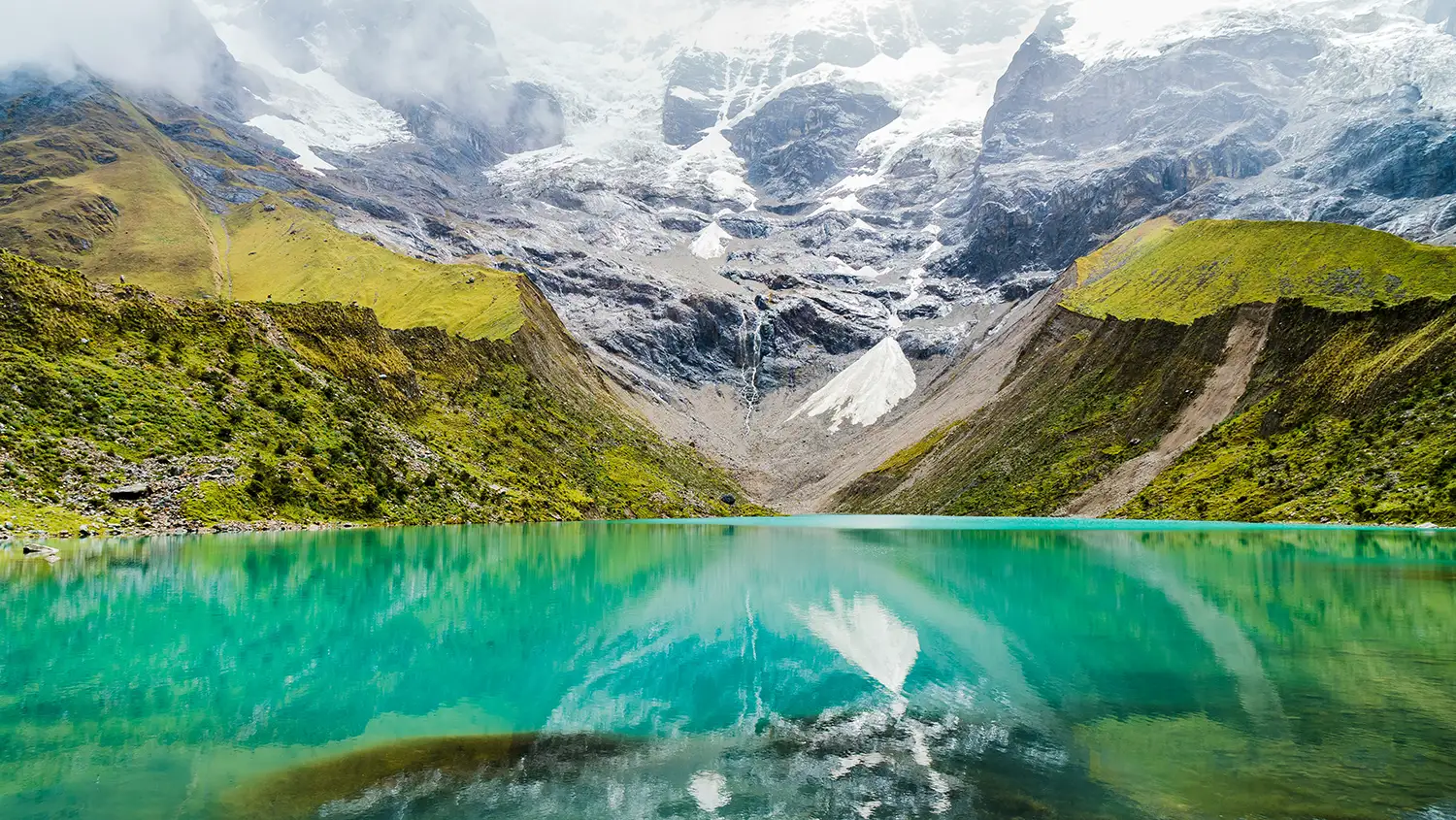
The mystical Humantay Lake. Photo by Willian Justen de Vasconcellos on Unsplash.
Located a mere five blocks from the city's main square, Siete Borreguitos Street is a window into the soul of Cusco and is evidently one of the prettiest streets in the city. Rich with culture, locals and tourists stroll its length daily, admiring its beauty. Traditional music, local delicacies and cuisines, artists showcasing their crafts, white walls, hanging flower pots, and well-lacquered balconies and gates call Siete Borreguitos Street home.
Journey through time on a pathway that tells tales of centuries gone by. It's not simply a street, but more of a sensory experience that is not to be missed on your adventure in the vibrant city of Cusco.
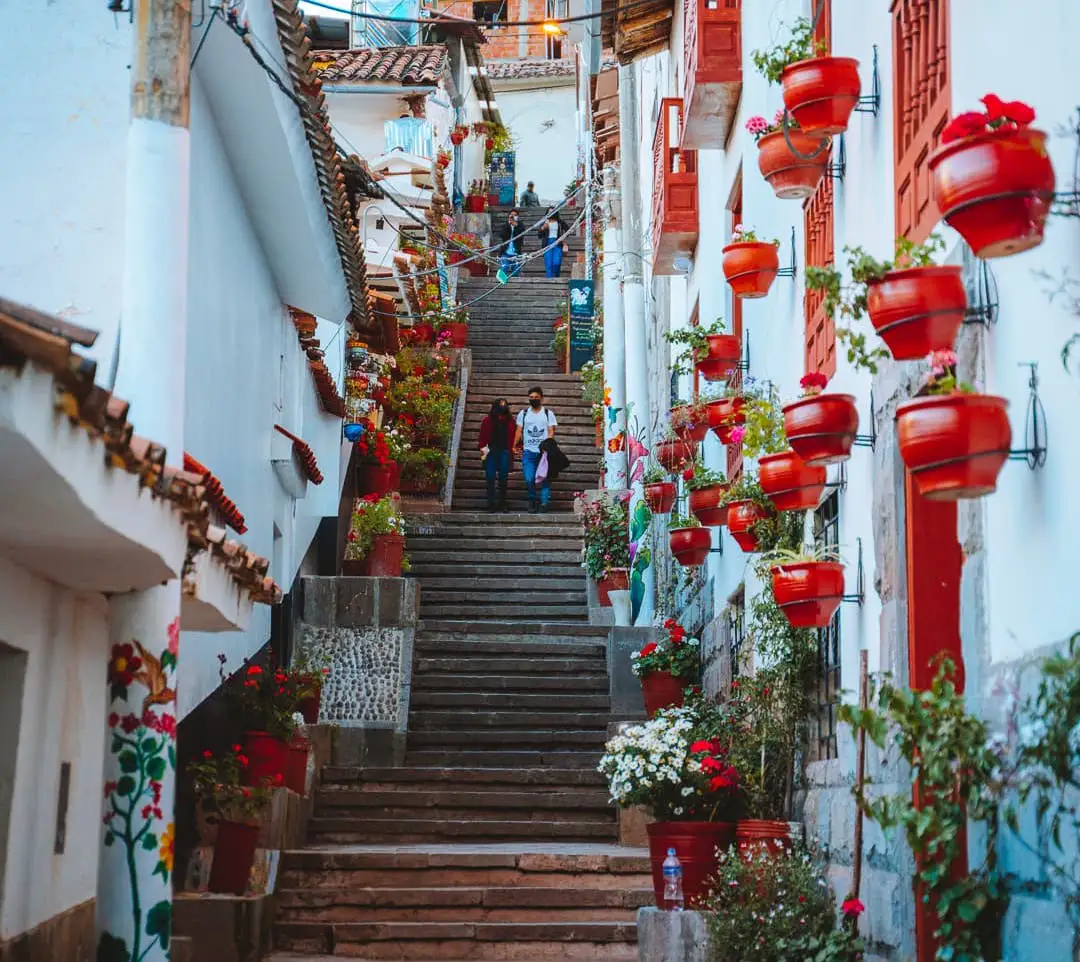
Siete Borreguitos Street in Cusco. Photo by hungariandreamers.com
Nestled in the charming San Blas neighborhood, constructed over the Saphi River and featuring three levels of arches that resemble a bridge, is the Sapantiana Aqueduct. This beautiful man-made stone-stair waterfall was built by the Jesuit Order during the seventeenth and eighteenth centuries, but was only rediscovered in mid-2020!
Since its rediscovery, it has been visited more and more by locals and tourists alike, and not only is this one of the best things to do in Cusco, but it is also one of the most Instagrammable spots in the city!
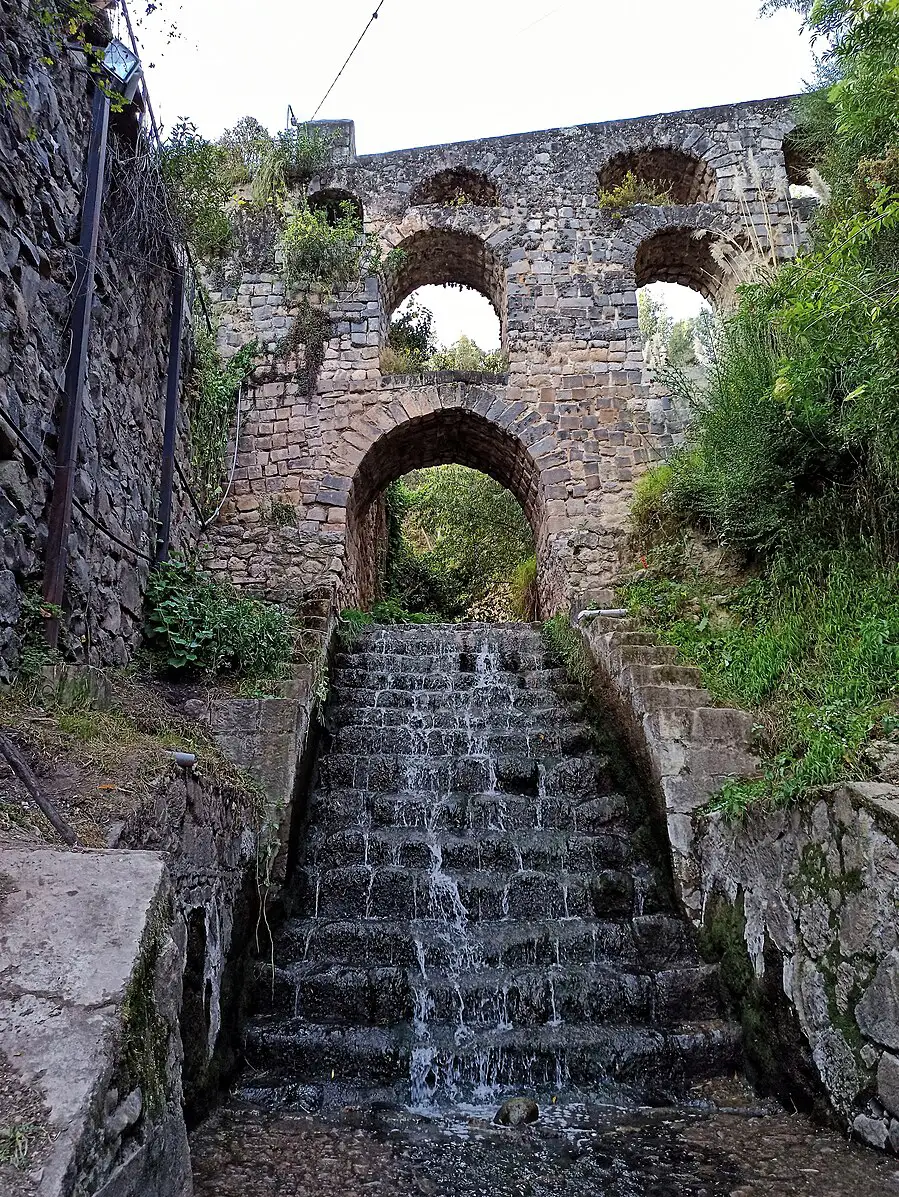
The Sapantiana Aqueduct in Cusco. Photo by José Manuel Pacuri Sullón on Wikipedia , cropped from the original size, under the Creative Commons Attribution-Share Alike 4.0 International
Founded in 1924, the Qosqo Center of Native Art's main purpose is the conservation and compilation of folk music and dances from Cusco and Peru. Its repertoire currently includes 50 dances, a hundred melodies from Cusco, and a large collection of traditional costumes and musical instruments. Additionally, its cast is made up of 70 artists.
The center presents daily folk music and dance shows from various provinces, districts, and communities of Cusco, as well as a museum displaying typical costumes and musical instruments. It is included in the Cusco tourist ticket and is the only place where you can appreciate music and dance from Cusco on a daily basis, which is why it has a large number of visitors, both nationals and foreigners. If you appreciate cultural activities, this is definitely an experience not to miss!
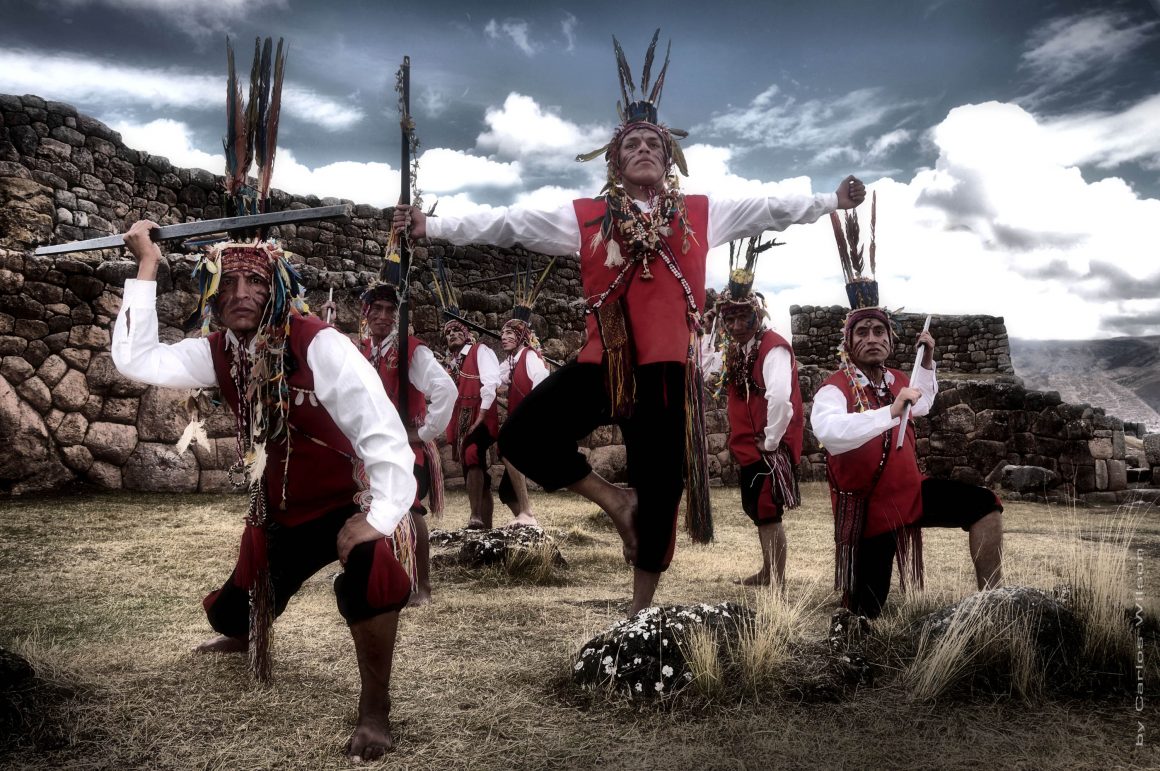
The Q’ara Ch’unchu dance. Photo by Carlos Wilson for the Qosqo Center of Native Art.
For those who need a break from the city, taking a day trip to one of the top attractions in Peru is an excellent choice for a mini-adventure. Both Rainbow Mountain (17,000 ft elevation) and Humantay Lake (13,800 ft elevation) are full-day trips that require an early start but are worth the effort. If you’re worried about the elevation, you can skip the short hike and ride a mule to the top.
For shorter excursions, try out a more relaxing Cusco day trip to the Sacred Valley, where you can visit small towns like Ollantaytambo, Urubamba, or Pisac. The Sacred Valley is only 40 minutes from the city and has sweeping views of the Andes mountains and the winding Urubamba River. Cusco's surroundings truly are an adventurer's paradise!
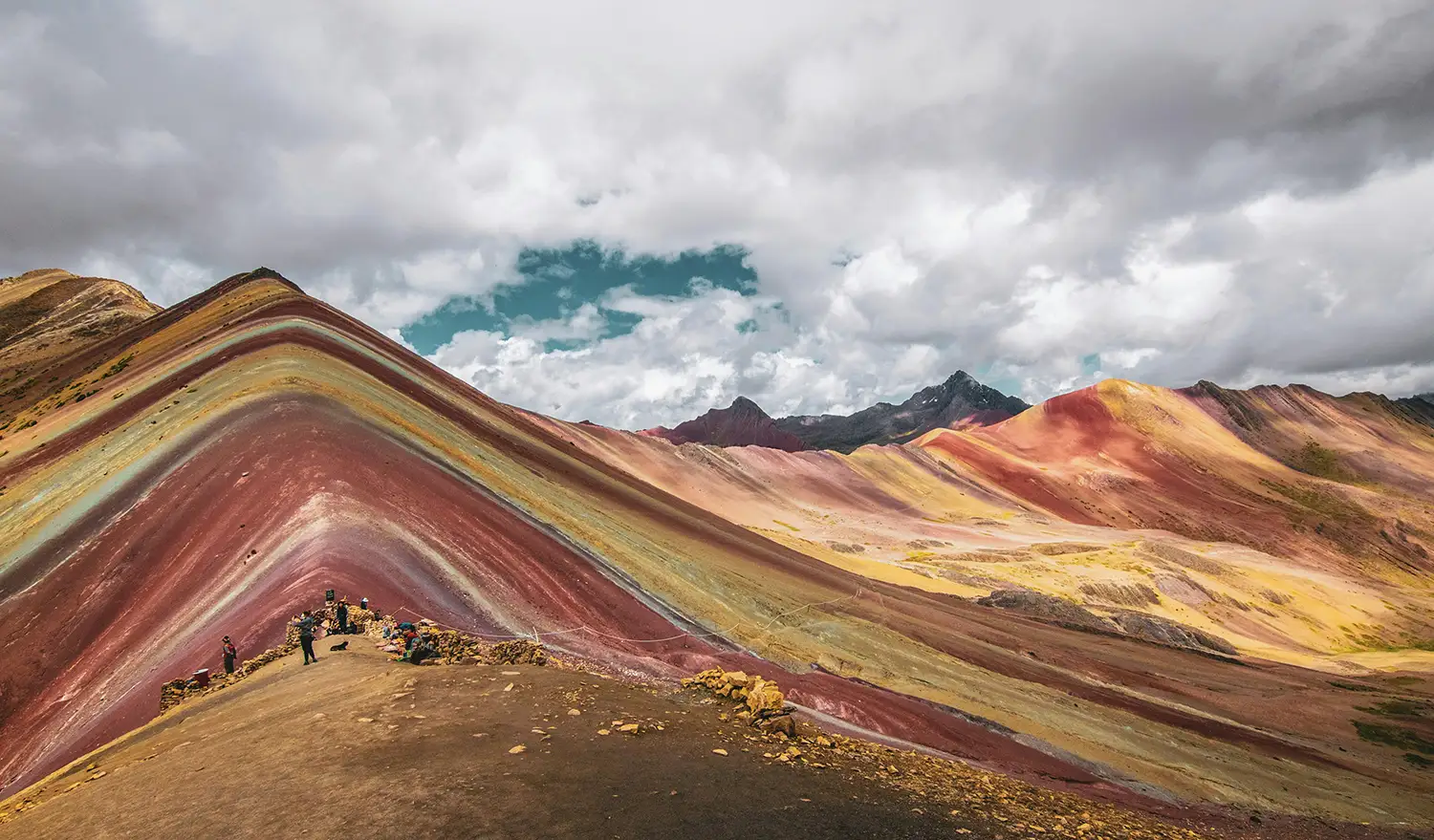
The mystical Rainbow Mountain. Photo by McKayla Crump on Unsplash.
RELATED TOURS :

Of course, no list is complete without adding one of the best things to do in Peru, which is to visit World Wonder Machu Picchu, or more specifically, hike the inca trail to Machu Picchu. Though located outside of Cusco, the journey to Machu Picchu starts in Cusco, and the best part is that you can hike there on the iconic Inca Trail, with options for a two-day or four-day trek through the Andes.
Whether you choose the two-day or four-day trek, both options bring you to the ancient citadel of Machu Picchu, which will in all probability be one of the best, if not the best, travel experience you have ever had!
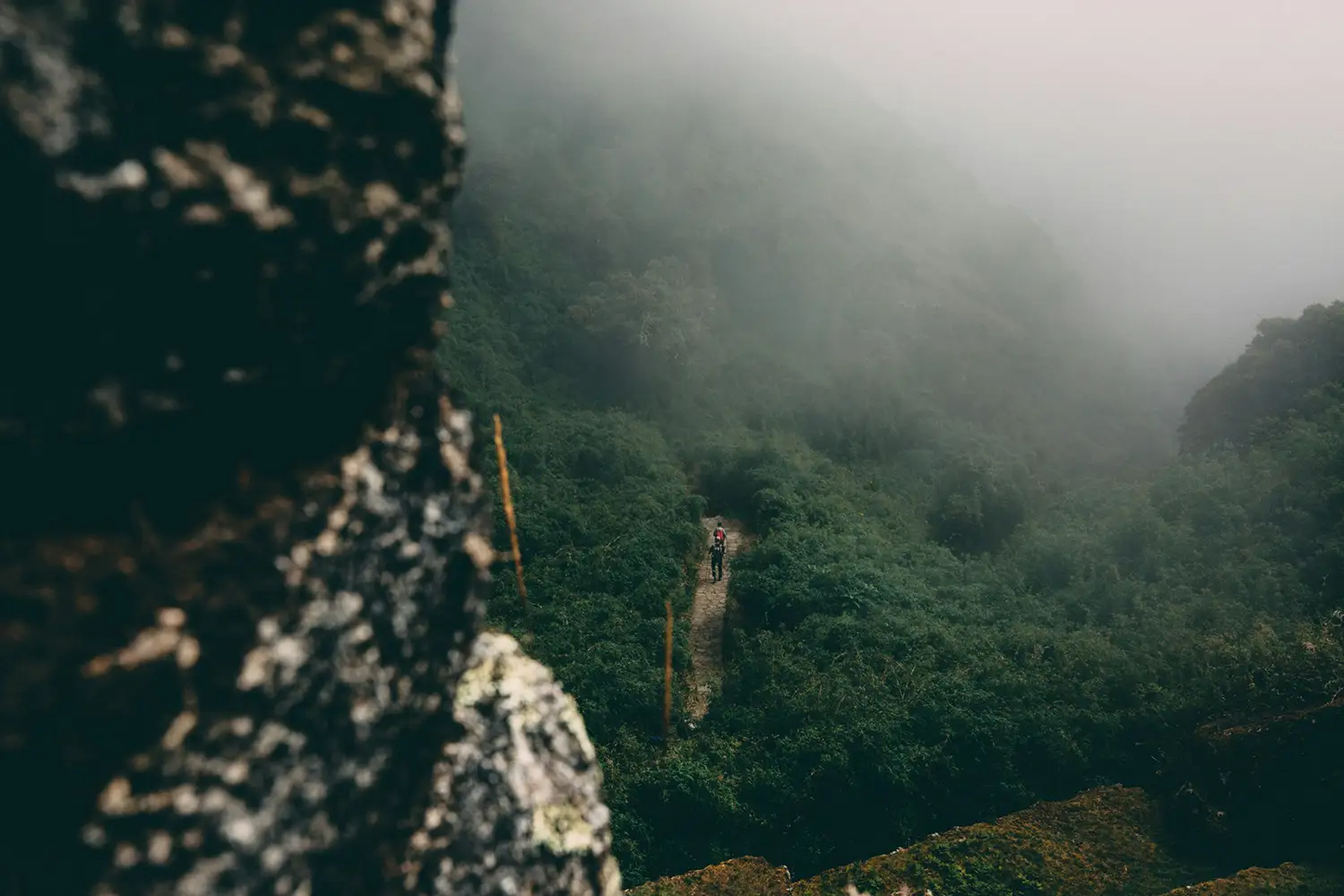
The Inca Trail to Machu Picchu. Photo by KAL VISUALS on Unsplash.
Your Cusco adventure awaits!
We don't believe anybody’s Peruvian adventure is complete without a visit to Cusco , and our list of the top 20 things to do in the former Inca capital highlights why this city is a must-see in Peru. If you're ready to experience this iconic gem, book your visit today and customize your trip of a lifetime with one of our travel experts.

Start Planning!
Explore all our best-selling packages
See All Packages

Book With Confidence
We're flexible! Postpone your tour with zero cost up to 10 days prior to departure.
Email: [email protected]
Sign up to receive our newsletter for great articles, stunning photos, and special deals.
1-817-230-4971
Sales & travel support
Are you sure you want to close the session?
La cuenta ya se encuentra activa
Or enter your e-mail:
Recover your offer
We will send you a 4-digit code shortly
Enter the 4-digit code and your new password
Enter your search here
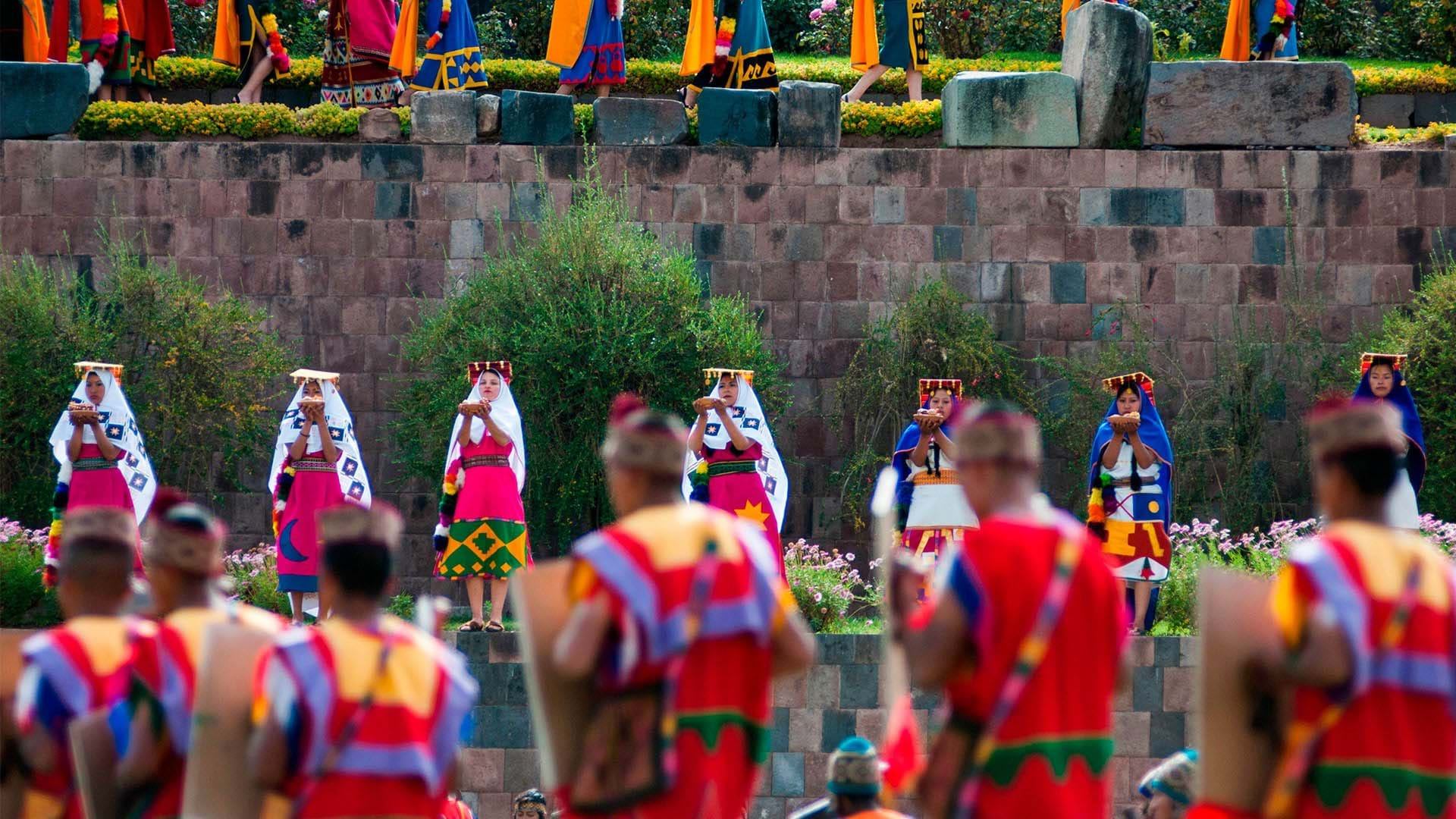
Living empire
Festival of Inti Raymi, Temple of Qorikancha Credit: Heinz Plenge Pardo / PromPerú
- Destinations
In Cusco, every corner is filled with history, as the ancient capital of Peru (during the Inca Empire) still preserves remnants of the most important power of this ancient civilization.
The ancient history can be felt in every step you take through the streets of its towns, which seem to have stopped in time. Its cities are riddled with so much mysticism that you will not want to leave. And if you have to depart, there will always be a burning desire inside you to return as soon as possible.
The first step is to arrive in Cusco. The easiest way? By flight. Due to the high demand from tourists, it was impossible not to have an international airport in Cusco, although most flights have to pass through Lima before reaching the imperial city. It takes approximately one hour and 15 minutes from the Peruvian capital to reach the chosen destination.
Ver esta publicación en Instagram Una publicación compartida por peru (@peru)
Once you are in Cusco, all you need to do is organize your time in the best way possible to explore as many attractions and experiences as you can imagine. Do you like mountaineering? A trip to Ausangate, also known as the sacred mountain, will satisfy your need to release that accumulated energy. Are you a nature lover? Do not miss a visit to the Sacred Valley, which features towns that seem to have come out of the most creative fables you can imagine. Do you melt for animals? Yes, there is also room for wildlife enthusiasts: Awanakancha, the only interpretation center of South American camelids, is located in Cusco.
The Cusco jewel
However, this journey will not be complete if you do not embrace the Inka spirit. Yes, we are talking about a visit to one of the New 7 Wonders of the World, the great jewel of Cusco and Peru: the imposing, revered, and ostentatious Historic Sanctuary of Machupicchu , the final and starting point for every tourist visiting Cusco. This cultural and natural heritage of humanity was one of the most important religious, cultural, and political centers of the Inca Empire, and those who visit it agree that it exudes a unique energy.
Trekking enthusiasts must visit Huayna Picchu , Sacsayhuaman, Vinicunca, Urubamba, Choquequirao , Humantay Lagoon, Ollantaytambo, and the Inca Trail. The options for tourism in Cusco are endless. Even within the city itself, there are countless activities and attractions to discover, you can start getting to know a bit of Cusco's history with a walk through its Historic Center or the Andean Baroque route, where you can admire buildings with the ancient colonial touch.
Museums are a favorite space for visitors, and one that you must not miss is the Temple of the Sun (Qorikancha). Besides, be amazed by the Twelve-Angled Stone or marvel at the art of the artisans in the San Blas neighborhood. A visit to the colorful San Pedro Market can give you an insight into the idiosyncrasy of the people of Cusco.
So, if you are an adventurer, do not hesitate: Cusco awaits you with open arms. In addition, even if you do not have that wild spirit, Cusco is still for you: the city offers hotels and restaurants with the highest quality standards, catering to the requirements of the most demanding travelers. Make your decision now, Cusco is ready to welcome you.

How to get to Cusco?
Lima - Cusco
By air: 1 h 15 min approximately
Overland: 26 h approximately
Main Attractions
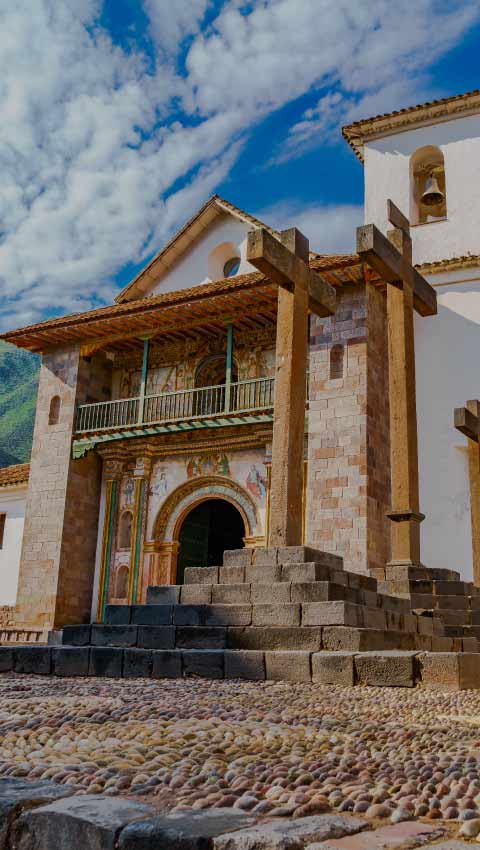
Andahuaylillas
Home to “The Sistine Chapel of the Americas”
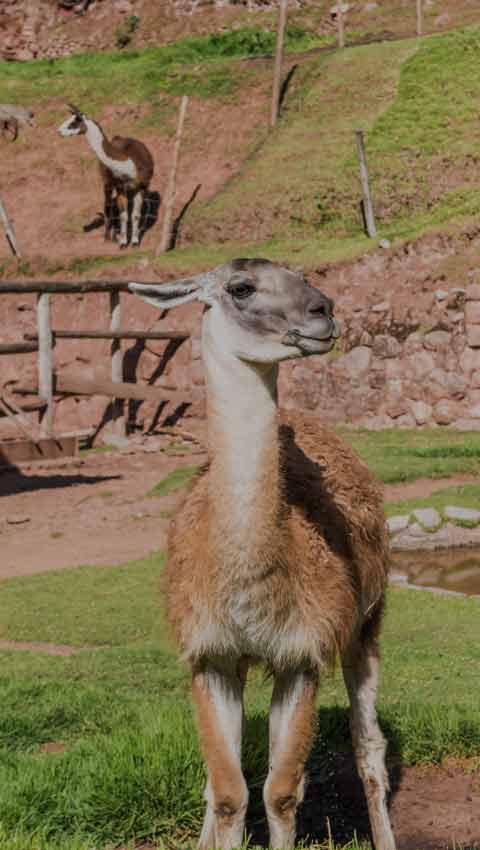
Awanacancha
The only South American camelid theme park
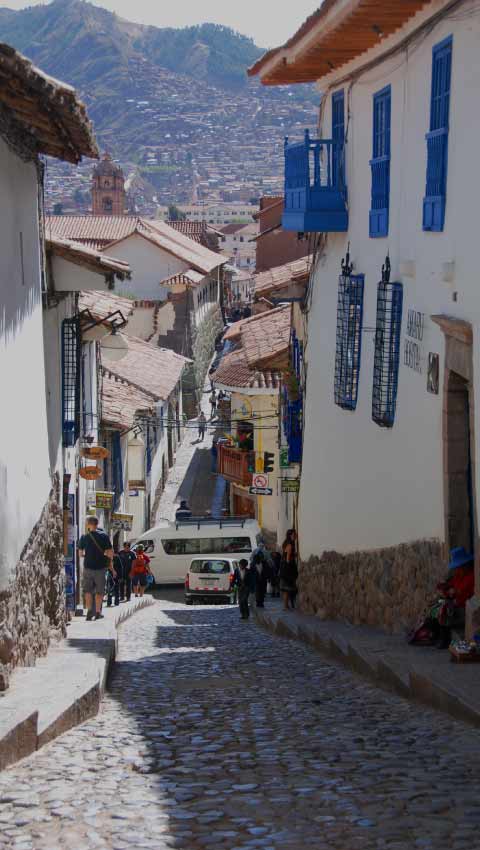
San Blas neighborhood
Craftspeople from a different time
Experiences in Cusco
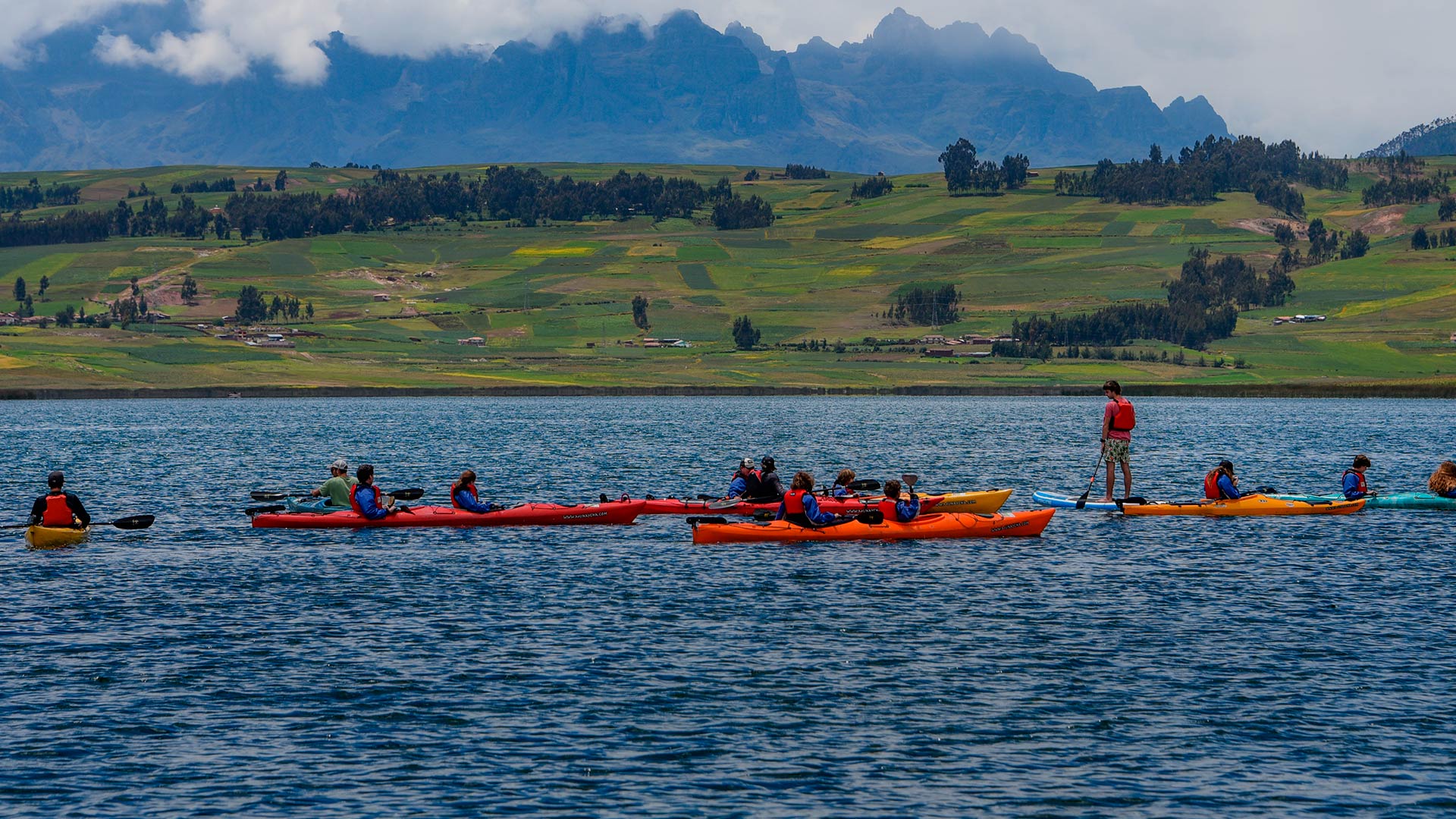
Sporting activities in Cusco
Exercise in ancestral lands
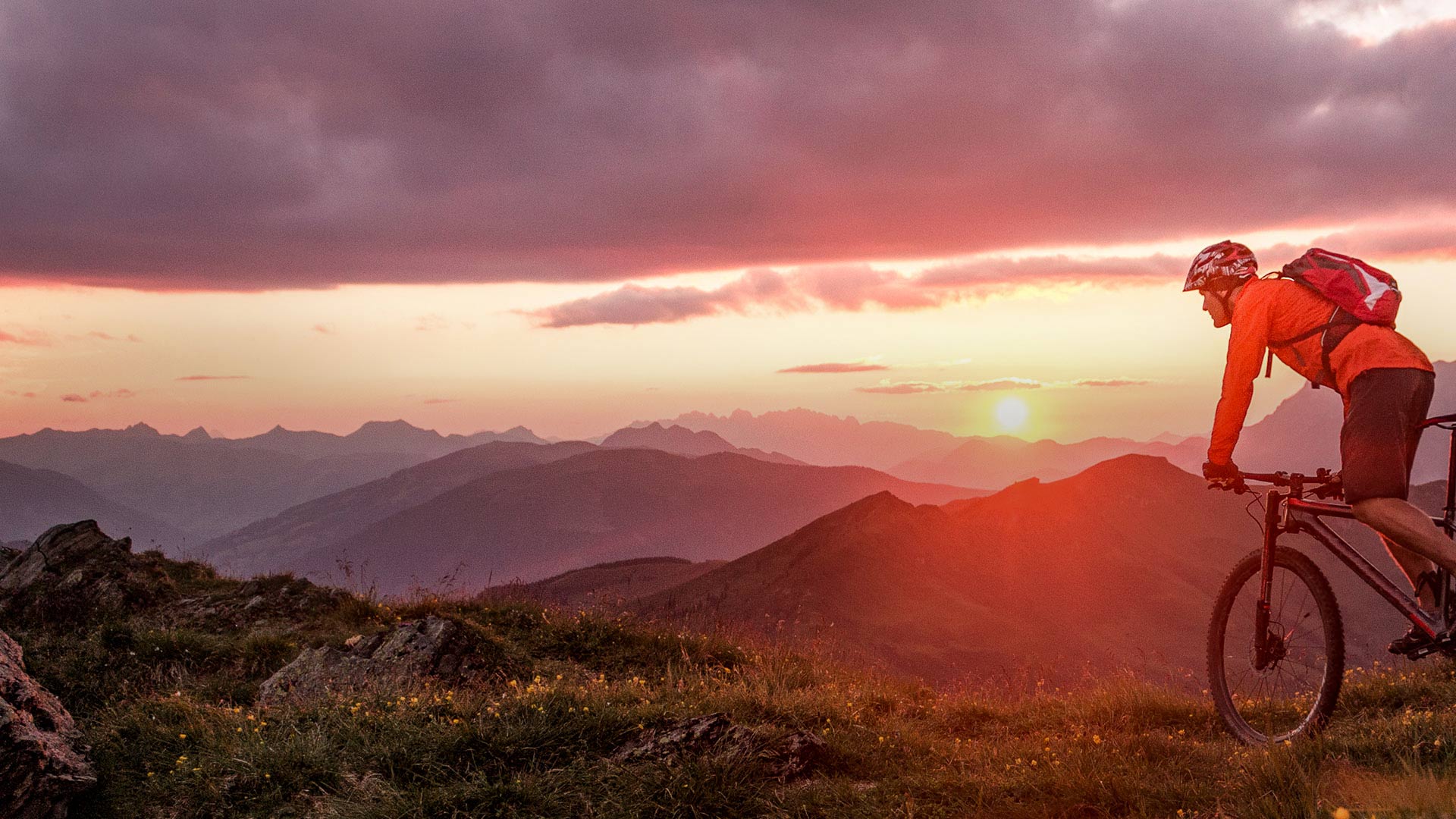
Mountain biking in Maras and Moray
Following the path of adventure
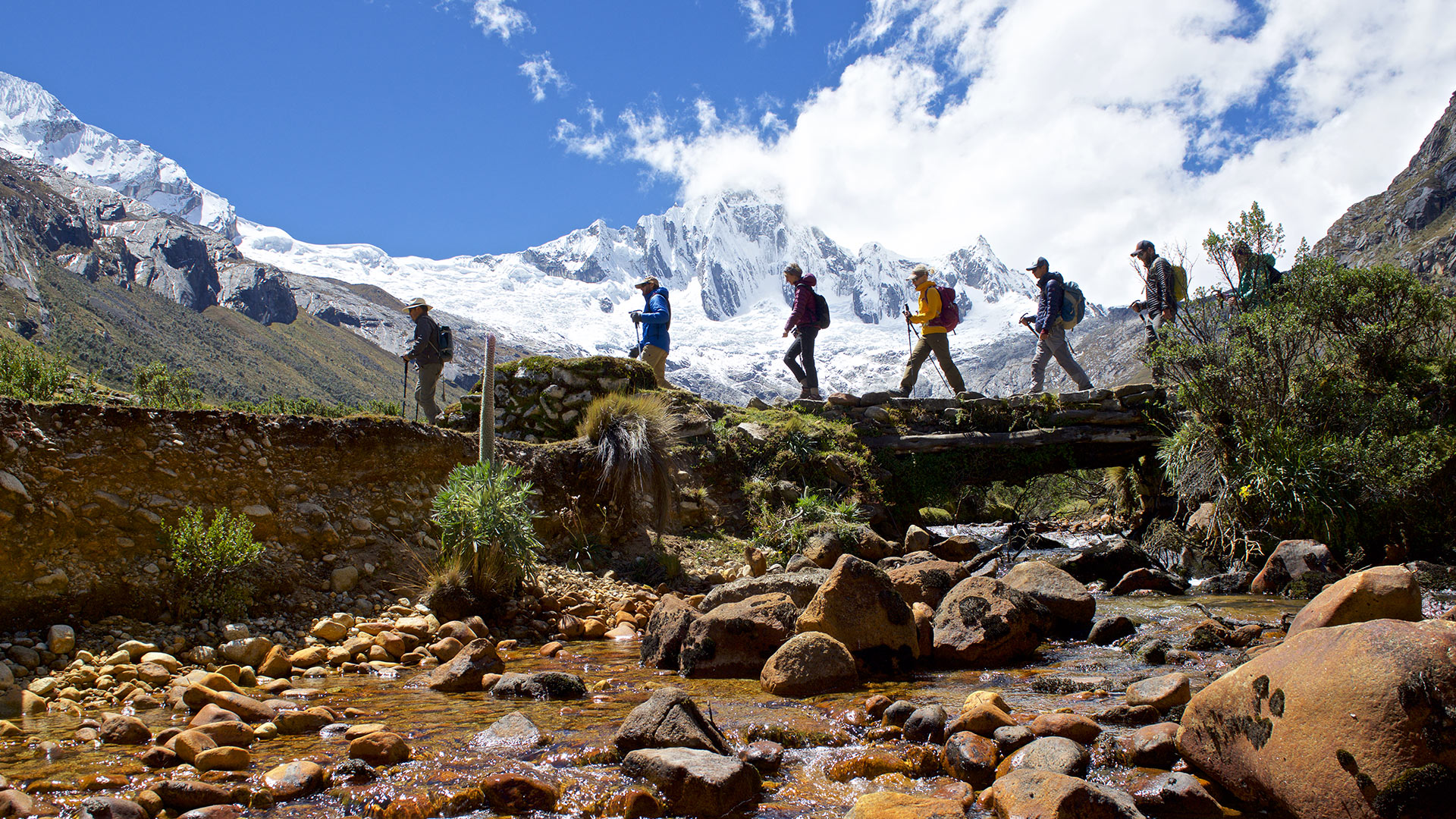
Trekking routes tour
Exploring Peru’s trails
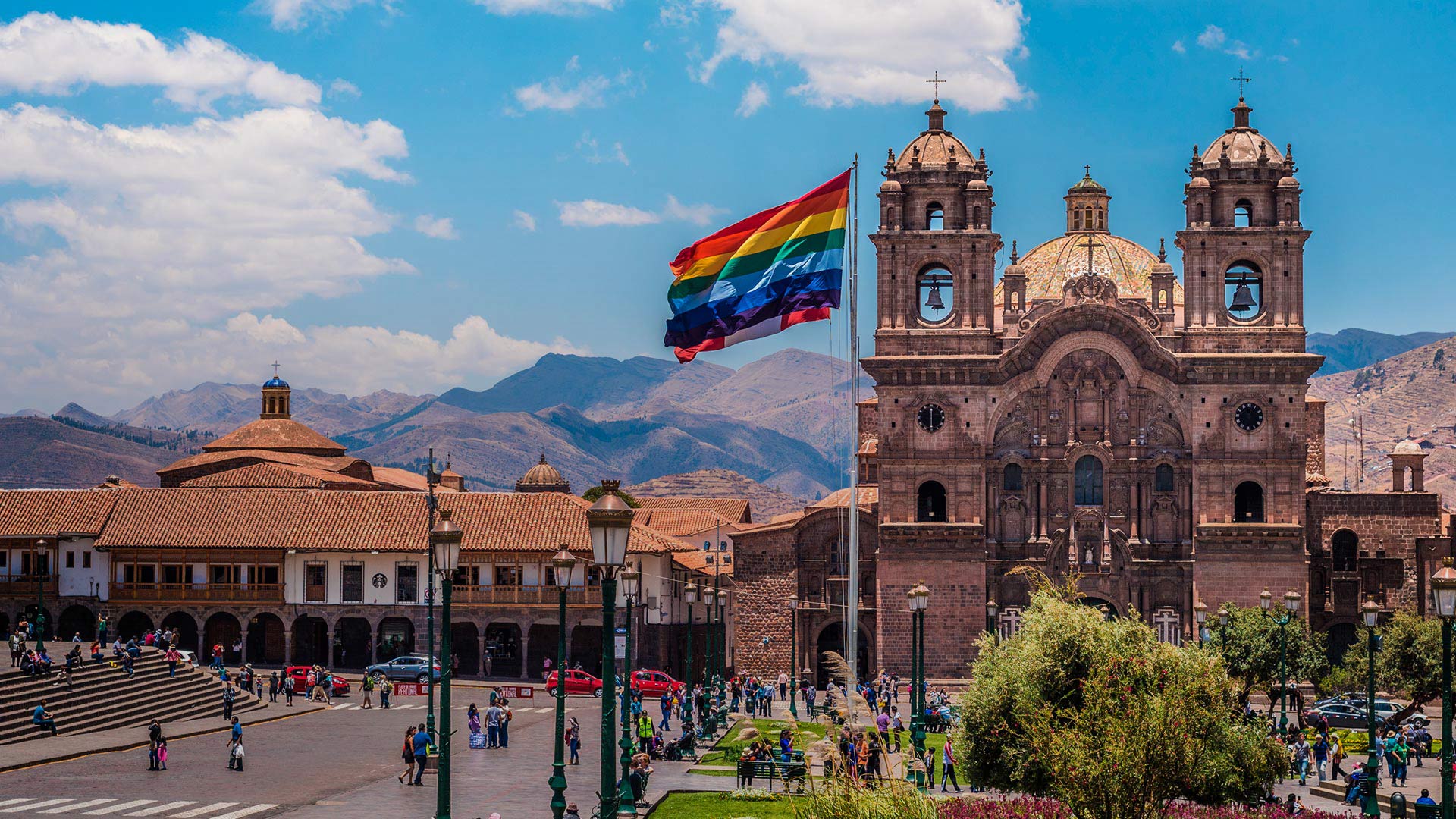
City tour in Cusco’s historic center
Visit the magical sights of the imperial city
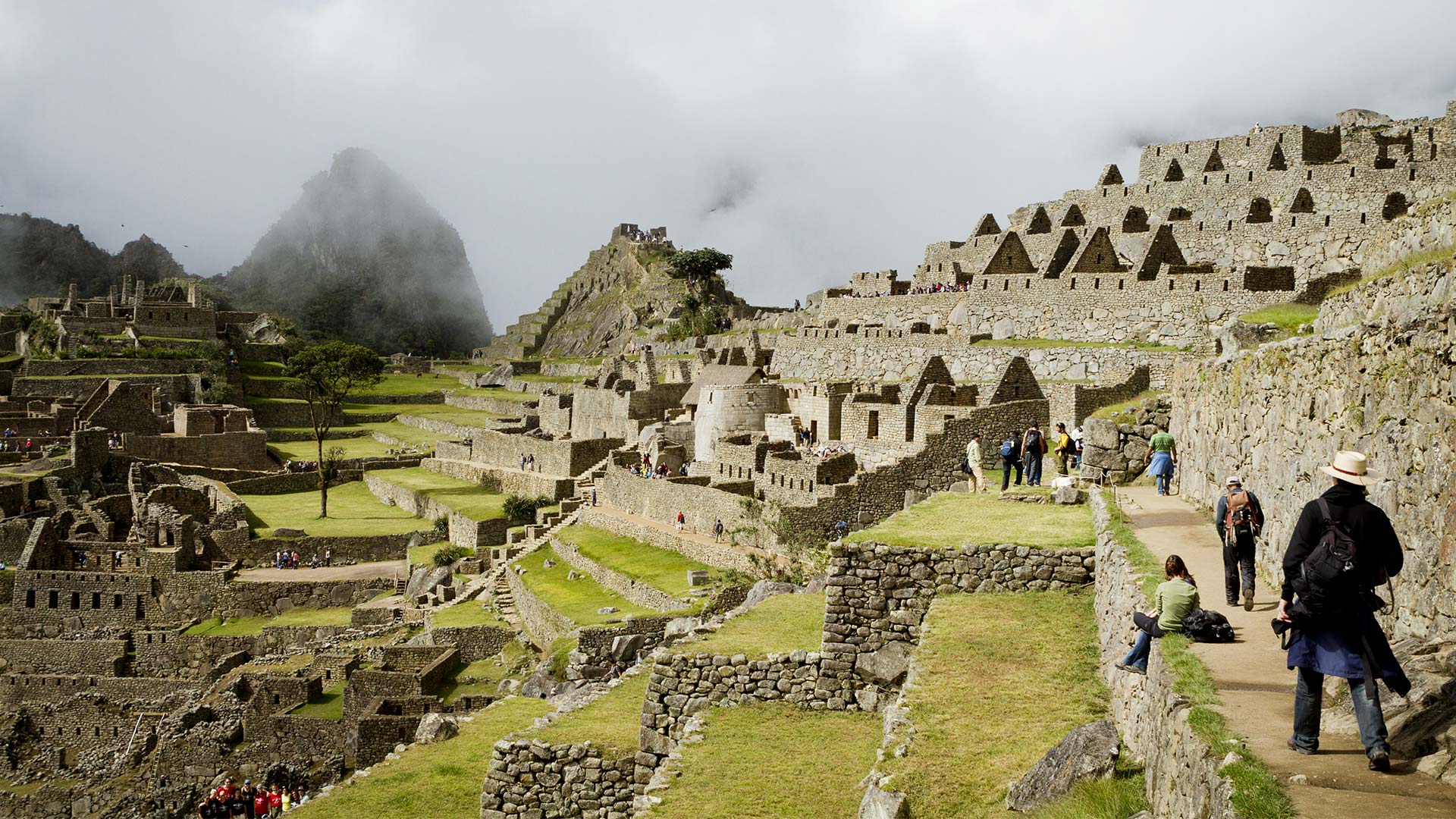
Tour of Cusco and Machu Picchu
See Cusco and Machu Picchu at the same time
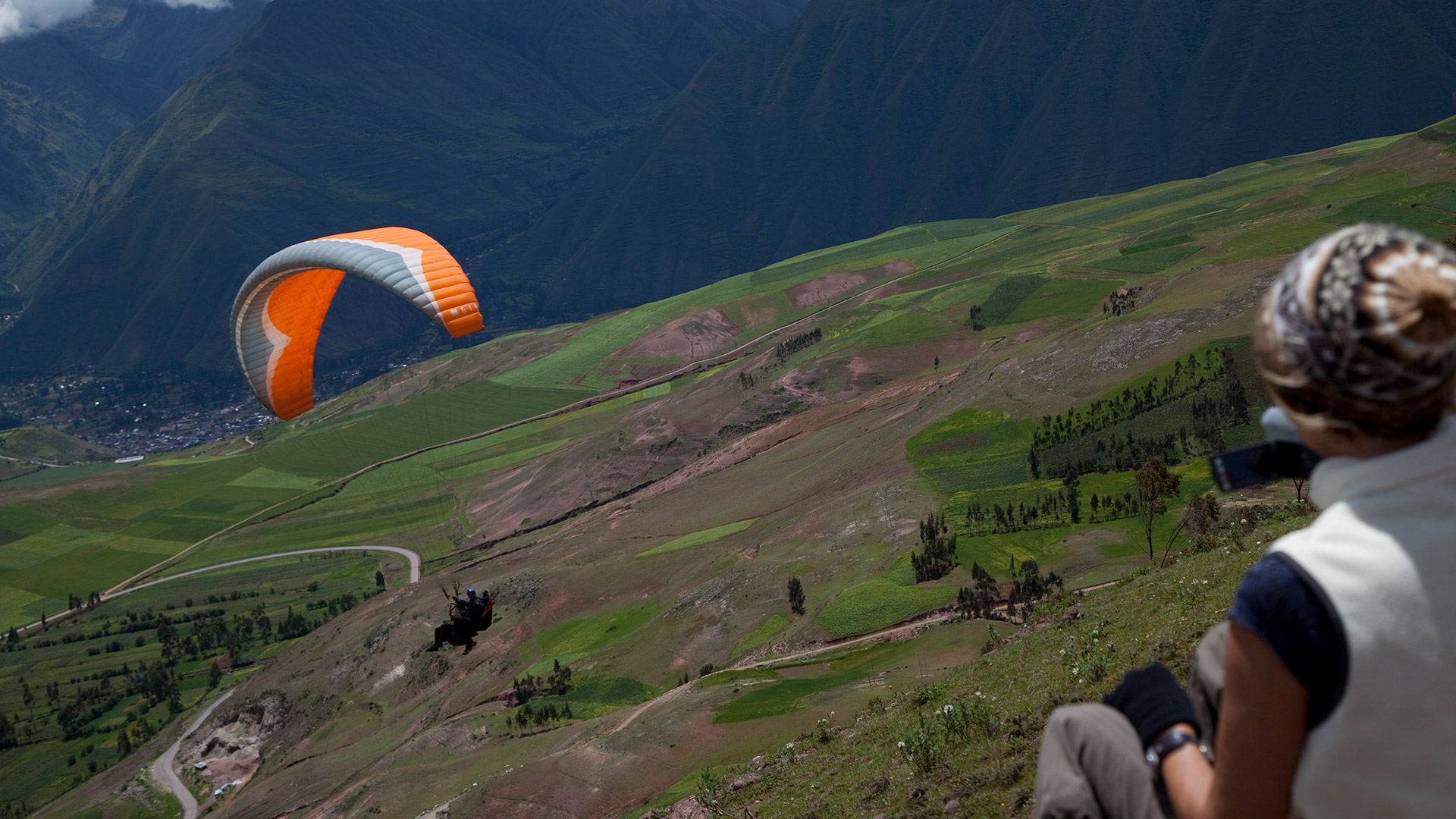
Explore the Sacred Valley
Paragliding in the Sacred Valley
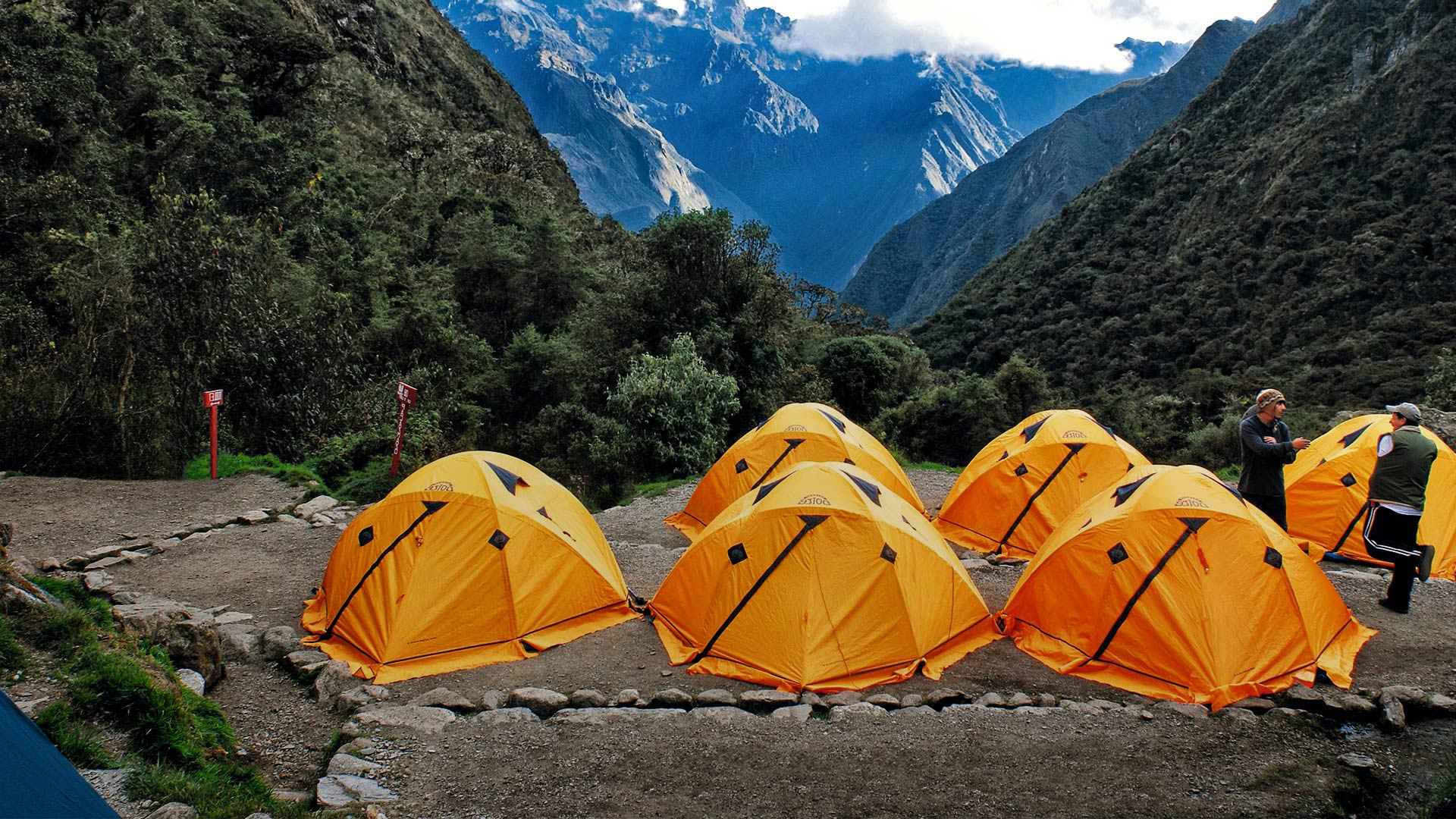
Glamping on the Inca Trail
The glamorous way to trek
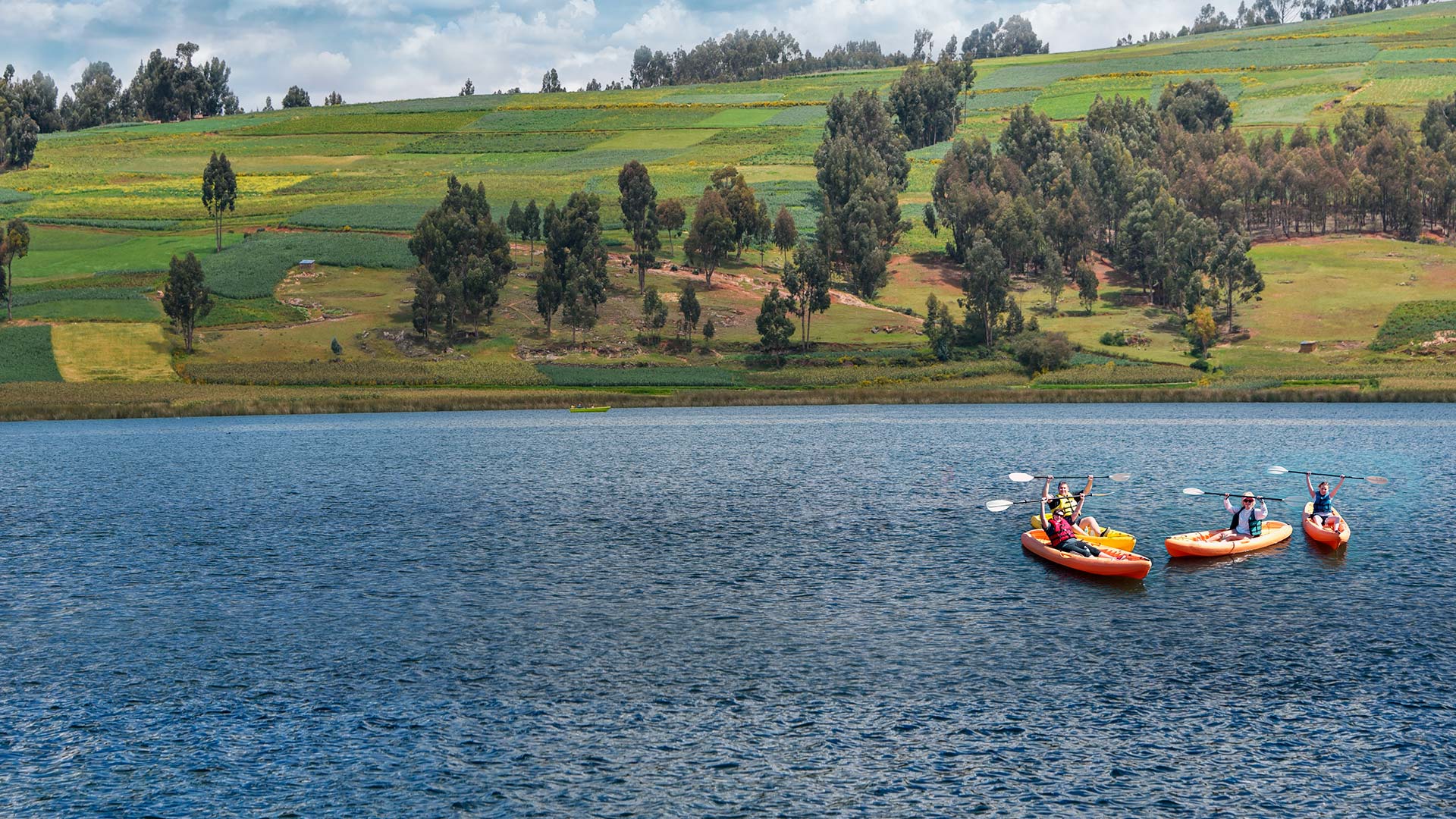
Kayaking on Cusco’s lakes
Take a ride in these single person craft
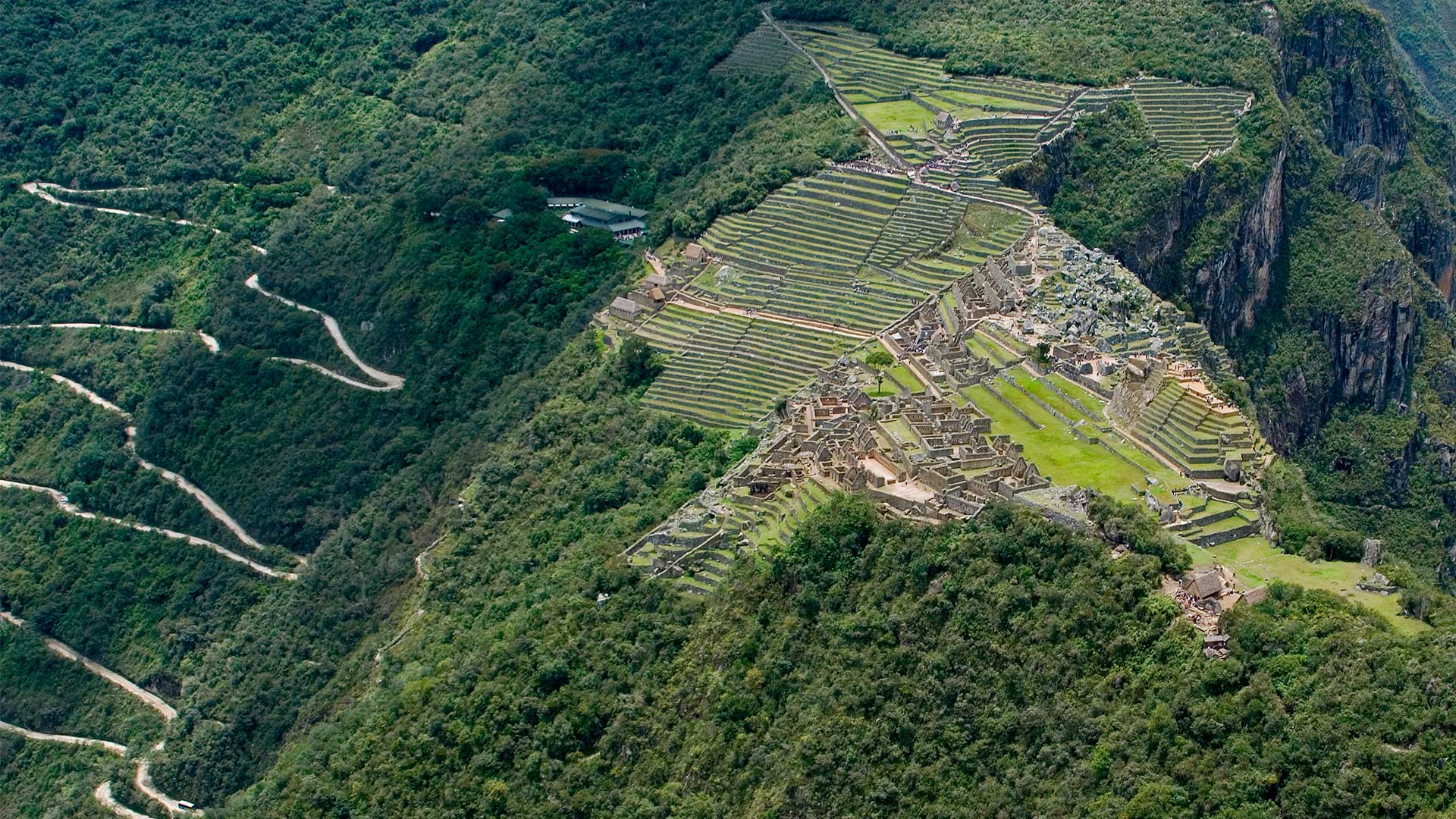
Experiencing the view from Huayna Picchu
A condor eye’s view
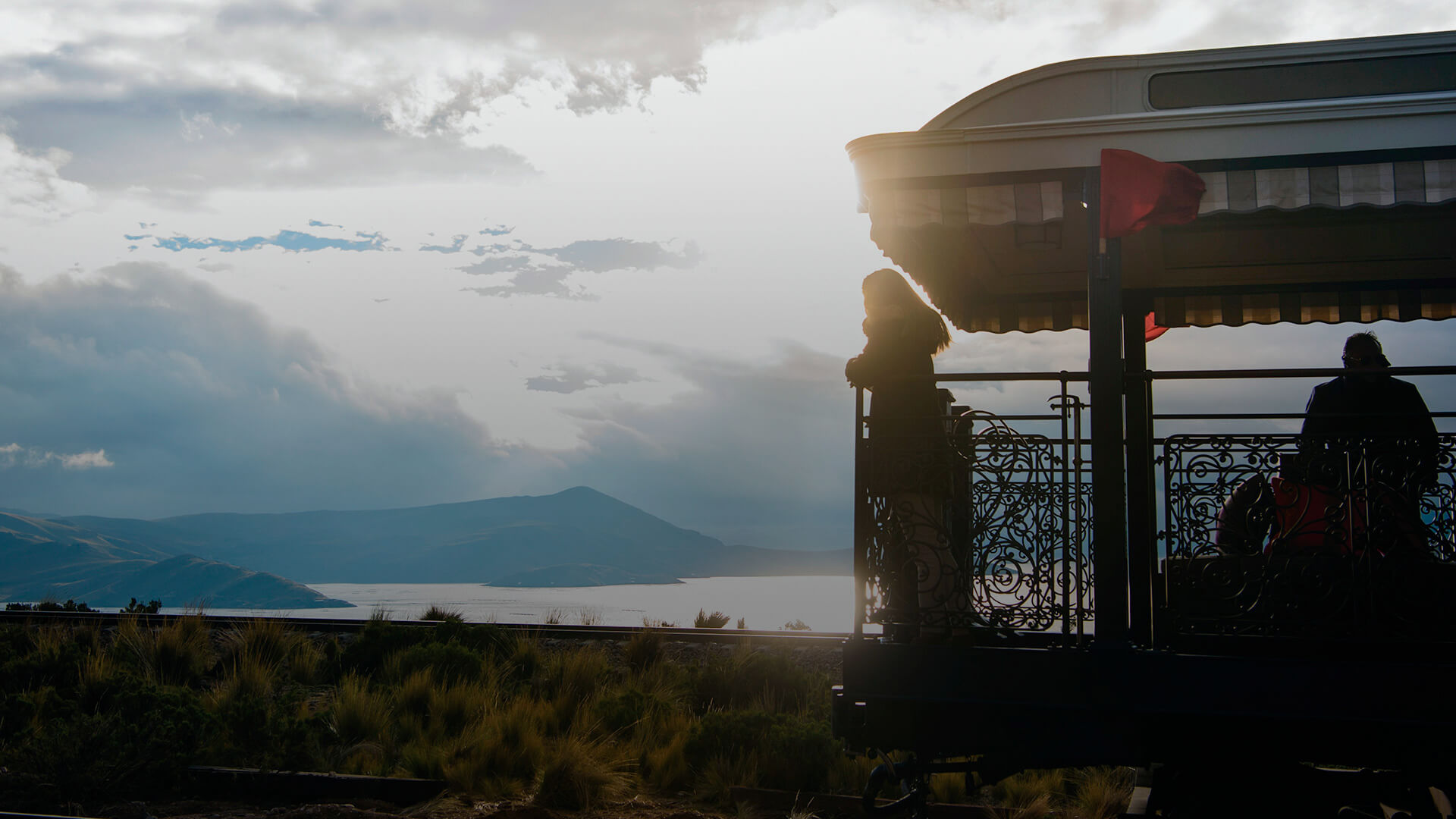
Luxury train journey Cusco, Puno and Arequipa
Where luxury arrives on rails
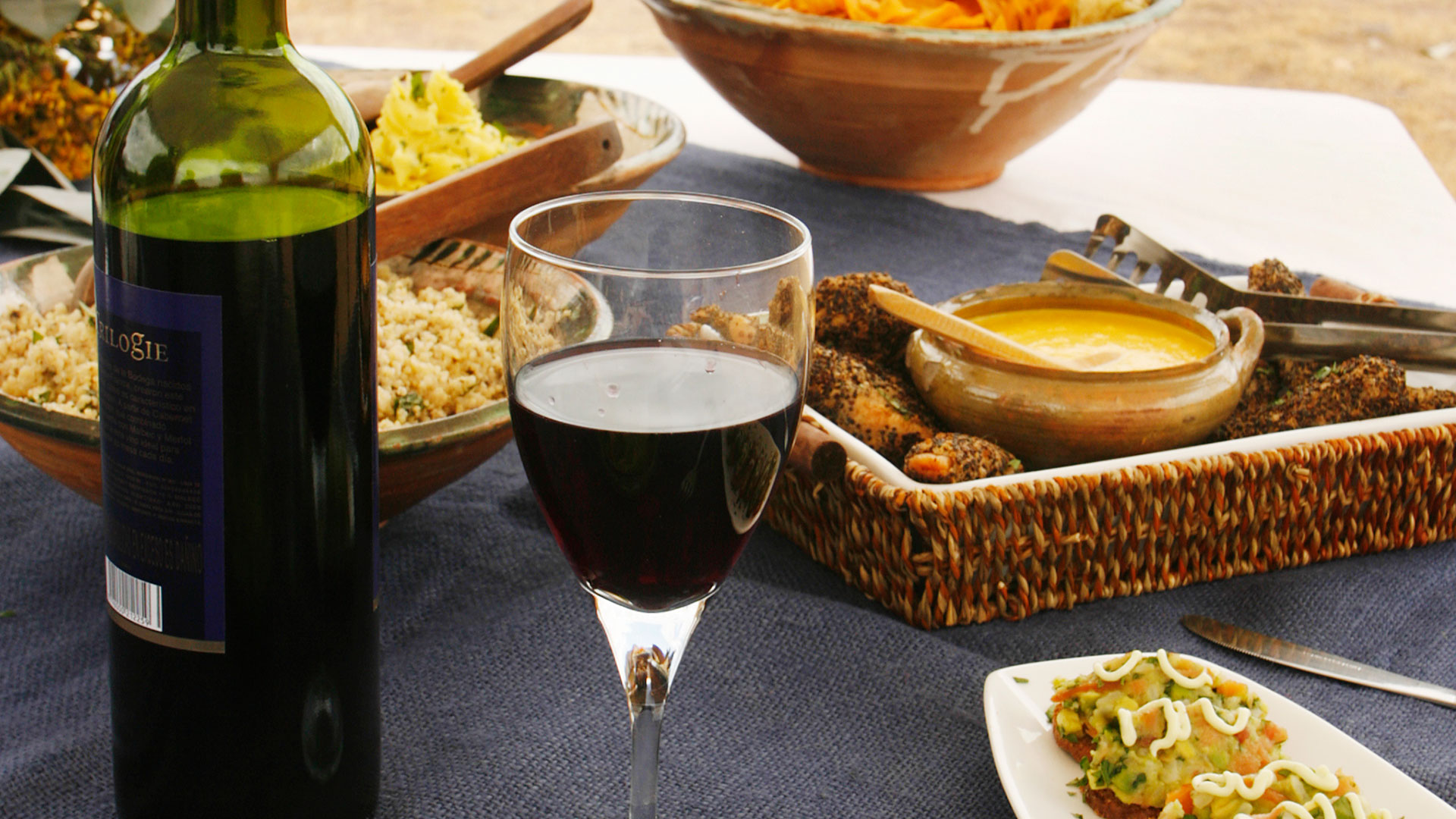
Picnic in the Sacred Valley
Nature a la carte
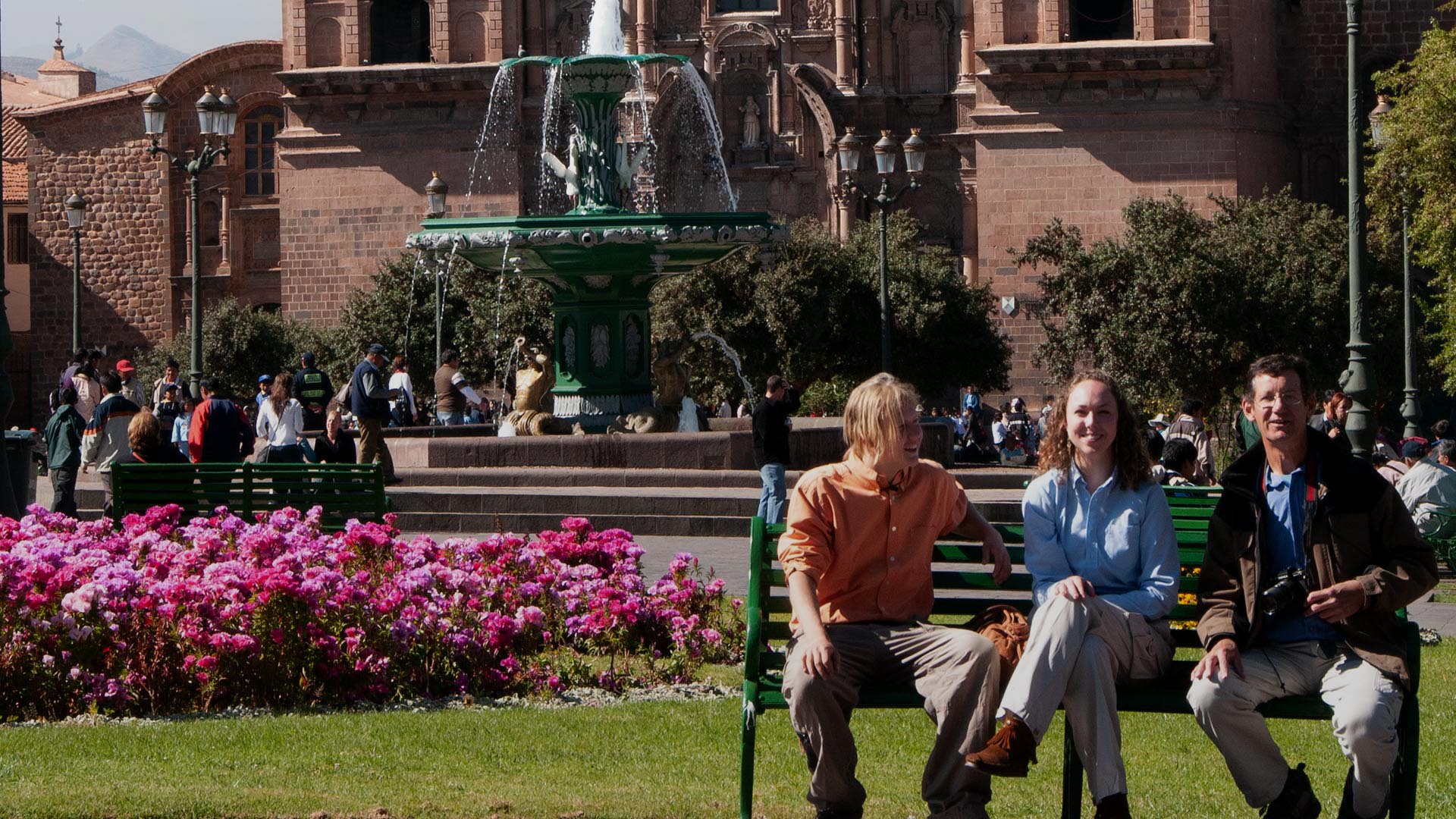
Andean Baroque route-Cusco
Where history and art knock on heaven’s door
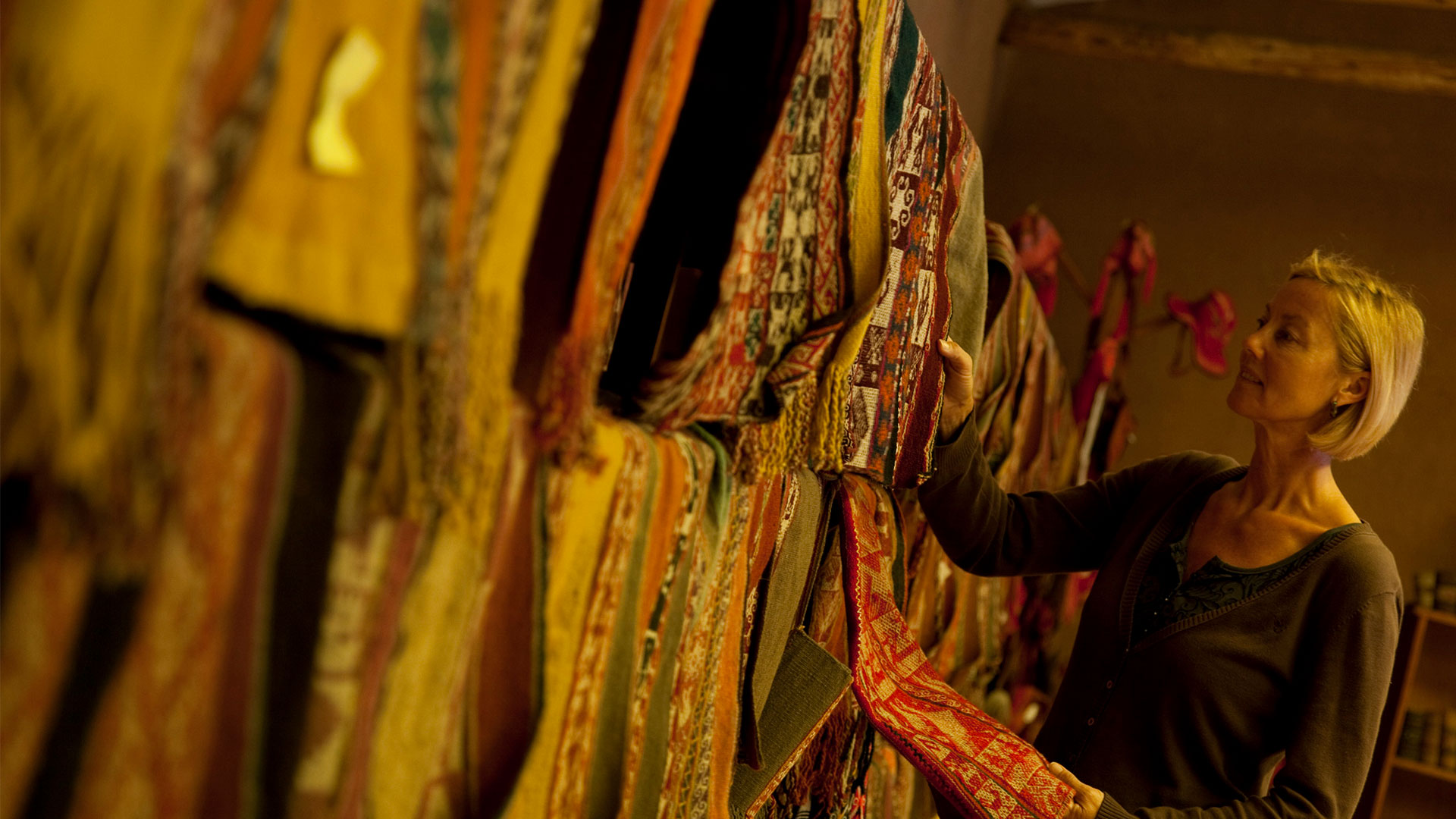
Shopping for handcrafts, silver and alpaca in Cusco
Where ancestral knowledge seems endless
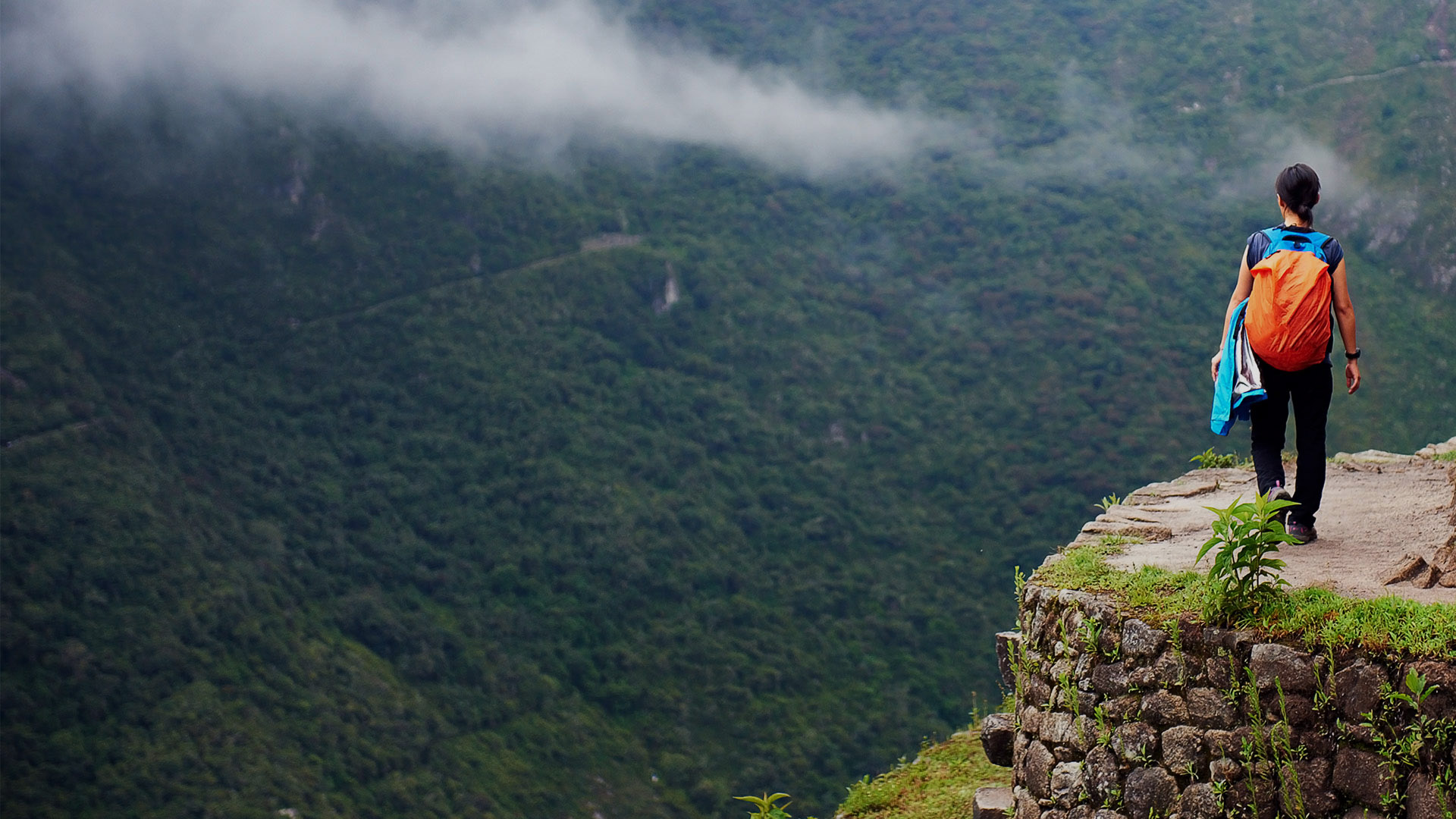
Trekking the Inca Trail
It will exceed your expectations
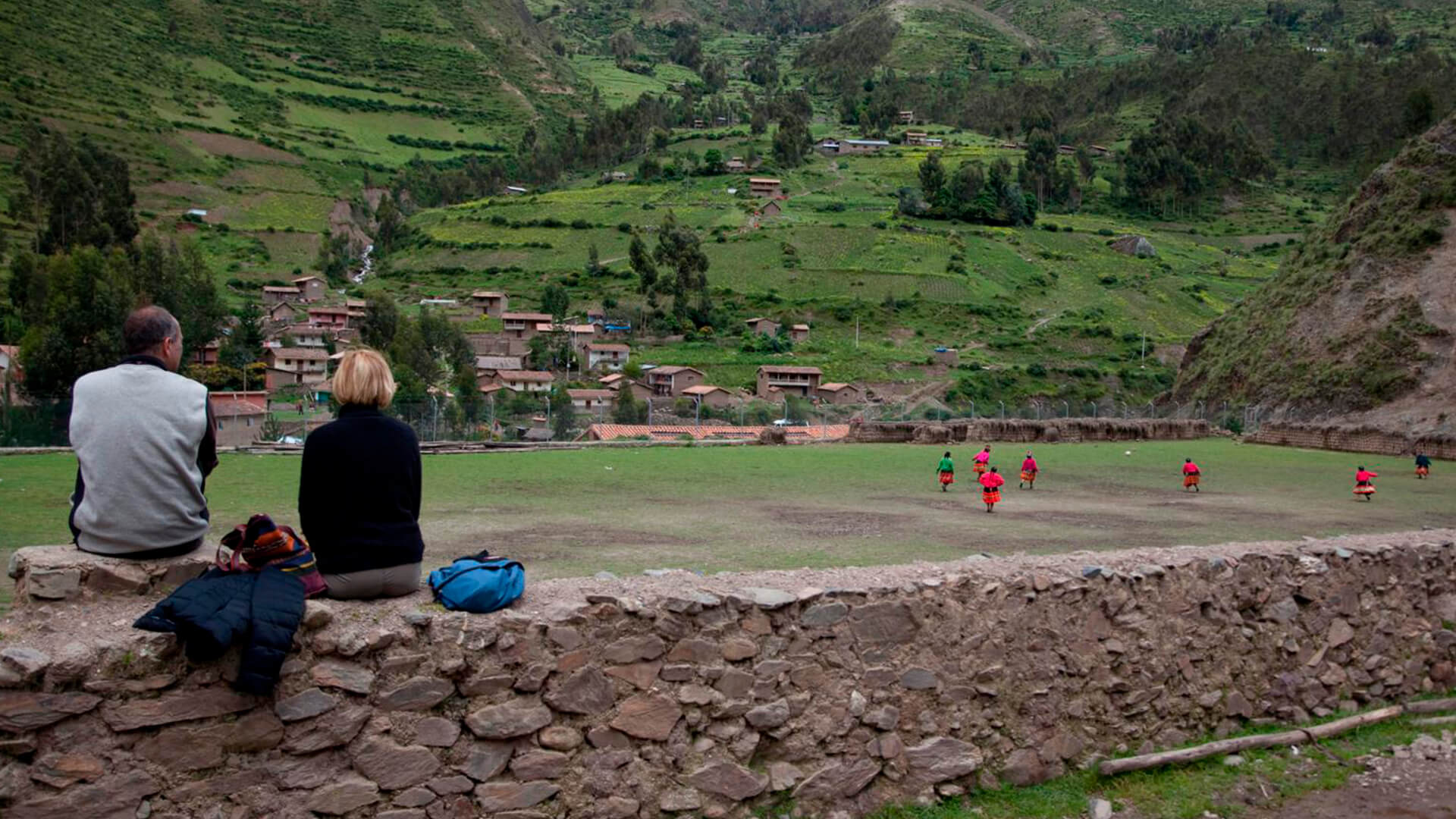
Visit the communities of the Sacred Valley
Experience the Sacred Valley
Top destinations to explore in Perú
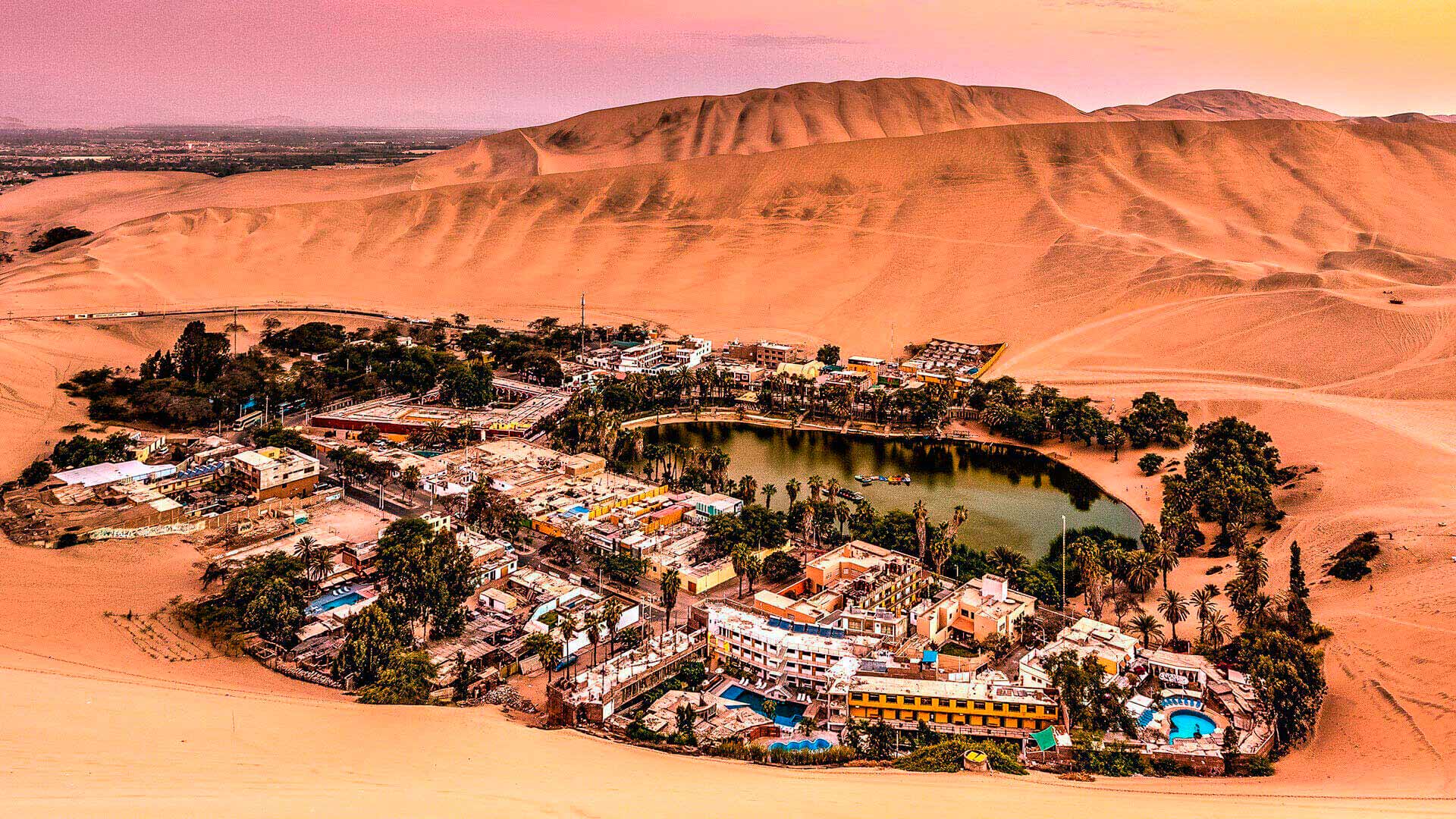
A desert, all experiences
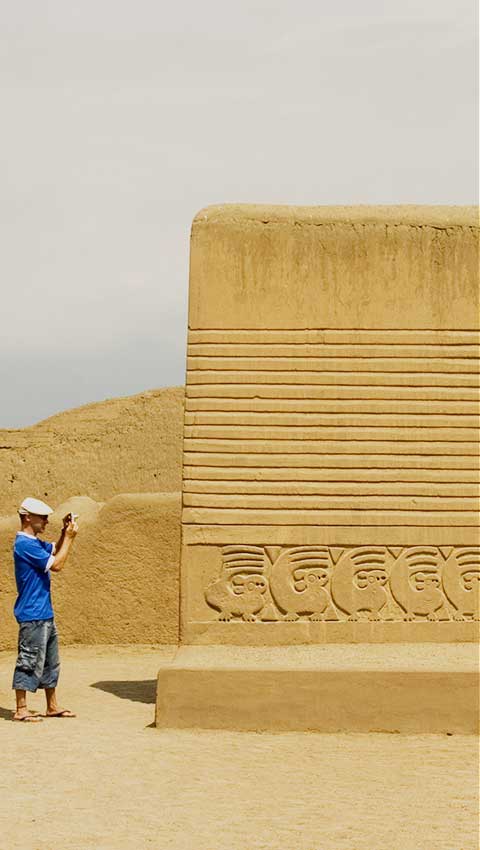
La libertad
Everything is about the sea
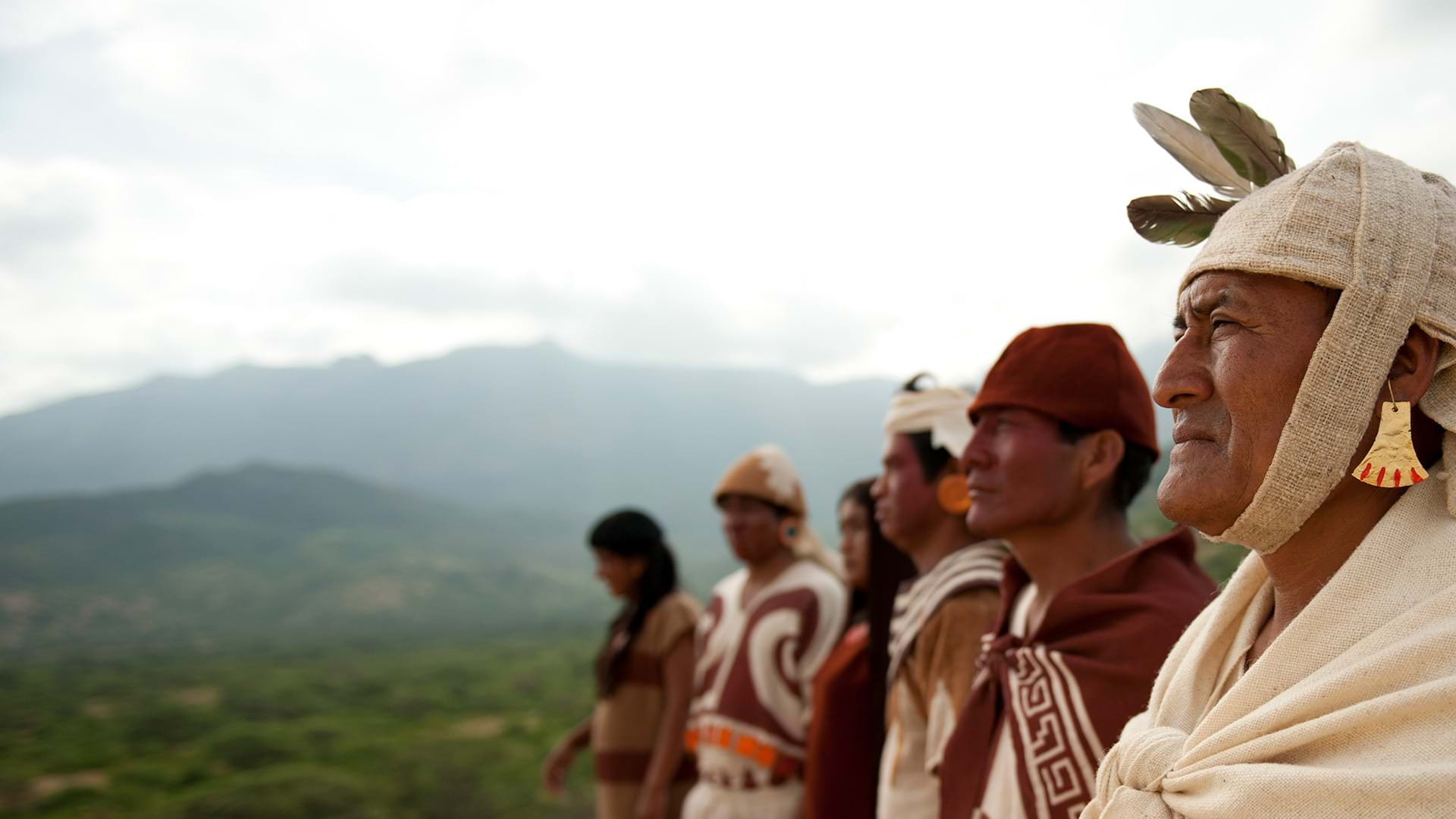
Land of ancient kingdoms, pyramids and forests
We help you plan your trip!
TRIPADVISOR
Cusco Travel Guide

Why Go To Cusco
Cusco, known as the archaeological capital of the Americas, is home to a storied history that included the rise and fall of the Inca Empire followed by the invasion of Spanish conquistadors in the early 1500s. Today, remnants of both eras share the narrow city streets – from centuries-old baroque cathedrals to exquisite stone masonry – creating a rare collision of Andean and Spanish styles that makes Cusco like no other place on earth.
The city has come out of the shadow of Peru’s capital, Lima , in recent decades. Millions of tourists make the pilgrimage from Cusco and the Sacred Valley to get a glimpse of South America's greatest spectacle: Machu Picchu . Discovered by American explorer Hiram Bingham in the early 20th century, the fabled ruins are one of the most impressive architectural feats of the ancient world. If you're planning a visit to Machu Picchu while in Cusco, make the most of your time with these tips . But don't let this UNESCO World Heritage Site be the only thing you see while in Cusco. This enchanting city offers more: from the glimmering Qorikancha (Temple of the Sun) to the scrumptious Andean cuisine. It only takes a day to be charmed by this significant Peruvian city and all its wonders.
Find Flight and Hotel Deals
Navigate forward to interact with the calendar and select a date. Press the question mark key to get the keyboard shortcuts for changing dates.
Navigate backward to interact with the calendar and select a date. Press the question mark key to get the keyboard shortcuts for changing dates.
- # 1 in Best Cheap Vacations in Central and South America
- # 6 in Best Places to Visit in May
Best of Cusco
Best hotels in cusco.
- in Palacio del Inka, A Luxury Collection Hotel, Cusco
- in Belmond Hotel Monasterio
- in Casa Cartagena

Best Things to Do in Cusco
- # 1 in Plaza de Armas
- # 2 in Machu Picchu
- # 3 in La Catedral

Popular Tours

Machu Picchu Day Trip from Cusco
(1407 reviews)
from $ 349.00

Full Day Tour to Machu Picchu from Cusco
(458 reviews)
from $ 335.00

2-Day Tour: Sacred Valley and Machu Picchu by Train
(992 reviews)
from $ 479.00
Cusco Travel Tips
Best months to visit.
The best time to visit Cusco is from June to mid-September. Though temperatures hover in the mid- to upper 60s throughout the year, the city sees fewer rain showers during its winter months. Still, this is peak tourist season, so expect plenty of fellow trekkers beside you as marvel at iconic sites. To escape swells of tourists and high room rates, visit during May or between late September and early November. Avoid visiting between late November and April, when heavy downpours delay and dampen exploration. Whenever you decide to plan your trip, bring warm clothing to arm yourself from the chilly nighttime temperatures, which dip into the low 30s and 40s.
Weather in Cusco
Data sourced from the National Climatic Data Center
What You Need to Know
- Acclimate with coca tea Surpassing 11,000 feet, Cusco's steep elevation takes some getting used to. Combat altitude sickness with mate de coca , a local herbal tea served at most hotels and restaurants.
- Watch your step While it's tempting to walk along the walls of ancient ruins, keep in mind that the stones have loosened over the last several hundred years. Your balancing act could damage their well-crafted masonry – not to mention your own body.
- Rely on bottled water Tap water here is not safe to drink. Instead, quench your thirst with bottled water.
- Plan ahead If you're hoping to see Machu Picchu while in Cusco, reserve your ticket several months to a year in advance. For more information on getting to Machu Picchu, tours and tips for visiting , check out our guide.
How to Save Money in Cusco
- Purchase a Boleto Turístico This pass grants access to 16 attractions in Cusco, some of which only accept this ticket in lieu of an entrance fee. A Boleto Turístico costs 130 Soles (roughly $40); however, there is also the option of buying boleto parcial (partial ticket), which allows access to fewer sites for half the cost.
- Rely on your own two feet The best way to take in this city is on foot, which so happens to be the most affordable way to get around .
- Arrive in spring You'll find much better hotel rates between late September and November, after the popular winter months.
Culture & Customs
In A.D. 1200, Cusco (known as the "navel of the world") served as the epicenter of the Inca Empire and anchored a vast political and military network that extended to Ecuador, Bolivia and Chile. After Spanish conquistador Francisco Pizarro seized the city in 1533, the Spanish established a new fortress, utilizing the Incan foundations. Today, the city showcases a rich infusion of Inca and Spanish heritage.
Now home to about 350,000 people, Cusco's culture is best seen during its lively outdoor festivals like the Festival of the Sun when thousands of revelers gather to celebrate fiestas and dance to pre-Columbian music. The majority of Cusco's population identifies as Roman Catholic, however, a variety of other religions are practiced and very few residents identify as atheist or agnostic. Catholic saint days, Andean ceremonies and Incan festivities are observed throughout the year.
Dress is generally casual in Cusco, but those planning to visit the Inca ruins should remember to bring waterproof clothing, sturdy hiking shoes and warm layers as the high altitude ushers in cooler temperatures at night. Keep in mind that Cusco's streets are cobbled, so you'll want to bring comfortable walking shoes for exploring the city by day and participating in the lively night scene after dark. Also, as you're wandering Cusco, remember to keep your wits about you. Petty thieves frequent Plaza de Armas , and pickpocketing happens to unsuspecting tourists.
The official language of Peru is Spanish, but you'll hear a mingling of Spanish, Aymara and Quechua (the official language of the Inca Empire). Cusco Quechua is its own distinct dialect, which varies greatly from Quechua spoken in other regions in Peru. English-speakers can be hard to find, so come prepared with a basic book of key Spanish phrases and plenty of patience.
The Peruvian Sol (PEN) is the official currency of Peru, which has a very favorable exchange rate to the U.S. dollar (about $0.30 per 1 Peruvian Sol). Make sure to check the current exchange rate before traveling.
What to Eat
In recent years, Peruvian cuisine has gained popularity in the world’s culinary landscape, but for the freshest (and most authentic) specialty dishes, Cusco will not disappoint. Most Peruvian dishes carry big flavor not seen in other Latin and South American fare. You may have already tried popular dishes like ceviche (a cold dish of fresh raw fish with spicy citrus flavors) or lomo saltado (stir fried beef with fries). If you’re feeling a bit more adventurous, try cuy (roasted guinea pig – yes, the American household pet) or charbroiled alpaca (also known as llama). Other delicious traditional dishes include adobo (a pork stew with corn beer), tamales, choclo con queso (boiled corn with local cheese) and the vegetarian stew capchi de setas . As far as vegetables go, Peru produces more than 4,000 varieties of potato, so you’ll find many dishes centered on them like papas a la huancaina (boiled potatoes with a spicy cheese sauce) and causa (a potato casserole with a variety of meat). Other staple veggies include corn and avocados. If your mouth isn't watering yet, check your pulse.
For a taste of traditional dishes, head to Pachapapa or the award-winning Chicha (visitors and locals recommend getting reservations well in advance). Peruvian cuisine often mingles with Asian influences, inspired by the culture brought by indentured servants and immigrants who came to Peru dating back to the original Spanish rule in the country. For a sampling of the Asian/Peruvian fusion cuisine, visit LIMO . If you're really looking to splurge on a fine dining experience, try MAP Cafe . Located in the courtyard of the Pre-Columbian Art Museum in a glass shipping container, the fare is more contemporary Peruvian cuisine. You can also kick-start your day with coffee and breakfast at Jack's Cafe , which serves breakfast all day. Many of the most popular restaurants are centrally located near Plaza de Armas .
Getting Around Cusco
The best way to get around Cusco is on foot. The Plaza da Armas serves as the historic center of the city and colorful cobbled pedestrian-only streets extend outward to many of the city's top attractions . That said, at an altitude of more than 11,000 feet, exploring Cusco requires stamina. Should you need to catch your breath, it's easy to flag down a taxi. Buses, often called colectivos or combis , are a more affordable way to get around, but the time schedules and limited routes can be less convenient than hailing a cab. For longer journeys to the Sacred Valley, you'll want to rent a car, but heavy pedestrian traffic can clog the narrow street, so driving in Cusco proper is not recommended.
When you're ready to journey to Machu Picchu , you'll want to snag a seat on one of PeruRail's daily trains from Estación Poroy (15 minutes from downtown Cusco) to Aguas Calientes, a station located at the base of Machu Picchu. A tour company can also arrange transportation for you; learn how here .
Most visitors fly into Cusco's Alejandro Velasco Astete International Airport (CUZ) – located about 4 miles southeast of the downtown area – via the one-hour flight from Lima's Jorge Chavez International Airport (LIM). Peruvian Airlines and LAN Airlines offer daily flights between Lima and Cusco.
Entry & Exit Requirements
A valid passport is required for entry into Peru. U.S. travelers can stay for up to 90 days without obtaining a visa as long as they possess documentation of return or continued travel. Staying beyond 90 days is prohibited without applying for a special visa prior to arrival. Peru requires an international departure tax of $30.74 per person, which is either included in the cost of your plane ticket or must be paid in cash upon departure from the airport. If you're flying domestically within Peru, expect to pay $10.68 in taxes. Although Peru does not require immunizations before entry, vaccination against yellow fever is highly recommended. For more information, check out the U.S. Department of State's website .
The heart of the city – both during Incan times and present day – the Plaza de Armas is constantly buzzing with activity.
Explore More of Cusco

Things To Do
Best hotels.

You might also like

Grand Canyon National Park
# 1 in Best Day Trips from Las Vegas

# 1 in Best Cheap Couples Getaways for 2024

# 5 in Best Honeymoon Destinations for 2024
If you make a purchase from our site, we may earn a commission. This does not affect the quality or independence of our editorial content.
Recommended
16 Top Adults-Only All-Inclusive Resorts in Mexico
Christina Maggitas|Rachael Hood|Catriona Kendall September 13, 2024

The 26 Best Beach Resorts in the World
Marisa Méndez|Erin Vasta|Rachael Hood|Catriona Kendall September 5, 2024

30 Fun Fall Weekend Getaways for 2024
Holly Johnson August 29, 2024

The 19 Best Fall Family Vacations for 2024
Amanda Norcross August 27, 2024

The 28 Best Water Parks in the U.S. for 2024
Holly Johnson|Timothy J. Forster May 8, 2024

The 18 Best Napa Valley Wineries to Visit in 2024
Lyn Mettler|Sharael Kolberg April 23, 2024

The 25 Best Beaches on the East Coast for 2024
Timothy J. Forster|Sharael Kolberg April 19, 2024

The 50 Best Hotels in the USA 2024
Christina Maggitas February 6, 2024

The 32 Most Famous Landmarks in the World
Gwen Pratesi|Timothy J. Forster February 1, 2024

9 Top All-Inclusive Resorts in Florida for 2024
Gwen Pratesi|Amanda Norcross January 5, 2024


- +51 957 326 998
- +51 965 730 786
Peru Destinations
Top Best Places and Tourist Attractions to Visit in Peru and Cusco
- Machu Picchu Tours
- Sacred Valley
- Lares Treks
- Huchuy Qosqo
- Rainbow Mountain
- Inca Trails Treks
- Choquequirao
- Inca Quarry
Live an unique vacation in Peru with our personalized itineraries designed exclusively through authentic tours, in harmony with the natural world. Travel to Peru and fuel your imagination on a diet of ancient treasures and wonderful landscapes. Surrounded by majestic Andean peaks, world wonder Machu Picchu and the historic city of Cusco highlight Peru’s dramatic birth from the encounter between Incas and Spaniards. Peru is one of the most diverse travel destinations on the entire planet. Full of wilderness, adventure, history, world-renowned cuisine and a colorful culture, this is a country that offers several exciting options for, literally, any type of traveler.
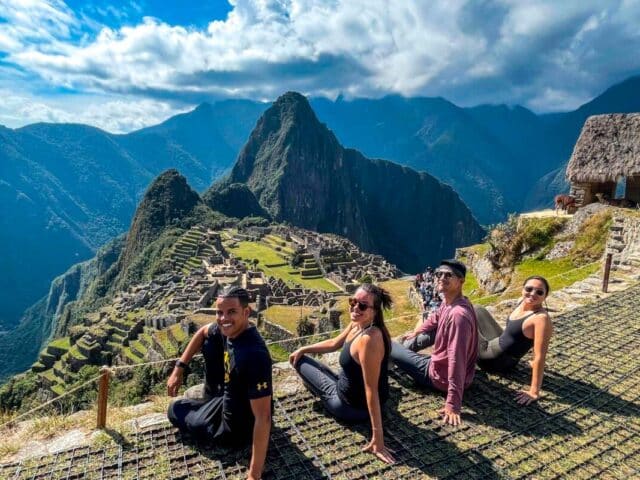
Custom Tours, Trips & Travel Packages in Peru
The best travel packages and tours to peru.
- Machu Picchu Tour with Rainbow Mountain Trek 5 Days
- Sacred Valley with Short Inca Trail & Rainbow Mountain Tour – 4 Days
Explore our selection of Peru tours and packages and get inspire with our journeys and find your perfect itinerary. Come to Peru to discover its mystical land with ancient citadels, magnificent natural beauty, traces of ancient civilizations, rich history, and vibrant culture, of course, Peru is a memorable destination. No matter your inclination or age, Peru Spirit Adventure has an exhilarating adventure ready to take you deep into the heart of Peru. From coastal metropolises, the lively Lima city, with its museums, galleries, and buzzing cuisine scene to the Peruvian Andes to explore Cusco, the historic capital of the Inca Empire, Sacred Valley with its bustling markets overflowing with vivid textiles and handicrafts, and end up with the most revered ruins in the world like Machu Picchu or keep exploring the dramatic snow-capped peaks, the vivid colors of Rainbow Mountain in the Andes Mountains with our carefully crafted custom tour packages in Southern of Peru
Best Tours & Trips to Machu Picchu
Embark an exceptional private tours of machu picchu in peru with an expert tour guide.
- Tour to Machu Picchu with Vistadome Train 1 Day
- Machu Picchu Tour by Train – 2 Days / 1 Night
- Sacred Valley & Machu Picchu Tour 2D/1N
- Cusco City Tour, Sacred Valley & Machu Picchu Tour 3D/2N
- Sacred Valley 2 Day & Machu Picchu – 3 Days / 2 Nights
- 4D/3N Cusco City, Sacred Valley 2 Day & Machu Picchu Tour
- Sacred Valley & Inca Trail to Machu Picchu 3D/2N
- 2-Day Moray, Maras Salt Mines & Machu Picchu Tour
The spectacular Inca citadel of Machu Picchu – Is the world’s greatest travel destination, a New Wonder of the World, South America’s top attraction, or purely a postcard-worthy ancient site that must be seen to be believed. Whether you travel to Machu Picchu by scenic train, hike the world-famous Inca Trail or venture off the beaten path, you’ll be able to enjoy a unique experience and discover the Lost City’s secrets. Once you step foot into this UNESCO World Heritage site, you’ll discover its refined architecture, spiritual meaning and astronomical importance. Machu Picchu – a bucket list experience!!
Best Inca Trail Tours to Machu Picchu Peru
Hike the famous inca trail to machu picchu, the best trekking route in all of south america.
- Inca Trail 4 Days Trek to Machu Picchu
- Inca Trail 5 Days Tour to Machu Picchu
- Inca Trail Short 2 Days Trek to Machu Picchu
- Salkantay Trek + Classic Inca Trail 6D/5N
- 1 Day Short Inca Trail to Machu Picchu
- 2 Days Inca Trail to Machu Picchu
The Inca Trail – Is one of the most iconic and famous trails in South America – perhaps the world – and a must-do, life-changing experience. This 26-mile (42km) trail to the 15th-century Inca citadel of Machu Picchu goes across the Andes mountains reaching 13,829 ft (4,215m) and it’s hiked in 4 days and 5 days. Along the route you’ll get to see some fascinating archaeological sites that can only be accessed by foot and witness a mix of ecosystems with abundance in fauna and flora where you’ll have high chances to spot gorgeous orchids, tall mountains ranging from the snow-capped Andes to the luscious cloud forest and in the middle of this region is where you’ll camp every night and live an unforgettable experience and this original Inca steps ends at the Sun Gate (Inti Punku), the entrance to Machu Picchu city.
The Greatest Hikes in Peru
Alternative Treks To Machu Picchu & Off The Beaten Path Adventure Travel in Peru
SALKANTAY TREKS
- Salkantay Trek to Machu Picchu 5 Days
- Salkantay Trek to Machu Picchu 4 Days
- Salkantay Challenge Trek 3 Days
- Salkantay Trek + Classic Inca Trail 6 Days
- Salkantay Trail to Machu Picchu & Zipline 5 Days
AUSANGATE TREKS
- Ausangate Trek to Rainbow Mountains – 4 Days
- Ausangate 5 Day Trek + Rainbow Mountains Cusco
- Ausangate & Sibinacocha Lake 7D/6N
LARES TREKS
- Lares Trek to Machu Picchu 3D/2N
- Lares Trek & Short Inca Trail 5D/4N
- Lares Trek 4 Days to Machu Picchu
HUCHUY QOSQO TREKS
- Huchuy Qosqo 1 Day Hike
- Huchuy Qosqo Trek 2 Days (With Machu Picchu)
- Huchuy Qosqo Trek to Machu Picchu 3D/2N
CHOQUEQUIRAO TREKS
- Choquequirao Trek 4D/3N
- Choquequirao Trek 5D/4N
ANCASCOCHA TREKS
- Ancascocha Challenge Trek 4D/3N
- Ancascocha Trek 5D/4N
INCA QUARRY TREKS
- Inca Quarry Trek 4D/3N
- Inca Quarry Trek + Short Inca Trail 5D/4N
INCA JUNGLE TOURS
- Inca Jungle 4 Days
- Inca Jungle 3 Days
DAY TRIPS IN CUSCO
Enjoy the best of the city of Cusco & surrond
- City Tour Cusco Half Day Tour – Morning or Afternoon
- Cusco City Highlights & Surroundings Tour – 1 Day
- Maras Moray & Salt Mines Tour – Half Day
- 1-Day South Valley Tour of Cusco
- Walking Tour Cusco Half Day Tour
- Cusco Horseback riding – Half day
FULL DAY HIKES
Off The Beaten Path Cusco Day Hikes
- Full-Day Huchuy Qosqo Trek
- Inca Quarry Trail 1-Day Hike
- Chinchero to Urquillos One Day Trek
- Pumamarca Hike to Ollantaytambo – 1 Day
- Qeswachaka Bridge One Day Tour
- Tipon, Pikillacta & Andahuaylillas Tour – 1 Day
BEST SELLER DAY TOURS IN CUSCO
Discover the Best Day Hikes in Peru
- Rainbow Mountain One Day Tour
- Horseback Ride Rainbow Mountain 1-Day Tour
- Palccoyo Rainbow Mountain 1-Day Tour
- Humantay Lake One Day Tour
- 1-Day Inca Trail Trek to Machu Picchu
- Ausangate 7 Lakes 1-Day Hike
Peru's Best Sacred Valley Tours in Private Service
Discover the best of sacred valley with a customized tour on your terms.
- CLASSIC Sacred Valley Tour (Pisac & Ollantaytambo)
- ALTERNATIVE Sacred Valley Tour (Chinchero, Moray, Salt Mines & Ollantaytambo)
- EXTENDED Sacred Valley Tour (Pisac, Salt Mines, Moray & Ollantaytambo)
- SUPER Sacred Valley Tour (Chinchero, Salt Mines, Moray, Ollantaytambo & Pisac)
- FULL-DAY TOUR ( Moray, Salt Ponds of Maras & Pisac)
- SACRED VALLEY TOUR from OLLANTAYTAMBO to CUSCO
Peru’s Sacred Valley – Just one hour away from Cusco, it’s a destination full of adventure, culture, and glimpses into local Andean life; nestled in the verdant foothills of the snow-capped Andes, with a stunning landscape, dotted with little villages and ruins. Explore Pisac and Ollantaytambo to witness and wander around stunning hillside Incan ruins, visit Chinchero to experience a traditional market day in the valley. Do not miss the ancient salt pans, known as the Maras Salt Mines and the Inca experimental terraces of Moray.
Rainbow Mountain Treks & Tours
Hike to the incredible rainbow mountain or vinicunca mountain in peru.
- Rainbow Mountain Trek & Red Valley 2 Days
- Ausangate & Rainbow Mountain Trek 3 Days
- Ausangate Trek to Rainbow Mountains 4 Days
- Machu Picchu Tour & Rainbow Mountain 5 Days
Vinicunca Mountain — also known as the Mountain of Seven Colors, or more simply Rainbow Mountain — was discovered four years ago when the snow covering it melted, revealing the natural beauty of the rock beneath. A visit to Rainbow Mountain is an absolute must for all those who love stunning landscapes and gorgeous scenery. This hike to Rainbow Mountain offer you one of the earth’s most amazing natural wonders in Peru.

TRAVEL GUIDE

The Imperial City of Cusco is known as the “Navel of the World” and the former capital of the Inca Empire. It is an enchanting introduction to the Andean culture and the main gateway to the Sacred Valley and Machu Picchu Citadel. Almost all people who like to travel, have the city of Cusco among the places they have to visit in life.
- Climate & Weather
- How to Get To
What to See
- Things to Do
- Tour Packages
- Visitor Guidelines
- Travel Info
Cusco is an ancient and impressive Inca capital located high in the Andes, in southeastern Peru, and the most incredible of South America and one of the world’s top destinations.
Visiting the ancient capital of the Inca empire must be one of the best cultural experiences you can have in life, the city of Cusco is recognized as the archaeological capital of the Americas, known since the time of the Incas as the “Navel of the World”; and is an integrating city, where experiences, people of all cultures, religions and nationalities come together and exchange experiences; making it one of the most cosmopolitan cities in the world.
The city of Cusco has a unique charm that is hard to put into words, with exquisite churches, fantastic museums and narrow cobblestone streets in the historic center that deserve at least several days of exploration. Add to this the impressive Inca ruins both in the city and in the surrounding hills, and you have the recipe for a magical trip.
The city today is built on ancient Inca temples and monuments, colonial architecture and modern buildings, and the cultural festivals held throughout the year, such as the “Señor de los Temblores” and “Inti Raymi”, highlight the region’s mixed Spanish-Indian heritage and illustrate the community’s continuing renewal of ancient Andean traditions. This fascinating and historically rich city is sure to be one of the most memorable places you will ever set foot in.
Climate & Weather
The weather is an important matter when deciding on a trip. Unlike other countries and regions. In the highlands of Peru, where Cuzco is located, there are two well-defined seasons, the rainy season and the dry season, with gradual changes in weather and temperature in between. The mountainous geography of the Cuzco region has a wide variety of microclimates, with drastic temperature differences between the warm and humid valleys and the frosty high altitude plains. Generally, as elevations climb higher, temperatures drop.
DRY SEASON:
The dry season in the Cusco region is from April until October when it’s winter in South America. June and July are the driest months but also the coldest with temperatures sometimes dropping below zero. During these months in Cusco, it’s typically beautiful and sunny. The average daytime temperature is around 65°F (18°C), but if you’re in direct sunlight it can feel a lot hotter. At night, without cloud cover to create an insulation effect, the temperature dips down to a chilly 25°F (4°C) in the evening, night and early morning.
RAINY SEASON:
The months of the rainy season begin in November and run until March and coincide with summer in South America. Rainstorms are unpredictable, the rains can be fierce when they hit, causing landslides and disrupted transportation schedules. January and February are the wettest months and typically receive the most rainfall. Cloudy skies are typical throughout the rainy season, but patchy sunshine comes through on some days. Average temperatures during the dry season range around 60°F (16°C) in the day and 46°F (8°C) at night.
Best Time to Visit
The best time to visit Cusco, Sacred Valley, Machu Picchu, Rainbow Mountain, Humantay Lake or hike the Inca Trail is before and after the rainy season, that is late March, April, May, and September, October, and early November, the dry season months, that is June July and August, are great too but beware of the crowds.
There are benefits to visiting Cusco during each season, as well as some drawbacks.
- The dry season is the most popular time to visit Cusco. Weather conditions in the Andes are usually sunny with a minimal chance of rain, but attractions tend to be crowded. Peak season in Machu Picchu and Cusco is from June to August when tours and accommodation are usually booked out well in advance.
- An ideal time to visit Cusco and the Sacred Valley is right before peak season in April – May because there are far fewer tourists and crowds, or just after peak season in September or October before the rains begin. Except for Semana Santa (Easter Week), when a lot of Peruvians are also taking a vacation. Weather-related travel delays are more common, especially in January and February, when it rains the most.
How to get There?
Lorem ipsum dolor sit amet, consectetur adipiscing elit. Nullam venenatis velit sed quam facilisis volutpat. Morbi eu turpis arcu. Sed congue hendrerit imperdiet. Phasellus nisi nisl, sollicitudin a euismod et, elementum pharetra erat. Donec consectetur viverra sodales. Proin venenatis fringilla mauris, id suscipit nisl dignissim in. Vivamus cursus lacus eget enim sagittis, quis accumsan felis sollicitudin. Duis egestas tellus ac congue egestas. Sed est diam, placerat sit amet mauris id, hendrerit hendrerit mi. Ut odio purus, faucibus eu interdum ac, varius vel metus. Pellentesque elementum pharetra metus tincidunt rutrum.
Duis ornare ipsum dui, vel egestas mauris elementum nec. Quisque vel interdum mi. Sed id fermentum neque, vel tempor arcu. Vivamus accumsan odio ac felis gravida mollis. Nullam arcu tortor, euismod in enim pulvinar, aliquam finibus ligula. Curabitur id feugiat risus. Pellentesque sit amet nibh nec dui lacinia auctor. Donec aliquet mi ultricies dapibus hendrerit. Nam sollicitudin ultrices vestibulum. Nullam at fermentum risus. Morbi lectus magna, vulputate sit amet sem vitae, aliquam porta tellus. Vestibulum commodo sit amet magna ac tristique. Aliquam suscipit auctor nisi nec porta. Nunc lacinia pharetra ornare. Mauris commodo, mi egestas ultrices sollicitudin, eros turpis posuere libero, vitae condimentum nunc lacus eget neque.
Pellentesque aliquam vulputate orci eu feugiat. Donec ut nibh sit amet justo sagittis pellentesque quis vel urna. Vestibulum consequat velit id purus euismod interdum. Aliquam tristique erat elit, a bibendum enim congue euismod. Donec turpis elit, eleifend et sodales nec, condimentum ut est. Ut sagittis velit libero, ut finibus metus cursus id. Morbi ultricies bibendum ex, nec lobortis tortor convallis at. Nullam dui ante, sollicitudin vel gravida et, sagittis a sem. Cras auctor, mi blandit pretium aliquam, nisi est venenatis ante, nec vehicula nisi elit ac dui.
Ut fringilla, ipsum eu imperdiet dictum, ligula tortor aliquam augue, ac aliquam magna justo a metus. Nullam in imperdiet dolor, finibus vestibulum orci. Donec quis dolor non augue commodo aliquam et vitae metus. Sed elementum diam id pellentesque rutrum. Praesent volutpat lorem mattis tellus ullamcorper pharetra. Nam vehicula a velit quis tempus. Curabitur dignissim lobortis malesuada. Mauris interdum porta faucibus. Curabitur et elementum justo. Duis tempus sollicitudin pellentesque. Suspendisse quis cursus nisl. In in lacus tristique, iaculis ante ut, fringilla erat. Sed id felis odio. Fusce finibus ante sem, eget pharetra quam pellentesque sit amet. Duis faucibus varius est non rutrum.
Ut ac lectus elit. In pulvinar orci vitae mattis vestibulum. Aliquam at leo et erat pretium cursus eu vel libero. Morbi quis rhoncus sem, non efficitur mi. Proin faucibus enim a nisl ullamcorper, sed maximus purus placerat. Maecenas augue felis, interdum quis tortor vitae, sagittis dignissim ante. Fusce urna erat, venenatis ac est nec, rutrum lobortis mauris.
History of Machu Picchu
dignissim ante. Fusce urna erat, venenatis ac est nec, rutrum lobortis mauris.
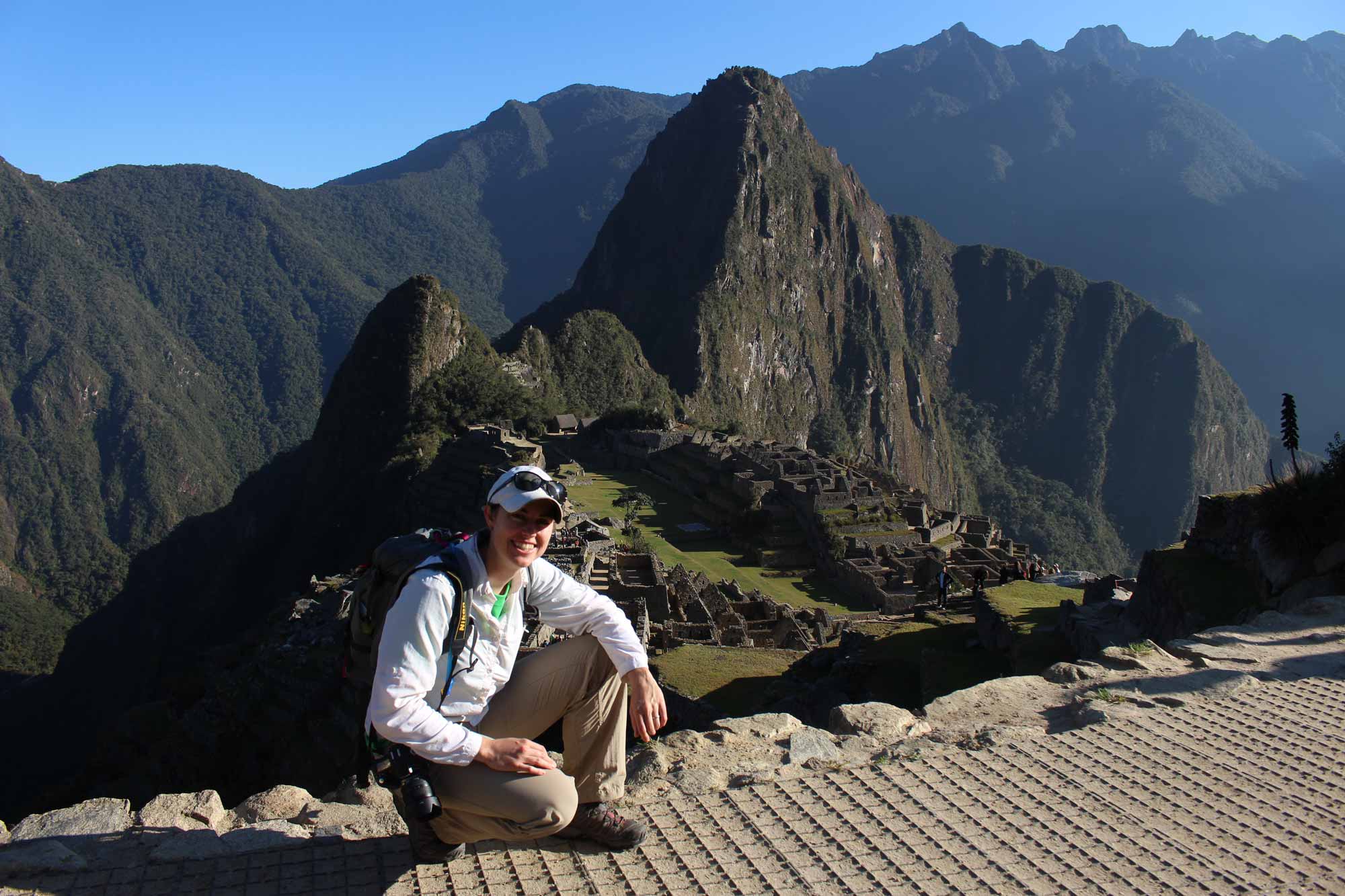
This is the heading
Lorem ipsum dolor sit amet, consectetur adipiscing elit. Ut elit tellus, luctus nec ullamcorper mattis, pulvinar dapibus leo.
Things to do
Lorem ipsum dolor sit amet, consectetur adipiscing elit.
Travel Information
Frequently asked questions.
In the city of Cusco, it is necessary to spend at least two days exploring the attractions of Cuzco in and around the city. If you are short on time, take a guided tour on the first day to learn about the city’s history and highlights, such as the Plaza de Armas, the Coricancha “Temple of the Sun” and Sacsayhuaman. On the second day, spend free time in Cuzco to explore the city at your own pace as you adjust to the high altitude.
The altitude of the imperial city of Cusco is 3,400 meters / 11,155 feet above sea level, located in the Peruvian Andes; and the Sacred Valley altitude is at roughly 2,800 meters/ 9,186 feet above sea level, 600 meters below Cusco; while Machu Picchu’s altitude is 2,430 meters/7,972 feet above sea level – almost a difference of 1000 meters/3,281 feet.
Cusco is a safe city in Peru, but like anywhere else in the world, it is necessary to take precautions when it is nighttime and after 6:00 pm it is dark. Taking a taxi is affordable since most rides in Cusco cost around 5-8 soles. However, there are, different types of taxis in Cusco and some are not registered official taxis.
For travelers short on time, half-day tours in Cusco are the best way to take in the highlights of South America’s oldest continuously inhabited city.
This half-day tour in Cusco usually begins in the afternoon, visiting Cusco’s main square known as the Plaza de Armas and the Coricancha (Temple of the Sun). These two sites introduce the drama of Cusco’s history through its architecture, from the rise of the Inca Empire to its defeat by Spanish conquistadors and the building of a colonial city atop the ruins. Then drive into the countryside to see impressive archeological sites, including Sacsayhuaman and other enclosures. This tour is the most extended way to start the visit to Cusco, Sacred Valley of the Incas, and Machu Picchu.
The easiest way to explore the Sacred Valley is to take a Sacred Valley Tour from Cusco that will pick you up and drop you off at your hotel. Usually, your tour will start in the town of Pisac and continue through the town of Urubamba and then visit the beautiful town of Ollantaytambo.
In addition, in the Sacred Valley of Peru, there are more of the most significant archaeological sites in the area that are worth a visit such as Moray (Inca ruin) and the Salt Mines of Maras. This itinerary can be done in an extra day as day trips from Cuzco, although travelers with more time will find much more to see and do. It is also possible to take a local bus or cab to the Sacred Valley and do some independent exploration.
NEED HELP FINDING SOMETHING?
We’re here to answer your questions about:.
- Peru Spirit Adventure vacations and itineraries
- Current deals and offers
- Why you should travel with us
Need an answer right away? Call us at +51 957 326 998
Your personal information will be used solely for purposes of responding to your request and to provide you with updates and information. Additional information is available in our Privacy Policy.
Peru Spirit Adventure
100% direct local tour operator.
Thank you so much for reaching out to us. We will respond to all email inquiries within 24 hours. We are also reachable by chat and phone and look forward to connecting.
Our main email: [email protected] / [email protected] Address: Urb. Picchu Alto J – 5, Cusco – Peru Mobile: +51 957 326 998 | +51 965 730 786 WhatsApp: +51 957 326 998
Please give at least two alternative start dates in order of preference. Write none if there are no other dates available for you View Payments Details
Sacred Valley Private Tours & Tailor Made with Local Experts
Connect with peru spirit adventure – 100% direct local tour operator.
Thank you so much for reaching out to us. Please complete the contact form below to tell us more about your dates, interests, the number of travelers, pick-up and drop-off places etc. We will do our best to help you organize your trip. You can be assured you will hear from us within 24 hours. Our Sacred Valley tour is available only in Private Service that offer you the flexibility to design your own trip exactly how you like it, as well as the duration of the visit in each case, not being subject to a larger group itinerary and timings.
Terms & Conditions
Thank you for booking and/or traveling on a Peru Spirit Adventure tour with Peru Spirit Adventure. We are 100% local Cusqueñan company and legally recognized by Peruvian law. These Terms and Conditions apply to any travel products and/or services purchased from Peru Spirit Adventure. A contract is entered into once PERU SPIRIT ADVENTURE receives your booking form and deposit, and we accept and confirm the booking. Please note that travel arrangements are not confirmed until stated so in writing by PERU SPIRIT ADVENTURE. All Peru Spirit Adventure based treks and tours are operated by Peru Spirit Adventure.
BOOKING & PAYMENT
To reserve any of our tours and treks services, the customer must submit his or her personal information and a deposit. The personal information we require is the following: Full name (as appears on passport), Date of Birth, Nationality, Gender, and Passport number.
- A picture of their passport photo page. A camera phone picture or similar is acceptable.
Once the customer confirms their reservation, we will send an email within 24 hours with a confirmation of their tour or trek and the deposit amount and also, details of the services included and not included in the service price. Once we send this information to the customer, if we do not receive any response from the customer it will be assumed by the company that the customer has accepted all terms and conditions. We provide a full pre-tour briefing at your hotel in Cusco. This gives the customer the chance to ask any questions they may have about the tour or trek itinerary. — ABOUT THE BRIEFING: The night before your tour or trek, there will be a pre-tour talk (briefing) at your hotel in Cusco at either 6:00 pm or 7:00 pm. (exact time will be confirmed by email). Once you receive your briefing time, if we do not hear back we will assume it is confirmed by you. Please take this into consideration when booking your travel plans to Cusco, ensuring you arrive in time for the briefing. If your tour or trek begins on a Monday then the briefing will be scheduled for the Saturday before.
- Please note that it is difficult to change the briefing time and date at short notice. Therefore, if we receive a request for a briefing change less than 48 hours prior to the scheduled briefing, we most likely will not be able to change the briefing time or date. We will, however, do everything we can to change to try and accommodate the schedule change.
We use PayPal for sending deposits, that way you can use your credit card. There is a 6% fee for deposits using PayPal (for the international transfer). We also use Western Union for sending deposits, Deposits through Western Union have variable fees. The deposit amount depends on the type of itinerary you will book, as follows;
- For all trek and multi-day tours, we require a deposit of $250 USD per person — Deposits for tours and treks are non-refundable and non-transferable to another individual. There are no exceptions.
- For the Rainbow Mountain tours & hikes we require a deposit of $100 USD per person — Deposits for tours and treks are non-refundable and non-transferable to another individual. There are no exceptions.
- For the Humantay Lake Day Trip, we require a deposit of $100 USD per person — Deposits for tours and treks are non-refundable and non-transferable to another individual. There are no exceptions.
- For the Sacred Valley Tours & Trips, we require a deposit of $100 USD (for the group) — Deposits for tours and treks are non-refundable and non-transferable to another individual. There are no exceptions.
- For the Cusco Half Day Tours, we require a deposit of $50 USD (for the group) — Deposits for tours and treks are non-refundable and non-transferable to another individual. There are no exceptions.
- For large groups, we accept wire transfer for deposits and final balances due. If you would like more information about the wire transfer option, please email us at [email protected]
FINAL PAYMENTS: We accept cash and PayPal for final payments. A client may not depart for the tour or trek until payment in full is received, either in cash or by PayPal.
- Cash payments are due the day before tour or trek departure and can be paid at the pre-tour or trek briefing. We accept US dollars and Peruvian soles for cash payments. If you will pay in US dollars. Take note. The Peruvian banks are extremely strict about the “quality” of dollars they will accept. Therefore, we have to request that your bills are what they call “unbroken”. Broken bills will not be accepted. Broken means — any tear (even as small as 3 mm) or excessive wrinkling
- PayPal payments are due one week before the tour or trek departure. a) There is an 8% fee on balance due payments using PayPal. b) If the balance via PayPal is not paid by 3 days prior to trek departure, the PayPal fee will be 10%. Our PayPal email is: [email protected]
- All banking fees will be covered by the client
CANCELLATION POLICY FOR TOURS & TREKS:
Notification
- Notification of cancellation must always be made in writing by the person that made the booking and paid the deposit to [email protected] .
- Your deposit for the tours and treks are 100% non-refundable. If you need to cancel for any reason, as you approach your tour start date, there may be additional cost due. There are no exceptions due to the fact, that PERU SPIRIT ADVENTURE expends a great deal of expense purchasing permits, entrance tickets, and making deposits for reservations or services, most of which are non-changeable, non-transferable, and non-refundable by government regulation. We also do not accept medical notes of any kind, as our out of pocket expenses are non-refundable to us.
CANCELLATION FEES
- Cancellations made 30 days in advance have no charge (with the exception of the non-refundable deposit) with the following exception:
- Inca Trail treks
- In the case of cancellation, the customer will not receive a refund of their deposit
- If the customer cancels between 30 and 10 days before their trek, they must pay 50% of the total trip cost.
- If the customer cancels between 10 and 3 days before their trek, they must pay 80% of the total cost.
- If the customer cancels 2 days or less before their trek, they must pay 100% of the total cost.
- In the exceptional case that a customer decides to leave once they have started the trek, no refund will be given. The customer must also pay any additional expenses they incur such as food, lodging, and transportation. On the last day, the customer will be able to rejoin the group and participate in the Machu Picchu tour.
- If after the tour has started a client cannot participate in the trek or tour (due to sickness, physical problems, etc.) no refund will be given. The customer must also pay any additional costs they incur for transportation, lodging, and food. On the last day, the tourist will be able to rejoin the group and participate in the Machu Picchu tour.
- In the case of natural disaster that prevents a service being completed, the customer will receive a 50% refund.
- In the case of a natural disaster that requires a change in the trek route, but the trek is still completed, there will be no refund.
- In the very unlikely circumstance that your service is not completed due to a fault of Peru Spirit Adventure, you will receive a full refund (including your deposit).
INCA TRAIL TOURS
- PERMITS: Permits for the Inca Trail are in your name and can not be transferred to anyone else under any circumstances. Change of dates is also not possible once a permit has been purchased. Permits are non-refundable and non-transferable. The deposit will be forfeited. Please note that this is a regulation of the Peruvian government and not Peru Spirit Adventure (or any agency).
- In extreme cases when the “Inca Trail to Machu Picchu” is declared closed for safety reasons, Peru Spirit Adventure will replace your trek with an alternative trek.
- Those who booked PERMITS with a Student ID must bring that ID with them on the trek. If they fail to show this card to the Park Rangers, they will not be allowed entry onto the trail.
CHANGES MADE BY CLIENT
- Please note that for the Inca Trail, permits are not-changeable, not-transferable, and not-refundable. Dates can never be changed by government policy.
With the exception of the Inca Trail treks, we are generally able to change a trek date.
- To change the date of your non-Inca Trail trek, there is a fee of US $75 per person if the change occurs more than 30 days prior to trek departure.
- If the change occurs 21 to 30 days prior to trek departure, the fee is US $100 per person.
- If the change occurs 10 to 20 days before trek departure, the fee is US $150 per person.
- Changes less than 10 days prior to trek departure will have varying fees, which can be discussed at the time the change is being made.
- Changes made must be to another group trek for a minimum of 2 individuals. If a single traveler needs to change dates, and there is not an existing option for that date, the change will not be possible.
TRAVEL INSURANCE
- We highly recommend travel insurance for all of our customers.
- Coverage should include baggage loss, accident, emergency air rescue and trip cancellation. Trip cancellation insurance should reimburse you for non-recoverable air or land expenses should you cancel your trip due to personal or family illness, as well as covering any medical or emergency evacuation expenses if you become ill during your trip.
- In the case of illness or injury on one of our treks or tours, we are trained to provide emergency first aid and arrange transportation to a proper medical facility. However, we are not responsible for the cost of those transportation services or the cost of medical care.
ABOUT YOUR PASSPORT IN MACHU PICCHU, HUAYNA PICCHU AND ON THE INCA TRAIL:
- Once you book your tour, we send your information immediately to “Machu Picchu Park” in order for permits to be issued as soon as possible.
- You will need to bring your actual passport for all services. A photocopy will not be accepted.
- If your passport number changes between reserving your spot and the start of your trek, you will need to bring your old as well as your new passport to the start of the Trek.
- If any of the information on your passport does not match the information we were previously provided, you won’t be able to start the trek.
- If you arrive in Cusco and did not advise us that you have a new passport number, and that your information has changed, Peru Spirit Adventure will not be held responsible. In this situation it will be the responsibility of the customer to pay the extra expense of returning to Cusco or Machu Picchu (transportation, food and other expenses).
TRAVEL IN PERU: Peru Spirit Adventure operates in regions, where standards of accommodation can vary. Transportation and other services might not be like those you would normally have back home. However, we strive with all due care and skill, to provide the best service for our clients. Traveling in Peru requires flexibility, patience, broad-mindedness, good humor and an understanding that changes may be made without notice due to circumstances or occurrences beyond our control. For example: a strike, protest, landslide, bad weather, etc. ( Force Majeure ). By booking any of our tours & treks, you agree to allow Peru Spirit Adventure to make necessary changes without liability.
FORCE MAJEURE
Force Majeure is any event that PERU SPIRIT ADVENTURE cannot with all due care foresee, control or avoid. This covers events such as war or threat of war, riot, civil strike, terrorist activity, industrial dispute, disease, natural disasters, adverse weather conditions, fire or all similar events beyond our control. In this case, PERU SPIRIT ADVENTURE will not accept liability and reserves the right to change, postpone or even cancel trips. (This is a last option, of course!)
By booking any of our adventure trips (Inca Trail to Machu Picchu, Lares, Salkantay, Ausangate, Choquequirao, Rainbow Mountain trek and more) you assume the risks associated with personal accidents, medical emergencies, air travel problems etc. For these treks, PERU SPIRIT ADVENTURE Agency accepts no responsibility.
FULL TERMS & CONDITIONS FOR ADVENTURE TOURS & TREKS
- You must advise Peru Spirit Adventure of any medical problems or allergies you may have. You need to be in good physical health, and if your health is questionable, then you should consult a doctor. If you are over the age of 70 years old, then you will need to present us with a current good health medical certificate.
- You must advise your guide if you wish to leave the group or the camping area for independent walks or sightseeing. If you are experiencing any problems with the services of the guide or tour, please advise the guide in that moment, so that he can resolve any problems.
- All balances need to be paid in either cash or PayPal (see “ FINAL PAYMENTS ” section above).
- In order to receive a student discount, you must send your valid University ID to Peru Spirit Adventure at the time of booking. ID must have your name, photo and valid expiration date. Any card without an expiration date will not be accepted. You will then be required to bring your student card with you on the trek – they will not allow you to pass through the checkpoint without this original card.
- You will be required to show the original passport (not a copy) that you booked with, at the checkpoint to enter the Inca Trail. If you originally booked with an old passport and then renewed your passport, you must also bring your expired passport along with your new, valid passport to permit entry or they will refuse your entrance to the trail.
- Cancellations: Your deposit is 100% non-refundable. If you need to cancel for any reason, as you approach your tour start date, there may be additional cost due. There are absolutely no exceptions (we do not accept medical notes of any kind) as our out of pocket expenses are non-refundable to us (see “CANCELLATION FEES” section above).
- PERMITS: Permits for the Inca Trail are in your name and can not be transferred to anyone else under any circumstances. Change of dates is also not possible once a permit has been purchased. Permits are non-refundable and non-transferable. The deposit will be forfeited. Please note that this is a regulation of the Peruvian government and not PERU SPIRIT ADVENTURE (or any agency).
- All Adventure Treks include transportation to Cusco. The return train route depends on train availability.
- If you become ill or injured on the trail and are unable to continue, a porter will be provided to accompany you back to an area with emergency assistance capabilities. Helicopter airlifts and medical assistance are at the expense of the trekker. If you are unable to complete the tour due to illness, we will assist you in meeting your group at Machu Picchu to recommence your tour at that point. There will be no refund of the original payment.
- PERU SPIRIT ADVENTURE will take all reasonable care in providing to our clients avoidance of accident, illness, and loss of personal property, and will only employ suitably qualified staff. We accept responsibility for the actions of our own employees. Peru Spirit Adventure cannot, however, be responsible for any action of third parties. You are totally responsible for your own personal property and rented equipment.
- PERU SPIRIT ADVENTURE does not take responsibility for unfavorable weather conditions, natural catastrophe, strikes, accidents, illness, injury, loss of personal ítems, etc. It is the client’s responsibility to carry insurance to cover these types of events. We reserve the right to modify or cancel the program due to any of the unforeseen conditions listed above.
VERY IMPORTANT:
- We strongly suggest spending time at high altitude (above 3000 meters / 9842 feet)- in Cusco or another high altitude area for a minimum of 2- 4 days before undertaking your trip. This is in order to minimize the possible effects of altitude sickness. By drinking plenty of fluids, adding sugar to your drinks, eating food high in carbohydrates, avoiding cigarettes, alcohol, and drinking coca tea (ancient traditional leaf) will help your body acclimatize.
- We recommend you arrive in Cusco 48 hours or more before trek departure because occasionally we need to leave earlier than scheduled in case of strikes or other events out of our control (see ‘Force Majeure’ section below)
RIGHT TO USE PICTURES
You accept and grant to Peru Spirit Adventure – Tour Operator the right to use your images, photos, and videos that show or describe during your participation in any tour, trekking or adventure, in any advertising of any type, without payment of any additional consideration.
Thanks again for choosing us and we look forward to seeing you in Cusco!
Peru Spirit Adventure Team!
Who is Peru Spirit Adventure ? We are a small tour operator company owned by a local Peruvian experts with more than 10 years of experience as a guide. Our office is based in Cusc o, a city in the Peruvian Andes and is located near the central square, Plaza del Armas. Our team is made up of knowledgeable and passionate tour guides from Cusco and Andes with many years of experience Read more
PERSONAL DETAILS
Email Address
Phone or WhatsApp United States Canada Mexico United Kingdom ----- Afghanistan Albania Algeria American Samoa Andorra Angola Anguilla Antigua and Barbuda Argentina Armenia Armenia Aruba Australia Austria Azerbaijan Azerbaijan Bahamas Bahrain Bangladesh Barbados Belarus Belgium Belize Benin Bermuda Bhutan Bolivia Bonaire Bosnia and Herzegovina Botswana Bouvet Island (Bouvetoya) Brazil British Indian Ocean Territory (Chagos Archipelago) British Virgin Islands Brunei Darussalam Bulgaria Burkina Faso Burundi Cambodia Cameroon Cape Verde Cayman Islands Central African Republic Chad Chile China Christmas Island Cocos (Keeling) Islands Colombia Comoros Congo Congo Cook Islands Costa Rica Cote d'Ivoire Croatia Cuba Curaçao Cyprus Cyprus Czech Republic Denmark Djibouti Dominica Dominican Republic Ecuador Egypt El Salvador Equatorial Guinea Eritrea Estonia Ethiopia Falkland Islands (Malvinas) Faroe Islands Fiji Finland France French Guiana French Polynesia French Southern Territories Gabon Gambia Georgia Georgia Germany Ghana Gibraltar Greece Greenland Grenada Guadeloupe Guam Guatemala Guernsey Guinea Guinea-Bissau Guyana Haiti Heard Island and McDonald Islands Holy See (Vatican City State) Honduras Hong Kong Hungary Iceland India Indonesia Iran Iraq Ireland Isle of Man Israel Italy Jamaica Japan Jersey Jordan Kazakhstan Kazakhstan Kenya Kiribati Korea Korea Kuwait Kyrgyz Republic Lao People's Democratic Republic Latvia Lebanon Lesotho Liberia Libyan Arab Jamahiriya Liechtenstein Lithuania Luxembourg Macao Macedonia Madagascar Malawi Malaysia Maldives Mali Malta Marshall Islands Martinique Mauritania Mauritius Mayotte Micronesia Moldova Monaco Mongolia Montenegro Montserrat Morocco Mozambique Myanmar Namibia Nauru Nepal Netherlands Netherlands Antilles New Caledonia New Zealand Nicaragua Niger Nigeria Niue Norfolk Island Northern Mariana Islands Norway Oman Pakistan Palau Palestinian Territory Panama Papua New Guinea Paraguay Peru Philippines Pitcairn Islands Poland Portugal Puerto Rico Qatar Reunion Romania Russian Federation Rwanda Saint Barthelemy Saint Helena Saint Kitts and Nevis Saint Lucia Saint Martin Saint Pierre and Miquelon Saint Vincent and the Grenadines Samoa San Marino Sao Tome and Principe Saudi Arabia Senegal Serbia Seychelles Sierra Leone Singapore Sint Maarten (Netherlands) Slovakia (Slovak Republic) Slovenia Solomon Islands Somalia South Africa South Georgia and the South Sandwich Islands Spain Sri Lanka Sudan Suriname Svalbard & Jan Mayen Islands Swaziland Sweden Switzerland Syrian Arab Republic Taiwan Tajikistan Tanzania Thailand Timor-Leste Togo Tokelau Tonga Trinidad and Tobago Tunisia Turkey Turkey Turkmenistan Turks and Caicos Islands Tuvalu U.S. Virgin Islands U.S. Minor Outlying Islands Uganda Ukraine United Arab Emirates Uruguay Uzbekistan Vanuatu Venezuela Vietnam Wallis and Futuna Western Sahara Yemen Zambia Zimbabwe
Phone Number
TRIP DETAILS
I am Interested in
Adults 0 1 2 3 4 5 7 8 Above 8
Children 0 1 2 3 4 5 7 8 Above 8
Departure Date
Questions and Comments
First Name:
Country: United Kingdom United States --- Afghanistan Albania Algeria American Samoa Andorra Angola Anguilla Antigua and Barbuda Argentina Armenia Armenia Aruba Australia Austria Azerbaijan Azerbaijan Bahamas Bahrain Bangladesh Barbados Belarus Belgium Belize Benin Bermuda Bhutan Bolivia Bonaire Bosnia and Herzegovina Botswana Bouvet Island (Bouvetoya) Brazil British Indian Ocean Territory (Chagos Archipelago) British Virgin Islands Brunei Darussalam Bulgaria Burkina Faso Burundi Cambodia Cameroon Canada Cape Verde Cayman Islands Central African Republic Chad Chile China Christmas Island Cocos (Keeling) Islands Colombia Comoros Congo Congo Cook Islands Costa Rica Cote d'Ivoire Croatia Cuba Curaçao Cyprus Cyprus Czech Republic Denmark Djibouti Dominica Dominican Republic Ecuador Egypt El Salvador Equatorial Guinea Eritrea Estonia Ethiopia Falkland Islands (Malvinas) Faroe Islands Fiji Finland France French Guiana French Polynesia French Southern Territories Gabon Gambia Georgia Germany Ghana Gibraltar Greece Greenland Grenada Guadeloupe Guam Guatemala Guernsey Guinea Guinea-Bissau Guyana Haiti Heard Island and McDonald Islands Holy See (Vatican City State) Honduras Hong Kong Hungary Iceland India Indonesia Iran Iraq Ireland Isle of Man Israel Italy Jamaica Japan Jersey Jordan Kazakhstan Kazakhstan Kenya Kiribati Korea Korea Kuwait Kyrgyz Republic Lao People's Democratic Republic Latvia Lebanon Lesotho Liberia Libyan Arab Jamahiriya Liechtenstein Lithuania Luxembourg Macao Macedonia Madagascar Malawi Malaysia Maldives Mali Malta Marshall Islands Martinique Mauritania Mauritius Mayotte Micronesia Moldova Monaco Mongolia Montenegro Montserrat Morocco Mozambique Myanmar Namibia Nauru Nepal Netherlands Netherlands Antilles New Caledonia New Zealand Nicaragua Niger Nigeria Niue Norfolk Island Northern Mariana Islands Mexico Norway Oman Pakistan Palau Palestinian Territory Panama Papua New Guinea Paraguay Peru Philippines Pitcairn Islands Poland Portugal Puerto Rico Qatar Reunion Romania Russian Federation Rwanda Saint Barthelemy Saint Helena Saint Kitts and Nevis Saint Lucia Saint Martin Saint Pierre and Miquelon Saint Vincent and the Grenadines Samoa San Marino Sao Tome and Principe Saudi Arabia Senegal Serbia Seychelles Sierra Leone Singapore Sint Maarten (Netherlands) Slovakia (Slovak Republic) Slovenia Solomon Islands Somalia South Africa South Georgia & S. Sandwich Islands Spain Sri Lanka Sudan Suriname Svalbard & Jan Mayen Islands Swaziland Sweden Switzerland Syrian Arab Republic Taiwan Tajikistan Tanzania Thailand Timor-Leste Togo Tokelau Tonga Trinidad and Tobago Tunisia Turkey Turkey Turkmenistan Turks and Caicos Islands Tuvalu U.S. Virgin Islands U.S. Minor Outlying Islands Uganda Ukraine United Arab Emirates Uruguay Uzbekistan Vanuatu Venezuela Vietnam Wallis and Futuna Western Sahara Yemen Zambia Zimbabwe
Adults 0 1 2 3 4 5 6 7 8 9 10 10+
Children 0 1 2 3 4 5 6 7 8 9 10 10+
Your Message
Accept terms and conditions - Terms and conditions
Please give at least two alternative start dates in order of preference. Write none if there are no other dates available for you
Inquire now

The ultimate Cusco travel guide: 25 amazing things to do in Cusco, Peru
Once considered the spiritual and political heart of the vast Inca empire, Cusco (meaning “centre of the universe” in Quechua) is still one of the most vibrant and historically significant cities in Latin America. Its close proximity to Machu Picchu and some of the country’s best high-altitude trekking have made this enchanting city the centrepiece of nearly every Peru itinerary and cemented its spot on the classic gringo trail , but Cusco is so much more than just a launch-pad to other adventures. It’s honestly impossible not to fall in love— with its intriguing mix of ancient Incan spiritualism, Spanish colonial architecture, and modern Andean culture, just walking down the lively, cobbled lanes of Cusco is like stepping through history.
One of the very first stops on my 3-month trip through South America in 2014, I fell hopelessly in love with Cusco and spent 2 weeks immersing myself in the sights and smells of the area, visiting local markets and just wandering through the narrow streets with no particular agenda. I had an incredible time and was dying to come back, but I spent my second visit a little differently— I wanted to uncover all of the history that I had skimmed over previously. Visiting more ruins and historically significant sites around the city to learn about the rise and fall of the Incas and the Spanish conquest ultimately gave me a much deeper appreciation for this multi-layered city. Use this complete guide to discover both the cultural and historical significance of Cusco , including all the best things to do, where to stay, how to get around, and how to deal with the altitude.
What's in this travel guide

La Catedral de Cusco
1 | Plaza de Armas
The main square of any South American city is its lifeblood, and Cusco’s impressive Plaza de Armas is no exception. Flanked by the Catedral de Cusco and the Iglesia de la Compañía de Jesús , the Plaza once functioned as the Incan main square Huacaypata (before the bloody arrival of the Spanish) and remains today a gathering place for tourists and cusqueños alike . At any time of the day, a flurry of activity fills the square with the sounds and smells of Cusco, and this is one of the very first places you should visit.
The Iglesia de la Compañía de Jesús was built by the Spanish in the late 1500s directly atop the Incan temple Amaru Cancha, as the invaders were wont to do, but is undeniably stunning and something of a Cusco icon today. It’s possible to tour the inside of the church and see the ornate gold-leaf detailing around the altar, but the view from the steps of the Catedral de Cusco is enough for most .

Rooftop cocktails at Limbus Restobar
2 | Drink pisco sours at a rooftop bar
Pisco Sour, the national drink of Peru and one of the country’s greatest inventions, is a sweet and tangy concoction served at every restaurant and bar in Cusco. It would be criminal to visit without trying at least one, but the very best way to enjoy your new favourite drink is from a terrace or rooftop bar overlooking the city.
Tip: Limbus Restobar is one of the most popular rooftop bars in Cusco, but it can get really busy around sunset. If you want to enjoy the view without the crowds, go mid-morning when you’ll have the place entirely to yourself.

Where to stay in Cusco
Unlike other cities in South America where you can just arrive and find somewhere to stay on the fly, it’s a good idea to book your room in Cusco online , as the best places tend to fill up quickly. Millions of people visit Cusco every year, with a particularly large influx during the austral winter, so you’re more likely to snatch a good room at a decent price if you plan ahead.
The very best areas to stay in Cusco are either San Blas or the Centro Histórico . San Blas is a trendy, artsy neighborhood on the hills of Cusco, still within walking distance of the Plaza de Armas but also located near some of the best artisan markets, coffee shops, and Sacsahuamán. Expect accommodation here to be slightly more expensive, but the views and atmosphere are surely worth the price. The Centro Histórico is also a wonderful place to stay, perfectly located for access to any of Cusco’s main attractions and with a wide variety of hotels, hostels, and Airbnbs on offer. I would suggest looking for a hostel near either the Plaza de Armas or Koricancha, as these areas are super central.
- Kokopelli: My absolute favourite hostel in Cusco is Kokopelli , which is slightly more expensive than other dorm rooms, but worth every sol . They offer pod-style dorm beds (S/50) that make it feel like you’re in a private room, a great free breakfast (or free packed lunch if you’re departing on an early morning tour), on-site tour booking, and a lively bar and restaurant with surprisingly reasonable prices.
- Loft in Cusco: If you’re travelling with friends or family, another highly recommended option is this awesome Airbnb near Koricancha . There are 2 levels with multiple beds, a full kitchen, and lots of space to hang out. Plus, it’s super reasonably priced!
Where to eat in Cusco
- Organika: Without a doubt one of the best restaurants I’ve eaten at ever , this organic farm-to-table Peruvian fusion restaurant serves food grown in the Sacred Valley. I’d highly recommend the alpaca steak and the mint lemonade, but honestly, I tried my friend’s meals too and it was all incredible.
- Rucula: One of Organika’s sister restaurants, this is an Italian-inspired restaurant with homemade pasta, pizza, and meat dishes.
- The Meeting Place: Charming cafe in San Blas serving huge plates of breakfast food, like drool-worthy waffles.
- San Pedro Markets: Eat like the locals at the Markets, where you can get a delicious, authentic meal from one of the stalls at the back for just a few soles .
- Restaurante Qori Sara: For an incredibly inexpensive Peruvian meal, try the S/10 menu del día at this local restaurant on Plaza San Francisco. It’s nothing mind-blowing, but for the price, it’s still bloody good.
- Antojitos Cusco: Authentic but inexpensive Peruvian food off the menu del día.
- Churro stand near Plaza Limacpampa: There are street vendors all over the city selling incredible churros (slightly different to the Mexican variety you might be imagining), but this seems to be a pretty consistent spot to find them.

Dealing with the altitude
Considering that altitude begins to affect our bodies at 2,500m and Cusco sits at 3,400m, there is a very real possibility that you will experience some symptoms associated with the altitude while exploring the former Incan capital. In most cases, your physiological response to the altitude won’t amount to anything more than some shortness of breath walking up stairs and minor lightheadedness — basically, you’ll just feel really unfit for a few days after you arrive in Cusco .
However, some people might suffer from altitude sickness (Acute Mountain Sickness) and experience symptoms like headache, feelings of dizziness or nauseous, difficulty eating, exhaustion, and diarrhoea/vomiting . According to recent research, only about 17% of travellers to Cusco will experience true altitude sickness, but you should still know how to recognise AMS early and take appropriate preventative/treatment steps just in case .
I wrote an extremely comprehensive post about dealing with altitude sickness in South American cities , plus another far more in-depth post about treating and preventing altitude sickness on high altitude treks , so please check out one or both of these posts for more information and heaps of useful tips to prevent altitude sickness from ruining your trip.
- A PRACTICAL GUIDE TO ALTITUDE SICKNESS IN SOUTH AMERICA
- HIGH-ALTITUDE TREKKING: A COMPLETE GUIDE TO PREVENTING & TREATING ALTITUDE SICKNESS IN THE MOUNTAINS
Travel tips
- Get a SIM card when you arrive in Peru, as this well enable you to use Google Maps and Uber to get around in Cusco. Claro and Movistar are the main providers, but Bitel also offers good packages specifically for travellers: get 20GB of data, 500min calling, and international call credit for S/49.
- Avoid pulling money out of any GlobalNet ATM (these are located in the airport and scattered throughout the city), as they charge a much higher fee than other ATMs.
- Even as a solo female traveller, I felt totally safe carrying my camera and handbag around in Cusco at all hours of the day and night . As long as you take basic safety precautions, you’ll be right (so leave the weird nude-coloured money belt at home).
- As with all places in Peru, a basic knowledge of Spanish is pretty much essential for visiting Cusco . At minimum, make sure you know how to check-in to a hostel, order food, ask for directions, and buy bus tickets in Spanish, because it’s pretty rare for anyone to speak English outside of tour companies. That being said, Peruvian people are amazingly friendly and truly want to help, so they will go out of their way to understand you even if your Spanish is somewhat clumsy and you can’t remember the exact word for something.
- Use the RedBus website to check public bus times and book tickets online or have a look at my comparison of public buses and the new hop-on/hop-off service Peru Hop to find out which is better for your trip.

Read more about Peru
WHAT TO DO IN LIMA: 10 AWESOME ACTIVITIES IN THE PERUVIAN CAPITAL
A COMPLETE TRAVEL GUIDE TO PARACAS, PERU: ISLAS BALLESTAS, PARACAS NATURE RESERVE & MORE
8 AWESOME THINGS TO DO IN HUACACHINA, PERU
ABSOLUTELY EVERYTHING YOU NEED TO KNOW ABOUT VISITING MACHU PICCHU (& NEW 2019 REGULATIONS)
THE ULTIMATE GUIDE TO INDEPENDENT & SOLO HIKING THE HUAYHUASH CIRCUIT IN PERU
PACIFIC COAST PERU: 2-3 WEEK PERU TRAVEL ITINERARY FROM LIMA TO CUSCO
INCAS & THE AMAZON: 2-3 WEEK PERU TRAVEL ITINERARY FROM LIMA TO MANU NATIONAL PARK
BEST OF THE PERUVIAN ANDES: 3-4 WEEK PERU TREKKING ITINERARY
12 BEST DAY HIKES AND MULTI-DAY TREKS IN PERU
THE ULTIMATE PERU TRAVEL GUIDE
brooke brisbine
I've spent the last decade exploring the world— everything from solo trekking in the Andes to overlanding in Zambia, all while completing a PhD in Biomechanics, teaching at a university & securing permanent residency in Australia. In 2020, I finally fulfilled my dream of becoming a full-time nomad! Whether it’s vanlife in Mexico, scuba diving in the Galápagos, ticking off incredible US National Parks, or climbing in the Dolomites, I hope this blog will inspire your future adventures & help you find wonder in every corner of the globe. xx bb
Leave a Comment Cancel Comment
You may also like, a complete guide to visiting cabo pulmo national park in baja california sur, mexico, salkantay trek (day 4): aguas calientes to machu picchu & huayna picchu, vanlife diaries #54: santa catarina minas, san jose del pacifico & san matteo, oaxaca mexico.
About Cusco Peru
All About Cusco for travelers, tourists & expats
Welcome to Cusco, the old capital of the Incas, nestled high in the Andes Mountains in Peru. Cusco is a place of stunning natural beauty, friendly locals, full of culture and history, and with endless opportunities for adventure & exploration. Cusco is also the gateway to the Sacred Valley of the Incas and the Inca citadel Machu Picchu! Whether you want to visit Cusco while you are travelling in Peru, or you’re looking for place where you can spend more time, Cusco and surroundings are the perfect destination. This is your Cusco guide, full of tips and inspiration for what to do in Cusco, and what to see in Cusco, as you discover everything this stunning city has to offer.
Wanderlust Travel & Photos
Seeing the world one trip at a time.
- Work With Me
- Travel Journal
- Privacy Policy
- Browse by Continent
- South Africa Travel
- Tanzania Travel
- Thailand Travel
- Dominican Republic Travel
- Italy Travel
- Spain Travel
- Canada Travel
- Australia Travel
- New Zealand Travel
- Ecuador Travel
- Peru Travel
- Browse by Region
- East North Central
- East South Central
- Mid-Atlantic
- New England
- South Atlantic
- West North Central
- West South Central
- Central America
- North America
- South America
- Travel Vlog
- Instagram Photos
The Definitive Cusco Peru Visitor Guide
LAST UPDATED – 9/17/24 – Cusco Peru Visitor Guide
Nestled deep in the rolling hillside of the Peruvian Andes, the city of Cusco seems to capture the imagination of travelers more than most other South American cities. Because of its remote location in the mountains, the city has remained insulated from the hustle and bustle of modern life in many ways. Though you can find beautiful five-star hotels and most of the amenities that you find in bigger cities like the capital city of Lima, the city of Cusco still retains much of its small-town feel.
As one of the most important cities in the ancient Incan world, this also includes an abundant amount of historical and cultural sites. Whether you are visiting Cusco on your way to see Machu Picchu and the Sacred Valley, headed further into the Andes to see the beautiful Rainbow Mountains, or will be staying for an extended period in Cusco itself, you will be amazed by the beauty and warm hospitality that you will find in this amazing city.
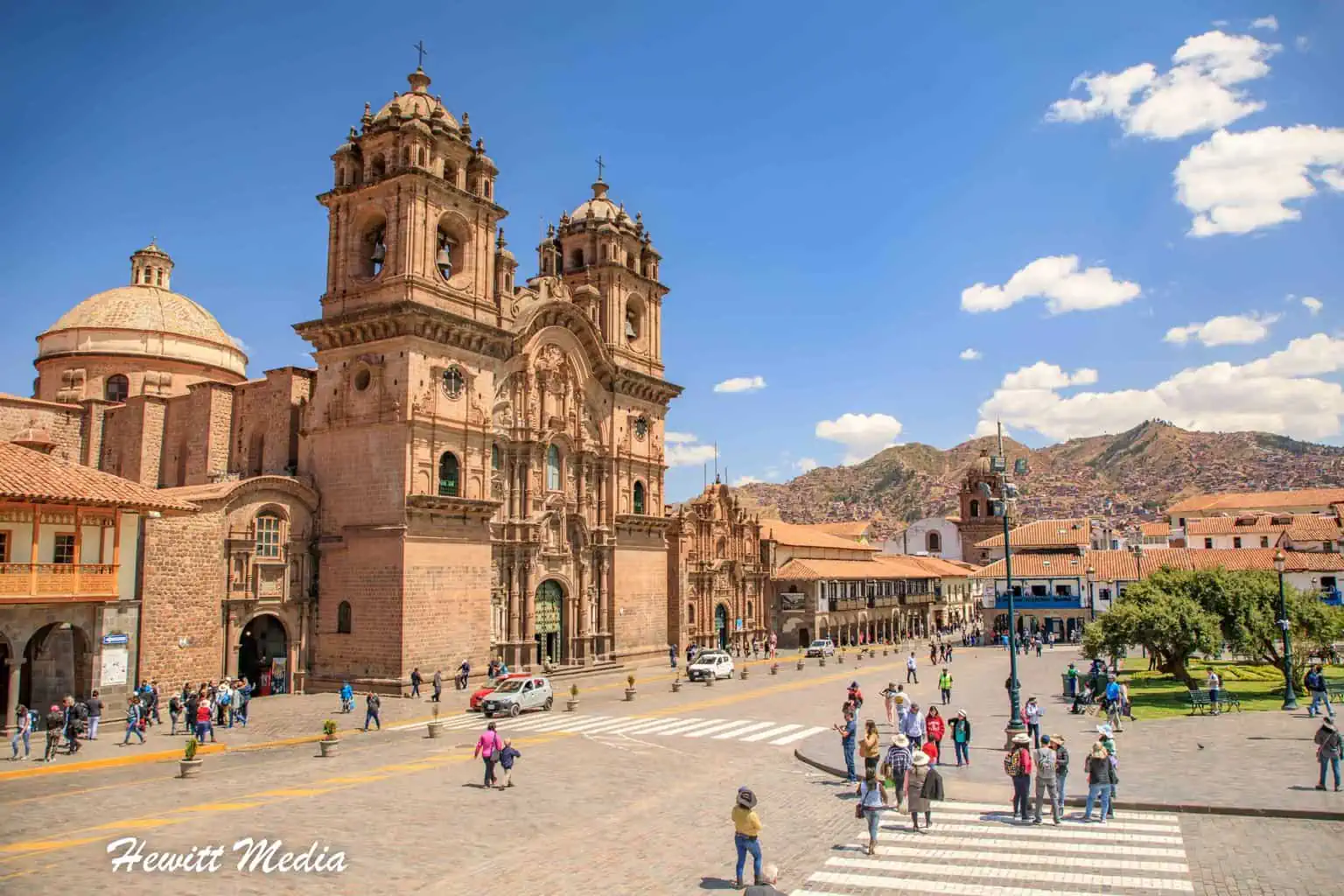
In this Cusco Peru visitor guide, I am going to give you all of the information you need to plan a successful trip to Cusco, Peru. I cover the best times to visit and the best ways to get there so that you can maximize what you can see and do on your trip. In addition, I outline the top things to see and do while you are there and where the best places to stay and eat are. With this information in hand, you can be confident that your trip to Cusco will be one that you remember for the rest of your life.
Cusco Visitor Guide Navigation Menu
At a glance.
Before you start making any travel plans, you need to be sure you meet the country’s entrance requirements. This includes all of the passport, VISA, and immunization requirements for Peru.
In addition, you need to make sure you have a clear understanding of what languages they speak in Peru. This way, you can plan any translation needs you may have. Not only that, but you will need to know what currency they use in Peru. Knowing this, you can plan to exchange currency before your trip if necessary.
I have included some of this key information in my Cusco , Peru visitor guide below for you to review as you start to make your travel plans.
Passport Requirements

Before you can travel to Peru, you need to make sure you meet all of the country’s entrance requirements for visitors. One of the most important requirements that you will need to meet is the passport requirements for Peru. To assist you in preparing to meet this requirement, I have linked to my guide on Peru’s entrance requirements below for you to review.
Travel Immunizations
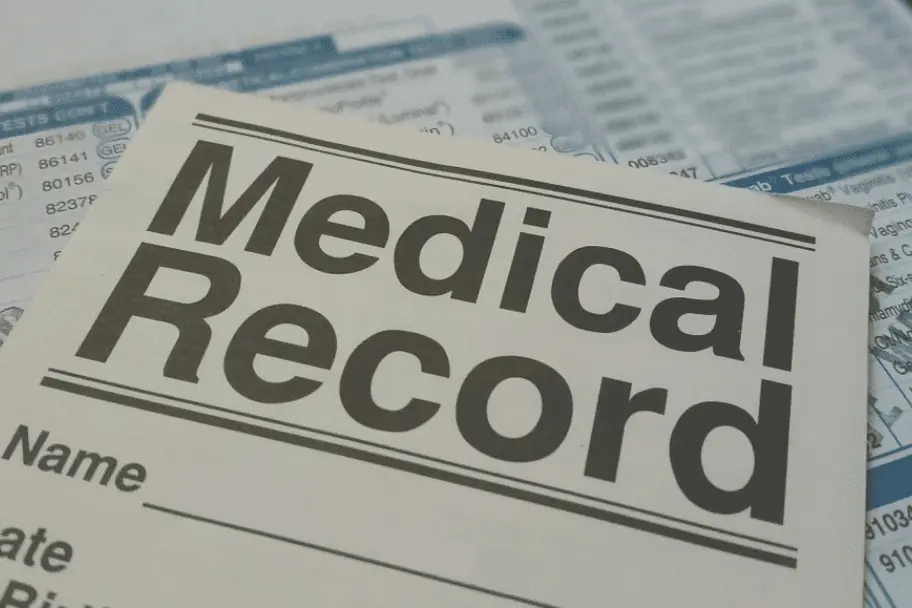
Another entrance requirement that you will need to consider before traveling to Peru is the country’s vaccination requirements. Being properly vaccinated is not only important to protect yourself, but to also protect others.
Peru Travel Vaccinations
If you have questions on which vaccinations are required and recommended for travel to Peru, I have linked to my guide on Peru’s entrance requirements below for you to review. This guide includes all of the vaccine recommendations for travel to Peru.
Travel Insurance
Before you head to Peru, I would recommend that you purchase travel insurance. You will want to have this in case something happens and you have to either postpone or cancel your trip. It would also be a great idea to purchase emergency medical evacuation insurance . Should an emergency occur and you need to be medically evacuated from the country, that could cost you tens of thousands of dollars.
Altitude Tips
One of the things you need to be acutely aware of when you visit Cusco is the altitude of the area. The city of Cusco sits at an altitude of 11,152 feet (3,399 meters), which is a much higher elevation than many travelers are used to. For some people, this high elevation can be a bit much. People may experience shortness of breath, headaches, and even dizziness at these elevations. If you are suffering from pre-existing medical conditions such as a bad heart, the higher altitude can even be deadly. In extreme cases, people have even suffered from acute altitude sickness and even death from the altitude. You can protect yourself by preparing for the high altitude by following these tips:
- Always stay hydrated.
- Take time to acclimate to the higher altitude. After arriving in Cusco, stay a few nights in the Sacred Valley (which sits at a much lower elevation). The city of Pisac sits at 6,730 feet (2,050 meters). This will allow your body time to adjust to that altitude before going back to Cusco and adjusting to that elevation.
- Talk to your doctor about an Acetazolamide prescription. This medication is used to treat eye pressure for those suffering from glaucoma and can also decrease the painful effects of high-altitude headaches.
- Try coca leaf tea to relieve altitude symptoms. It is a local remedy for altitude discomfort that locals swear by. Most hotels in Cusco will offer the tea complimentary.
- Book a hotel in Cusco with pumped-in Oxygen. Most of the nicer hotels in Cusco will pump Oxygen into their hotel rooms. This is a great way to minimize the effects of the altitude when visiting.
- If you feel symptoms of altitude sickness and they don’t go away with any of the above remedies, get down to a lower altitude immediately. Your health isn’t worth the risk. Get to a lower altitude until you feel better and then consider returning back to Cusco.
Packing Tips
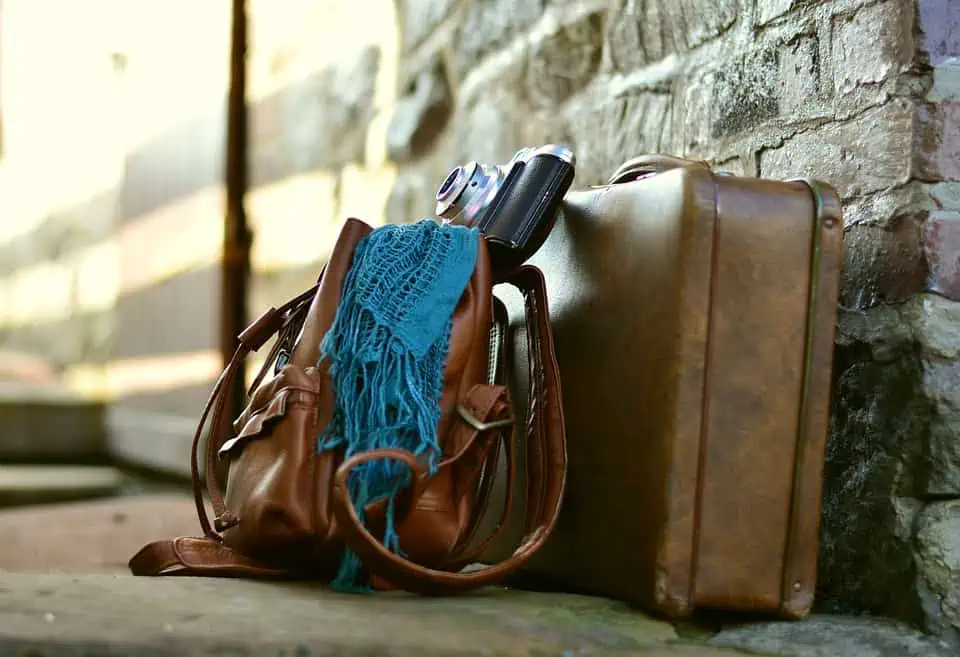
Before you start packing for your trip to Peru, you will want to make sure you have all of the gear that will keep you organized, comfortable, and safe on your trip. This is especially true if you are planning on visiting Machu Picchu and hiking the Inca Trail. To help you out, I have included links to some comprehensive packing resources I created for you to review in my Cusco Peru visitor guide below.
Top Things to See and Do in Cusco
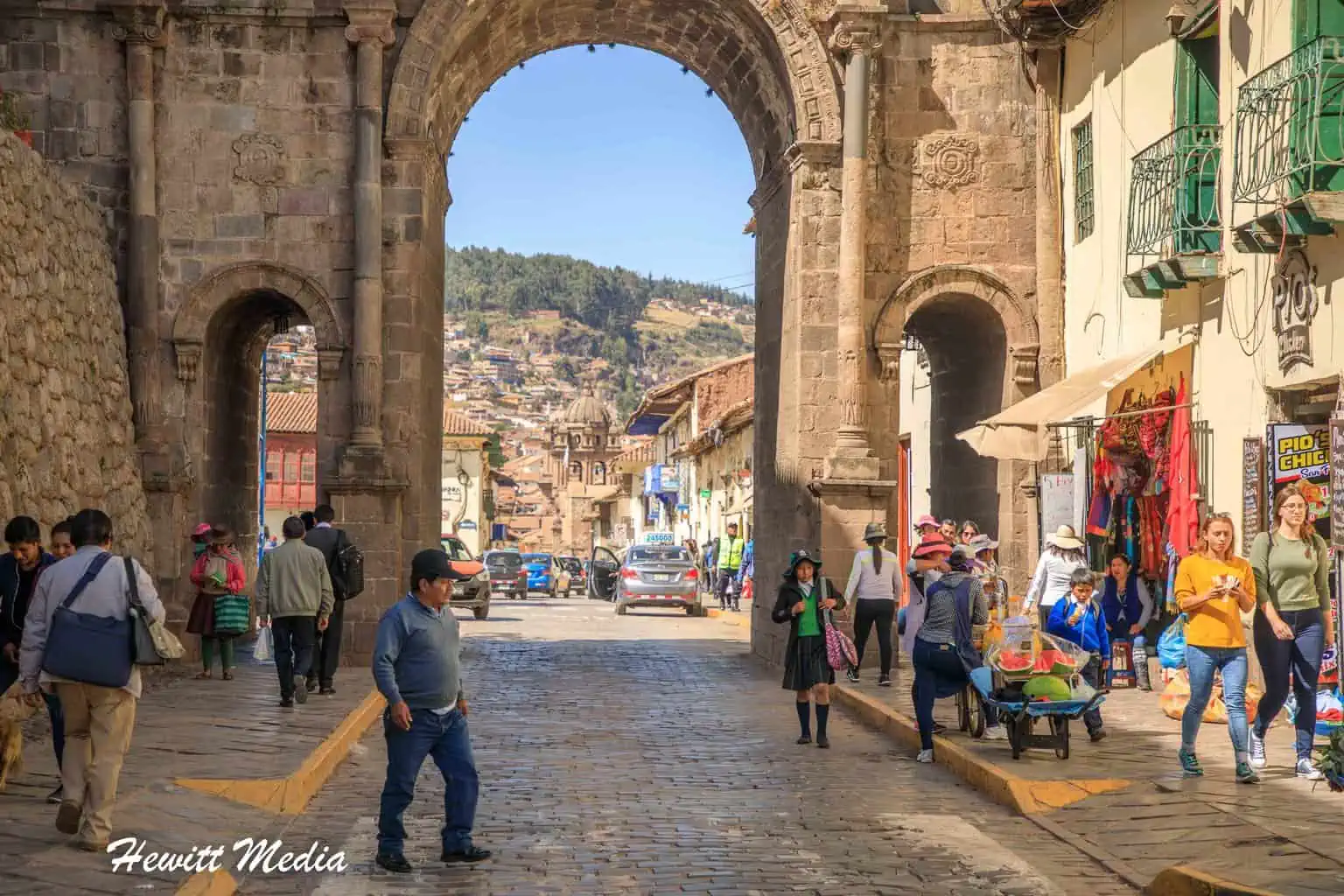
While most travelers who visit Cusco do so on their way to Machu Picchu, the Rainbow Mountain, or one of the other high-profile tourist destinations in the area, there are also several amazing things to see within the city itself. To assist you in filling out the itinerary for your trip, I have included a list of the top things to see and do within and around Cusco in my Cusco Peru visitor guide below.
Catedral del Cuzco
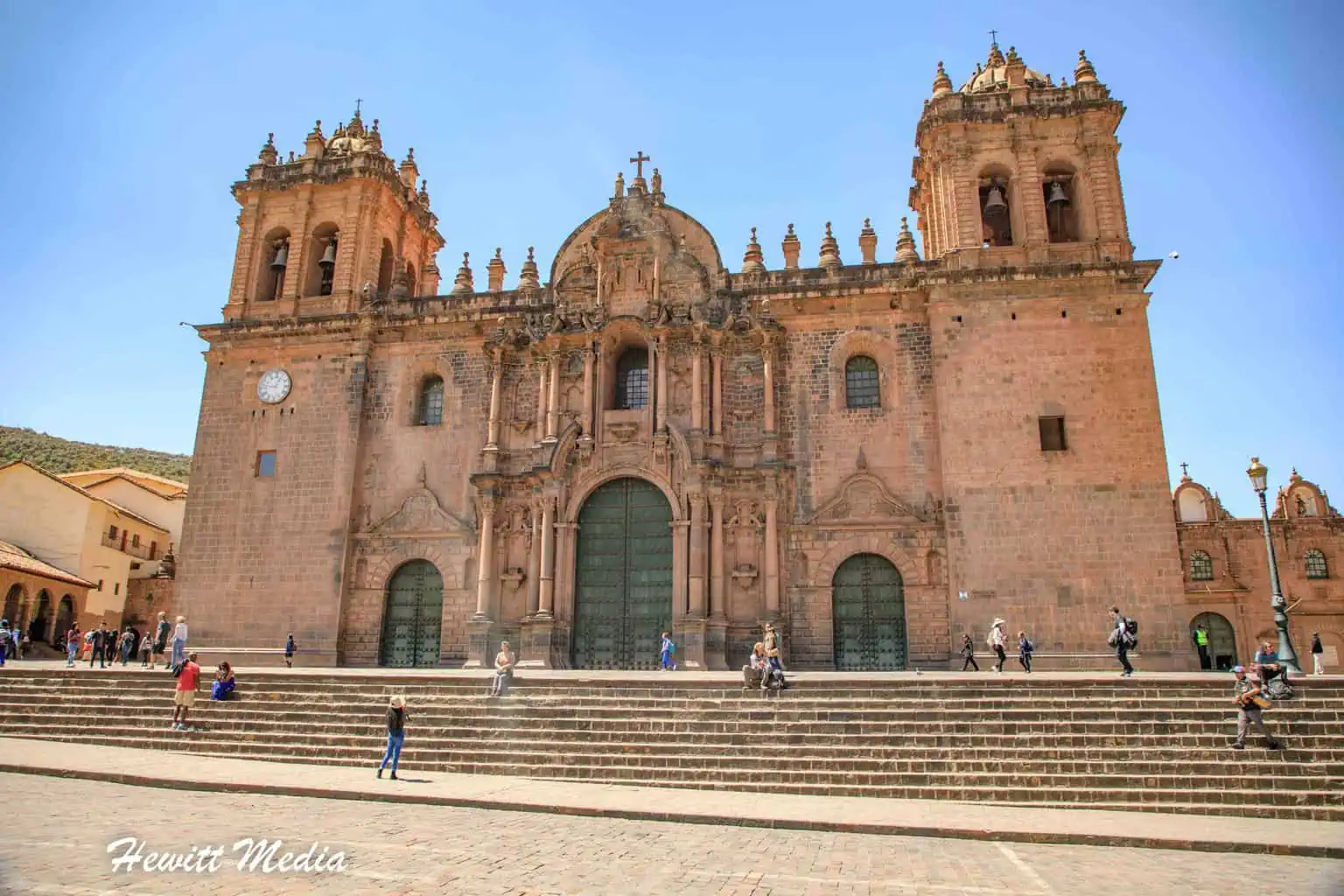
Located in the Plaza de Armas in the historical center of downtown Cusco, the Catedral del Cuzco, which is also known as the Cathedral Basilica of the Assumption of the Virgin, is the main Roman Catholic cathedral in the city. It was constructed between 1560-1654 and was designated as a UNESCO World Heritage Site in 1983. In addition to being an important religious institution in the area, the cathedral has also become a large repository of colonial art in Cusco.
Iglesia De La Compañia De Jesús
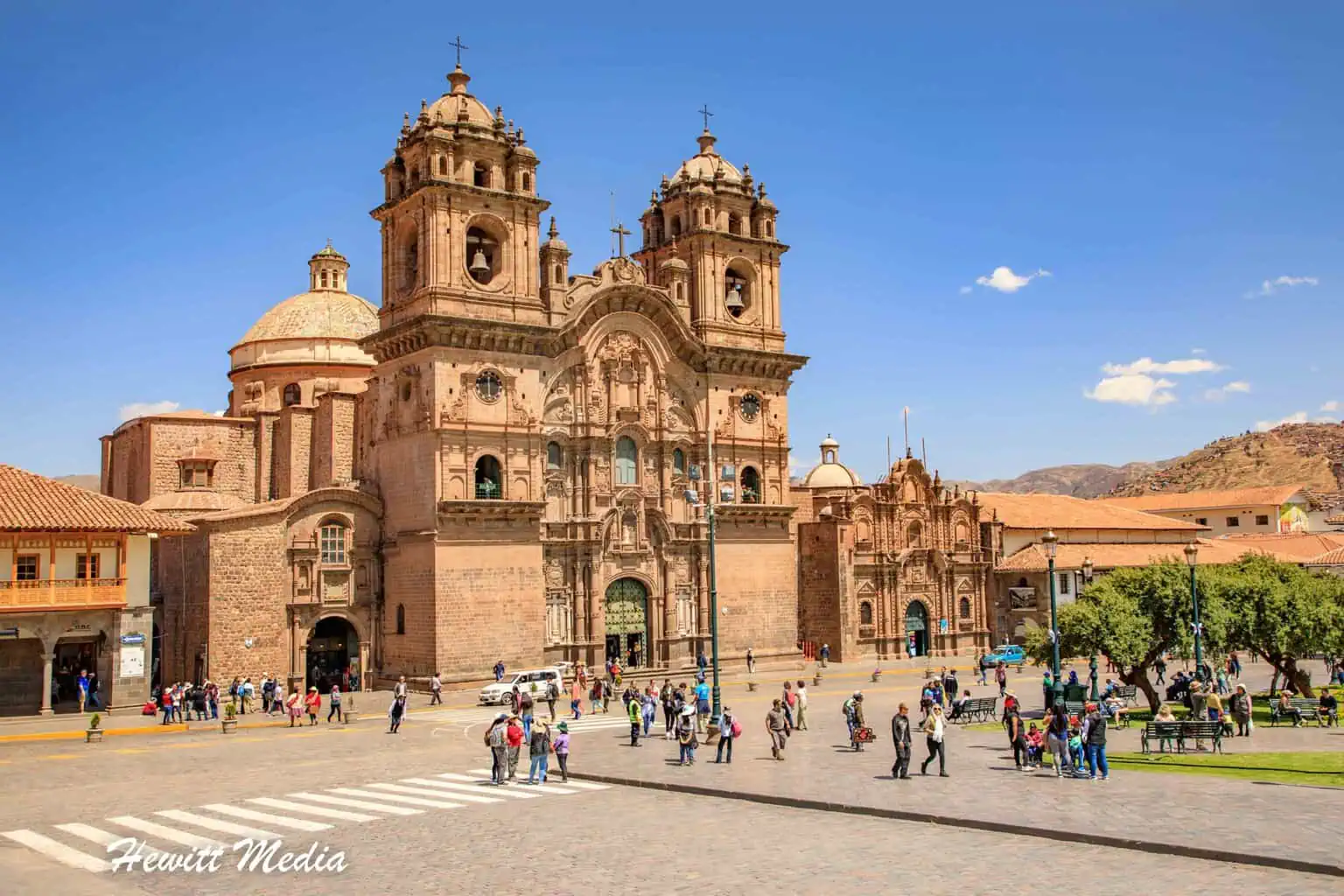
Constructed on top of an ancient Incan palace in the Plaza de Armas, which sits in the historical center of the city of Cusco, the Iglesia de la Compañía de Jesús translates to mean the Church of the Society of Jesus. This historic Jesuit church was constructed beginning in 1576, but badly damaged by an earthquake in 1650. The rebuilt church that you see today was completed in 1668. The beautiful Baroque architecture of the church is very distinct and is the main reason why the church is widely regarded as one of the prettiest in Peru.
Plaza de Armas
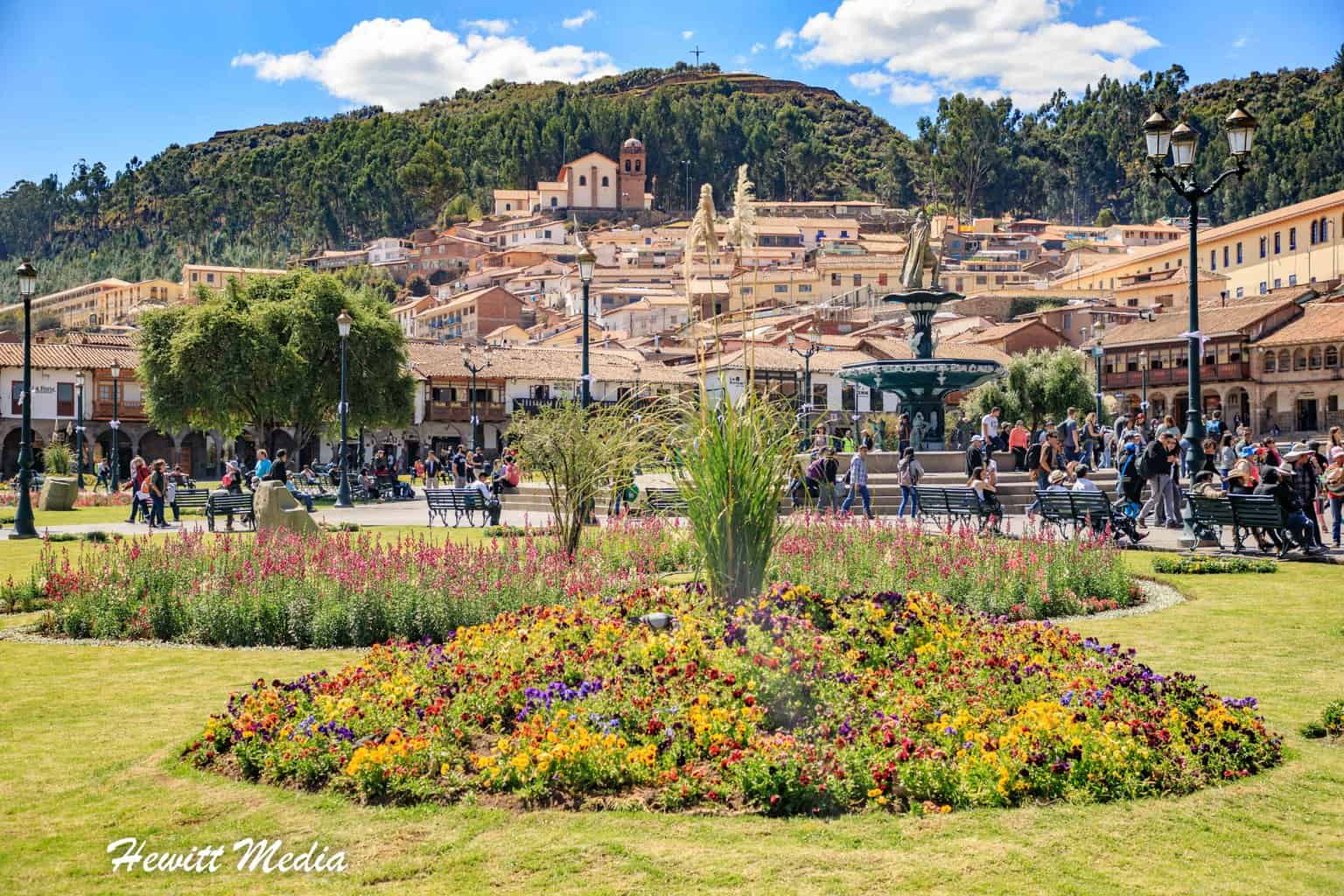
Widely considered to be the geographical and cultural hub of the city of Cusco, the Plaza de Armas has been considered the city center of Cusco dating all the way back to the days of the Incas. Today, it is located in what is referred to as the historical center of Cusco. Known as the “Square of the Warrior”, the plaza contains some of the city’s most prominent buildings.
This includes the Cusco Cathedral, the Church of the Society of Jesus, and the public university. From the plaza, you can see the Cristo Blanco statue high up on the hills overlooking the city. I would definitely recommend you spend a good deal of time exploring the Plaza de Armas and the surrounding buildings.
The San Pedro Market
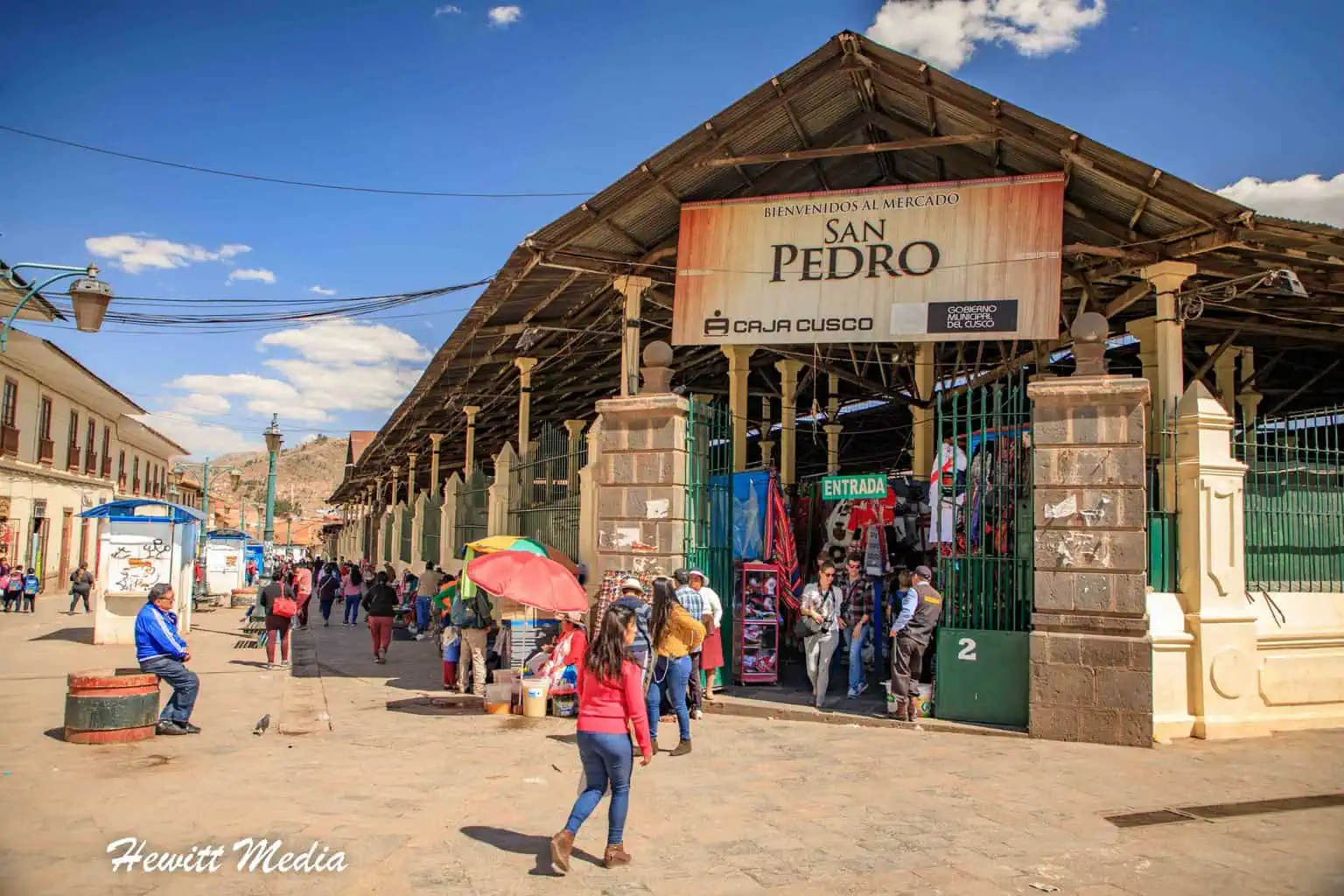
If you are looking to see what the people in Cusco like to shop for and eat, or you are just in the mood to do a little shopping for some souvenirs, then I would definitely recommend making a stop at the San Pedro Market. Vendors within the market sell a wide variety of fresh goods, including fruits, fruit juices, meats, produce, fabrics, dolls, and other gifts.
If you are looking for a quick bite to eat, I would suggest stopping into the market to grab one of the fresh empanadas (meat or cheese-filled pastry) or salchipapas (friend sausage and potatoes). They are amazing! If you are interested in seeing more of the market, I have some more pictures taken inside the market in my photo gallery at the bottom of this guide.

Iglesia de San Pedro
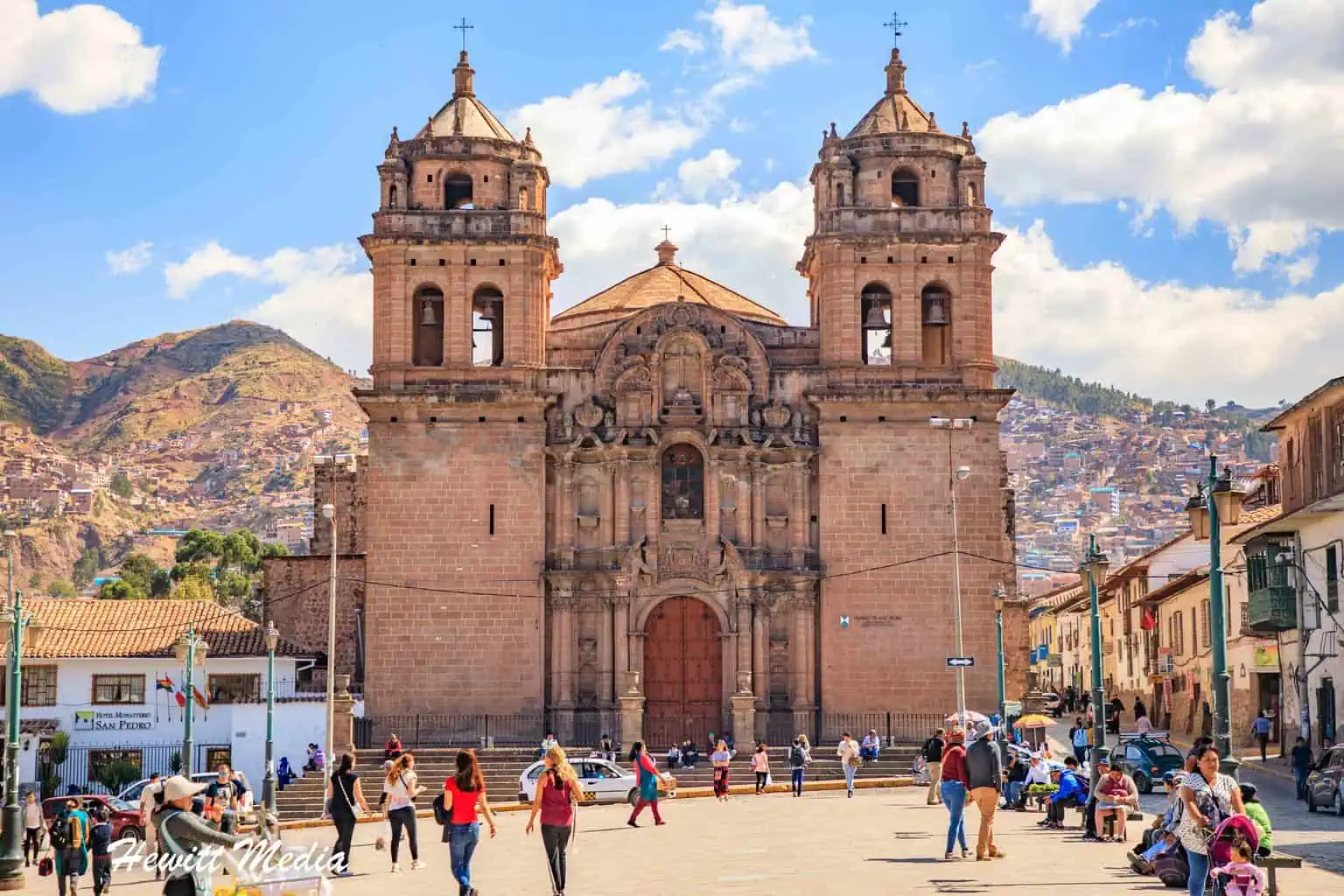
If you love to visit old, beautiful churches when you travel, then you will also want to make sure you visit the Iglesia de San Pedro or St. Peter’s Church, while in Cusco. While not as large or as intricate as the more well-known churches in the Plaza de Armas, St. Peter’s Church is a pretty and well-kept church that is worth seeing in person. It is very close to the San Pedro Market, so I would stop in and check it out on your way to do a little shopping.
Cristo Blanco
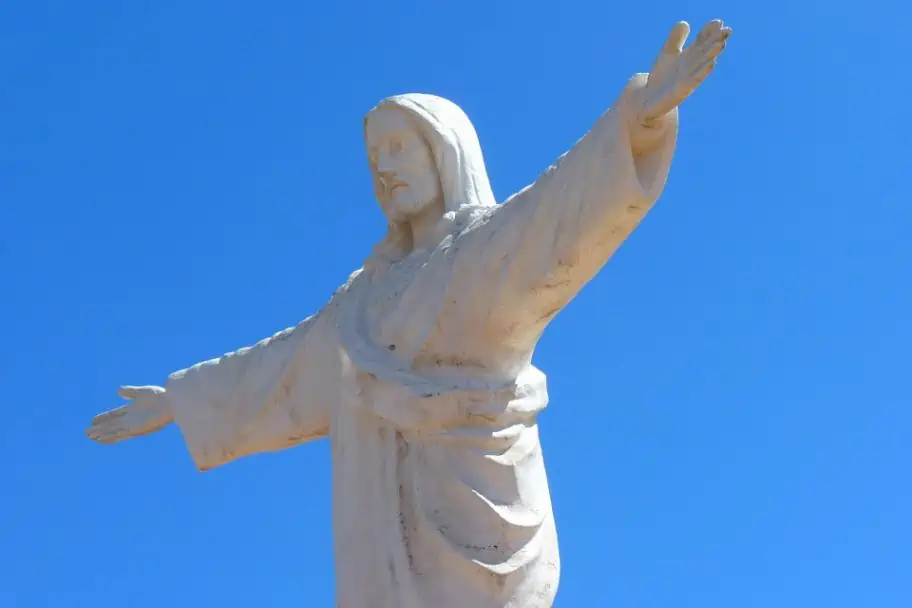
While not as large as the Christ the Redeemer statue in Rio de Janeiro, Brazil, the Cristo Blanco statue on the outskirts of Cusco is one of the more popular landmarks for tourists. Sitting at 26 feet high (roughly 8 meters), the statue can be seen from all the way down in Cusco’s historic city center. In fact, one of the best places to see the Cristo Blanco from the city of Cusco is the historic Plaza de Armas. If you would like a closer view of the statue, it is about a ten-minute walk from the Saqsaywaman ruins (see below).
Saqsaywaman
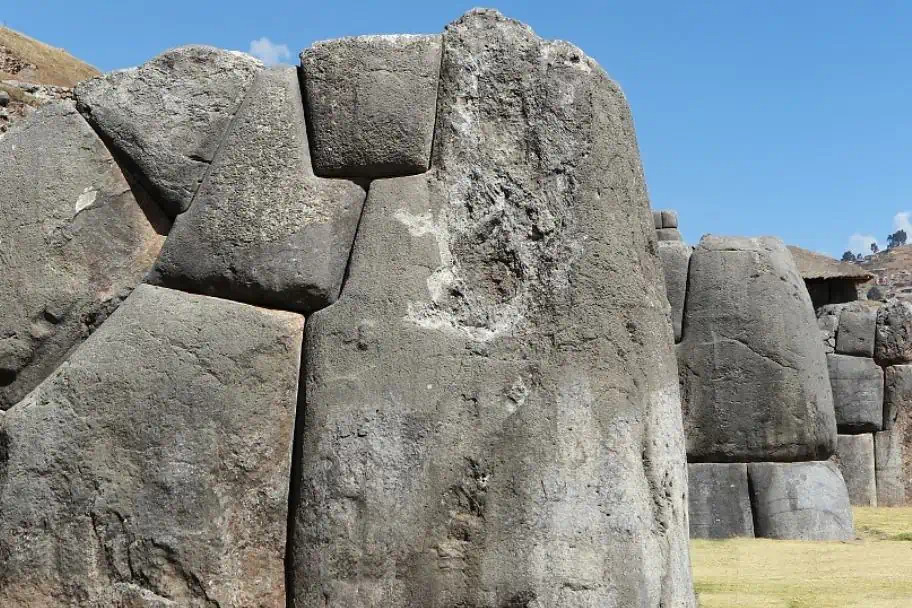
Constructed by the ancient Killke culture in roughly the year 1100, this stone complex was later added to by the Incans in the 13th Century. The stones used in the high walls of the structure were carefully moved, cut, and mortared to fit precisely with the stones around it.
Seeing the site first-hand gives you a great idea of just how much ingenuity the Incans had centuries ago. The site is remarkably well preserved, much to the thanks of being named a UNESCO World Heritage site in 1983. Machu Picchu may get all of the glory, but other ruins like Saqsaywaman throughout the Sacred Valley are definitely worth visiting as well.
Visit Machu Picchu
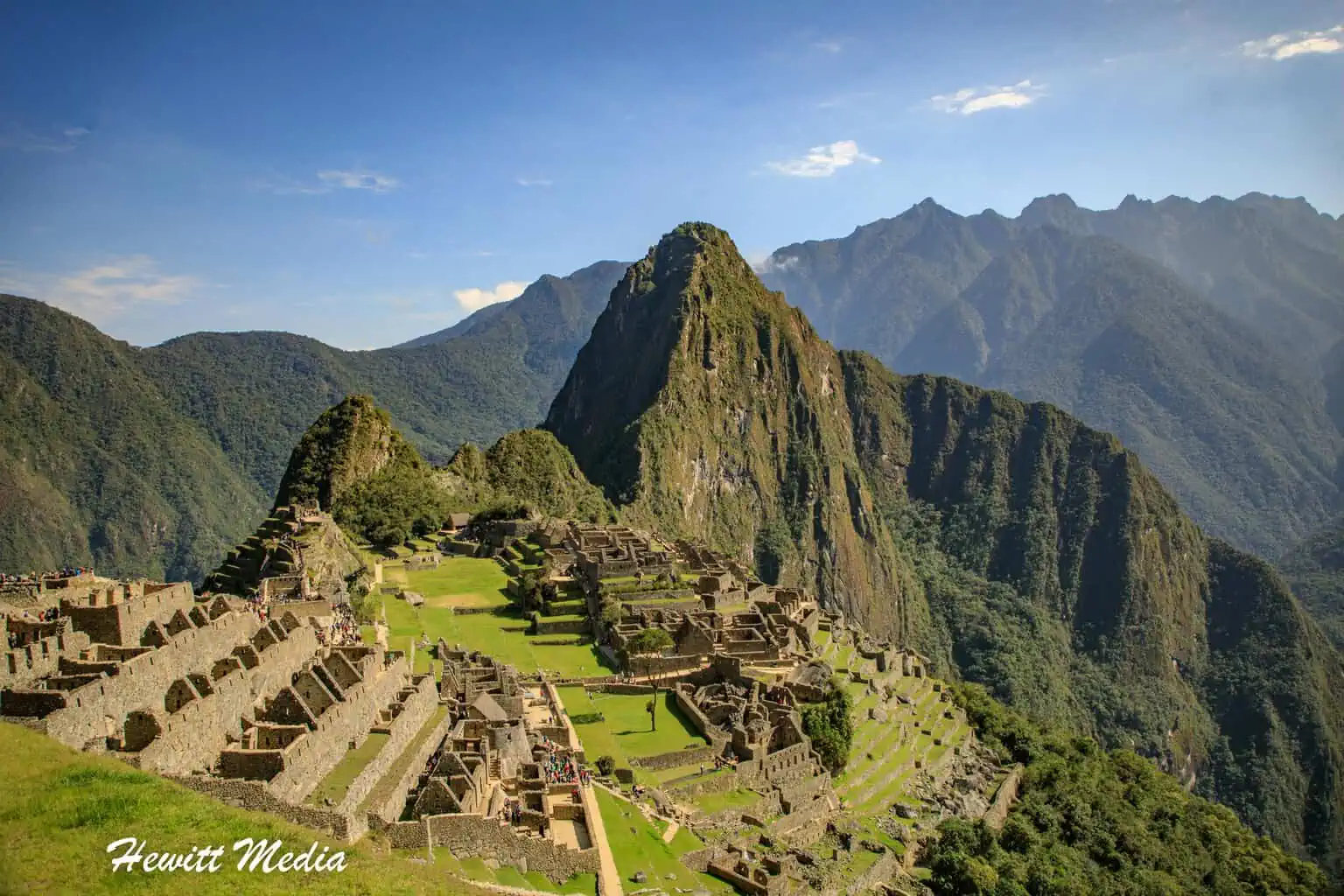
For most of you reading this guide, I am guessing the main reason you are visiting Cusco is as a launching spot for your hike of the Inca Trail and visit to Machu Picchu. As one of the new Seven Wonders of the World, Machu Picchu is without a doubt one of the top tourist destinations in all of South America, if not the entire world. If you would like more information on how to visit Machu Picchu from Cusco, I have included a link to my Ultimate Machu Picchu Visitor Guide for you to review below.
Climb Huayna Picchu

If you are looking for some added adventure during your visit to Machu Picchu, I would suggest exploring the option of climbing Huayna Picchu, which is the mountain you see behind the ruins of Machu Picchu in all of the famous photographs.
The views of the ruins and the surrounding Andes Mountains from the top of Huayna Picchu are out of this world. For more information on how to capture these amazing views and the other out-of-this-world vistas that you will see at Machu Picchu, please refer to my Machu Picchu Photography Guide linked below.
Hike the Inca Trail
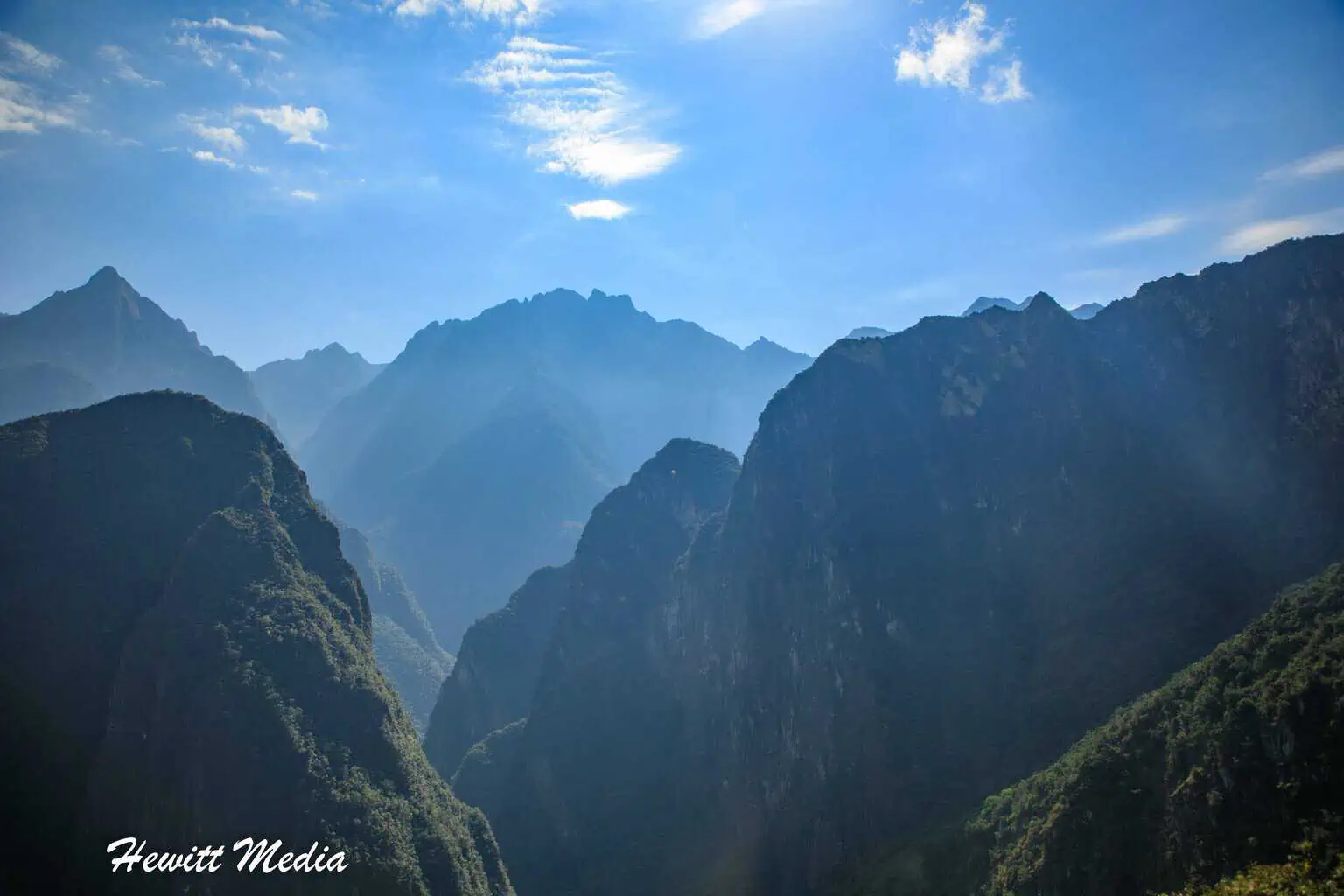
One of the ultimate adventures that you can take, not only in the Cusco area but in the entire world, is to hike the Inca Trail on your way to Machu Picchu. It is one of this world’s greatest multi-day hikes and certainly one of the world’s most beautiful as well.
If you would like to hike the Inca Trail, you will need to have a licensed guide with you by law. For this reason, and to make sure that you have the equipment and clothing that you will need for the hike, I recommend that you reference my Ultimate Guide to Hiking the Inca Trail referenced below before planning your trip.
Visit the Vinicunca Rainbow Mountain
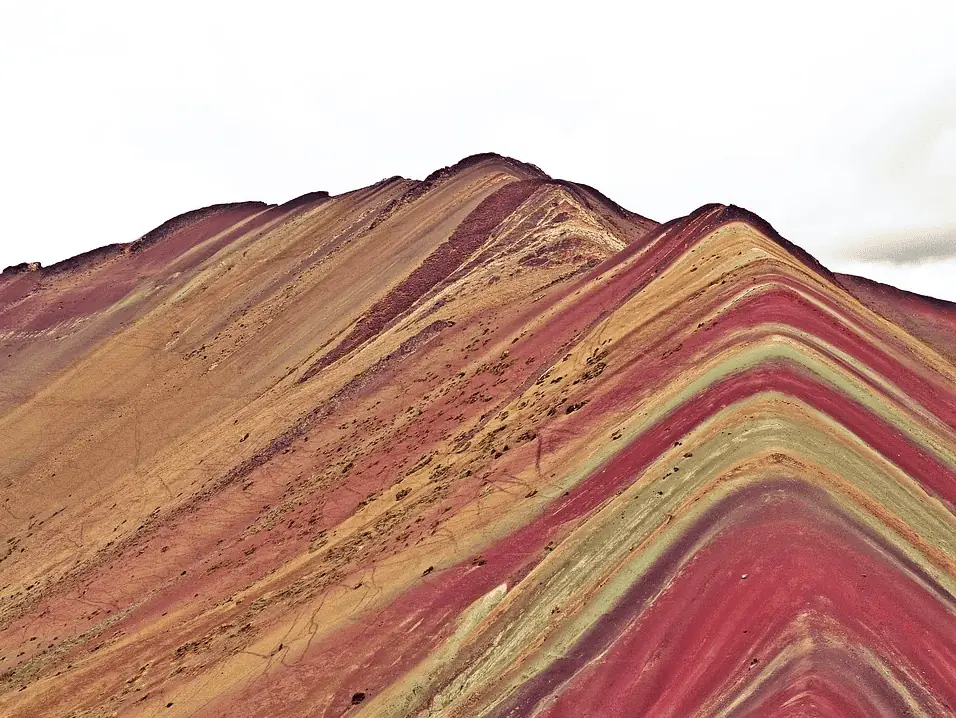
Referred to as Montaña de Siete Colores or Montaña de Colores in Spanish, Vinicuanca is a 17,000-foot (5,200 meters) peak in the Andes Mountains near Cusco that is world-famous for its multi-colored soil near the peak. Accessing the mountain requires a two-hour drive, arranged by your guide, from Cusco and then a roughly 3-mile hike.
There are few natural landscapes in this world as unique as the Rainbow Mountain, which is why it is such a popular tourist spot. if you plan to visit the mountain, I would strongly recommend that you properly plan for the altitude. I have included some tips at the beginning of this guide that should be helpful to you.
How to Get to Cusco
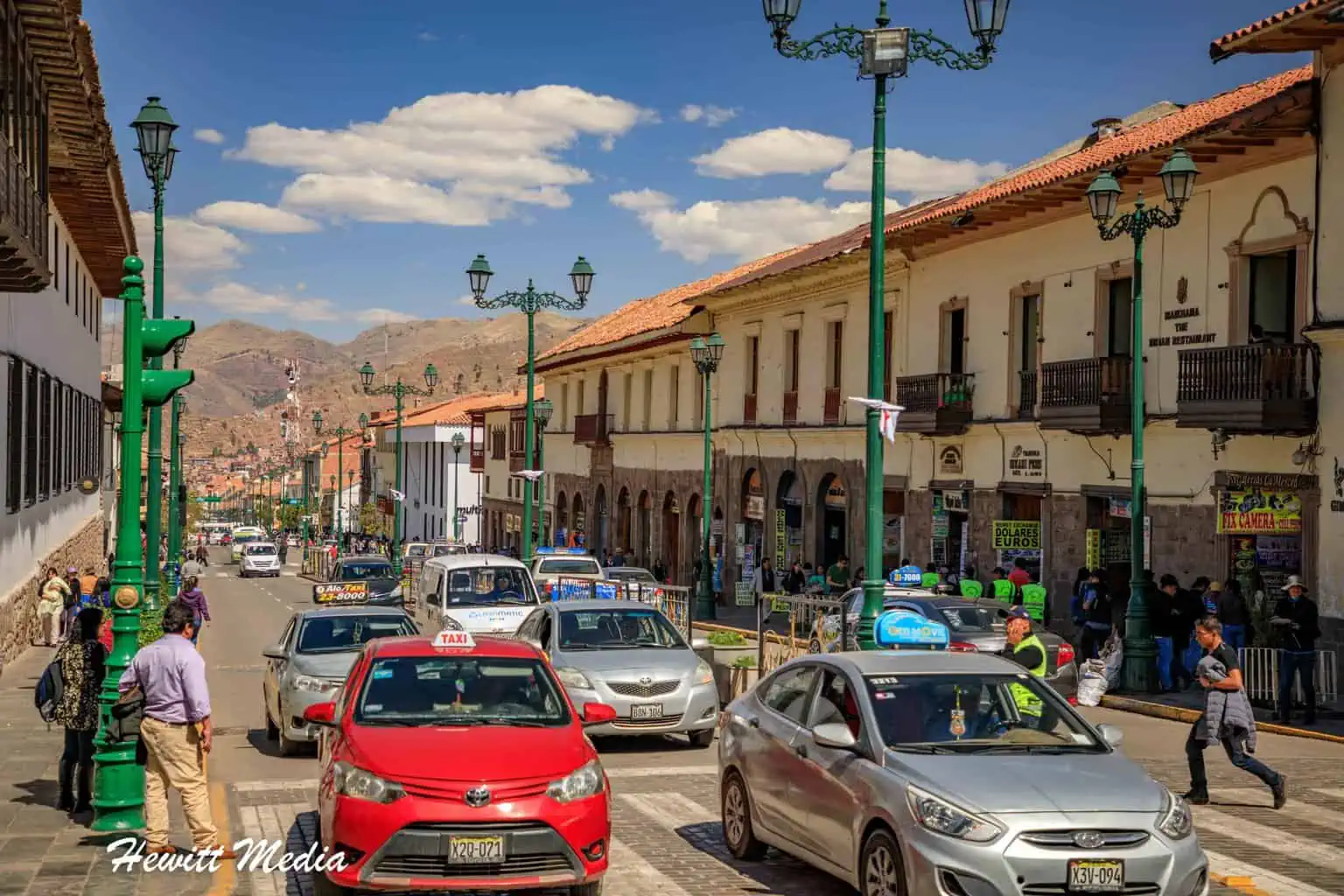
If you are visiting Cusco from outside of Peru, the quickest way to get there is to fly into the Alejandro Velasco Astete Airport (CUZ) in Cusco. If you are flying into Lima, Peru before you stop in Cusco, the quickest way to get from Lima to Cusco is by plane. It is a quick flight that will take about 1.5 hours and you can typically find some reasonable rates with local airlines like Avianca and Latin American Airlines.
Trains to Cusco
If you have some extra time to get there and are looking to save some money, there are more affordable travel options for getting from Lima to Cusco. There aren’t any trains that will take you directly between the two cities, but you can take a bus from Lima to Arequipa and then to Puno. From Puno, you can take a train to Cusco. The train ride from Puno to Cusco is beautiful, but it will take you roughly 8-9 hours to get there.
Bus Rides to Cusco
The cheapest option for getting from Lima to Cusco is to take a bus the whole way. It will take you between 18-27 hours to travel between the cities by bus, but you can also save a considerable amount of money if you have the time. Bus tickets with Cruz del Sur and Ormeño (the two most reputable bus companies) run between $25-60 USD. I have listed the two routes you have to choose from in my Cusco Peru visitor guide below, along with their advantages and disadvantages, for you to review.
Lima-Nazca-Abancay-Cusco
This is the quicker route (it takes between 18-21 hours to travel between Lima and Cusco), but it also has a reputation for being less safe.
Lima-Nazca-Arequipa-Cusco
This route is definitely longer and will take you between 24-27 hours to get from Cusco to Lima, but it has a reputation for being the much safer route. As a bonus, you can also see the infamous Nazca Lines (pictured below) on your way to Cusco.
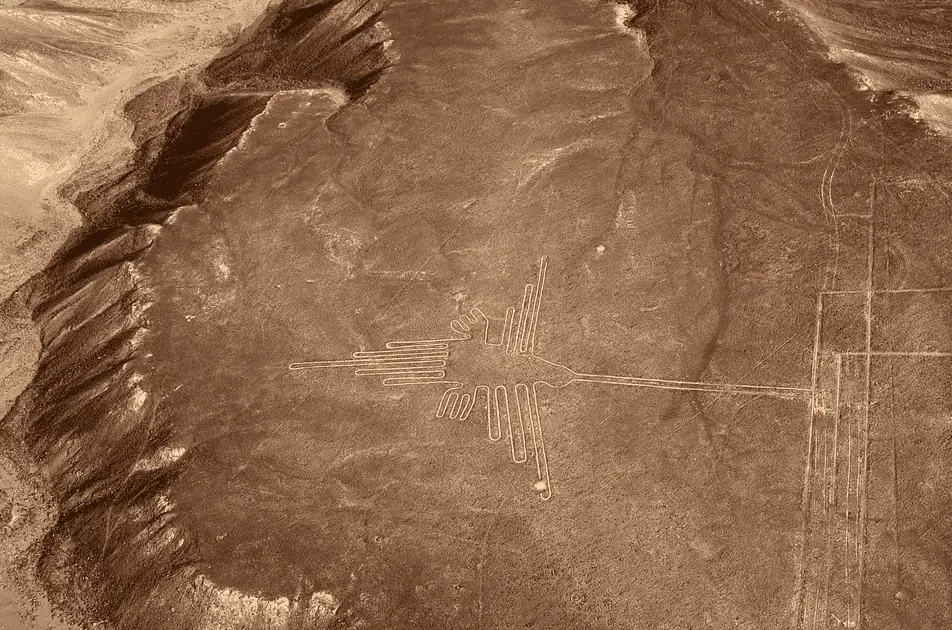
Hop on and off the bus
If you would like to do some additional exploration of Peru on your way from Lima to Cusco, you can also explore using Peru Hop , which is a hop-on-hop-off tour company that specializes in tourist stops throughout Peru. For instance, you can explore several interesting regions on your way to Cusco from Lima by taking the following route:
Lima – Paracas – Huacachina – Nazca – Arequipa – Puno – Cusco.
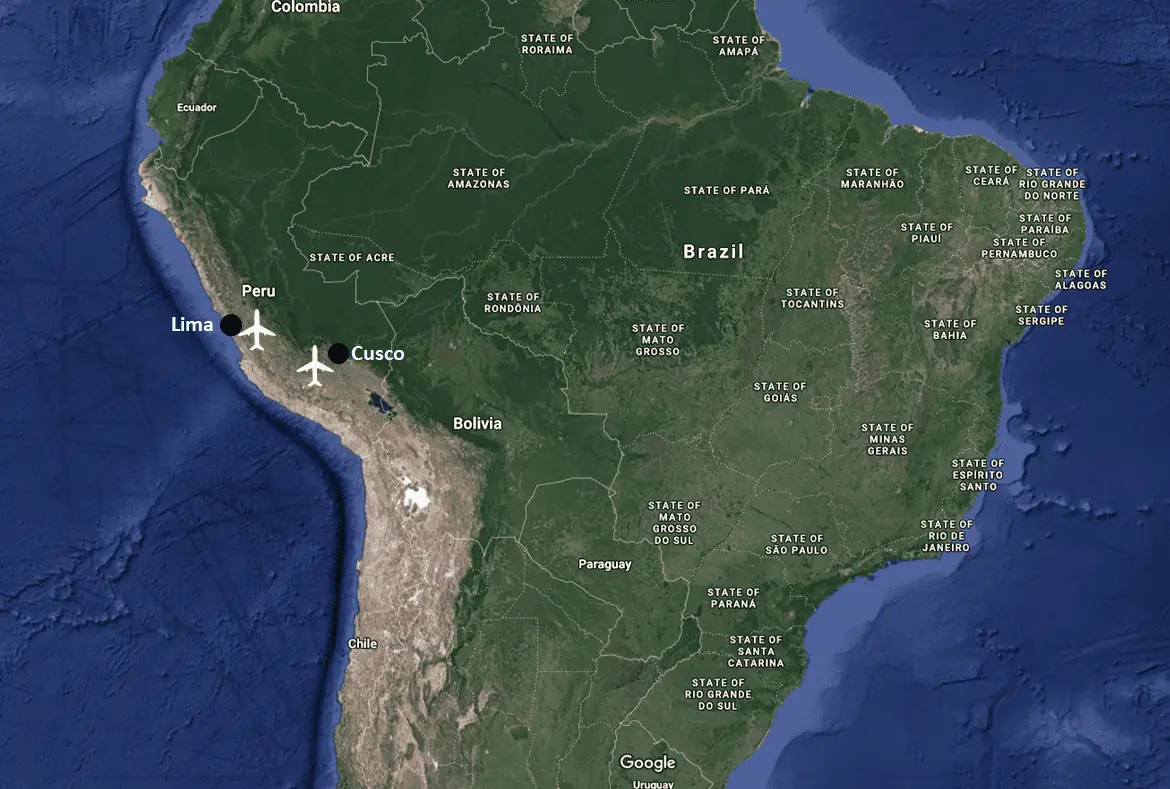
Best Times to Visit Cusco
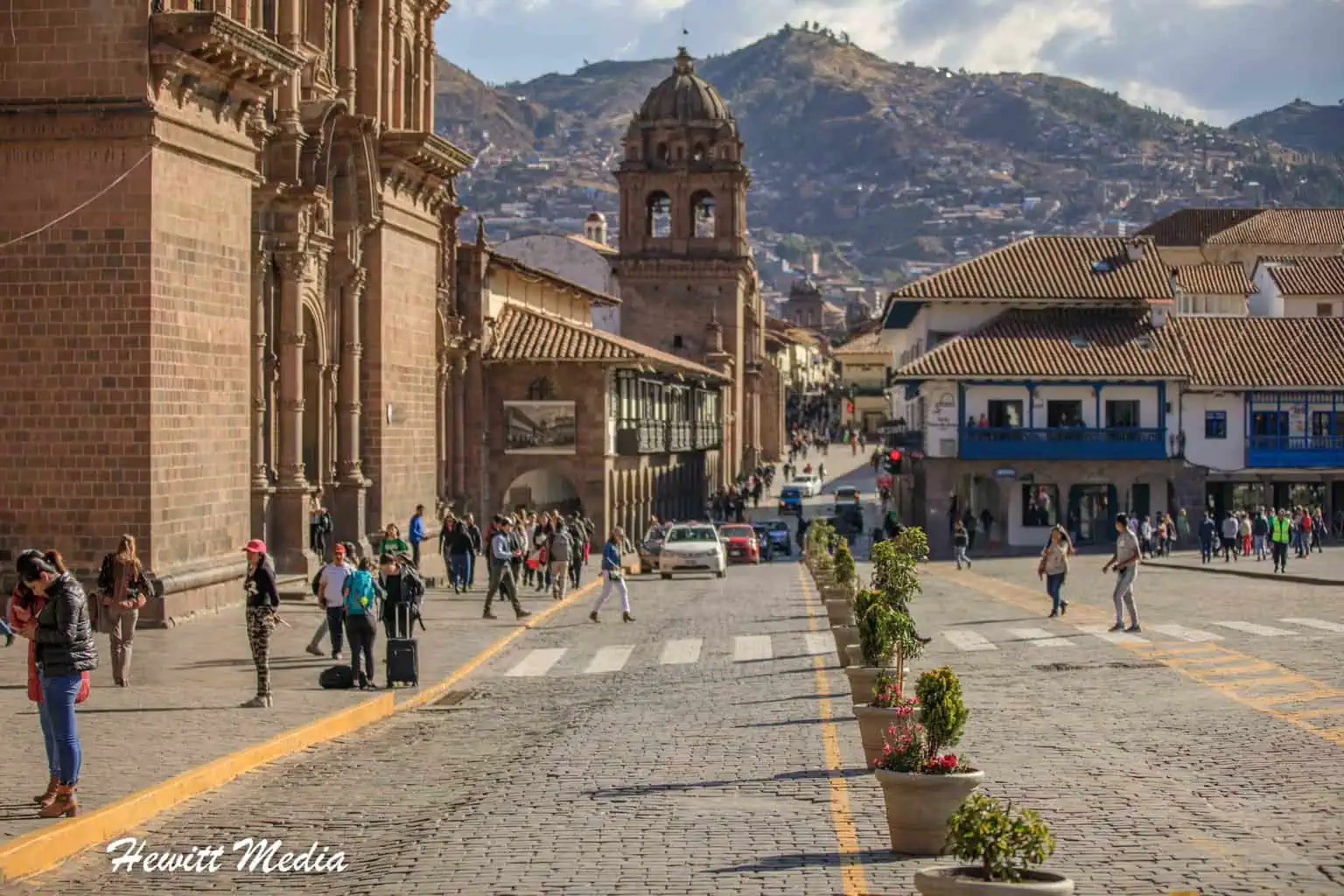
Average Temperature (°F)
As you can see in the chart below, the average high and low temperatures in the Cusco area are fairly consistent throughout the year. Because of the elevation, the average high temperature doesn’t get too hot at any point throughout the year.
Likewise, because of the area’s proximity to the Equator, the average low temperature doesn’t get too cold either, despite such a high elevation. This means that you can expect fairly comfortable temperatures no matter when you plan on visiting throughout the year.
Average Precipitation (Inches)
There are two distinct seasons in Cusco: The dry season, which runs from April to October, and the wet season, which lasts from early November until late March. The best time to visit Cusco and the surrounding area is definitely during the dry season because the skies are typically clear and the weather is dry.
During the wet season, it typically only rains a few hours during the day, but the mountains will be covered in a hazy fog for most of the day. As the day wears on the fog will dissipate, but I would avoid visiting during this time of year if you want to get really good photographs. If you must visit during the wet season, I would avoid the months of February and March as those months tend to be the wettest.
Where to Stay in Cusco
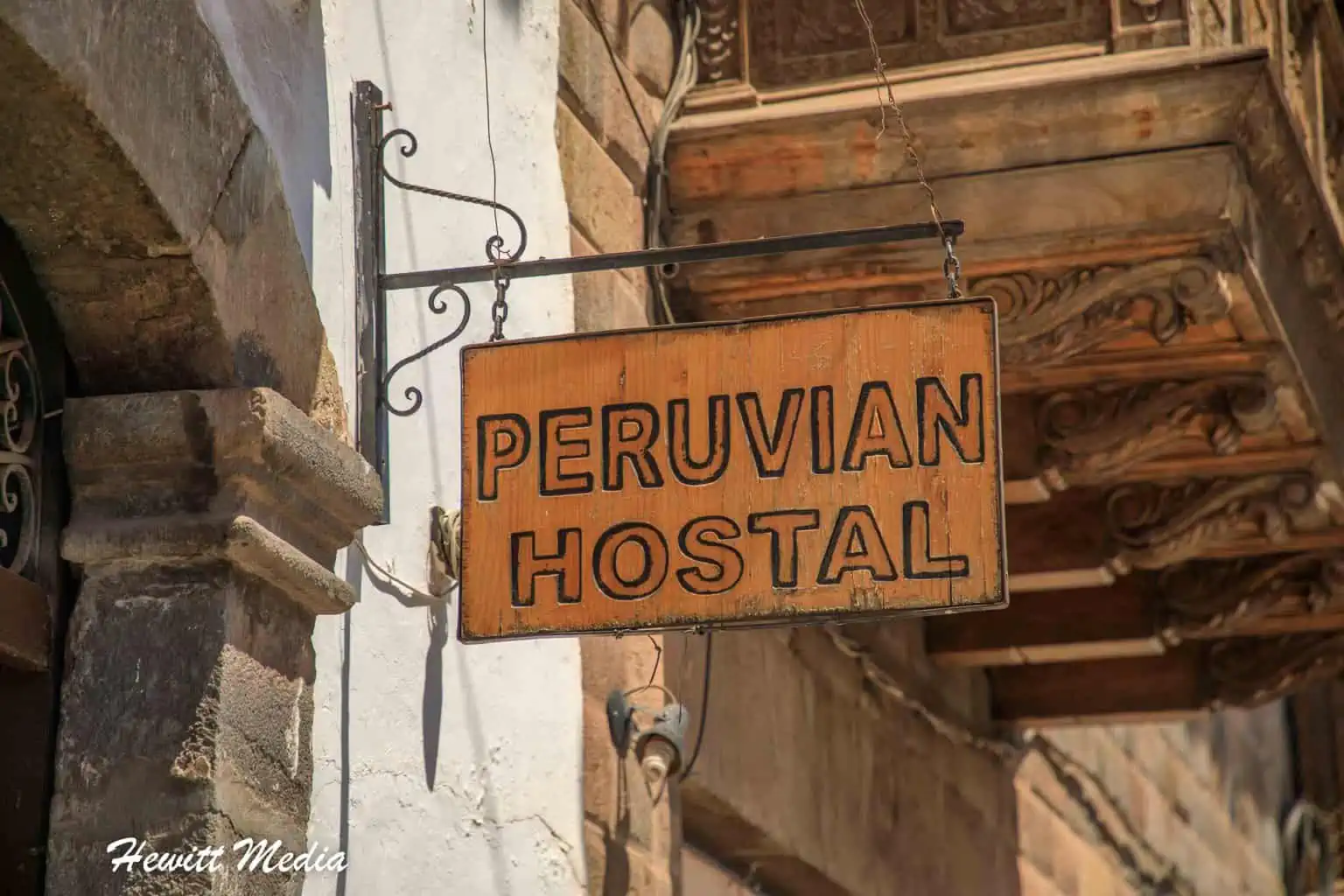
An important decision you need to make when planning your trip to Cusco is where you will stay. When you travel, the accommodations you choose are oftentimes amongst the biggest expenditures for your trip.
So, not only do you need to be comfortable, but you need to be able to afford to stay there. Finding the right accommodations for your trip involves looking at the amenities, the location, and most importantly, the price.
If you are starting to plan your trip to Cusco, you may be looking for some hotel and hostel suggestions. I included some great options at different price points in my Cusco, Peru visitor guide below. As always, don’t be afraid to expand your search to room-sharing sites such as Airbnb or VRBO if you aren’t finding a hotel or hostel that meets your needs.
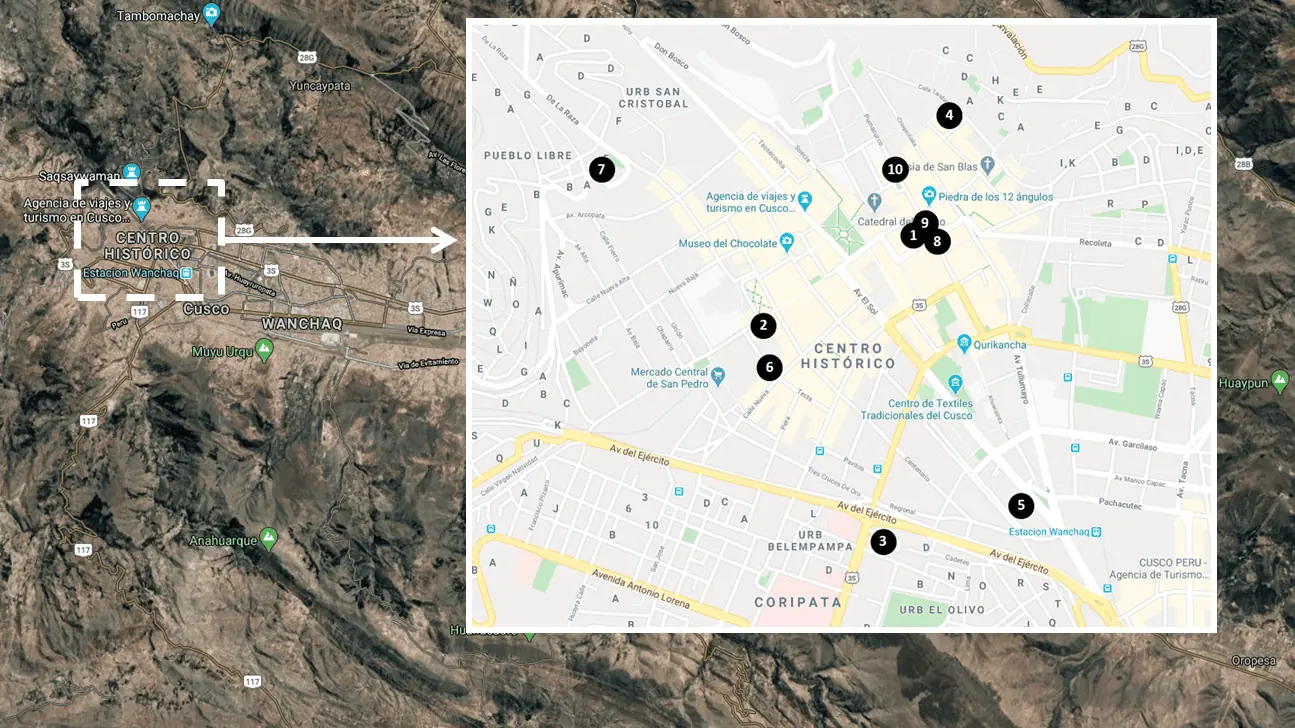
View Larger Map
Where to Eat in Cusco
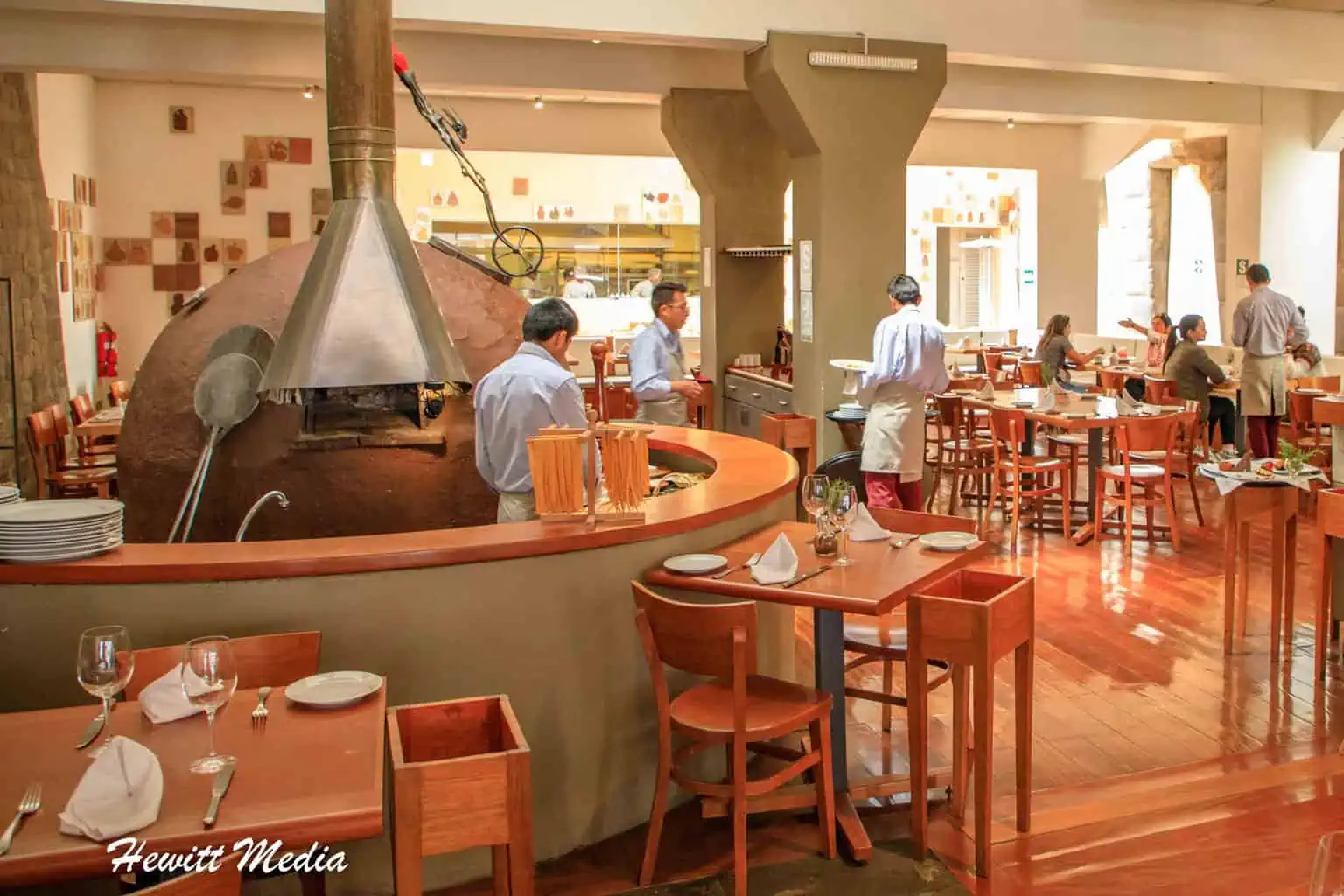
I knew the food would be good when I visited Peru, but I didn’t know just how much I would love the cuisine until I visited. There is a wide variety of restaurants in Cusco for you to try, so if you love to eat when you travel you won’t be disappointed. If you are looking for some restaurant recommendations for your trip, I have included some highly recommended options for you to review in my Cusco Peru visitor guide below.
Recommended Tours and Excursions in Cusco
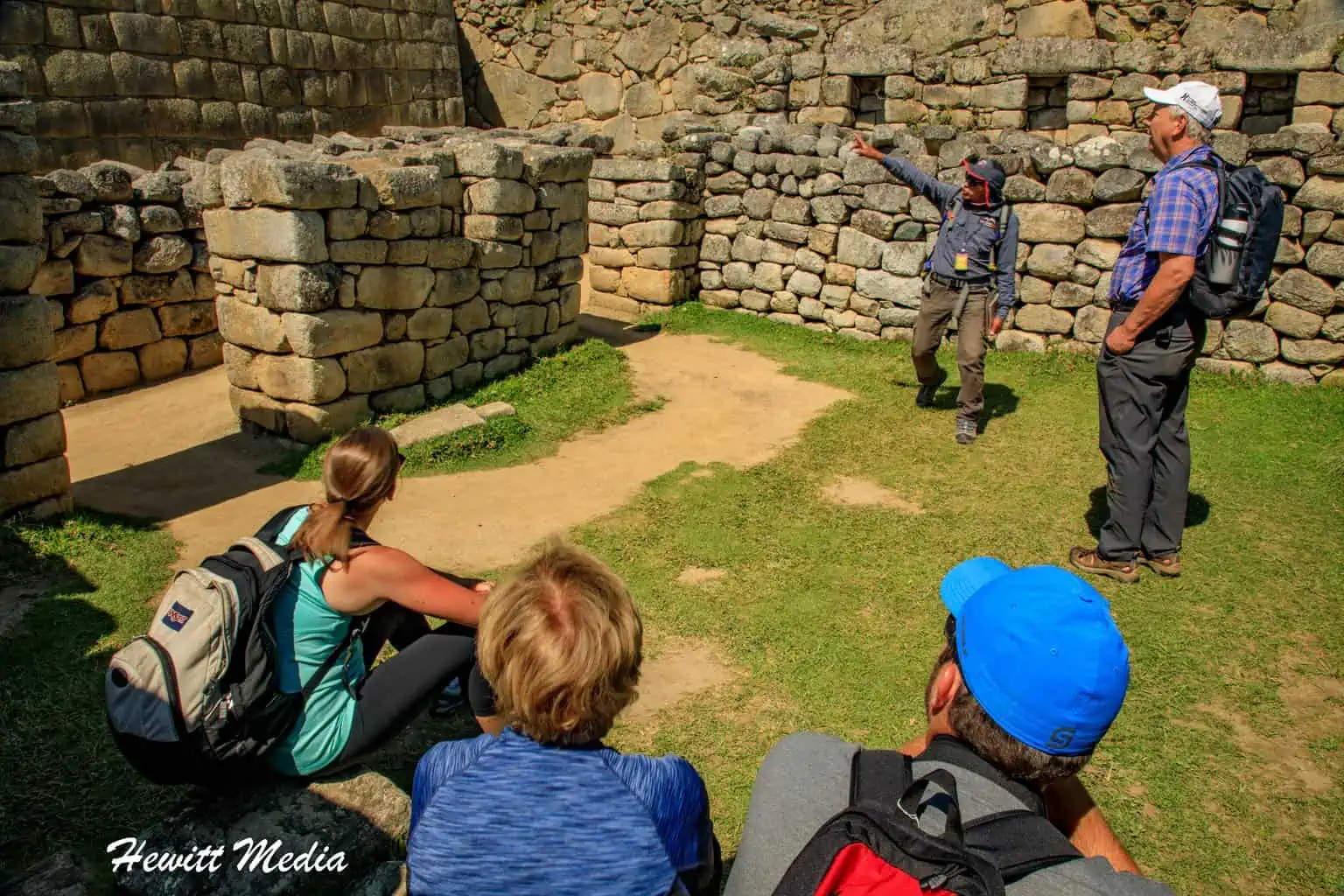
There is a seemingly endless supply of amazing things to see and do in the Cusco area, so you won’t have much trouble planning activities to keep you busy during your trip. If you are looking for some recommended excursions or tours to take while you are visiting, I have included links to some options for you to review in my Cusco Peru visitor guide below.
Cusco, Peru Photo Gallery
As an avid travel photographer, I was blown away by how beautiful the city of Cusco was. It seemed like something was amazing to photograph around every corner of the city. I have included some of the top photos I was able to take during my trip in my Cusco Peru visitor guide below.
If you would like to see more of my travel photography, I would also encourage you to give me a follow on Instagram . Putting this blog together to pass on my free guides, itineraries, and travel photography tips is a lot of work and your support in the form of a follow-on Instagram would be so very much appreciated!

Don’t Forget to Subscribe to My Adventures!
Type your email…

Let Me Help You Save On Your Next Adventure!
‘start exploring today’ merchandise available now.
Published by Josh Hewitt
Avid traveler and photographer who loves to see new places, meet new people, and experience new things. There is so much this world can teach us, we just need to explore! View all posts by Josh Hewitt
Related Articles

Top 15 Things to See in Cambodia: Guide to Must-Visit Attractions

Navigating Peru Entrance Requirements: A Comprehensive Guide

Ecuador Entrance Requirements: Everything You Need to Know
5 comments ›.
Whoa! Cusco is such an amazing place. I did a research sometime ago concerning San Pedro De Atacama, is this location in anyway close to where you stayed or visited? I’d like to know. That aside, I love how everything looks brown, most of the city seems to have a common theme and it’s very attractive!
Thank you so much for reading and for the kind words! I agree, Cusco is a beautiful place! I looked up San Pedro de Atacama and it looks wonderful.
It looks like a beautiful city with the mountains all around it. My colleague absolutely adores Peru – says it’s her favorite country she’s visited.
It is beautiful!! Definitely one of my favorites too!
[…] The 20 Best Travel Accessories for 2024: An Essential Guide – https://wanderlustphotosblog.com/2024/01/24/the-20-best-travel-accessories-for-2024-an-essential-gui… […]
[…] Choosing how to travel depends on what you like and your budget. To plan better, check out this guide.…
[…] more tips on your trip, check out this comprehensive guide. It covers safaris and cruises on the Zambezi River.…
You are very welcome!
Discover more from Wanderlust Travel & Photos
Subscribe now to keep reading and get access to the full archive.
Continue reading

Subscribe To My Adventures!
- Work With Me
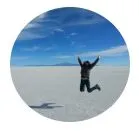
- Central America
- South America
- Solo Travel
- Budget Travel
- Digital Nomad Life
- Work Exchange
- Foodie Experiences
- Responsible Travel
- Winter Travel
- Backpacker Accommodation
- Accommodation In the UK
- Hostel Tips
- Hostel Packing List
- Work as a Hostel Volunteer
- Work in Exchange for Accommodation
- How to Travel For Free Using Work Exchanges eBook
- 101 Ways to Earn Money While Travelling eBook
- Travel Websites to Book Your Trip
- Travel Planning Checklist
- How to Travel for Free
- How to Save Money While Travelling
- Carry On Packing List
- Long Haul Flight Essentials
- Campervan Packing List
- Flight Tips
- Solo Travel Tips
- Accommodation
- Travel Insurance
- Packing Lists
- Eco-Friendly Travel Products
- Carry On Backpacks
- Backpack Essentials
- Filter Water Bottles
- Camera Gear
- Camping Gear
- Gifts for Travel Lovers
- Backpacking Gifts
- Hiking Gifts
- Campervan Gifts
- Beach Gifts
- Personalised Travel Gifts
- Small Travel Gifts
- World Map Gifts
- Gift Experiences
- Privacy Policy
Backpacking in Peru
The perfect cusco itinerary: how to spend 2 days in cusco peru.
Wondering what to do in Cusco Peru? If you are travelling to Peru, you should definitely visit Cusco, the capital of the Inca Empire. Evidence of Inca culture is everywhere in this fascinating city, and it is the base for most people going to Machu Picchu. However, before attempting the trek to Machu Picchu, I highly recommend spending at least a couple of days in Cusco to explore and acclimatize to the altitude. To help you plan the perfect Cusco itinerary, I’ve put together my recommendations for spending 2 days in Cusco to experience the culture, food and history.
This website contains sponsored and affiliate links. If you click through the links on this page and make a purchase, I may earn a small commission. As an Amazon Associate I earn from qualifying purchases. Thank you for your support. [Learn more]
The Best Things to Do in Cusco in 2 Days
Cusco is also known as the bellybutton of the world, and while that doesn’t sound very appetising there is plenty to do in this amazing city. 2 days in Cusco is enough to see the highlights without rushing around, yet if you have more time you could easily spend more time in Cusco and not get bored.
If you do have a couple more days to spend in Cusco, you can also explore the rest of the Sacred Valley and take some day trips from Cusco or stay overnight in other towns such as Pisac or Ollantaytambo to properly explore.
Know Before You Go to Cusco
Before travelling to Cusco, make sure you book accommodation and popular activities ASAP as hotels and tickets can sell out.
🛌 MY FAVOURITE ACCOMMODATION IN CUSCO:
$$ Katari at Plaza de Armas Cusco right in the centre of Cusco & great value
$$ Casa Matara – a beautifully furnished boutique hotel
$ Casa Tunki – A gorgeous hotel & hostel with pretty courtyard
⭐ TOP 3 CUSCO ACTIVITIES TO BOOK IN ADVANCE:
1. Cusco: Rainbow Mountain Day Trip and Red Valley
2. From Cusco: Full-Day Group Tour of Machu Picchu
3. From Cusco: Moray and Salt Mines Quad Bike Tour
Cusco Itinerary Day 1
Cusco city tour.
A great way to explore without over-exerting yourself as you get used to the altitude is with a Cusco city tour. If you are feeling up to it, a walking tour of Cusco will take around three hours, and you can visit all the key sites in the city.
If you prefer not to walk around too much, then a bus tour may be better for you, which will include some walking around the narrow streets in the city but will also include trips to the nearby Inca sites of Sacsayhuaman, and usually Qenqo as well.
Check out these tours of Cusco:
If you prefer not to take a Cusco city tour and simply explore by yourself, these are the main attractions to include in your Cusco itinerary.
San Pedro Market in Cusco
I usually make a beeline for the markets in any city, and Cusco is no different. San Pedro Market is a bustling local market where you can pick up super cheap local food, as well as llama jumpers, souvenirs and snacks for the treks you will probably be doing in the next few days.
Alternatively, just wander around and absorb the sights and smells of the market, as the local people go about their business side by side with the tourists.
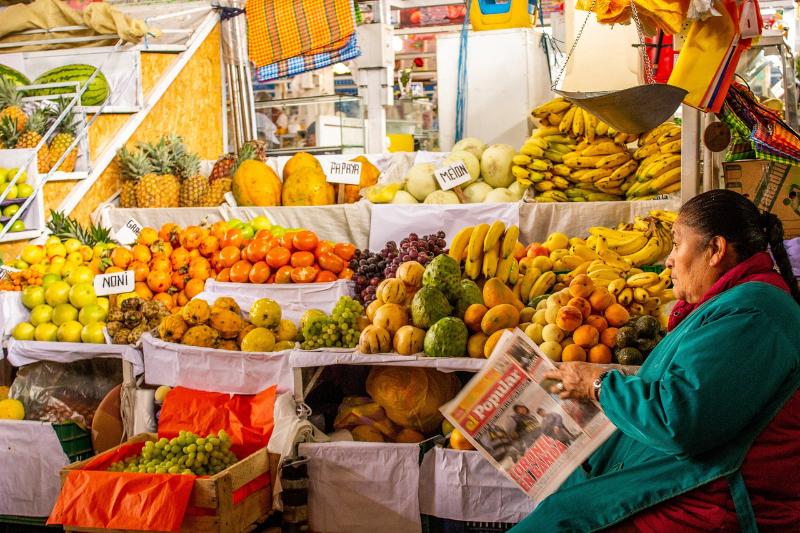
Cusco Cathedral & Plaza de Armas
The main square in Cusco is the huge Plaza de Armas. It is always busy with people selling all kinds of stuff, shoe-shiners, tourists and locals milling about. It also has a historical significance as the centre of the Inca Empire, and the place where the last Inca was executed.
The Cathedral dominates the plaza, and you can take a look inside if it is open, or even attend mass there. The other impressive-looking building is the Natural History Museum, which is better appreciated from the outside, to be honest!
YOU MAY ALSO LIKE: Solo Travel in Peru: A Guide to Travelling in Peru Alone
The 12 Angled Stone
A stone might not sound that impressive at first, but what makes this stone so special is that it demonstrates the skill of Inca masonry, who managed to fit together huge stones to build houses, temples and entire cities without the use of mortar.
They found this stone with 12 angles to fit exactly into place in the wall which is actually very impressive! There are plenty of locals asking for a couple of soles to show you where it is, but you’ll find it easily enough due to the crowd of people taking photographs.
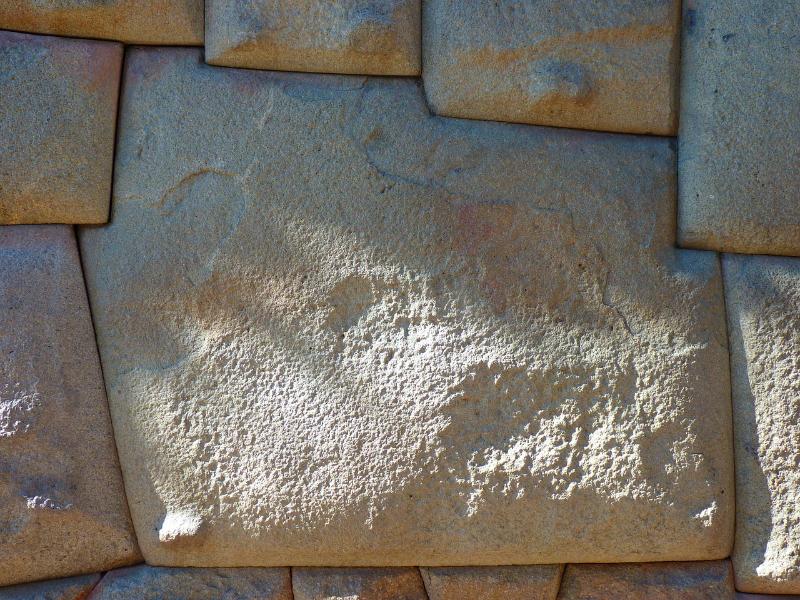
Quirkancha Temple
The Quirkancha or Qorikancha Temple was the most important temple in the Incan Empire. It was covered in gold until the Spanish conquistadors destroyed it, taking the gold and using the stones to build the Santo Domingo Church on the foundations of the temple.
The temple is worth going in, even though it isn’t included in the tourist ticket, and the gardens are beautiful. There is a small museum close by, which houses some of the original artefacts, but it was disappointing.
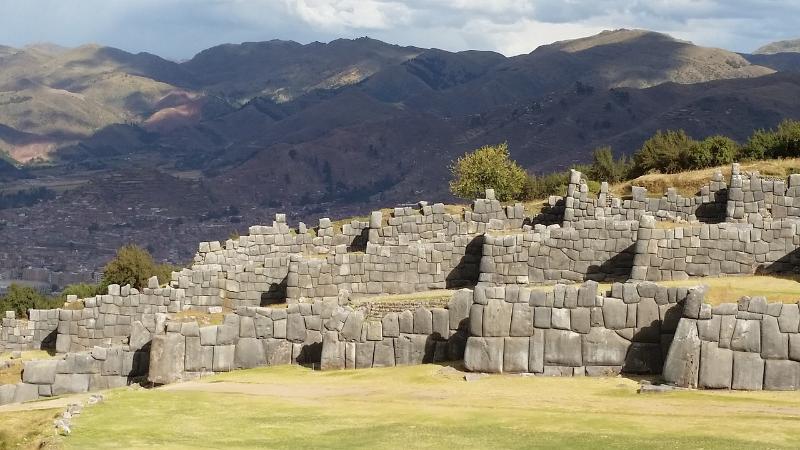
Sacsayhuaman
Outside of the centre of Cusco, Sacsayhuaman (we pronounced it Sexy Woman, as I’m sure all English speakers do) is an impressive Inca site, a short taxi journey or 30-minute walk uphill from the Plaza de Armas.
The huge fortress was constructed at the head of the puma shape that Cusco is designed around. Its Quechua name means ‘satisfied falcon’, and it proudly overlooked the city below.
The huge walls surrounding the fortress are constructed from immense blocks of stone, fitted together with absolute precision. The Spanish used the smaller stones to build their colonial town, so only the larger rocks remain in place today and have been strong enough to withstand several earthquakes which rocked Cusco over the years.
In the centre of the site lies a huge plaza, still used today for performances and celebrations such as the Inti Raymi Festival of the Sun, a theatrical reconstruction of the religious ceremony the Inca performed on the winter solstice, which takes place on 24 th June.
The Boleto Turistico Tourist Ticket The Boleto Turistico or Cusco tourist ticket allows access to 16 different Inca ruins and museums in & around Cusco and is valid for 10 days. The city centre inclusions on the ticket, I have to say, weren’t the most impressive attractions I’ve ever visited. But they are free with the ticket, so some are worth visiting if you have the time. You will need to buy the ticket to visit Sacsayhuaman and other sites in the Sacred Valley like Pisac, Moray and Ollantaytambo, among others.
I think you should be able to manage all of the above in just one day, but if you are suffering from altitude sickness then don’t push yourself too hard.
Instead of going to Sacsayhuaman on your first day in Cusco, you could save it for your second day, and spend the rest of the afternoon relaxing or perhaps doing some of the activities I’ve suggested for your second day.
Cusco is not the place to rush around, especially if you have just arrived in Peru!
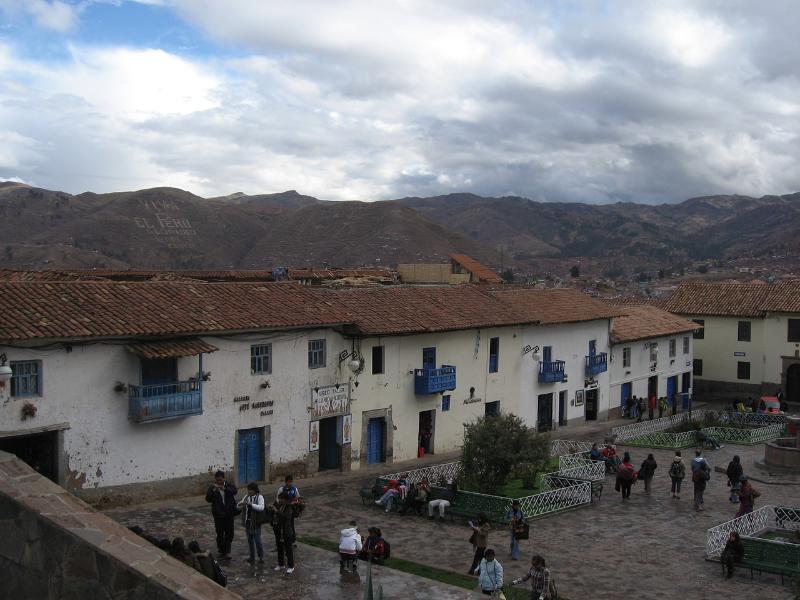
Cusco Itinerary Day 2
Explore san blas.
San Blas is a quieter neighbourhood up the hill from the hustle and bustle of the city centre. It has a more artsy feel and has art galleries and local artisans who produce beautiful crafts.
San Blas Market is smaller and cleaner than San Pedro Market and is a much more local affair where you can grab a bite to eat. Simply walking around San Blas is a joy, where the narrow, cobbled streets and pretty church square feel much more like the ‘real’ Peru than the rest of Cusco.
Shop for Souvenirs
Cusco is full of markets and stalls where you can buy last-minute items for your trek to Machu Picchu, or souvenirs so you can take fond memories of Peru back home with you.
Peruvian wool sweaters, hats and scarves are some of the most popular souvenirs as they are practical too! Alpaca wool is the softest and usually the most expensive wool you can buy (except for the luxury vicuña wool). If you find a great price for alpaca wool, it is probably too good to be true!
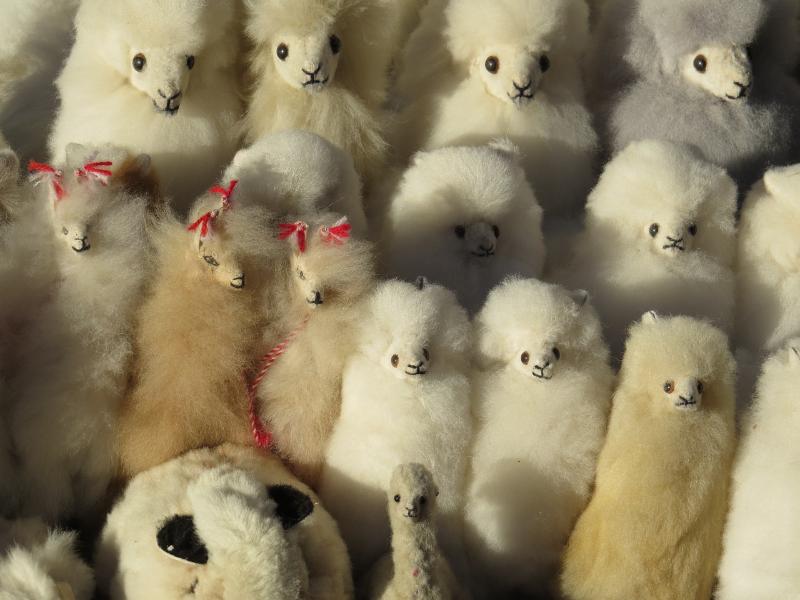
Foodie Things to do in Cusco
For me, food is such an important part of culture that I always try to eat as much local food as possible. Cusco is no different and has a variety of things to do to allow you to explore the city and the delicious Peruvian cuisine.
YOU MAY ALSO LIKE: Peru Food Guide – What to Eat in Peru
The Choco Museo
The chocolate museum is a free museum area where you can learn about the chocolate-making process. It also has a shop filled with tasty chocolate products, and the chance to take chocolate making classes .
Cooking Classes in Cusco
I LOVE cooking classes! You can take a cooking class in Cusco to learn more about the local cuisine, markets and eat delicious Peruvian food. Yum!
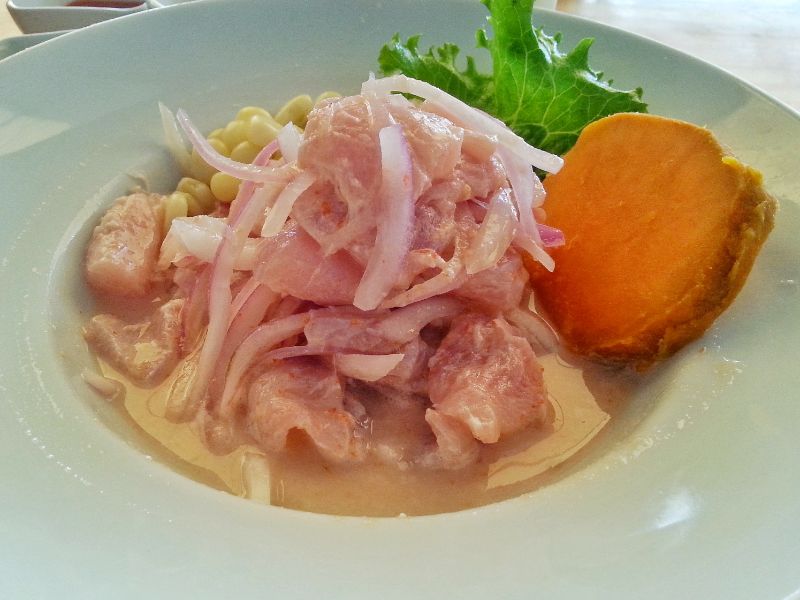
A Cusco Food Tour
Food tours are another great way to taste local cuisine, safe in the knowledge that you are trying the best, tastiest food on offer. Marcelo Batata’s Culinary tour gets great reviews, and you can try traditional Peruvian food like anticuchos (beef heart skewers) and Peruvian doughnuts.
Cusco Itinerary: Things to do in Cusco at Night
If you are not exhausted from spending 2 days in Cusco sightseeing and exploring, you may want to get out and about in the evening and enjoy Cusco by night. There are plenty of restaurants, bars and clubs in Cusco, but remember that alcohol makes the effects of altitude sickness much worse, so if you already have a headache from the altitude, lay off the booze.
However, a pisco sour is a traditional Peruvian cocktail, so I recommend trying one if you feel up to it! You could even take an evening tour and pisco-sour-making class too!

Alternatively, star-gazers might prefer this planetarium visit with a night tour and dinner .
If you bought the Cusco Tourist Ticket to visit Sacsayhuman, you could consider a visit to the Centro Qosqo de Arte Nativo (The Qosqo Centre for Native Art). In the evening at 7pm, t he Centro Qosqo de Arte Nativo has a performance of traditional music & dance, although there are often queues so aim to arrive by 6.30pm.
I have to admit that Peruvian singing is pretty bad but the music & dances were interesting, although sometimes repetitive. Reading reviews of the performance, some people think it lacks professionalism, but I enjoyed it, and considering it is for free and for an hour I thought it was worth a visit.
Day Trips from Cusco
Machu picchu.
I couldn’t have an article about Cusco and not mention Machu Picchu, although I would not include it in your 2-day Cusco itinerary.
Cusco is the usual stop-off point for people beginning the Inca Trail or one of the other treks to Machu Picchu. However, trekking isn’t the only way to get to Machu Picchu, it is also possible to take the train from Cusco or Ollantaytambo to Aguas Calientes, the town at the base of Machu Picchu mountain.
It is possible to visit Machu Picchu on a day tour from Cusco; however, I recommend spending the night in Aguas Calientes so you can be up early to visit Machu Picchu for sunrise. Machu Picchu should not be rushed!
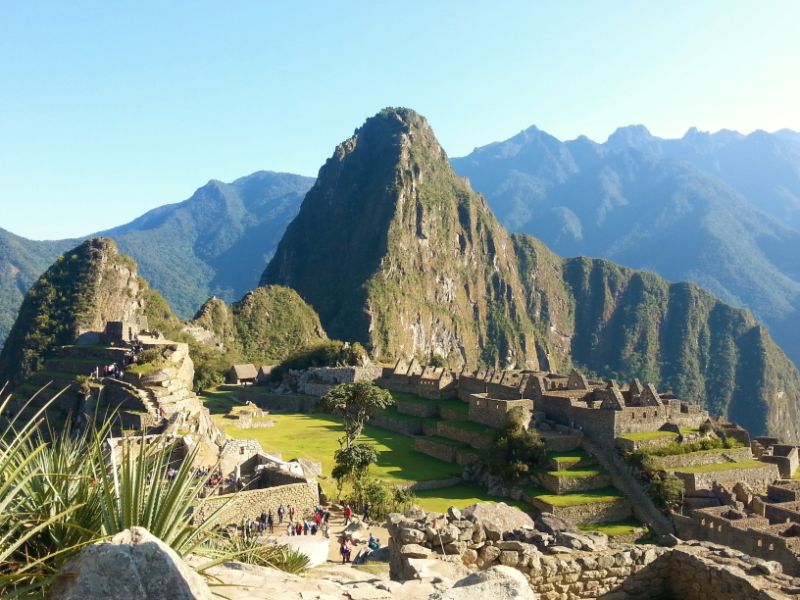
Explore the Sacred Valley
Cusco is a wonderful base to explore the rest of the Sacred Valley, either on day trips from Cusco or to travel around and spend a couple of nights in each place. Read more about day trips from Cusco here .
Sacred Valley day tours from Cusco typically include Chinchero, Maras and Moray which can be visited easily in a day, Pisac which can be done as a day tour or overnight stop, and Ollantaytambo which is often visited on the way to Machu Picchu as it is between Cusco and Machu Picchu.
The most popular day trip from Cusco is to visit the salt mines at Maras, the circular Inca terraces at Moray and the weaving communities at Chinchero. If you only have 2 days to spend in the whole of the Sacred Valley, I would then spend one day in Cusco, and the second day doing this tour.
However, I definitely recommend spending more time in the region so you can enjoy it properly without rushing.
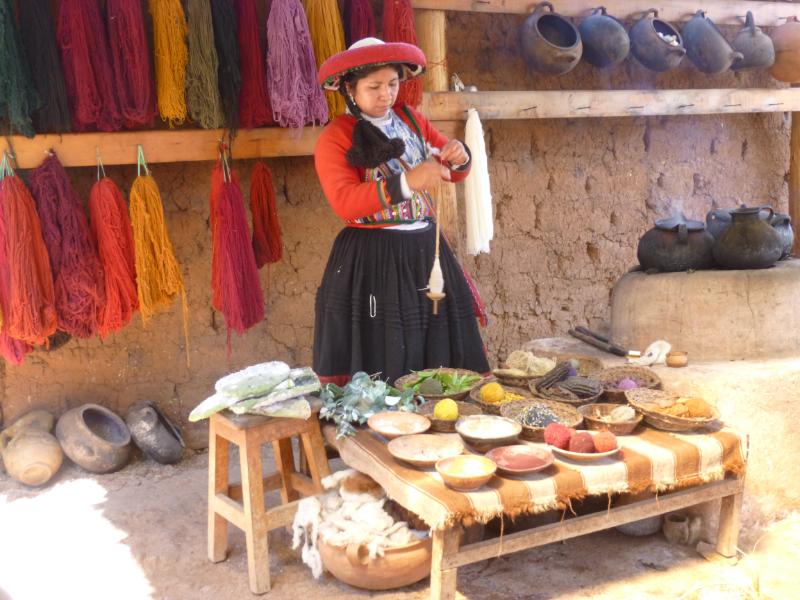
Useful Information for your Cusco Itinerary
Altitude sickness in cusco.
The altitude in Cusco can hit you hard. Cusco sits at an elevation of 3,399 m (11,152 ft) above sea-level, and visitors who arrive straight to Cusco from lower altitudes often suffer from altitude sickness.
If you only have 2 days in Cusco, take it easy and don’t over-exert yourself. Even climbing a flight of stairs can be a challenge when you first arrive!
If you have a headache, take paracetamol to ease it, keep hydrated and avoid alcohol and smoking. Chewing coca leaves or drinking coca tea will also relieve symptoms.
If you suffer from any more serious symptoms like vomiting and disorientation, seek medical attention immediately as severe altitude sickness can be fatal.
Is Cusco Safe?
Yes, as long as you listen to your body, act quickly if you have altitude sickness, and follow any normal safety tips.
As one of the most popular destinations in South America for tourists, Cusco was one of the safest places I visited in my 10-month South America backpacking trip. However, be wary at night as you would anywhere else, and avoid walking around alone on your own.
Pickpocketing is common in busy areas like the Plaza de Armas and San Pedro Market, but wherever you are in the city make sure you keep a close eye on your belongings. Only take official taxis, which are safer than flagging down one in the street.
Be especially careful in and around the bus station, where thieves target tired & disorientated tourists who have just arrived.
If you are travelling in Peru alone, check out this Peru Solo Travel Guide.

Travel Safely
- Leave valuables at home and don't keep all your money and credit cards in one place. I love hidden pocket clothing like this travel scarf for stashing my cash and passport or a belt with a hidden pocket. Read more about how to hide money while travelling .
- Bring a water bottle with a built-in filter so you can safely drink water from any fresh water source while saving money and reducing plastic use. I take my Water-to-Go bottle with me everywhere!
- Unfortunately, things can and do go wrong when you travel. I always buy travel insurance and was very glad I had insurance when I had my laptop and passport stolen in Ecuador! Consider getting insurance for your trip to cover things like trip cancellation, emergency medical, lost luggage and stolen items, as well as adventure sports and activities and more.
- I chose World Nomads Travel Insurance for my recent backpacking trip to Australia and New Zealand. They offer travel insurance for independent travellers and intrepid families and you can get a quote, make a claim, or buy or extend your policy while on the road
GET A NO-OBLIGATION QUOTE
As an affiliate, I receive a fee when you get a quote from World Nomads using this link. I do not represent World Nomads . This is information only and not a recommendation to buy travel insurance.
Where to Stay in Cusco
Most of the tourist activity in Cusco is centred around la Plaza de Armas, which is also where our group stayed on my first visit to Cusco.
It is a good practical base as there are plenty of bars & restaurants to choose from, and tons of trekking equipment shops, tour companies and pharmacies to stock up on insect repellent and plasters for the trek. However, it tends to be busier and noisy at times.
If you prefer to have a little more authentic experience, the quieter San Blas neighbourhood is much less in your face and has a more artsy feel to it. The area is pretty with narrow cobbled streets and much quieter than the centre, but anywhere away from the Plaza de Armas involves walking up a steep hill which can be challenging with heavy bags!
The Best Hostels in Cusco
There are a dizzying number of hostels in Cusco to choose from, but these are some of the best Cusco hostels for backpackers and budget travellers.
La Wak’a Perdida Hostel
La Wak’a Perdida is a small new hostel which only has one 8 bed dorm and a double room, so is cosy and quiet. The owner is friendly, and breakfast is included in the rate or there is a kitchen to cook your own food. It’s about 15 minutes’ walk from the Plaza de Armas, close to San Blas. BOOK NOW>>>
Pariwana Hostel Cusco
Pariwana Hostel is a very popular Cusco Hostel, and is a sociable place with a bar and large terrace area for ping pong and socialising. It is a borderline party place, but at the same time not crazy so you can still sleep.
Breakfast is included, there is no kitchen but you can order food at the bar if you don’t fancy going out to eat. Private rooms and dorms are available. Very central, a couple of blocks from Plaza de Armas. BOOK NOW>>>
Hospedaje Turistico Recoleta
Hospedaje Turistico Recoleta is small and homely hostel with great reviews for being a lovely place to relax and chill before or after the trek to Machu Picchu! >>>BOOK NOW
Kokopelli Hostel Cusco
Kokopelli Hostel Cusco is THE place to stay in Cusco if you want to party but still with a comfy bed in a decent dorm room. >>>BOOK NOW
BROWSE ALL HOSTELS IN CUSCO
Cusco Hotels
There is no shortage of hotels in Cusco either, from luxury properties to family-run guesthouses. Check out the ratings for all Cusco Hotels on Booking.com or check out my top picks for Cusco hotels:
Antigua Casona San Blas
Antigua Casona San Blas is a 4* boutique hotel in the San Blas neighbourhood, which gets rave reviews for the friendly staff, excellent service and well-appointed rooms. San Blas is up a steep hill from Plaza de Armas so it isn’t ideal if you have mobility issues. >>>CHECK PRICES & AVAILABILITY
Katari at Plaza de Armas Cusco
The location of Katari at Plaza de Armas Cusco can’t be beaten – it is on the corner of the Plaza de Armas right in the centre of Cusco. Guests love the location, staff and comfort but the free wifi isn’t the best. >>>CHECK PRICES & AVAILABILITY
Casa Matara Boutique
Another lovely boutique hotel, the family-owned Casa Matara is beautifully furnished with a blend of modern and traditional Peruvian decor. The comfortable beds and spacious bedrooms, and it’s just a 9 minute walk from Plaza de Armas. >>>CHECK PRICES & AVAILABILITY
BROWSE ALL HOTELS IN CUSCO
Airbnb in Cusco
There are also plenty of options on Airbnb , like this charming apartment in the city centre , or check out the range of apartments on Booking.com , which often have better cancellation terms than Airbnbs in Cusco.
Where to Eat in Cusco
San pedro market.
I love poking around local markets for tasty treats, and the street food stalls outside the market are great places to get some cheap food.
However, if you have just arrived in Peru, your stomach might not be ready for street food, so it may be best to opt for a ‘safer’ choice, especially if you are planning to do the Inca Trail or other hikes in the next few days.

Restaurants in Cusco
If you are feeling the effects of altitude, eating light meals will help your stomach to digest the food more easily.
Good restaurants to try in Cusco include Mr Soup , which has a range of delicious soups (including a couple of veggie options), and vegetarian-friendly restaurants like Green Point Vegan Restaurant and Organika .
Restaurants around the Plaza de Armas tend to be more expensive as they are tourist hotspots. I treated myself to a meal at the Inka Grill , which was pricey, but delicious, and a luxurious treat after the trek. Trout ceviche and alpaca steak with a pisco sour all went down really well!
I loved the lomo saltado at Morena Peruvian Kitchen , which serves Peruvian food with a modern twist at mid-range prices.
If you’re craving some food from home, Jack’s Café serves up an awesome breakfast/brunch menu and old favourites like burgers and nachos.
How to Get to Cusco
Flights to cusco peru.
You can fly into Cusco airport from Lima and a couple of international destinations such as La Paz Bolivia or Bogota Colombia. Most international flights will involve a change in Lima. Check Skyscanner for the best flight deals to Cusco.
Once you’ve collected your baggage, I’d suggest taking an official taxi from the airport to wherever you’re staying or arranging an airport transfer . There have been reports of muggings and problems with fake taxi scams taking advantage of weary travellers, so be on your guard.
Bear in mind that flying into Cusco from a lower elevation is more likely to cause problems with altitude sickness than slowly increasing the altitude and arriving by land. Take it easy as you acclimatise to the altitude in Cusco!
Buses to Cusco
If you are already in Peru, travelling to Cusco by bus is a good option. There are regular buses from Lima, Arequipa, Puno and La Paz, although the journeys are very long.
However, if you choose a decent bus service, they are good value and safe. For the bus from Lima to Cusco, I recommend stopping off along the way to explore more of Peru.
I did this travelling with Peru Hop , as you can hop on and hop off the bus service at several different destinations along the way – including Huacachina , Paracas, Nazca and Arequipa , as well as Lake Titicaca if you choose that particular route.

If you are short on time or prefer to travel independently, then Cruz del Sur is the most reliable long-distance bus company in Peru, although there are plenty of others.
They have their own Cruz del Sur terminal in Cusco which is about 10 minutes’ walk to the bus station which most other companies use. You can take a taxi from the terminal to your accommodation, check with the accommodation for an estimate of prices so you don’t get ripped off, or ask them to arrange a transfer for you.
If you are travelling on a different bus line such as Oltursa, Civa or Tepsa, you will arrive at the main Cusco Bus Terminal. Cusco bus station (called the Terminal Terrestre) is about 30 minutes’ walk from the main square in Cusco, so you will probably need to take a taxi to where you are staying.
Make sure you take an official taxi and agree on the price before you get in.
Bus from La Paz to Cusco
If you are travelling from La Paz in Bolivia, Bolivia Hop run a similar service to Peru Hop, or you can just go to the bus station in La Paz and buy a ticket on any bus service to Cusco.
Some of the bus routes go via Copacabana and Puno so you can visit Lake Titicaca along the way, however, some routes go a different way so double check before you buy. If you’d like to spend some time at Lake Titicaca, you could also consider a more comfortable bus ride to Puno .
Trains to Cusco
I would have loved to take the train from Lima to Cusco, but unfortunately trains in Peru are not very common! The train line to Machu Picchu starts at Cusco, and there are no trains from Cusco to Lima so you will need to take the bus or fly to Cusco.

What do you think of this Cusco itinerary? How would you spend your 2 days in Cusco? I’d love to hear your thoughts, please leave your comments below.
Want More Peru Travel Ideas?
- Backpacking Peru Travel Guide
- Peru Solo Travel Guide
- Things to do in Lima
- How to Get from Lima to Cusco
- Cusco Travel Guide
- Day Trips from Cusco
- What is the Cusco Tourist Ticket
- How to Manage the Altitude in Cusco
- The Best 2 Day Cusco Itinerary
- Exploring Pisac in the Sacred Valley
- How to Get from Cusco to Ollantaytambo
- Flying over the Nazca Lines
- Backpacking Arequipa Peru
- A Guide to Hiking in Peru
Hi! I'm Claire Sturzaker, a 30-something foodie traveller who loves to enjoy the best of a destination without breaking the bank. I'm here to help you and all women backpackers to plan their best budget travel adventure. I am an avid supporter of female solo travel, and took my first solo trip 20 years ago! I love to write about travel, hostels, backpacking and van life.
Leave a Reply
Your email address will not be published. Required fields are marked *
* Nationality :
Travel days SELECT 3 days 4 days 5 days 6 days 7 days 8 days 9 days 10 days 11 days 12 days 13 days 14 days 15 days 16 days 17 days 18 days 19 days 20 days 21 days 22 days 23 days 24 days 25 days 26 days 27 days 28 days 29 days 30 days Please indicate which places would you like to visit, select the items by clicking on the check boxes.
TOUR PACKAGES TO THE MOUNTAIN
TOUR PACKAGES TO THE JUNGLE
COMBINED WITH THIS COUNTRIES
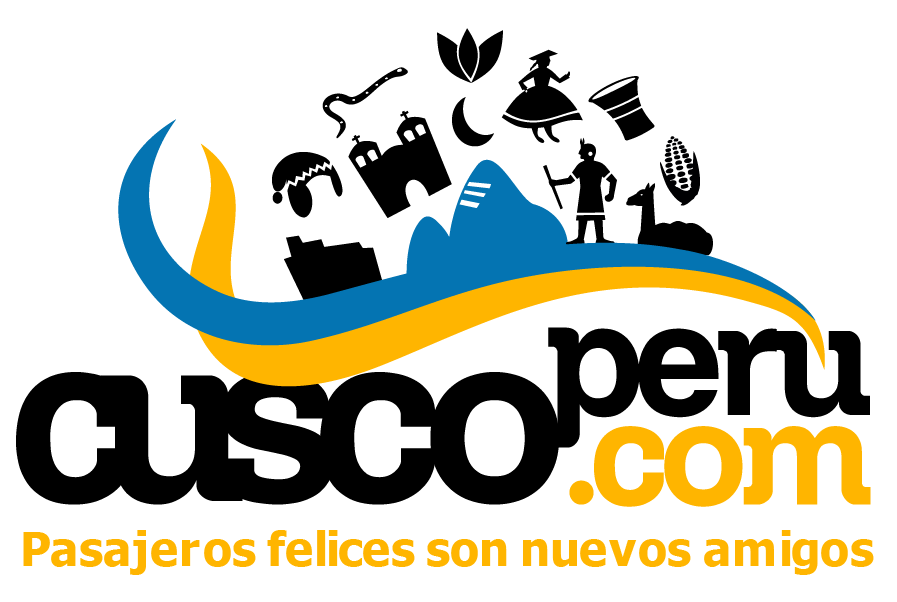
- 1. Why visit Cusco?
- 2. Where to start?
- 3.1. Natural Attractions Cusco
- 3.2. Colonial Mansions Cusco
- 3.3. Archaeological Centers Cusco
- 3.4. Churches and Convents Cusco
- 3.5. Museums Cusco
- 3.6. Inca Palaces Cusco
- 4.1. From Lima
- 4.2. The main routes from Lima are:
- 5. LOCATION
- 6.1. Weather:
- 6.2. Altitude:
- 6.3. Population:
- 7.1. How to avoid:
- 8. WHAT TO DO IN YOUR FREE TIME
Why visit Cusco?
Where to start, attractions:.
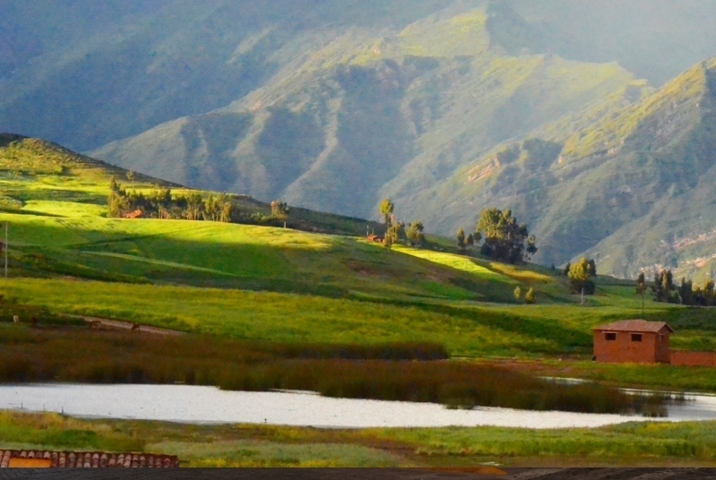
Natural Attractions Cusco
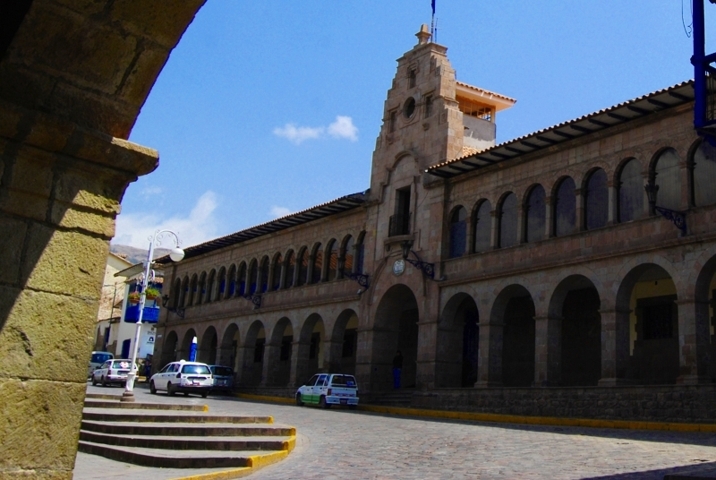
Colonial Mansions Cusco
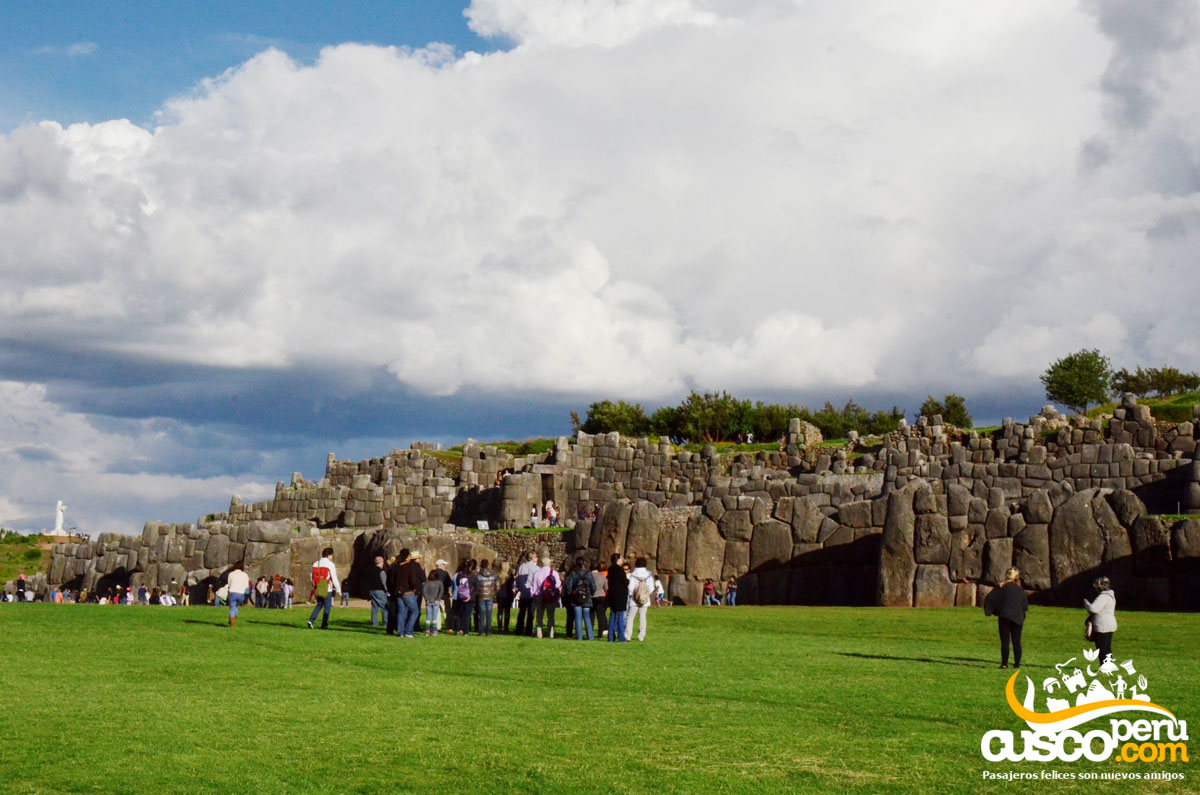
Archaeological Centers Cusco

Churches and Convents Cusco
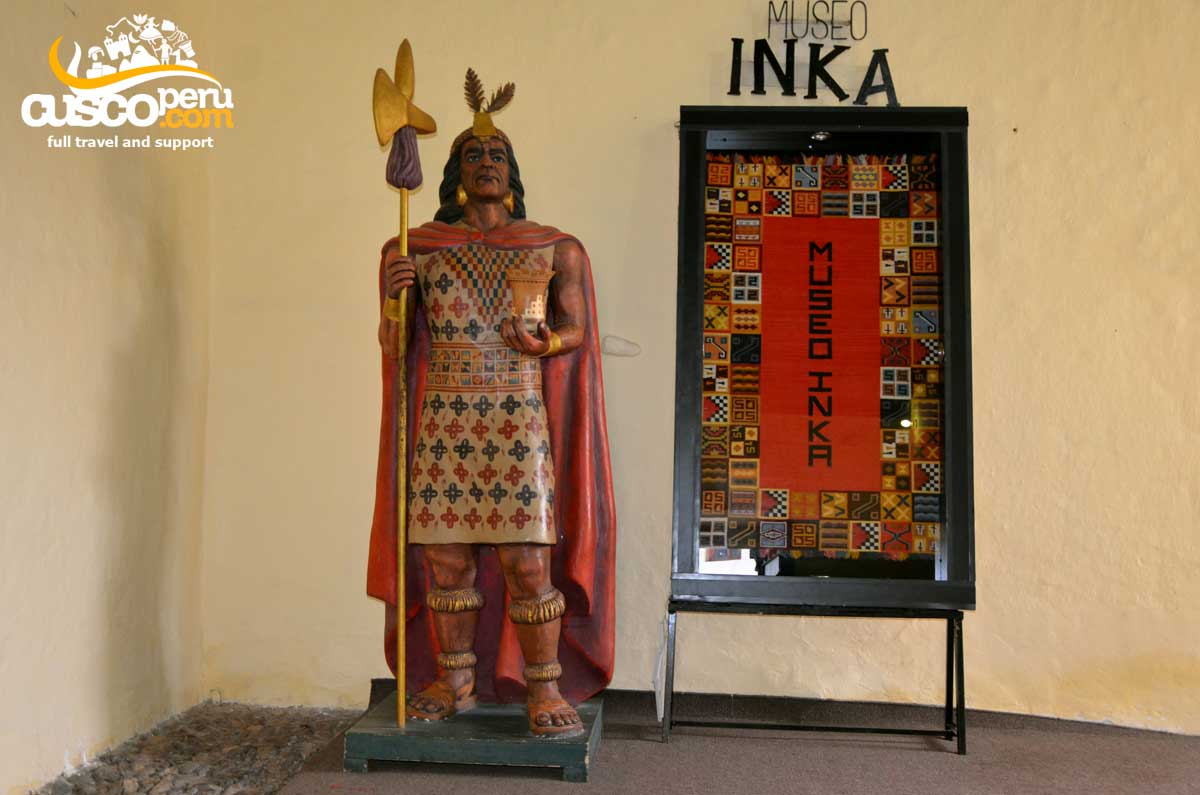
Museums Cusco

Inca Palaces Cusco
How to get to cusco, the main routes from lima are:.

IMPORTANT DATA
Population:, recommendations for altitude sickness, how to avoid:.
- Consult with your doctor about altitude sickness before the trip, so that he can medicate you according to your organism.
- The visitor should acclimatize for at least 24 hours, that is to say, arrive one day before starting the tour.
- It is necessary to consume products with little amount of salt and try to ingest products rich in sugar.
- The intake of liquids is extremely important because it helps to counteract the effects of altitude.
- Long walks should be avoided on the first day, and if you do take them, it is better to be accompanied.
- Wear appropriate clothing that does not cause fatigue or suffocation. Consume products such as herbal teas or coca tea (without sugar).
WHAT TO DO IN YOUR FREE TIME
Here are some suggestions of what you can do in the city of Cusco.
- Walk through its streets and appreciate the colonial architecture built over ancient Inca palaces.
- Admire the religious art in the cathedral and the different temples of the city.
- Visit on horseback the archaeological park of Sacsayhuaman and its archaeological sites.
- Share and enjoy your evenings with people from all over the world in the bars and discos near the
- main square.
If you are looking for tours in Arequipa write to us at: [email protected]
Happy passengers

The Ultimate Cusco Itinerary for Three to Ten Days
By Author Graham Minser
Posted on Last updated: 23rd September 2024
As the one-time capital of an empire that stretched across much of the continent, Cusco has long been on travelers’ radar. But while Cusco itself offers tons to do, the region surrounding the city possesses a plethora of can’t-miss attractions as well.
With so many things to do and a limited time in which to do them, the planning process may seem quite a headache.
However, with our three- to ten-day Cusco itineraries, setting up your Andean getaway is as stress-free and fun as it’s ever been.
I spent seven months living in the former capital of the Inca civilization and never found myself short of things to do.
You might not have quite as much time to explore the city, which is why I’ve compiled my top tips for visiting the region into these far shorter itineraries – guaranteed to give you the chance to dive into everything this fascinating city has to offer.
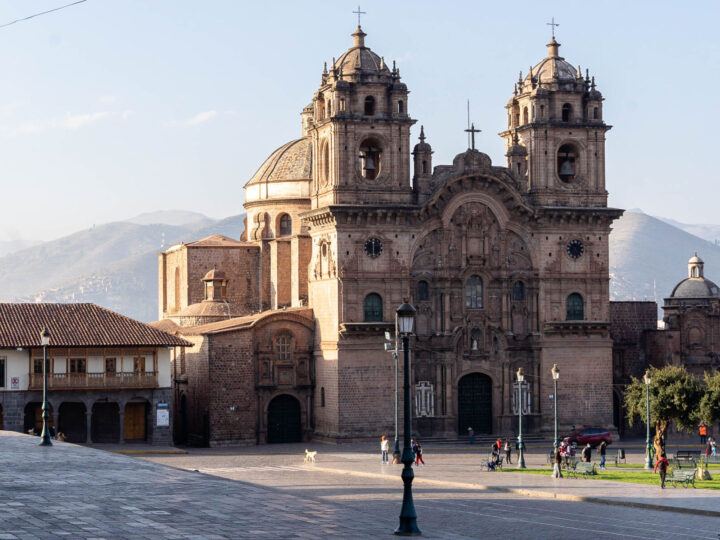
Click to navigate this article:
Recommendations for traveling in Cusco and how to use this itinerary:
- Peru is a big country. There’s so much to see and many travellers try to pack in as much as is humanly possible. While a whirlwind few days between destinations is quite an adventure, it’s usually best to slow it down to really get to know each place you visit. It’s also a big country, with different ecosystems and weather. Read our guides to when to travel to Peru and the best months for visiting Machu Picchu to identify when it’s best to travel here.
- Transport in Peru is excellent value. To cover long distances, for example, Lima to Cusco, flying is a better alternative to a long bus journey (and won’t cost much more, either). To get between destinations within the Cusco region, your best options are local colectivo (shared van), taxi, or private transfer through a tour. Colectivos are great value and generally comfortable for covering the winding mountain roads (although you’ll want to bring travel sickness tablets if you’re not a good passenger!).
- Although we don’t focus on budget traveling, Peru is a good-value destination that allows travelers to save money by eating locally and using local transport. Set lunches ( menú del día ) are a great way to eat well and save your soles.
- If you plan on visiting more than one archaeological site, you should definitely purchase the boleto turístico , which costs S/130 ($40 USD) and lasts ten days from first use. It allows you to visit nearly all archaeological sites in the region (but not Machu Picchu). Alternatively, there are two-day passes for S/70 ($18 USD) which cover different sites.
- Renting a car is advisable only for people comfortable driving on winding, two-lane mountain roads. It can be an amazing experience to unlock the countryside, but generally speaking, you’re better off leaving the driving to the locals as the roads – and the experience – can prove harrowing for many.
- Uber is legal in Peru and works well within Cusco. However, it’s often cheaper to go with a local taxi which are usually unmetered but fair value. Always agree on the destination and price before getting in.
Planning Your Trip to Peru?
Save time, stress & money with a customized travel itinerary planned for you by a Peru expert
Cusco itinerary for three days of travel
Day one: cusco.
Arriving at Alejandro Velasco Astete Cusco International Airport (CUZ) , take a taxi to your accommodation. Because of the Cusco altitude, take the day to walk around, hydrate and acclimate. The best local way of avoiding altitude sickness is to put coca leaves ( hojas de coca ) in your cheek. You can find them at local markets across the city.
To get a feel for the historic city centre, start at the Plaza de Armas , the heart of the old city. Surrounding the plaza are the stunning Catedral de Cusco and Iglesia de la Companía de Jesús . both built shortly after the conquest in the 16 th century.
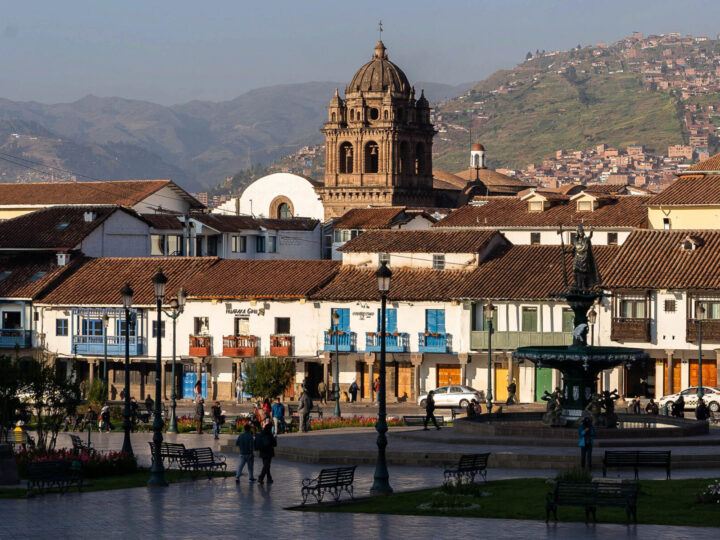
Next, pop into one of the many excellent museums to better understand the history, culture and archaeological past of this region. Among the best are the Museo de Arte Precolombino , Museo Inka and Qorikancha . Each offers insight into the way of life before the Spanish conquest.
Among the best things to do in Cusco is to stroll through Mercado San Pedro on the southwest end of the historical centre to stock up on souvenirs, quality woollen textiles, and fresh produce.
For hungry travellers, Cusco boasts a great selection of restaurants offering exceptional local Peruvian food :
- On the north side of town, Quinta Eulalia serves up family-style platters with local favourites including grilled lamb, lechón (slow-roasted pork), chicharrón (deep-fried pork skin), and fried cuy (guinea pig).
- Another great local option is La Chomba Ajha Wasi , which offers generous portions of good-value, traditional dishes in a large room with communal seating and live music.
- For an outstanding upscale meal, try Piedra & Sal , cooking up refined versions of local favourites, including slow-roasted lamb, local trout with quinoa, or grilled alpaca steak.
- For those seeking an alternative to the predominately meat-heavy local fare, head to GreenPoint , which serves beautifully-presented vegan takes on typically Andean dishes.
Where to stay in Cusco: The neighbourhoods of San Blas and San Cristóbal , east and north of the centre, respectively, offer a great range of options for those willing to climb the hill from the centre. Among the best are the tastefully-appointed Palacio Manco Capac ($140 USD double), and the lovely Antigua Casona San Blas ($165 USD double). If you’d rather avoid the climb out of the centre, we recommend El Mercado just east of the Plaza de Armas.
Where to stay in Cusco on a budget: Few places offer the degree of comfort and affordability as MOAF Boutique Hotel ($80 USD double). The rooms are bright thanks to plenty of natural light and have modern furnishings and pleasant neutral decoration. This helps to enhance the rooftop views available in some bedrooms, as well as in various communal areas.
When looking for a place to stay, check out our guide to where to stay in Cusco , which offers a full range of options catering to all travelers.
Day Two: Ollantaytambo and the Sacred Valley
Get an early morning start by catching a colectivo (shared van) to Urubamba , and then onward to Ollantaytambo , two of the main towns in the Sacred Valley.
Colectivos leave from Cusco to Urubamba from the corner of Puputi Street and Juan Carlos Street, take an hour and a half to arrive and cost S/8-12 ($2-3 USD) depending on the van. From the Urubamba terminal, another colectivo to Ollantaytambo takes half an hour and costs S/2 ($0.5 USD).
Ollantaytambo , or Ollanta (o-YAN-tah), as the locals call it, is itself a living museum piece and is the closest to what a traditional Incan town was centuries ago.
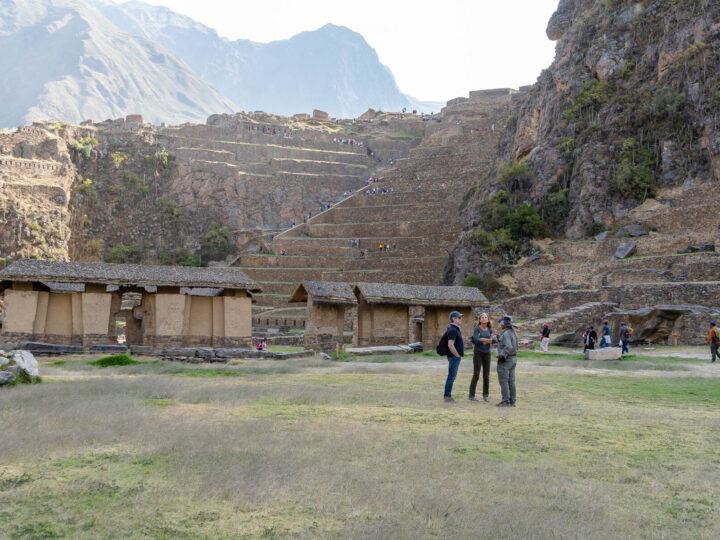
Perfectly situated between two steep mountain ridges, the town sits between archaeological sites: the primary complex in the west with the Temple of the Sun at its top, and the mountainside storehouses facing the town from the east.
Ollanta can be quite crowded when Machu Picchu-bound tourist groups come through on the train, but the rest of the time it has a relaxed vibe.
For a snack or something more substantial, check out Apu Ausangate on the main plaza, which offers a full range of beverages and Peruvian comfort food like quinoa soup, trout ceviche, and house-made chicha morada, a sweet, slightly fermented purple corn beverage. You can also read this article about more things to do in the Sacred Valley .
From here, hop on the afternoon train to Aguas Calientes , the town directly under Machu Picchu. The train from Ollantaytambo to Aguas Calientes takes two hours and must be booked in advance through Peru Rail . It’s advised to book a good few weeks in advance to ensure you get a seat as the train is the only means of getting there.
Arriving in Aguas Calientes, check in to your hotel and arrange for an early wake-up call if necessary, because in the morning you’re going to Machu Picchu! You may choose to arrange a guide for the next day (required for Machu Picchu), or you can wait until you arrive at the gate in the morning.
Where to stay in Aguas Calientes: You can stay at the well-appointed, boutique hotel, Casa del Sol Machu Picchu ($263 USD double) or the ultra-plush Sumaq Machu Picchu Hotel ($510 USD double).
Where to stay in Aguas Calientes on a budget: Travelers seeking a more social atmosphere can stay at the lively Supertramp Hostel ($43 USD double), which has a bar, restaurant and a youthful vibe – just don’t stay up too late as it’s an early start tomorrow!
Day Three: Machu Picchu and return to Cusco
Your three-day tour of the Incan heartland concludes with Peru’s coup de grâce : the Andean citadel of Machu Picchu. Entrance tickets must be purchased in advance, either online or at the Ministerio de Cultura on Garcilaso Street in Cusco; read our guide to the costs of visiting Machu Picchu to help you plan your spending and learn how far in advance you need to book your tickets – and other key information – in this comprehensive guide to Machu Picchu .
It is possible to buy tickets in Aguas Calientes but because the number of daily visitors is limited it’s best to book online to avoid disappointment.
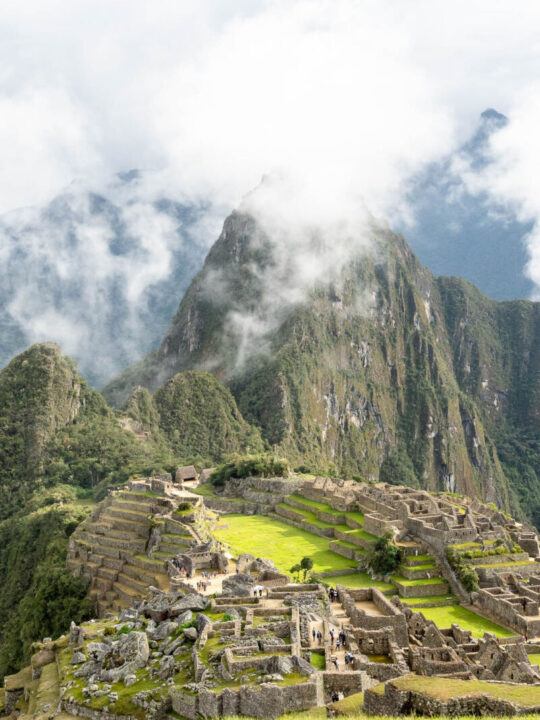
Wake up early to beat the crowds up the mountain. The first bus leaves at 5:30am, and tickets can be bought in advance online with Consettur , or with cash in person with your passport.
The gates open at 6am, and now would be the time to settle on a guide if you haven’t already. Tour guides are all state-certified, knowledgeable and totally worth the cost. Make sure you and your guide can communicate effectively, as language skills can vary between guides.
The going rate is S/75 ($20 USD) per person, with a discount for larger groups. The tours run two to three hours and tips are always appreciated.
Hopping back on the bus, get lunch at Chullos before making your way back to the train station. Trains run all the way to Cusco, and take around four hours to arrive at San Pedro Station.
For your final night, enjoy an evening out in Cusco. Treat yourself to a refined cocktail at the Museo del Pisco , which specialises in the grape liquor pisco , Peru’s premier distillation.
Cusco itinerary for five days of travel
Days one and two: cusco.
Arriving at the airport, take a taxi to your accommodation. Take a day or two to simply walk around, hydrate and acclimate. Starting at the Plaza de Armas , visit the Catedral de Cusco and Iglesia de la Companía de Jesús , the most impressive Spanish architectural feats.
Dotting the old centre are numerous examples of the Incan architecture which predates the Spanish arrival. Take in the unparalleled Incan masonry along the narrow alleys, contrasting with the newer Spanish baroque architecture.
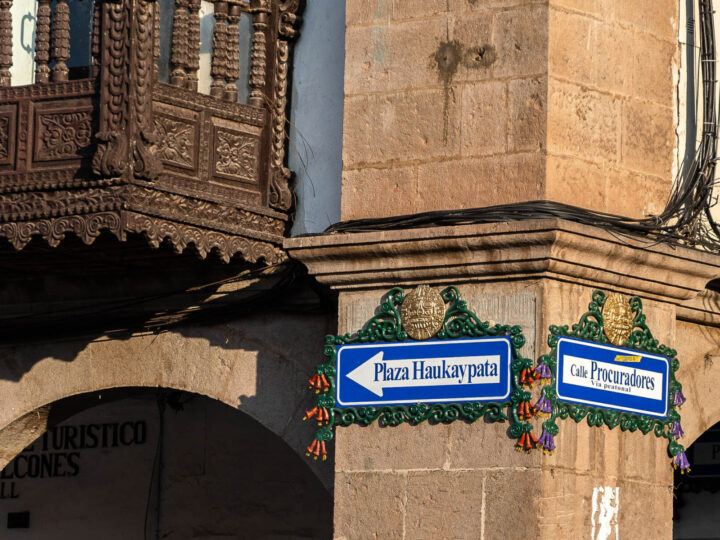
For Day Two, visit the Centro de Textiles Tradicionales del Cusco to see how the local handmade textile industry continues to thrive as it has for centuries. You’ll have the opportunity to join in a workshop and sample their exquisite wares.
Alternatively, join a local Peruvian cooking class . They’ll teach you Incan culinary history while walking you through local recipes, such as sarsa (Peruvian-style salad), trout soup and a pisco sour (mention Worldly Adventurer for a 5% discount).
Finally, a visit to Cusco is incomplete without a trip to Mercado San Pedro . This is the perfect place to pick up handicrafts, fresh produce, locally-made chocolate or maté, and of course llama and alpaca textiles such as scarves, hats and jumpers.
For superb dining and accommodation options, scroll up to the three-day guide.
Where to stay in Cusco: The neighbourhoods of San Blas and San Cristóbal , east and north of the centre, respectively, offer a great range of options for those willing to climb the hill from the centre. Among the best are the tastefully-appointed Palacio Manco Capac ($140 USD double), and the lovely Antigua Casona San Blas ($165 USD double). If you’d rather avoid the climb out of the centre, we recommend El Mercado , just east of the Plaza de Armas.
Where to stay in Cusco on a budget: Few places offer the degree of comfort and affordability as MOAF Boutique Hotel ($80 USD). The rooms are bright thanks to plenty of natural light and have modern furnishings and pleasant neutral decoration. This helps to enhance the rooftop views available in some bedrooms, as well as in various communal areas.
Day Three: Pisac
Just north of Cusco lies the exquisite Sacred Valley , which runs along the length of the Urubamba River. This stunning verdant valley runs east to west and offers a perfect change of pace from busier Cusco.
On Day three, head just north out of town to Pisac . The valley can be accessed by local colectivo shared vans, taxi or private tours. Colectivos leave from the corner of Puputi and Juan Santos Streets, and leave for Pisac (a 45-minute drive) and cost between S/4-10 ($1-2.5 USD).
The town of Pisac is set in a lovely point in the upper portion of the valley, and offers a more laid-back experience compared with Cusco. It’s also significantly lower in elevation than Cusco and offers some respite for those suffering from altitude sickness.

The highlights are the local artisan market and the outstanding ruin complex of the same name high above town. Half the fun of visiting the ruins is the hike up, which affords stunning views and begins from the north end of town.
The hike is three to four hours up, but taxis are available for those who would prefer to only walk downhill back to town.
For food, Mullu has an eclectic menu of both local and international crowd-pleasers, and Antica Osteria Pisac has some of the best pizza and pasta you’re likely to find in this corner of the world.
An alternative for day three would be to spend the night at the luxurious retreat Aranwa Sacred Valley Hotel & Wellness ($170 USD double) just outside of Urubamba or to push on to Ollantaytambo, from where you can catch the train the following day to Aguas Calientes.
Where to stay in Pisac: For those choosing to spend the night in town, we recommend the homey Pisac Inn ($93 USD double), opposite the central plaza. It engages those looking for more luxurious surroundings. From its charming rooms to the on-site spa facilities, this hotel is a place to be spoiled.
Where to stay in Pisac on a budget: A good budget alternative would be El Parche Hoste l ($19 USD double), just west of town along the river, with plenty of communal space and a rooftop terrace.
Day Four: Ollantaytambo and train to Aguas Calientes
From Pisac or Urubamba, take a colectivo or taxi downriver to Ollanta, where you can explore the well-preserved ruins rising above the cobble-stoned streets.
Catch the afternoon train to Aguas Calientes, sort out your accommodation and final Machu Picchu preparations before turning in for an early start the following morning.
Day Five: Machu Picchu and return to Cusco
As in the three-day itinerary, take the first bus up the hill to witness the Incan citadel in all its early morning splendour. Following your tour, take the bus back downhill and enjoy a leisurely lunch before hopping on the train back to Cusco.
Cusco itinerary for seven days of travel
Dotting the old centre are numerous examples of Inca architecture which predates the Spanish arrival. Take in the unparalleled Incan masonry along the narrow alleys, contrasting with the newer Spanish baroque architecture.
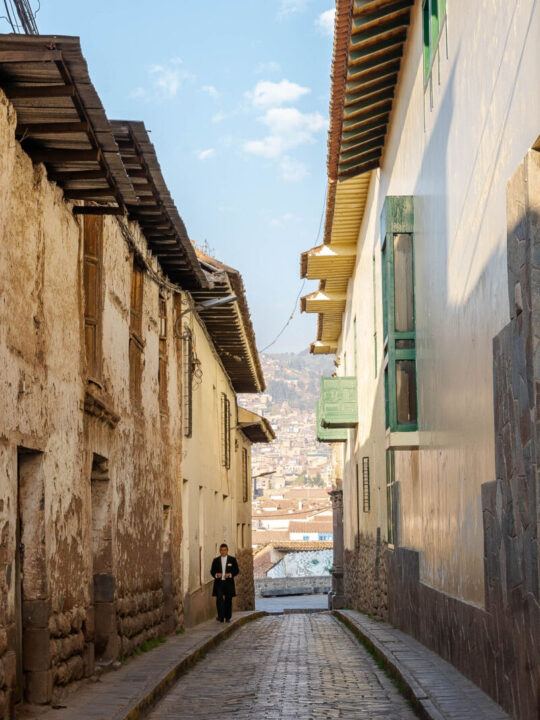
Alternatively, join in a local Peruvian cooking class . They’ll teach you Incan culinary history while walking you through local recipes, such as sarsa (Peruvian-style salad), trout soup and a pisco sour.
Where to stay in Cusco on a budget: Few places offer the degree of comfort and affordability as MOAF Boutique Hotel ($80 USD). The rooms are bright thanks to plenty of natural light and have modern furnishings and pleasantly neutral decoration. This helps to enhance the rooftop views available in some bedrooms, as well as in various communal areas.
As in the five-day itinerary, Pisac is a great jumping-off point from Cusco into the Sacred Valley.
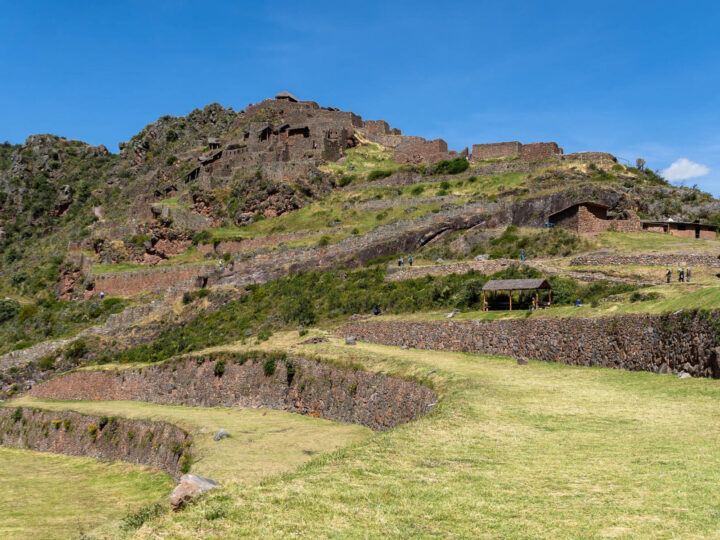
You’ll have the opportunity for a good hike up to the ruins and to recover from any residual altitude sickness from Cusco.
Where to stay in Pisac on a budget: A good budget alternative would be El Parche Hostel ($19 USD double), just west of town along the river, with plenty of communal space and a rooftop terrace.
Day Four: Sacred Valley exploration and retreat
From Pisac, you can choose to visit either Moray , a collection of concentric terraces designed by the Inca to test how crops grow at different elevations, or Chinchero , a ruin complex of immense terraces, irrigation channels, and well-preserved Incan masonry.
To reach these sites, take a colectivo or taxi from the bridge in Pisac to Urubamba (45 minutes, S/2-3 ($0.5-0.75 USD), and about a half-hour by taxi from there to either Moray or Chinchero.
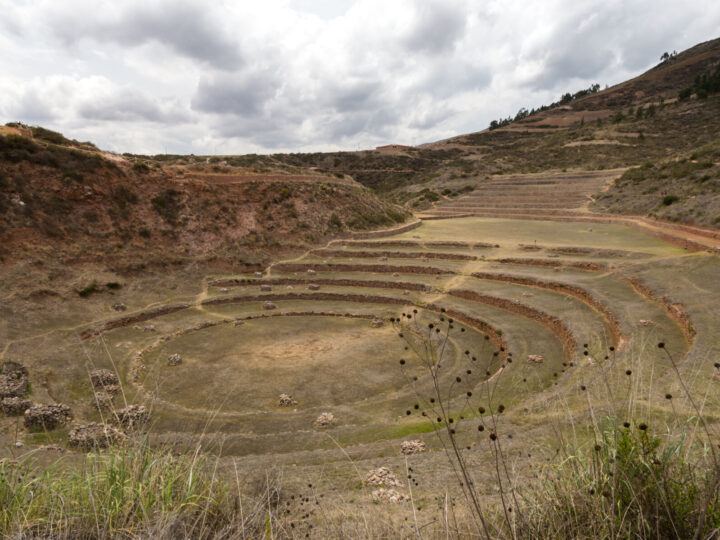
Alternatively, if you want something more adrenaline-fuelled, go whitewater rafting on the Vilcabamba-Urubamba River’s Class II to Class IV rapids. Expect to pay around $160 USD for a full day’s rafting experience, such as this private tour with Amazonas Explorer (mention Worldly Adventurer for a 5% discount on this tour).
A wonderful place to post up for the night is the lovely Aranwa Sacred Valley Hotel & Wellness ($158 USD double), which offers well-appointed rooms, great food, and a range of spa treatments to soothe your aching body.
Day Five: Ollantaytambo
A half-hour colectivo ride downriver from Urubamba will take you to the delightful town of Ollantaytambo. In Ollanta, make sure to keep your camera handy as you climb the ruins, which offer terrific views of the surrounding mountains and valley.
While away the afternoon sipping on a maté or beer and tuck into some excellent Andean cuisine at El Huacatay for dinner.
Where to stay in Ollantaytambo: Right next to the train station, but home to a lush garden and suntrap terrace, El Albergue ($142 USD double) is a tranquil place to while away the evening. They also have a fantastic on-site restaurant that cooks up ingredients from the hotel’s organic vegetable garden.
Where to stay in Ollantaytambo on a budget: Rustic but clean bedrooms are the norm at the affordable Picaflor Tambo Guest House ($42 USD double) run by owners who will ensure you have the most comfortable stay possible
Day Six: Aguas Calientes
For Day Six, you can either take the morning train onward to Aguas Calientes, or take your time, enjoy the morning and lunch in Ollanta, and catch the afternoon berth (don’t forget to book your tickets in advance).
Once you arrive in Aguas Calientes, sort out your final preparations for Machu Picchu, enjoy dinner and a nightcap at Mapacho , and turn in early for your morning ascent.
Where to stay in Aguas Calientes on a budget: Travelers seeking a more social atmosphere can stay at the lively Supertramp Hoste l ($43 USD double), which has a bar, restaurant and a youthful vibe – just don’t stay up too late as it’s an early start tomorrow!
Day Seven: Machu Picchu and return to Cusco
On day seven, do as you would for the three- or five-day itinerary and take the afternoon train back into Cusco. Enjoy your final night in the city of the Incas with a stellar meal, and enjoy the night out if you’ve still got the energy.
Cusco itinerary for ten days of travel
Days one to three: cusco.
For Day One, do the same as in the three-day Cusco itinerary.
On Day Two, head just north of the centre to Saqsaywamán , the largest Incan complex in Cusco. Built as a palace and fortress and still in construction at the time of the Spanish arrival, the complex is an architectural marvel overlooking the city below.
If you’re feeling athletic, you can visit as part of a mountain biking tour to some of Cusco’s key historic sites, including the thrilling descent from Saqsaywamán back into the city. Amazonas Explorer operates a private mountain biking tour ; mention Worldly Adventurer for a 5% discount.
Equally impressive for many are the colonial-era cathedrals, churches and museums sharing the old centre. In addition to the cathedrals on the Plaza de Armas, don’t miss the Iglesia Santo Domingo and the Templo del San Blas , each with a stunning interior and collection of religious art.
For Day Three, take part in a workshop at the Centro de Textiles Tradicionales del Cusco to see how the local handmade textile industry continues to thrive as it has for centuries.
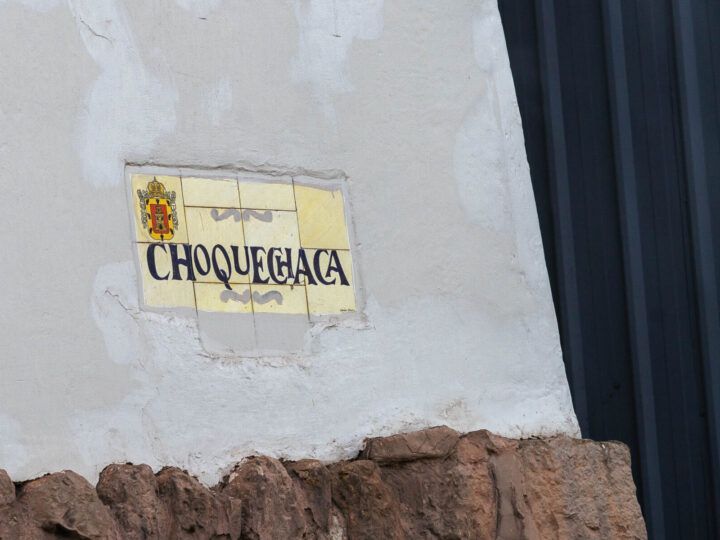
For those keen on learning to make some of the amazing food on offer here, you’ll want to take a local cooking class . They’ll teach you Incan culinary history while walking you through local recipes, such as sarsa (Peruvian-style salad), trout soup and a pisco sour.
Finally, a visit to Cusco is incomplete without a trip to Mercado San Pedro . This is the perfect place to pick up handicrafts, fresh produce, locally-made chocolate or maté , and of course llama and alpaca textiles such as scarves, hats and jumpers.
For lunch and dinner, Cusco possesses a great selection of restaurants offering exceptional local food. See above for a list of options.
When looking for a place to stay, check out our guide to where to stay in Cusco , which offers a full range of options catering to all travellers.
Where to stay in Cusco: The neighbourhoods of San Blas and San Cristóbal , east and north of the centre, respectively, offer a great range of options for those willing to climb the hill from the centre. Among the best are the tastefully-appointed Palacio Manco Capac ($140 USD double), and the lovely Antigua Casona San Blas ($165 USD double).
Day Four: Pisac
On Day Four, head just north out of town to Pisac . The valley can be accessed by local colectivo shared vans, taxi or private tour. Colectivos leave from the corner of Puputi and Juan Santos Streets, and leave for Pisac (a 45-minute drive) and cost between S/4-10 ($1-2.5 USD).
The town of Pisac is set in a lovely point in the upper portion of the valley, and offers a more laid-back experience compared with Cusco. It’s also significantly lower than Cusco and offers some respite for those suffering from altitude sickness.
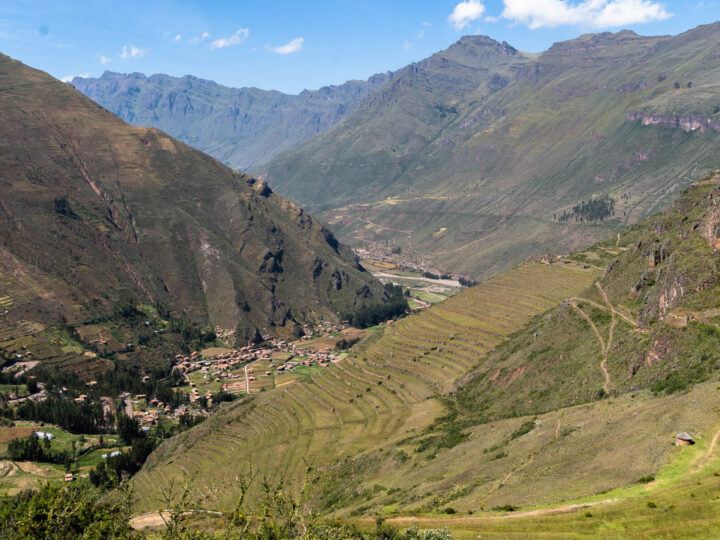
The highlights are the local artisan market and the outstanding ruin complex of the same name high above town. Half the fun of visiting the ruins is the hike up, which affords stunning views and begins from the north end of town. The hike takes 3-4 hours up, but taxis are available for those who would prefer to only walk downhill back to town.
Days Five and Six: Urubamba
On Day Five, take another colectivo (or taxi) from the bridge leading into town to Urubamba , the valley’s central town. While the city itself is more of a workaday agricultural and transit hub, the bucolic surroundings make it an excellent place to unwind for a day.
A popular day trip just south of the valley from Urubamba is Moray , which is a collection of concentric terraces designed by the Incans to test how crops grow at different elevations. A taxi from Urubamba costs between S/60-80 ($15-20 USD) and takes less than a half-hour.
For a tasty lunch to refuel before heading out of town, try El Huacatay , whose locally-sourced creations include alpaca, trout and pastas.
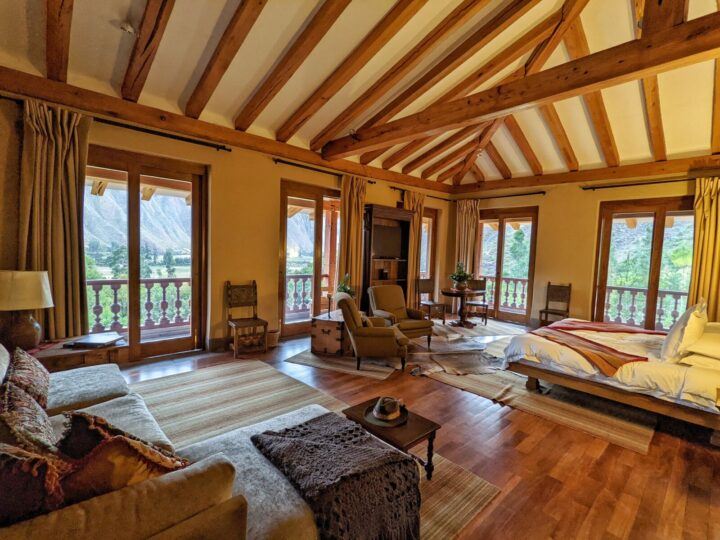
On Day Six, take a colectivo or taxi from Urubamba to Chinchero , for a half-day excursion to the largely uncrowded archaeological complex. The ruins consist of immense terraces, irrigation channels, and well-preserved Incan masonry.
Where to stay in Urubamba: Inkaterra Hacienda Urubamba ($420 USD double) is a five-star hotel with a gorgeous setting tucked away in the valley. Most of the bedrooms are located in the main house, a Spanish-style hacienda with rustic-chic bedrooms, luxurious bathrooms and private balconies, plus a cosy lounge and bar. Standalone cabins give you more privacy; all have glorious views along the Sacred Valley.
Where to stay in Urubamba on a budget: Hospedaje Venka Urubamba (S/140 or $35 USD double) offers options for all types of wanderers. Budget travellers will find the double room more than adequate to accommodate their needs: a comfy bed, a private bathroom, and a patio with either city or mountain view.
Day Seven: Ollantaytambo
Take another colectivo from Urubamba to Ollantaytambo , the Sacred Valley’s most atmospheric town. Ollanta (o-YAN-tah), as the locals call it, is itself a living museum piece and is the closest to what a traditional Incan town was centuries ago.
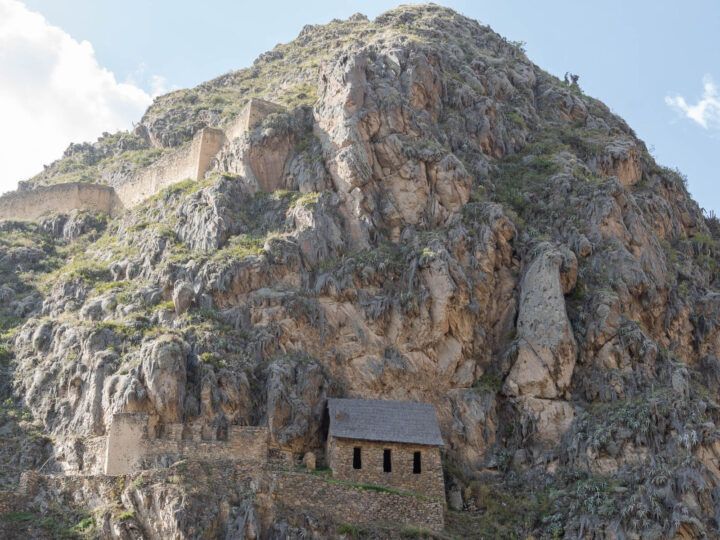
Perfectly situated between two steep mountain ridges, the town sits between archeological sites: the primary complex in the west with the Temple of the Sun at its top, and the mountainside storehouses facing the town from the east.
Ollanta can be quite crowded when Machu Picchu-bound tourist groups come through on the train, but the rest of the time it has a relaxed vibe. For a snack or something more substantial, check out Apu Ausangate on the main plaza, which offers a full range of beverages and Peruvian comfort food like quinoa soup, trout ceviche, and house-made chicha morada, a sweet, slightly fermented purple corn beverage.
Where to stay in Ollantaytambo: There are a number of boutique hotel options in the narrow cobbled streets of Ollanta, and one of the best is Apu Lodge ($70 USD double). Right next to the train station, but home to a lush garden and suntrap terrace, El Albergue ($142 USD double) is a tranquil place to while away the evening. They also have a fantastic on-site restaurant that cooks up ingredients from the hotel’s organic vegetable garden.
Days Eight and Nine: Aguas Calientes and Machu Picchu
From Ollanta on Day Eight, take either the morning or afternoon train to Aguas Calientes as you would for the three- or five-day itinerary. You may choose to either remain in Aguas Calientes for Day Nine or return to Cusco by train for an extra day.
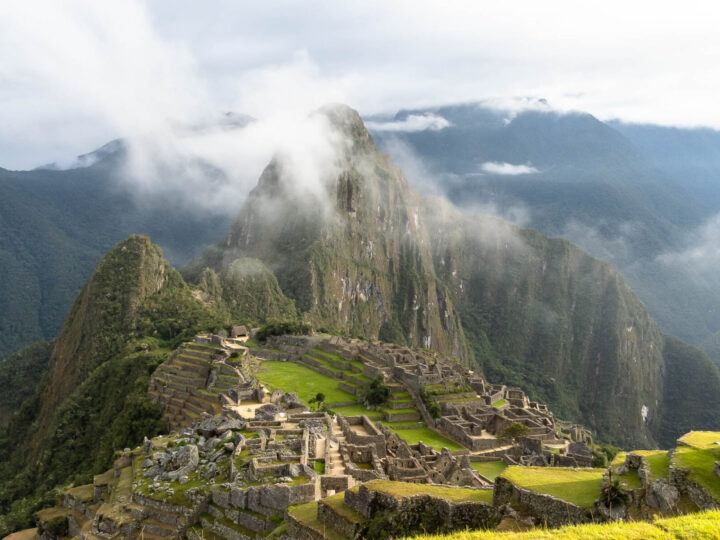
Days Nine and Ten: Cusco
Once you return to Cusco, take advantage of any activities you feel you may have missed out on. If you’re keen on visiting another archaeological site, Q’enqo is just past Saqsaywamán on the road north of town.
For those seeking something more active, Cusco Peru Adventure offers ATV tours, horseback riding and paragliding on day trips nearby the city.
East of Cusco in the village of Andahuaylillas is perhaps the most beautiful church in the region, San Pedro Apóstol de Andahuaylillas .
How to extend this itinerary
- Want to learn Spanish while getting to explore some of Peru’s most exciting destinations? Cusco is an excellent place to do an immersive Spanish language class, particularly as you can add in trips to Machu Picchu, the Sacred Valley, and even Lake Titicaca to the course. Brush up your Español with this 31-day Spanish and adventure course (and use the promo code WorldlyAdventurer to get a 5% discount!), which includes accommodation, the Inca Jungle trek to Machu Picchu, plus 80 hours of small-group Spanish language classes across four and a half weeks.

15 Top-Rated Tourist Attractions in Cusco
Written by Barbara Radcliffe Rogers Updated Dec 28, 2023
Former capital city of the Incas, Cusco is the oldest continuously inhabited city in the Americas and a UNESCO World Heritage Site . The ruins of the old Inca city became the foundation for the Spanish architecture you see today, and many of the stone walls that line the streets were built by the Incas.
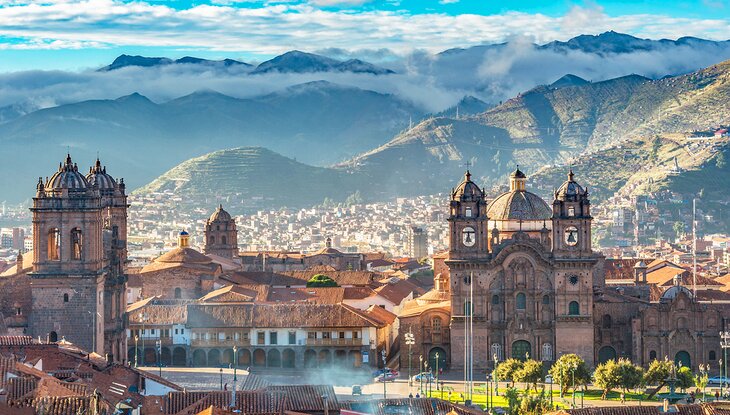
Most tourists who come to Cusco head to Machu Picchu, the Sacred Valley , and the other nearby Inca centers, but it's well worth spending some time exploring the city itself to discover its many attractions. Most are around the Plaza de Armas and surrounding streets, which is where you'll also find restaurants, hotels, and shopping.
Follow streets uphill from the northeast end of the Plaza de Armas into the stone-paved streets of the San Blas district. In this picturesque little neighborhood, you'll discover small shops and restaurants frequented by locals as well as visitors who prefer to stay in this quieter neighborhood with fine views over the entire city.
To be sure you don't miss any of the best places to visit, plan your trip with our list of the top attractions in Cusco.
Santo Domingo and Coricancha
Sacsayhuaman, plaza de armas, museo casa concha, la compania, museo de arte precolombino (pre-columbian art museum), san francisco church and monastery, san pedro market, choco museo (chocolate museum).
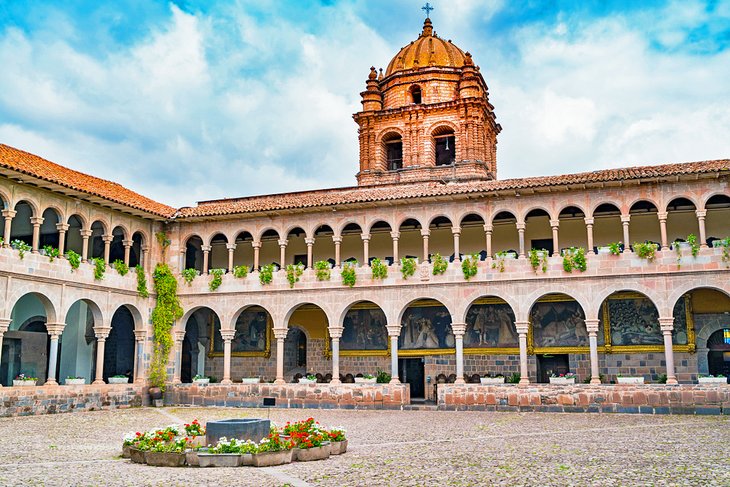
The church of Santo Domingo is built on the ruins of the famous Inca site of Coricancha, the Templo del Sol or Temple of the Sun. Coricancha (Q'orikancha in Quechua) means "golden courtyard," and its walls were once lined in sheets of solid gold.
Statues and ornaments of gold decorated the interior and a large golden disc reflected the sun, casting a brilliant light on the temple.
All this was stripped by the conquistadors soon after they arrived in Cusco, and most of the gold was melted down. All that remains today of the once glorious Coricancha is the fine Inca stonework, which forms the foundation of the church of Santo Domingo.
From both inside and outside, you can see the impressive six-meter-high curved wall at one end of the church. Unlike much of the Spanish architecture, the Inca wall has withstood the major earthquakes that rocked Cusco in 1650, 1950, and 1986. Through each of these, the Inca stonework that underlay the later buildings survived, while the colonial and later buildings crumbled above.
In the center of the courtyard is a structure, which was once covered with 55 kilograms of gold, and along the sides of the courtyard are small Inca rooms whose smooth gray stones and sharp angles are a stark contrast to the rounded arches and Spanish architecture that surround them.
A small museum has a model showing what it probably looked like and explains the history of local civilization, with pre-Inca, Inca, and colonial artifacts, many from excavations in the Coricancha.
Address: Ahuacpinta 659-A, Cusco 08002, Peru
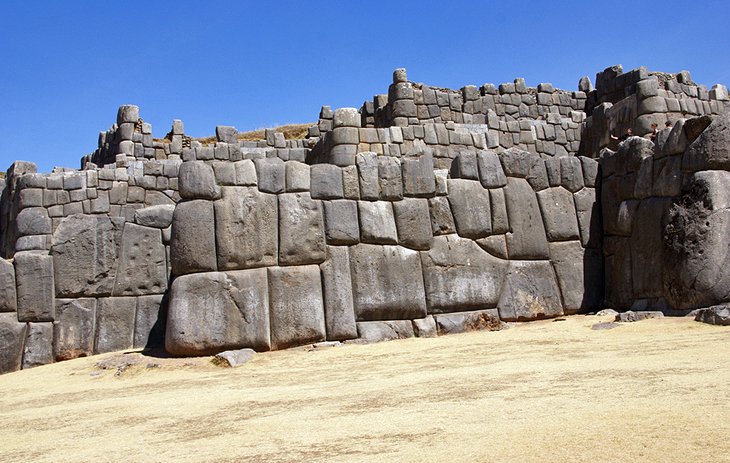
The massive fortified complex of Sacsayhuaman is the most significant ruin in Cusco , and is close enough to the historic center that you can walk there. Many tourists stop to see it on the way to Pisac. Sacsayhuaman is thought to have both military and religious significance.
Cusco was designed in the shape of a puma, with Sacsayhuaman as the head. Three ramparts of zigzagging defense walls extend for almost 300 meters, forming the teeth of the puma.
The fascination of this ruin is not just its staggering size, but the size of the stones from which it was built, and the complexity of the stonework. Consider that what you see here is only about 20 percent of the original mass — until it was protected in the 1930s, blocks from Sacsayhuaman were being hauled away to use for construction in Cusco.
Most of the largest stones, which were more difficult to move, were left at the site, and form the basic structure. Some of these stones measure more than eight meters high and weigh 361 tons.
Despite the massive size of these stones and their often irregular shapes, they are fitted together so perfectly that modern engineers wonder at how the Incas managed such a feat.
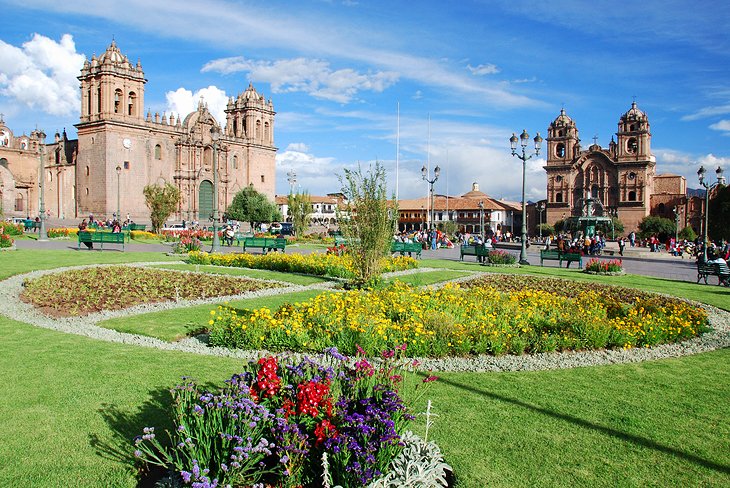
The Plaza de Armas has been the heart of Cusco from the time of the Inca Empire, when the square was called Huacaypata or Aucaypata. The cathedral , on the northeast side of the Plaza de Armas is the main attraction, and you'll often find both locals and tourists relaxing on its steps.
On one side of the cathedral is the church of Jesus Maria, and on the other is El Triunfo. The southeastern side of the main square is dominated by the church of La Compania , which is easily mistaken for the cathedral because of its ornate façade. However, it is smaller and lacks the grand stairs in front.
The other two sides of the Plaza de Armas are lined with colonial arcades. The center of the square is a place to rest on the benches and admire the gardens and fountain in the center as you watch daily life in Cusco. The plaza is especially lively and beautiful at night, with people strolling about and the buildings lit with spotlights.
One of the most popular things to do at night in Cusco is to stroll around the plaza, which is especially lively and beautiful after dark, with people socializing and the buildings lit with spotlights.
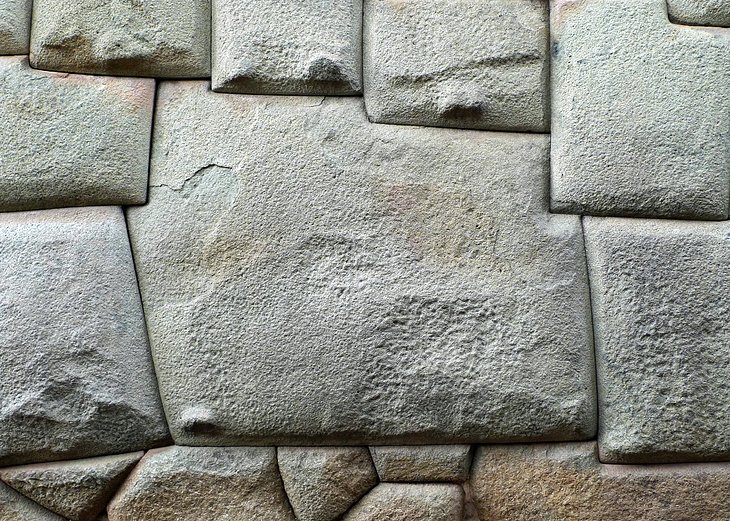
Walking beside the ancient Inca Walls that line the narrow streets of Cusco is like walking through an outdoor museum. These intricately constructed Inca walls are the foundations of today's Cusco , and although they are found all over the city, a few areas stand out.
Some of the best places to see them are along the streets of Loreto and Hatunrumiyoc. Inca walls line both sides of Loreto, which runs southeast from the Plaza de Armas. The south wall is from Amarucancha, the site of the Palace of Huayna Capac, and on the north side is the wall of the Acllahuasi, one of the oldest walls in Cusco.
Hatunrumiyoc runs northeast from the Plaza de Armas, and is famous for the 12-sided stone found along the east wall. It's usually easy to spot because souvenir sellers set up regularly directly across from the stone. The curved end of Santo Domingo church is another outstanding example of Inca stonework.
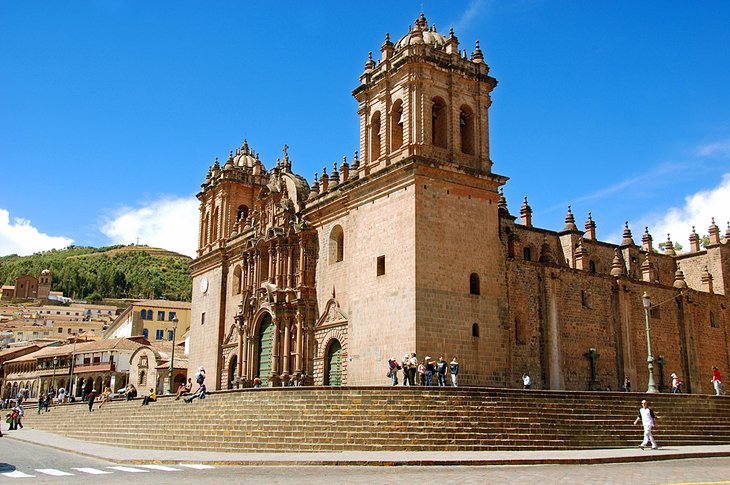
Construction on Cusco's cathedral began in 1559 and was completed in 1669. It is built on the site where the Inca Wiracocha's palace once stood. The three-aisled nave of the Renaissance-style church is supported by 14 massive pillars, remarkably few for such a large nave.
The main altar, made of silver, weighs 400 kilograms, and the choir stalls are intricately carved from cedar. Even more impressive is the cathedral's collection of more than 400 paintings from the Escuela Cuzqueña, the Cusco School.
These paintings from the 16th and 17th century are unique in that they reflect European style, but with an obvious native Andean influence. You can see a good example of this in The Last Supper by Marcos Zapata, which shows the apostles dining on guinea pig. The painting of the crucifixion in the sacristy is attributed to Van Dyke.
Adjoining the cathedral is the church of El Triunfo to the right, and the church of Jesus Maria to the left. El Triunfo was the first Christian church in Cusco, built on the site of the Inca armory where the Spanish were trapped during a siege in 1536. The Incas burned the city, but the fire in the thatched roof of the armory went out mysteriously.
After the Spanish had escaped and retaken the city, the story had grown to the status of a miracle, which the church was built to honor. The Capilla del Triunfo houses a famous Alonso Cortes de Monroy painting of the 1650 earthquake that devastated Cusco.
Address: Plaza de Armas, Cusco
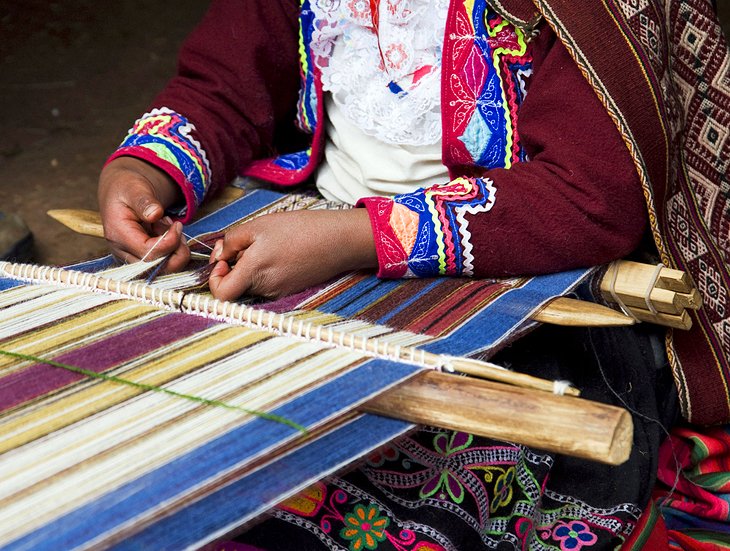
The best museum in Cusco for those interested in the Incas, Museo Inka is housed in the ornate 16th-century Spanish Admiral's House, a building worth the visit in its own right.
The house, which belonged to Admiral Francisco Aldrete Maldonado, was built on Inca foundations. It was damaged severely in both the 1650 and 1950 earthquakes but has been repaired and is one of the most impressive colonial houses in Cusco.
The collections focus on the Incas, from the rise of their culture to the Conquest and its impact on Peruvian cultures. Displayed are ceramics, textiles, metal and gold work, jewelry, mummies, and skulls that show an early surgical method of trepanning.
Especially interesting are the 450 carved and painted wood cups known as queros, the largest collection in the world. During the busiest tourist season, local weavers from the Centro de Textiles Tradicionales de Cusco demonstrate and sell their impressive work in the courtyard.
Address: Cuesta del Almirante 103, Cusco
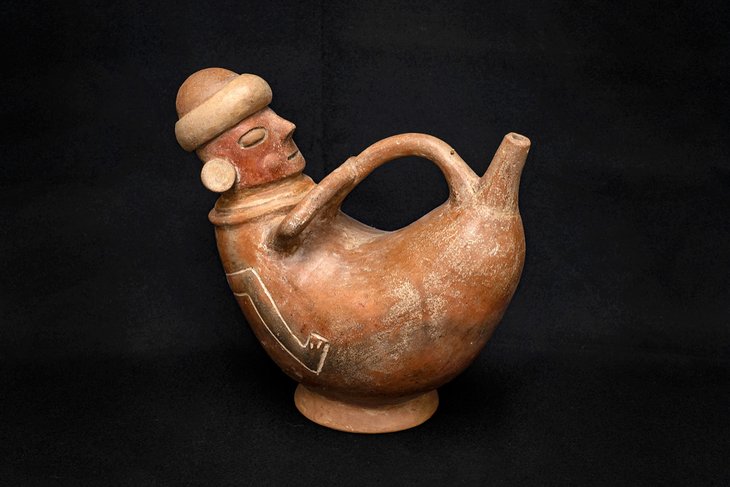
A century after archeologist Hiram Bingham brought Machu Picchu to world attention, the artifacts he found there were repatriated from the Yale University museums where he had deposited them.
Returned to Peru in 2011, after a decade of often-contentious negotiations, they are now displayed in the Museo Casa Concha , former home of Jose de Santiago Concha, an aristocrat from the early days of the conquest.
Twelve rooms of the beautiful balconied house, which spreads around three courtyards, house the collection of more than 360 artifacts that include items from large ceramic pots to small silver pins.
Interactive displays and videos fill in the story of the Incas and Machu Picchu and include an interactive map of the site. Visible through a glass floor are the remains of a floor from the previous Inca royal residence.
Address: Santa Catalina Ancha 320, Cusco
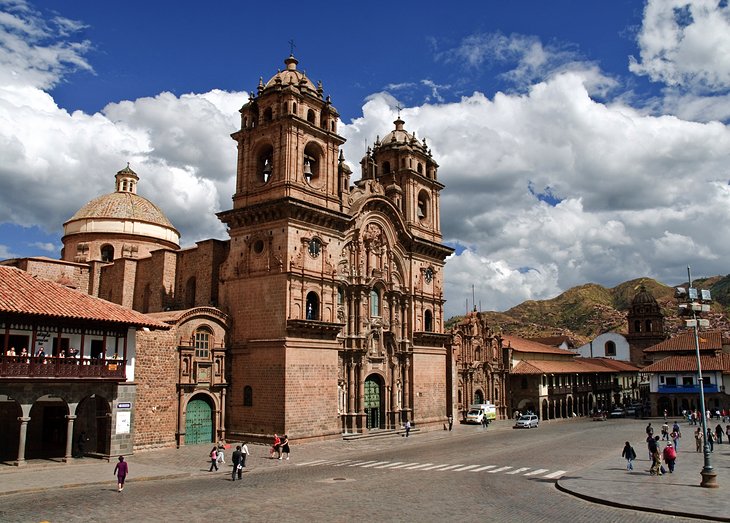
Compania de Jesus, usually called La Compania, is a Jesuit church built in the 16th century. It was badly damaged by the 1650 earthquake but was rebuilt and finished in the late 1660s. La Compania was the source of considerable controversy when it was built, because its grandeur threatened to surpass that of the cathedral in the same square.
The bishop of Cusco complained about the church's lavish design and the argument was finally brought to Pope Paul III to arbitrate. The Pope sided with the bishop, but by the time word of his decision reached Cusco, the Jesuits had almost completed La Compania.
So the Pope's decision had little effect, and La Compania's impressively ornate Baroque façade still rivals the cathedral. It is particularly beautiful when illuminated at night. But even the ornate façade doesn't prepare you for the magnificent gold altarpiece studded with polychrome statues.
La Compania is built on the foundations of the palace of Huayna Capac, the last ruler of the united Inca Empire, whose rule extended over much of present-day Peru, Bolivia, Ecuador, Argentina, Chile, and southwestern Colombia.
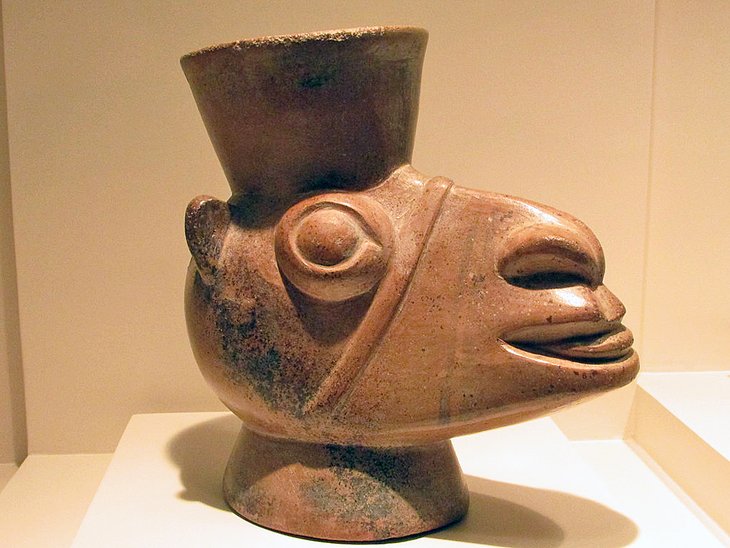
The Pre-Columbian Art Museum contains about 450 pieces from the storage rooms of the Larco Museum in Lima, whose collections are too vast to be shown there. On display (and with English signage) are jewelry; ceramics; gold work; weavings; silver work; and other artifacts from the Nasca, Moche, Huari, Paracas, Chimú, Chancay, and Inca cultures, dating from 1250 BCE to 1532 CE.
In addition, a room is dedicated to paintings from the Escuela Cuzqueña — the Cusco School — and a hall to wooden sculptures. The collection is relatively small but very well chosen, and housed in the former mansion of the conqueror Alonso Díaz.
Address: Plaza de las Nazarenas 231
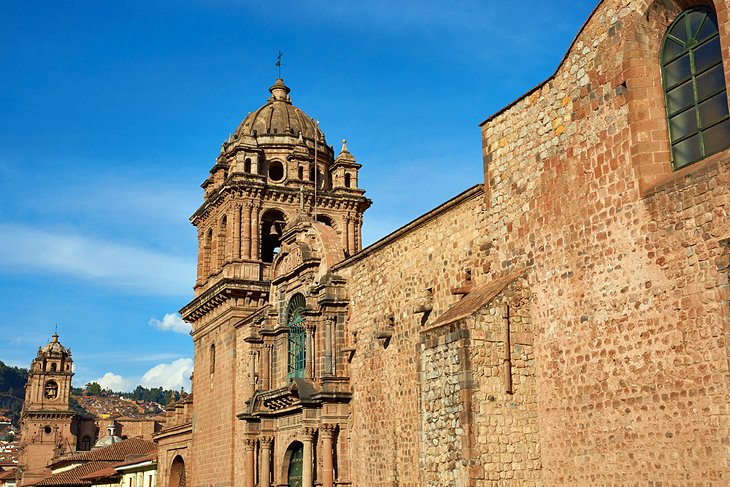
The Baroque church and convent of La Merced was built between 1657 and 1680, replacing an earlier church built here in 1536 and destroyed in the 1650 earthquake that devastated much of Cusco.
La Merced is considered the third most important colonial church in Cusco, after the cathedral and La Compania. The most precious of the church's treasures is in the sacristy, a gold monstrance set with precious stones and a giant pearl (held to be the world's second largest).
Inside the church are a carved choir and 18th-century paintings based on the life of San Pedro Nolasco, who founded the Order of La Merced. Several outstanding lunettes picturing scenes from the life of the Virgin Mary were painted by an anonymous Cusco master at the turn of the 18th century.
The two-story cloister is especially beautiful. The church is just south of the Plaza de Armas.
Address: Mantas 121, Cusco 08002, Peru
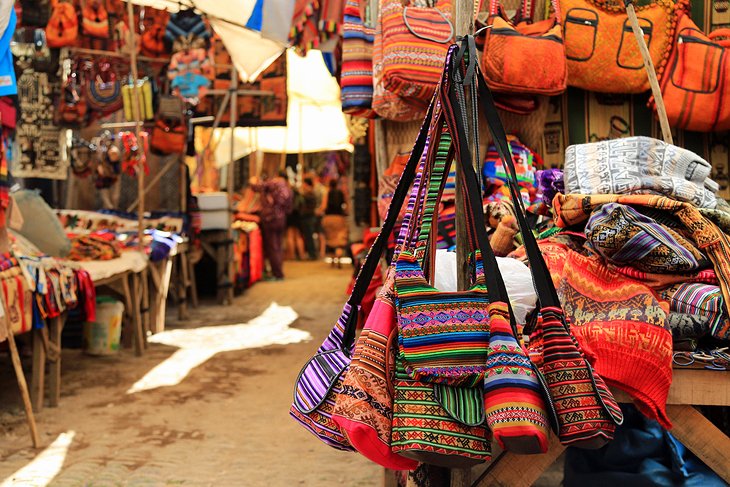
The San Blas neighborhood rises on a hill to the northeast of the Plaza de Armas. This area is known for its narrow cobbled streets filled with small art galleries and artisan workshops, as they have been since Inca times.
This area comes to life in the evenings when the shops and restaurants open, but San Blas Plaza is lively all day on Saturday, when it is filled with colorful market stalls.
At the end of the plaza is the adobe church of San Blas, from 1562, with an ornate gold Baroque altar and an exceptional pulpit carved from a single tree. Legend holds that the skull upon which the sculpture of St. Paul rests its foot is that of the pulpit's creator.
A terrace above the plaza offers good views across the red-tile rooftops of Cusco.
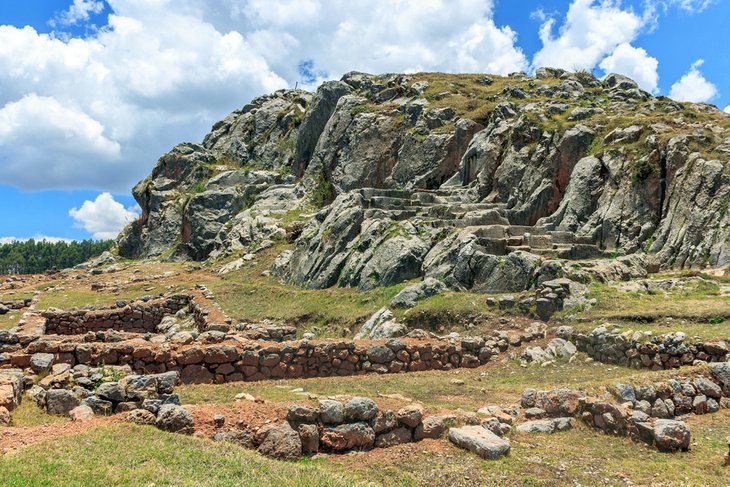
A relatively small archaeological site compared to others nearby, Qenqo is particularly interesting and especially puzzling to historians, as its exact uses are unknown. The entire remaining complex was carved out of a single solid rock, including its underground chambers and unusual winding channels.
What these channels were intended to hold — water, blood from sacrifices, or chichi (beer) have been speculated — is unknown, but they zigzag down through the site.
Early accounts from the time of the Incas describe the entire stone site covered in a layer of gold. Two upright stones at the upper area appear to have formed an Intiwatana, similar to the "Hitching Post of the Sun" at Machu Picchu and used for astronomical observations.
Qenqo is about four kilometers from the center of Cusco.
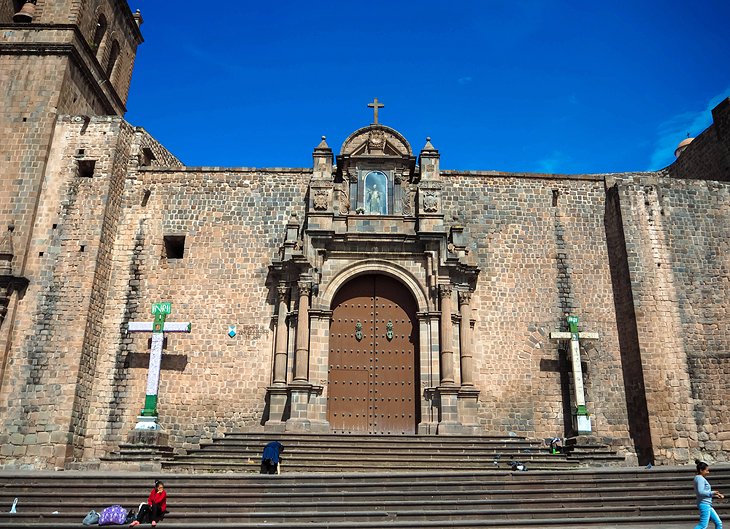
The church and monastery of San Francisco, a few blocks southwest of the Plaza de Armas, is a large church built in 1572 and restored after the 1650 earthquake. While the church itself is not spectacular, it does contain a beautiful carved cedar choir and a good collection of colonial art, with works by Marcos Zapata and Diego Quispe Tito.
A monumental — 12 by 9 meters — painting by Juan Espinoza de los Monteros shows the family lineage of St. Francis of Assisi, founder of the Franciscan Order, and around the cloister are paintings with scenes from his life.
Two crypts below the church have human bones arranged in patterns, a feature found in Franciscan churches elsewhere.
Address: Plaza de San Francisco, Cusco
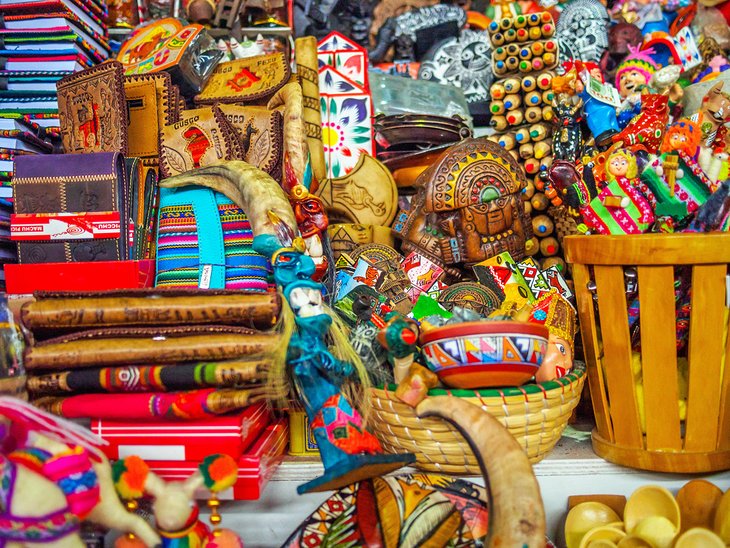
To get a sampling of local life, visit the busy and colorful San Pedro Market on any day of the week, especially in the morning while locals are shopping for their day's food. Local fruits and vegetables are displayed in colorful mounds, and an entire section is devoted to ready-to-eat foods, where you can get an inexpensive meal any time of day.
Look for the colorful displays of dried fruit snacks, as well as stacks of pan chuta , a local bread. Hand-knit sweaters and hats, as well as woven rugs and blankets made from alpaca yarns, are popular souvenirs, as are colorful handmade fabric dolls.
Address: Calle Tupac Amaro, Cusco
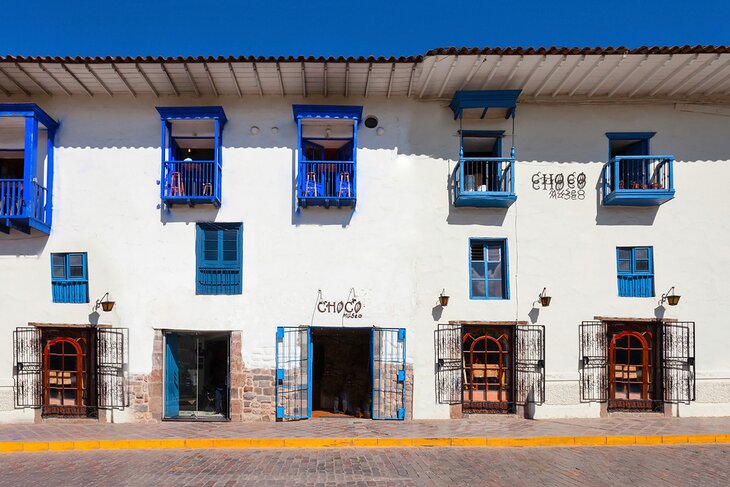
Chocaholics will have their fill at the Choco Museo, a free-to-visit museum that teaches visitors about the history and cultural significance of chocolate, from harvesting the plant to the final product. Hands-on displays allow you to touch and smell the cacao beans, and staff is ready to answer any questions.
If you want an even more in-depth look, you can participate in their "bean to bar" workshop, which allows you to be a part of each step. You will try Mayan chocolate beverages, and even bring home your own creations. You can try your hand at more advanced chocolate-making skills in a truffle workshop .
A cooking class starts with sourcing fresh ingredients from the San Pedro Market, and ends with a traditional Peruvian meal. If you enjoy both coffee and chocolate, be sure to check out the "Tasting Explorer" sessions.
For those who are fascinated with the origins of this tasty bean, the museum offers a two-day plantation tour that includes meals and a stay at the cacao farm. Here, you will learn about growing cacao as well as coffee and local fruits, and learn more about everyday life on a Peruvian farm.
Address: Plaza Regocijo 216, Cusco

More on Peru
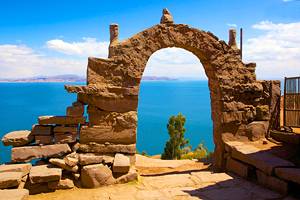

50 Fun Things to Do in Cusco, the Ancient Inca Capital
Dear reader: This article contains links to products and services that I may be compensated for, at no extra cost to you.
Cusco is the ancient capital of the Inca empire and gateway to Machu Picchu. It is known for its Spanish convents sitting atop Inca foundations, plethora of ruins, Quechua culture, and incredible food.
I had wanted to go to Cusco and Machu Picchu for over 20 years. Other things always got in the way. So when I finally booked it, I spent a solid year planning and looking forward to my trip.
I spend more time planning for Cusco than anywhere else in Peru. What are the best things to see and do there? Which museums and churches are worth visiting (there are so many!) Where should I eat (too many good choices!)? How many days should I spend there and what are the best day trips? What is the Boleto Turistico , and do I need it?
After mapping out everything I wanted to do, I had 5 full days booked in Cusco. This didn’t even include the Inca Trail , Machu Picchu, Aguas Calientes , or Sacred Valley towns of Pisac , Ollantaytambo , and Maras – I would stay in each of those before even getting to Cusco – saving the bustling city for the end of my trip.
As a traveler blogger, I tend to visit EV-RY-THING so that I can filter out what’s actually worthwhile for articles like this. Below I will introduce what I personally feel are the best things to do in Cusco. I have so much info to share that I also wrote separate articles covering where to eat in Cusco , the best museums in Cusco (coming soon), and the ruins around Cusco .
Table of Contents
Cusco Travel Tips
- If you’re flying in (find the cheapest flights here! ), you’re likely to experience some minor symptoms of altitude sickness in your first couple days in Cusco. Get Diamox from your doctor before you come. I also recommend staying in Pisac or Ollantaytambo in the Sacred Valley first, because they are lower than Cusco. I stayed in each of those towns first, then did the Inca Trail to Machu Picchu, then visited Cusco last. I highly recommend this!
- If your time is shorter, and you’re only planning to visit Cusco and Machu Picchu, then don’t plan to visit Machu Picchu until at least the third day. Even though Machu Picchu is quite a bit lower than Cusco, you’ll still want a few days to acclimatize before climbing all those stairs at Machu Picchu.
- If you’re doing the Inca Trail, see my guides to preparing for the trek and what to expect on the classic 4-day hike .
- The Cusco Boleto Turistico (Tourist Pass) is pretty much essential for visiting ruins around Cusco, even though some of the 16 attractions included are not worthwhile. The pass is valid for 10 days and you can buy it here in Cusco or here online . There are also partial options. See my guide to the Cusco tourist pass for the details.
- For my five days in Cusco, I spent two days exploring the historic center around the Plaza de Armas and one day exploring and relaxing in San Blas. Then I did one day trip to the ruins north of the city and another day trip to the ruins east of the city.
- On a tighter schedule, I recommend at least two full days in Cusco: one day for the city center and one for ruins around the city. If you aren’t planning to stay in the Sacred Valley (which I highly recommend!), add a third day for a Sacred Valley day tour like this one or this one .
- I stayed in MOAF Cusco Boutique (see on Booking / Agoda / TripAdvisor ) near Plaza de Armas for visiting the historic center, and I stayed in a private room with an amazing view at Samay Wasi Hostel (see on Booking / Agoda / TripAdvisor ) for my San Blas stay.
- The area around Plaza de Armas is the most touristy but has most of the sights. San Blas is an artisan’s district built on the valley wall, so you have to walk steeply uphill to it, but it is quieter, has amazing views, and is closer to Sacsayhuaman, the ruins above the city.
Map of the Best Places to Visit in Cusco
Top 5 Cusco Attractions
The following are the absolute must-dos in Cusco. In the following sections, I’ll cover others things to see around the main plaza, the best museums in Cusco, things to do in San Blas neighborhood, the best ruins around Cusco, and finally, the best day trips from Cusco.
Plaza de Armas

Cusco’s main square, Plaza de Armas (Plaza Aucaypata), was the center of the Inca Empire. Once a swamp, the Incas drained it at made it a focal point for ceremonies and built their palaces around it.
The Spanish destroyed these palaces and built cathedrals and convents on top of them. Today, Plaza de Armas remains a focal point of the city for locals and visitors alike. It is the epicenter or the historic and tourist district and always bustling with people.
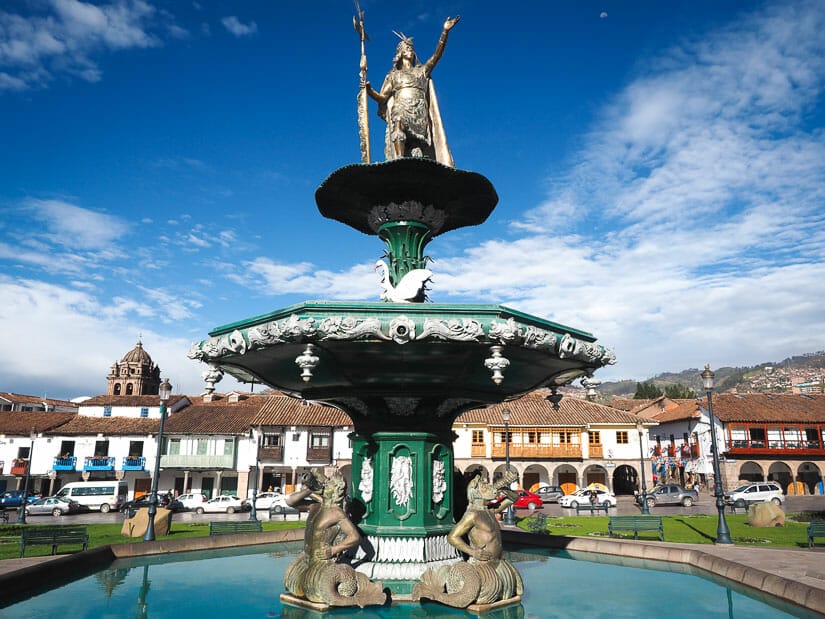
At the center of the square, there is a statue of Pachacuti, builder of Machu Picchu. Cusco Cathedral lies on the east side of the square while the Jesuit Iglesia de la Companía de Jesús is on the south. I’ll cover these are other places to visit around the square in the following section.
One way to enjoy the square without being hassled by pesky vendors is from one of the many restaurant patios overlooking it. A late afternoon pisco sour while gazing at the square is practically a mandatory Cusco experience!
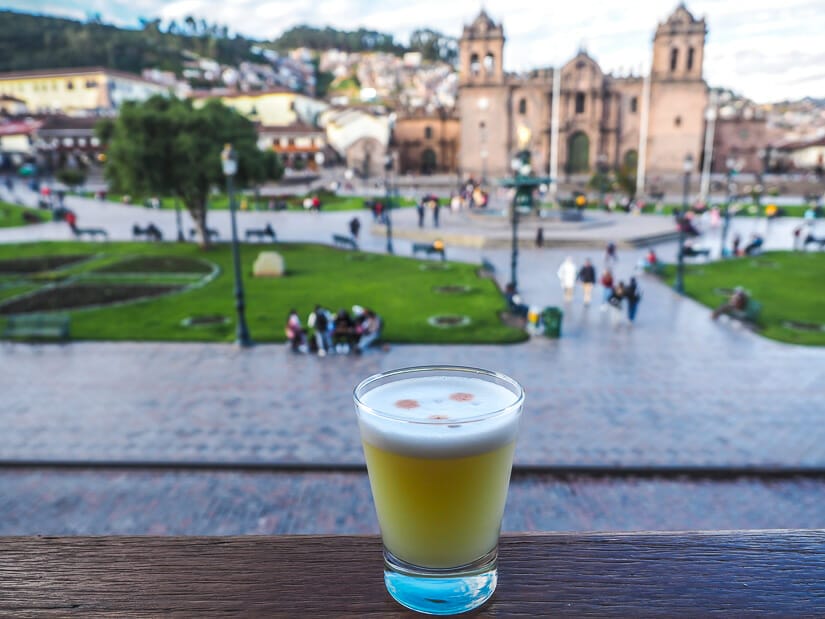
Qoricancha (also spelled Coricancha, Koricancha, Qorikancha), the Golden Enclosure or Temple of the Sun, was the most important temple in the Inca Empire. This round stone temple was once covered in gold plates, with large statues of corn and animals, and a huge Sun Disk.
As they tended to do, the Spanish built their Convent of Santo Domingo right on top of it. Today, you can still see the round Inca base (see the dark gray section in the above photo) while peering across the large Jardín Sagrado (Sacred Garden) below it.
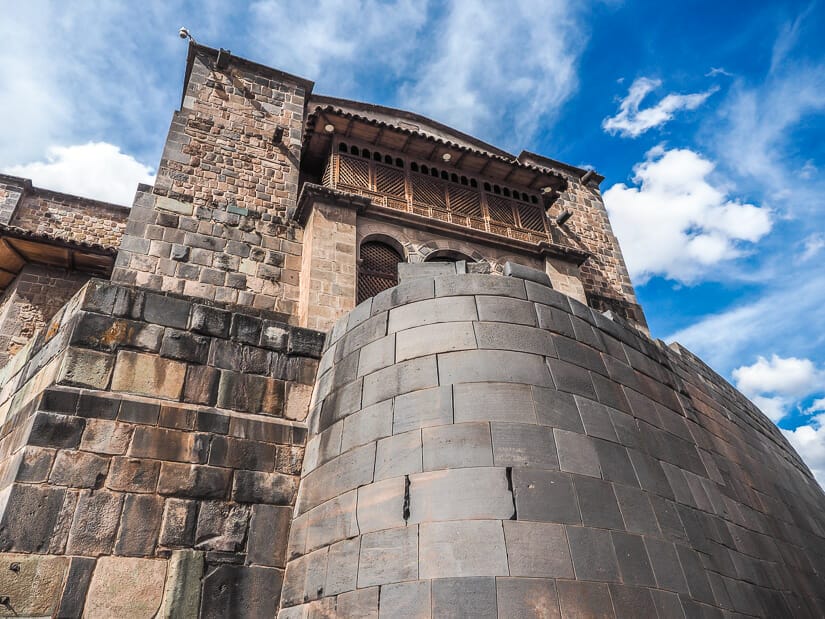
To get to Qoricancha, follow Calle Loreto down from the southeastern corner of Plaza de Armas. This 400-meter lane is one of the best-preserved Inca streets in existence. It is the start of the southern route of the Qhapaq Nan , a series of Inca roads that spread out in each direction from the Plaza to every corner of the empire.
Visiting Qoricancha, you’ll enter the convent and find a group of ancient Inca structures around a Spanish courtyard. Photography is allowed, except of the Cusco School paintings. On the second floor, there are art displays and views looking down on the Sacred Garden.

From the second floor, you can also access the “high choir” (second-floor loft) at the back of Santo Domingo Church, with some impressive artifacts and artwork, and a view looking down on the church (no photography). From there, you can also climb a narrow stone staircase to the church’s belltower, for an incredible view looking down on the city (see image below).
Despite being one of the city’s top attractions, Qoricancha is not included on the Boleto Turistico. Entrance is 15 soles plus 5 soles for the high choir. When I visited, it was open 9 to 5:30 (despite GoogleMaps saying 8:30) and closed on Sundays.
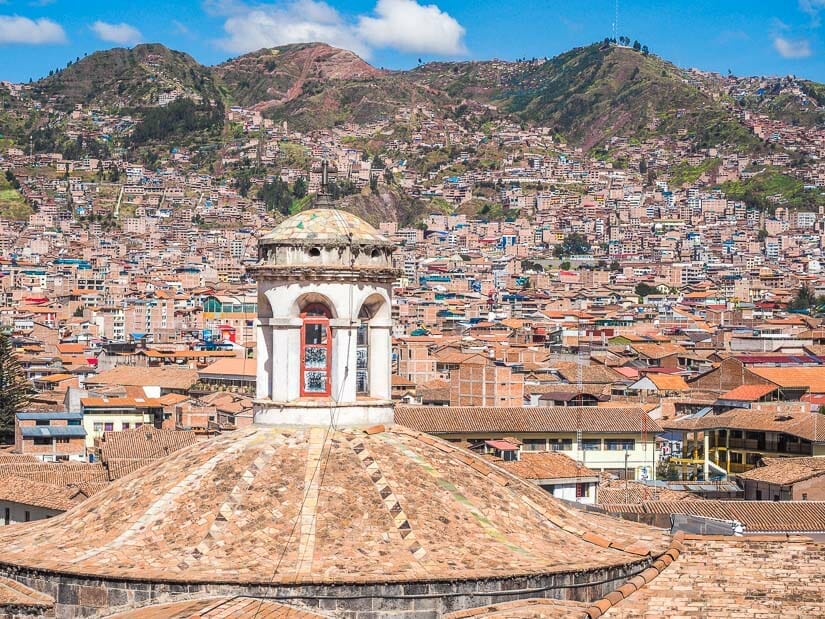
Sacsayhuaman

Famously pronounced like “Sexy Woman”, Sacsayhuaman (Saqsaywaman) is the most well-known ruins in Cusco. This immense fort sits at the top of the valley north above the Plaza de Armas. Since Cusco is said to be shaped like a puma, Sacsay forms the puma’s head.
Sacsayhuaman was an Inca fortress that protected the northern entrance to the city. It stands out for the sheer size of the stones in its walls (the largest is 28 feet tall and 300 tons!) and signature zigzag walls.
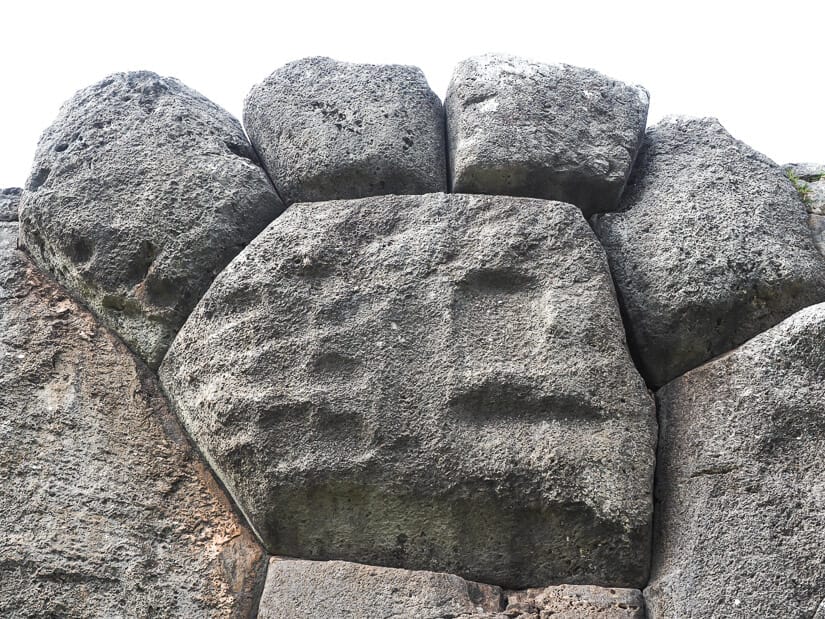
Many stones in the walls are said to be shaped like things, with the most famous being the puma paw stone (see my guide to Cusco’s ruins for how to find it).
The ruins of Sacsayhuaman are expansive and take a couple hours to explore. Although the ruins sit right on the lip of the valley, you can’t actually see them from the Plaza de Armas. You can see a cross up on the hill, though, west of the big white Jesus statue. The cross marks the edge of the ruins.

You can walk all the way up to the ruins in 20 to 30 minutes from Plaza de Armas, but the walk is almost totally uphill. You’ll be huffing and puffing by the time you get up there! Alternatively, take a taxi or tour like this one .
The ruins open at 7 AM. If you actually get there at that time, like I did, you’ll most likely have the ruins entirely to yourself. There’s no map on site, so either do some research in advance or hire a guide at the entrance.
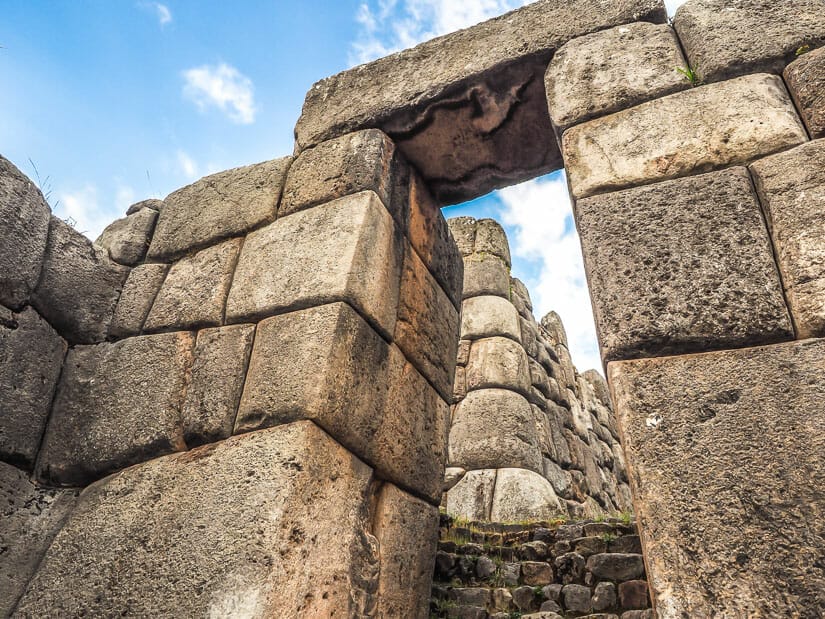
The ruins are included on the Boleto Turistico . To make a half or full day of it, it makes sense to combine Sacsayhuaman with three other ruins also included on the Boleto and a few other sites north of the city (see ruins section below).
Also see more info in my guide to 30 ruins in the Cusco region.
Cusco’s Restaurants
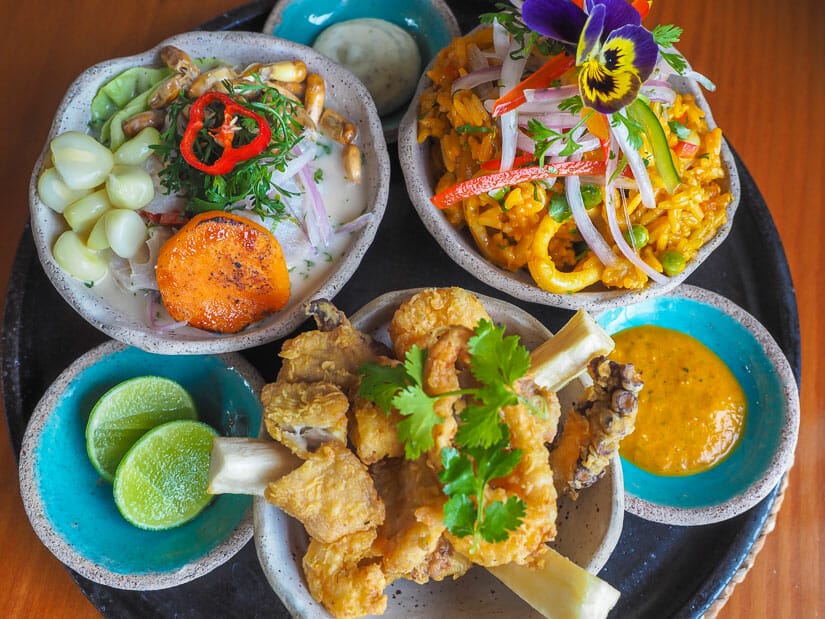
One of my biggest surprises in Peru was just how delicious the food is. Every meal I had was photogenic and bursting with flavors, colors, and textures.
Eating was a major highlight of my Cusco visit, so I’ve written this separate guide to the best restaurants in Cusco . Some of my personal favorites were Green Point Vegan Restaurant, Limo for Nikkei (Japanese-Peruvian food), Ceviche Seafood Kitchen for ceviche, Kusykay for organic farm-to-table food, and Yaku for creative dishes at surprisingly low prices.
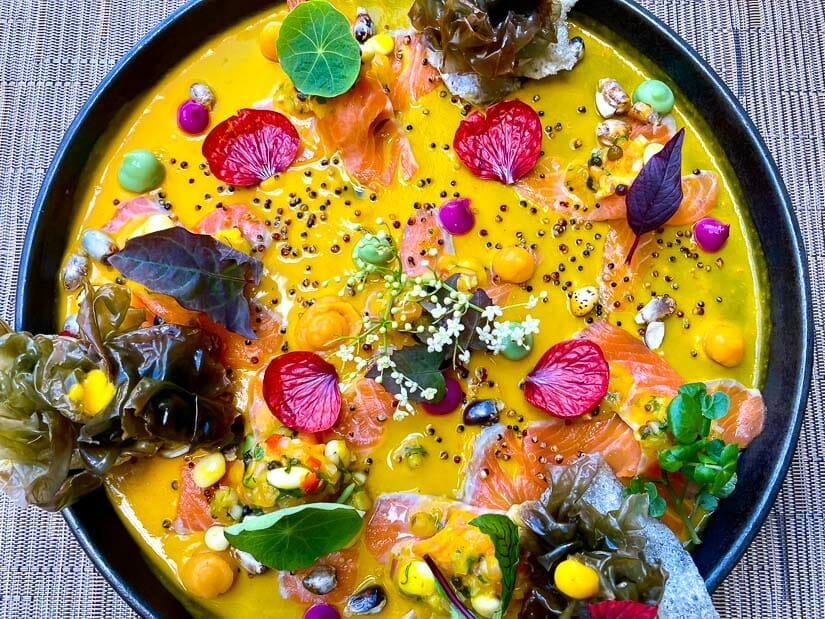
I also had excellent organic coffee at Café Ricchary, Instagrammable ice cream at Qucharitas, life changing cocktails at Museo del Pisco, and the best beer at Sacred Valley Brewery. I’ve included all the restaurants, bars, and cafes mentioned here on the map above.
Bohemian San Blas

San Blas is the district covering the valley wall directly east of the Plaza de Armas. Walking east of the plaza, you’ll first find a tourist district with many hotels, restaurants, and a few notable attractions (see below).
As soon as the streets start climbing steeply uphill, you’re in San Blas. The neighborhood is often described as “bohemian”. In the past, and still today, many artisan shops, cute cafés, restaurants, and bars can be found there.
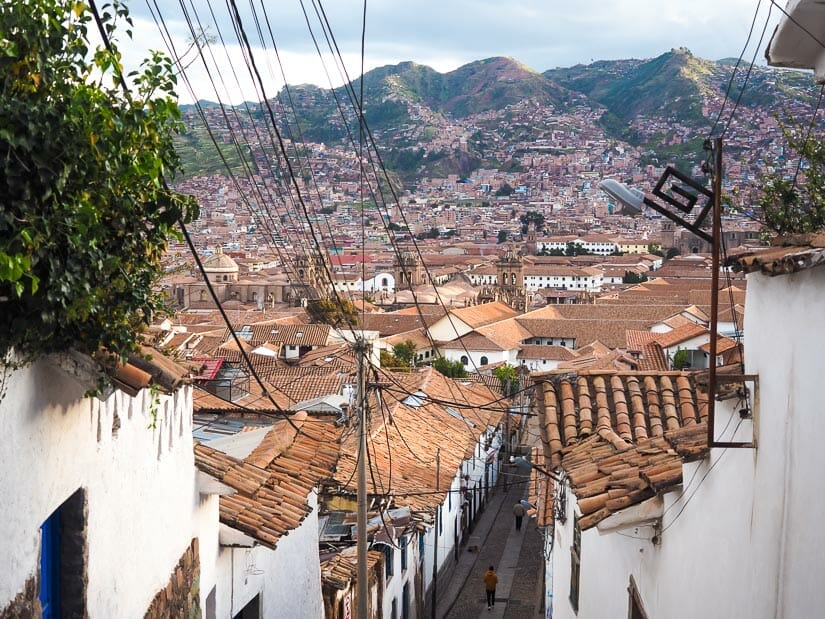
You can expect quiet, atmospheric lanes, lots of street art, and views that only get better as you continue to climb uphill. There is also less hassle in San Blas compared to the tourist areas around the Plaza de Armas.
For my 5-day stay in Cusco, I spent half of it in this hotel near the plaza, and half in this hostel in San Blas. The plaza hotel was convenient for exploring the main sights in the historic district, while the hostel in San Blas was perfect for relaxing, views, and for walking to Sacsayhuaman, since it’s already halfway there.
I’ve got a whole section of things to see and do in San Blas below.

More Things to Do around Plaza de Armas
Several of Cusco’s top attractions are on or near the Plaza de Armas. I’ll start with those right on the square then branch out from there. Since there are so many museums in Cusco, I’ll cover most of those in the following section below.
Cusco Cathedral
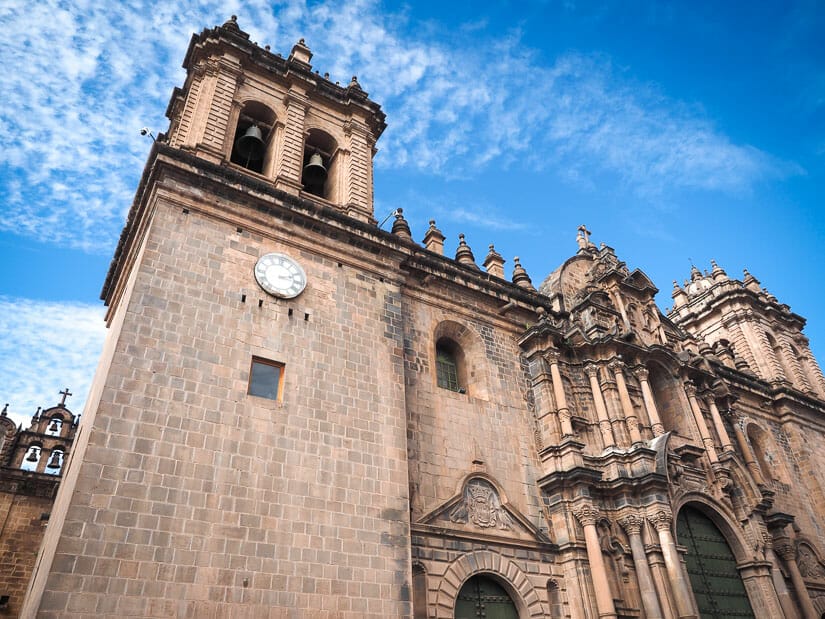
The Cathedral Basilica of the Assumption of the Virgin, or Cusco Cathedral, is one of the city’s top sights. The Spanish built the cathedral atop the palace of Inca Wiracocha using stones robbed from Sacsayhuaman.
The massive Cathedral occupies the eastern side of the Plaza de Armas. It actually consists of three connected buildings: Iglesia de Triunfo (a smaller church on the right, which you will enter through), the Cathedral itself in the middle, and Sacrada Familia (another auxiliary chapel, to the left, which you will exit from).

The Cathedral has a renaissance exterior and baroque interior with 24 arched ceilings. It contains over 400 impressive paintings from the Cusco School. These include the famous Last Supper painting with Jesus and the disciples eating guinea pig – find it behind and to the right of the main altar in the Cathedral.
Also watch for the painting of locals parading a Jesus statue around after the great earthquake of 1650. It’s the oldest painting in Cusco. You can see it three naves back from the passageway from the Cathedral to Sagrada Familia. The original statue itself is also housed in the Cathedral, in an alcove on the Triunfo side.
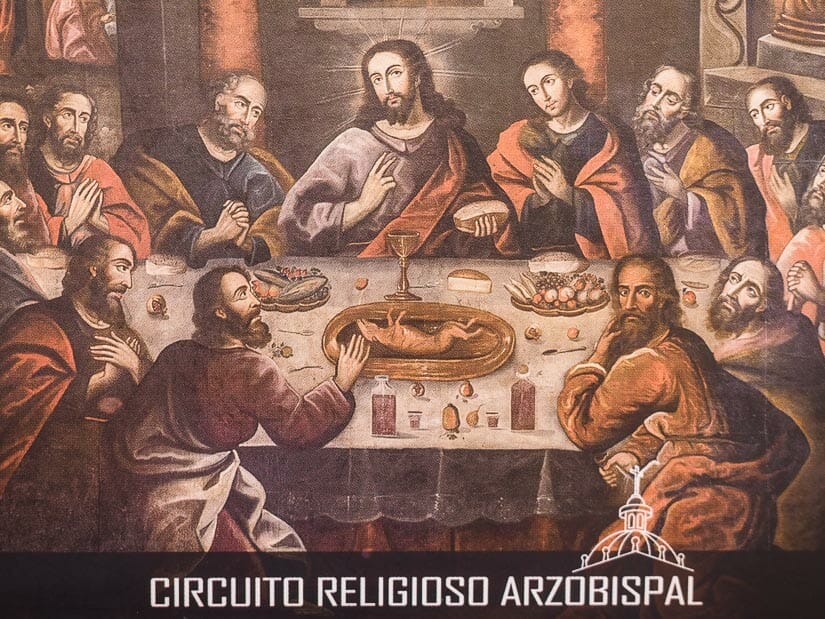
No photography is allowed inside the Cathedral and it is considered respectful to dress appropriately, i.e. no shorts, tank tops, etc. It is open from 10 am to 6 pm. The worshipping time is 6 am to 10 am.
Entrance to the Cathedral is 40 soles. If you also plan to visit San Cristobal Church and the Museo de Arte Religioso (which I’ll introduce below), it makes sense to buy the Boleto Religioso (also called Boleto Integral) , which includes entrance to all three for 50 soles.
Church of the Society of Jesus
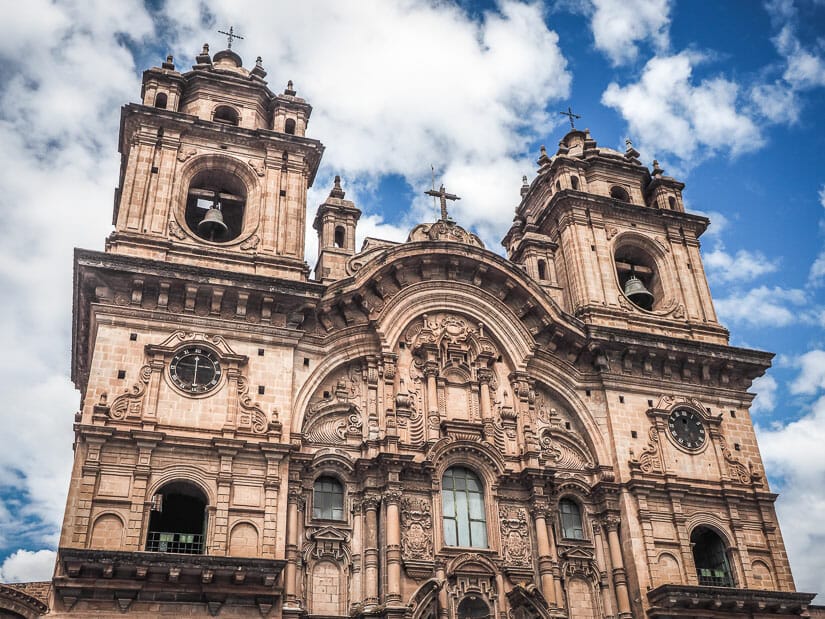
On the south side of the Plaza de Armas is another large church, the Jesuit-built Church of the Society of Jesus, or Iglesia de la Companía de Jesús.
The Jesuits built this church with an even more impressive façade than the Cathedral itself, which caused a rivalry between them the Cusco Archbishop. It is considered one of the most beautiful baroque churches in all of Peru. It was built on top of the palace of Inca Huayna Capac.
Inside, you’ll find the largest altar in all of Peru, standing 21 m (69 ft) tall and built of cedar. In the nave to the left of the altar, you can follow some stairs down into the crypt.

Next, head back towards the entrance and watch for the tiny entrance on the east side to a narrow, rickety staircase going up. This will take you to the high choir on the second floor, for a view looking down on the main hall. There are also two windows for looking out at the Plaza de Armas. Pictures are only allowed from these two windows but nowhere else inside.
Entrance to the church is 10 soles and it is open 9 to 11:45 AM (every day) and 1 to 5:45 PM (weekdays only).
Selfie with Baby Alpacas
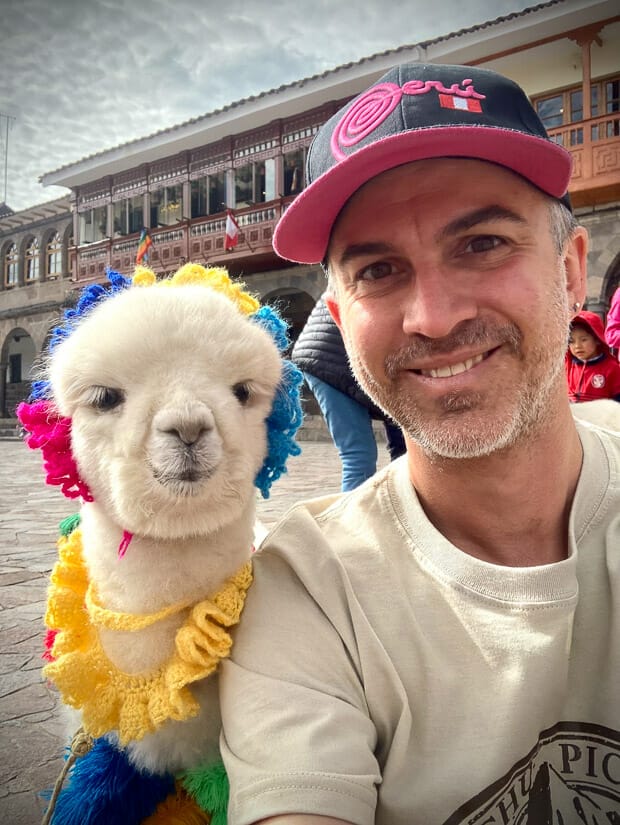
Spend any amount of time in the Plaza de Armas, especially in front of the Cathedral, and you’ll notice many ladies who bring baby alpacas around to pose for pictures with tourists.
Yes, it’s a super touristy thing to do, and you may have ethical objections, which is understandable. But who doesn’t want a picture with a cute baby alpaca?
A couple soles is a reasonable donation to give for taking a few pictures. They may try to ask for more, but this is what locals would give.
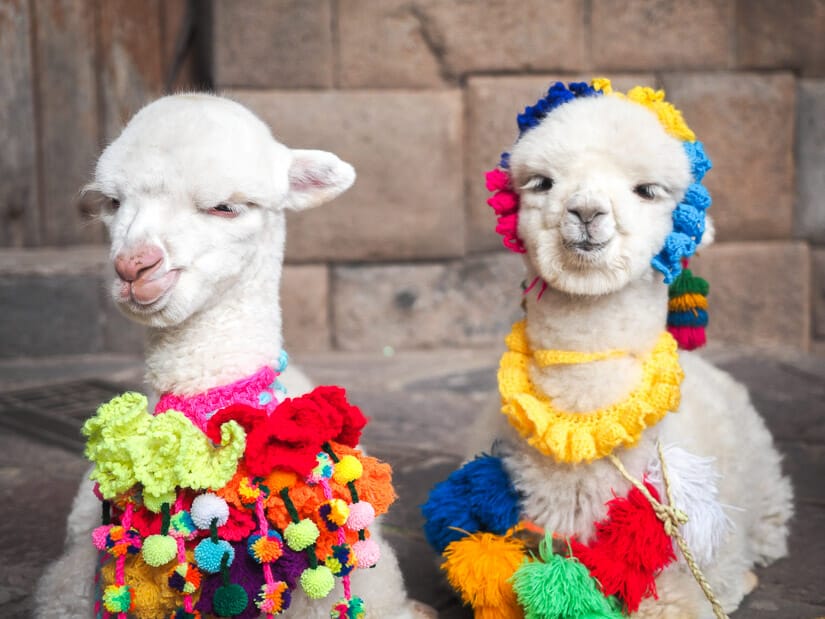
San Francisco Convent and Museum
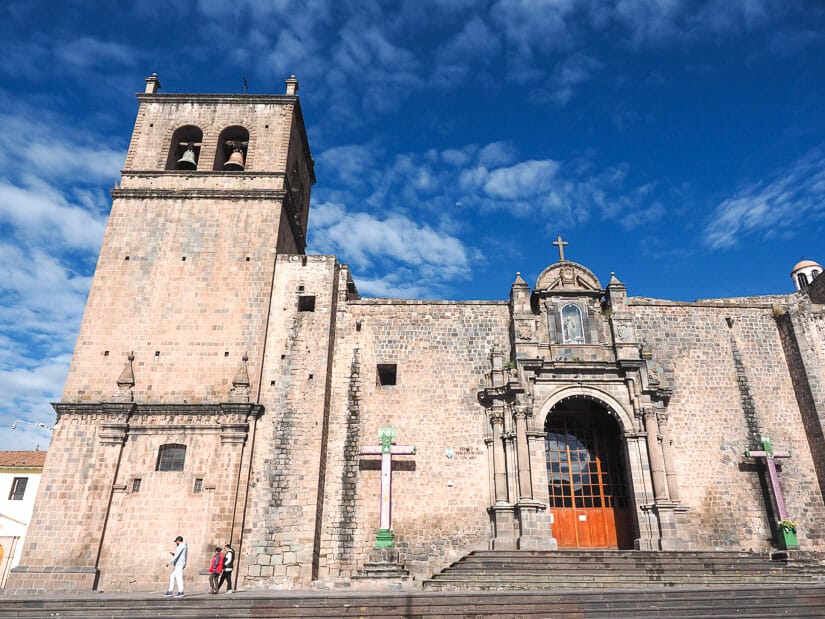
Moving away from the Plaza de Armas, there are two lovely smaller squares to the west of it: Plaza Recocijo & Plaza San Francisco.
Facing the latter, San Francisco Convent Museum and Catacombs (Museo y Catacumbas del Convento de San Francisco de Asís de Cusco) has one of the best church museums in Cusco . You’ll enter the convent and museum building, which is to the south, while the church itself is north of it.
The convent and its library of ancient books are beautiful, but there are two additional reasons to visit. The first is the chance to see arrangements of human bones in the catacombs (but nowhere near as impressive as those in the convent of the same name in Lima – see my recommended Lima itinerary for all the details of that one).
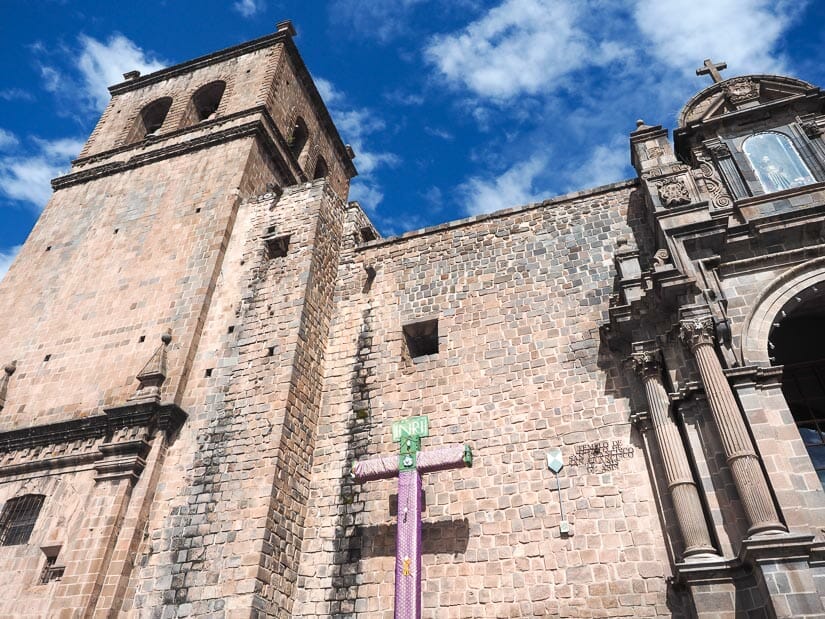
The second reasons is to see the largest painting in South America (9 x 12 meters, or 30 x 40 ft). It shows the family tree of Francis of Assisi. It’s in one staircase going up the second floor. Another staircase has another painting almost as large.
Entrance to the convent is 15 soles. Unfortunately, photography is not allowed inside. When I visited, a guide was assigned to me, I suspect mainly to make sure I didn’t take any photos. There are far fewer visitors here than at the Cusco Cathedral.
Basilica Menor de la Merced

After Cusco Cathedral and Church of the Society of Jesus, Iglesia de la Merced is the 3rd most important church in Cusco. The church is just south of Plaza Recocijo, on the main road leading from Plaza de Armas to Arco de Santa Clara and San Pedro Market (see below).
The church itself is open 8:30 am to 12 and 2 to 5 PM daily, but closed on Sundays. To the left of the church when facing it, there’s also a museum inside Merced Convent. Try to visit between 8 and 11 am when this part is open.
The museum contains several beautiful paintings, a cool palanquin for carrying dead bodies (note the animal handles), a catacomb, and it’s most precious object: a 1.2 meter solid gold and bejeweled monstrance (the container that holds communion wafers during church mass). It’s in a room at the back – if the door is locked, ask them to open it for you.
Entrance to the church is free, while the convent museum is 20 soles. Photos are not allowed, especially in the monstrance room.
Arco de Santa Clara
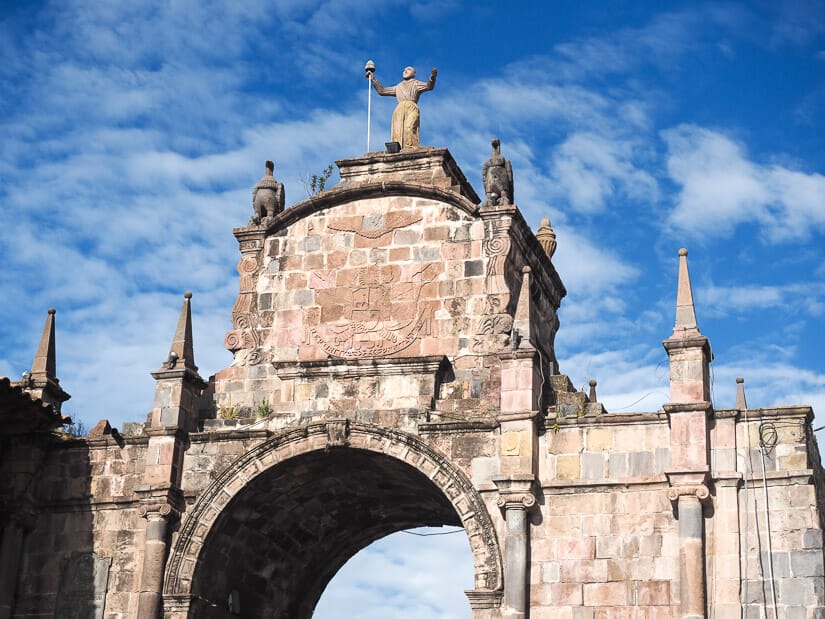
This is a lovely arch over the street called Arco de Santa Clara. You can find it by walking about three blocks southwest from the southwestern corner of the plaza, just past Plaza San Francisco. It is just around the corner from San Francisco Convent and Museum.
The arch was built in 1835 to commemorate a short-lived Peru-Bolivia confederation. You’ll pass right under the arch on the way to San Pedro Market (see next entry).
San Pedro Market
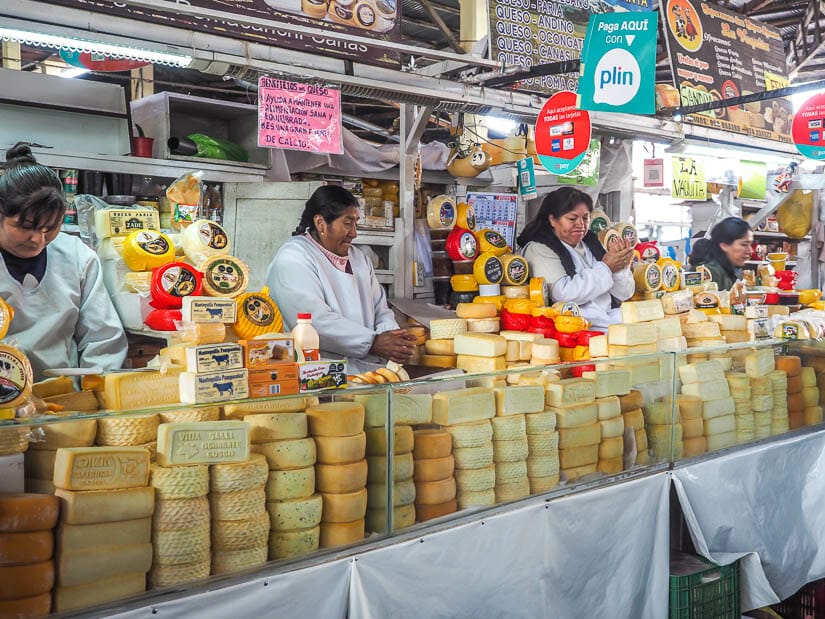
San Pedro Market (Mercado Central de San Pedro) is Cusco’s most famous market. While it is very much a local market, it is the one that tourists are most likely to visit. It is only a 10-minute walk southwest of the Plaza de Armas, one block past Arco Santa Clara.
In the market, you’ll find row upon row of stalls selling produce, meats & seafood, Andean cheese, household products, and more. Towards the back is the food court area, if you’re looking for a cheap local meal. On Saturday mornings, the market is especially bumping, with vendors spilling out into the streets around it.
I recommend getting one of the delicious freshly blended juices in the market. There are no less than 100 numbered juice stalls – I had mine at stall #97! They have English menus, or you can just point at whatever fruits look tasty that day.
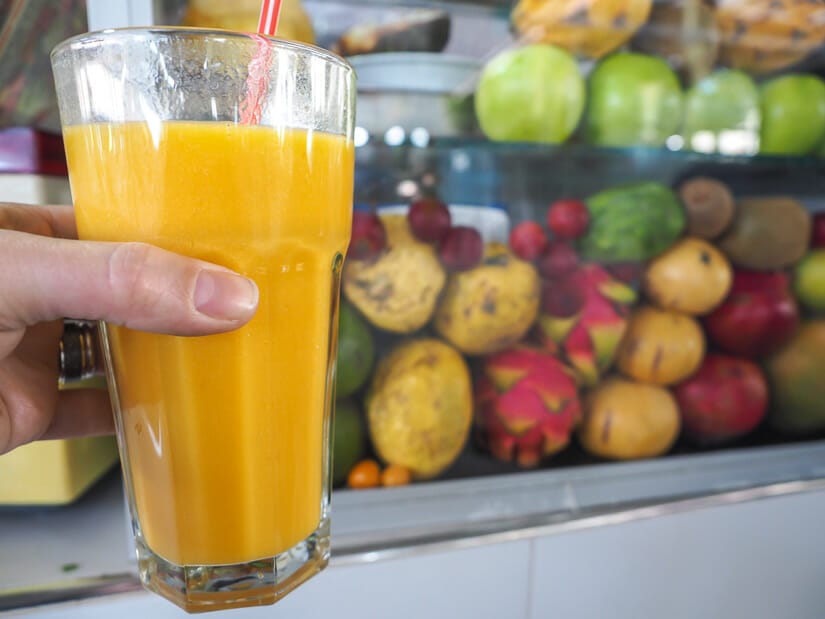
Plaza Tricentenario
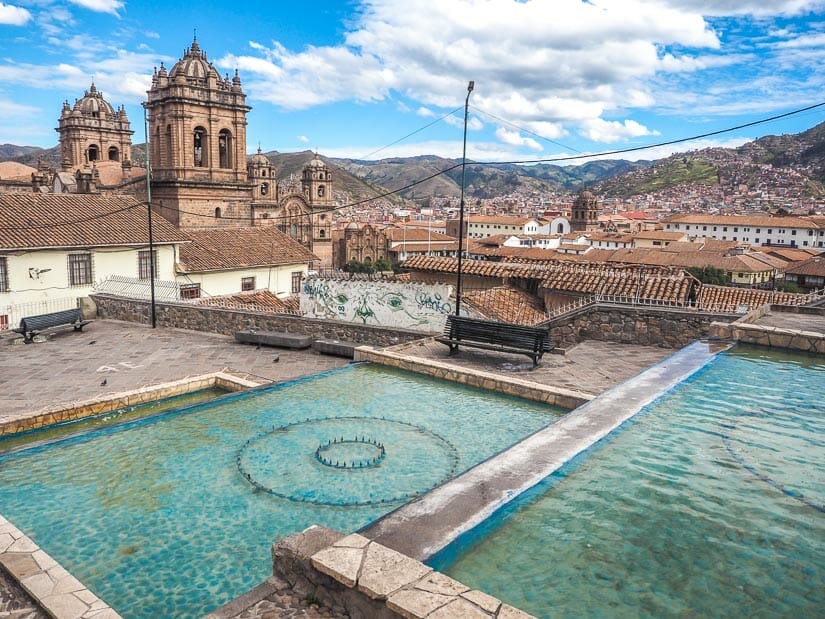
We’re moving now to the eastern side of Plaza de Armas, where a large number of hotels and restaurants are concentrated. Just up from Plaza de Armas, there’s a small square called Plaza Tricentenario which offers a great view of the plaza.
There’s a water fountain and walls that you can climb to get good pictures of the square. The Museo Inka (see Museums section below) is right next to the square, while the Museo de Arte Precolombino and Wall of the Seven Snakes are another block in.
Wall of the Seven Snakes

Wall of the Seven Snakes (Muro de las sieste Culebras) is a small but very cool attraction.
Here you can spot several snakes engraved into the stones of an Inca stone wall (I actually counted more than seven, with some on either side of the corner). The wall faces the small Plazoleta de Nazarenas, where you’ll also find the excellent Museo de Arte Precolombino.
The small alley formed by the wall with the snakes is named after it (7 Culebras) and is especially cool.
12, 13, and 14 Angled Stones

The 12-angled stone (Piedra de los 12 ángulos) is a famous rock in the outer wall of Archbishop’s Palace (which houses the Museo de Arte Religioso – see next section). The rock is so famous that it has its own Wikipedia page and is a symbol of Cusco.
You can find the stone on Calle Hatunrumiyoc. It’s pretty easy to find, and you’ll often see people around it or photographing it. However, the 13 angled stone and 14 angled stone are less famous and tougher to find, but both are now marked on GoogleMaps.
There are also puma and serpent shapes formed by stones on Choqechaka street, around the corner at the back. It’s a bit of a struggle to find them (the below image should help!) Parts of them are sometimes blocked by shop tables.

Catfetín Cat Café
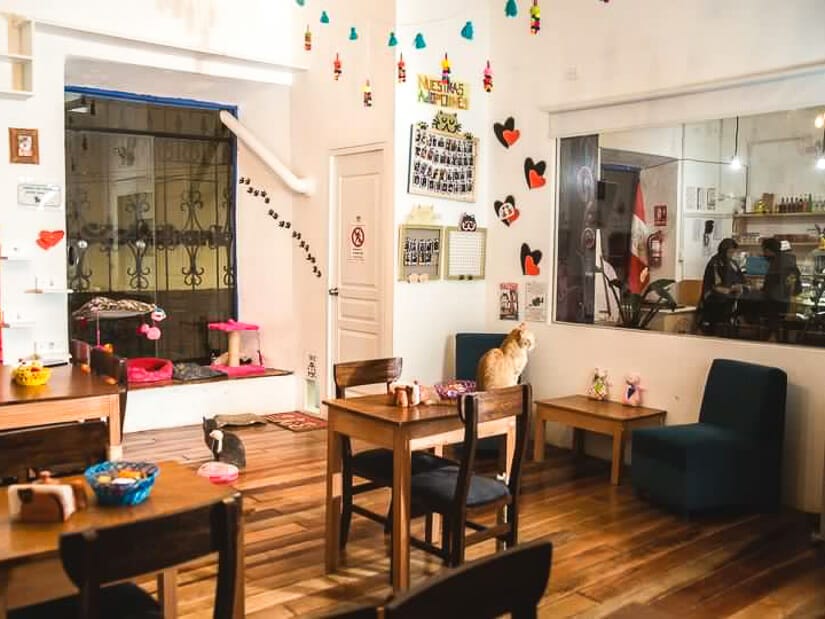
Did you know that there is a cat cafe in Cusco?! Catfetín Cat Café has everything you need in order to be happy. In other words, they have lots of cats! The cafe has a regular cafe room and a separate cat room, where must of the cuties are. To enter the cat room, you just need to make a small donation. Follow their Instagram page to see all the fluffy guys.
Besides the main attraction, the cafe has delicious crepes, juices, desserts, and other items. The staff can speak English. The cafe is just down the street from the next entry. Consider stopping here after your morning visit to Coricancha!
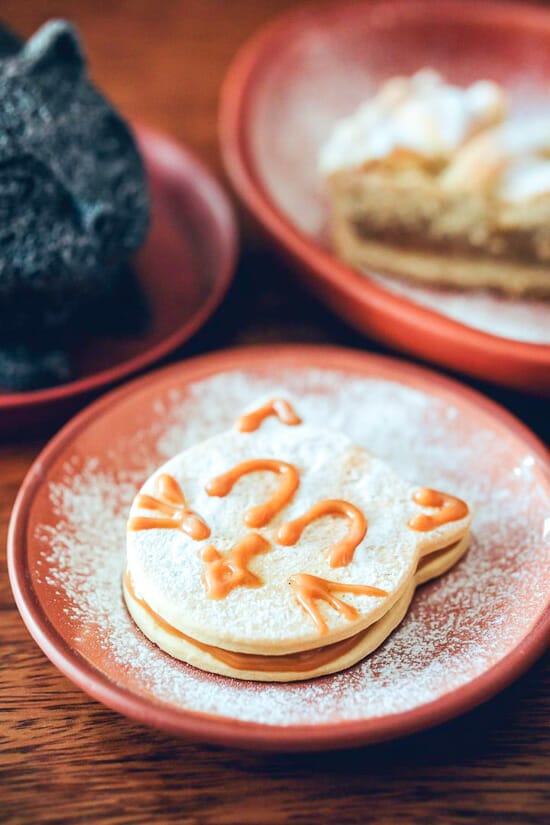
Kusicancha Ruins

A final attraction worth mentioning around Plaza de Armas, this time to the south of it, is the Kusicancha ruins. These are what’s left of the palace where Pachacuti, the builder of Machu Picchu was born and raised.
The ruins are not super impressive, but you’ll pretty much pass right by them if you’re walking from Plaza de Armas to Coricancha. Unfortunately, the gate providing access to them is often locked, but if you can catch a guard, they’ll let you in for free. You can still see them from the glass walls around them, especially on the north side.
You can follow the lovely Romeritos lane from there to Coricancha. If you need a morning coffee, Three Monkeys café is nearby – the once famous bicycle coffee cart is now permanently parked in the café.
Best Museums
There are so many museums in Cusco. Their quality varies from quite bad to pretty OK. To make things more complicated, only 6 of them are included on the Boleto Turistico (including some of the worst ones), while some of the best ones are not included on the pass.
To figure out which ones are good and which are not, I visited them all (so you don”t have to!) Find which are worth visit and which are not in my Cusco museums article .
I’ll summarize the best of them below. Only three of the below are on the Boleto (Regional Historical Museum, Monumento Inca Pachacutec, and Centro Qosqo de Arte Nativo). The rest have separate entrance fees.
Museo de Arte Precolombino
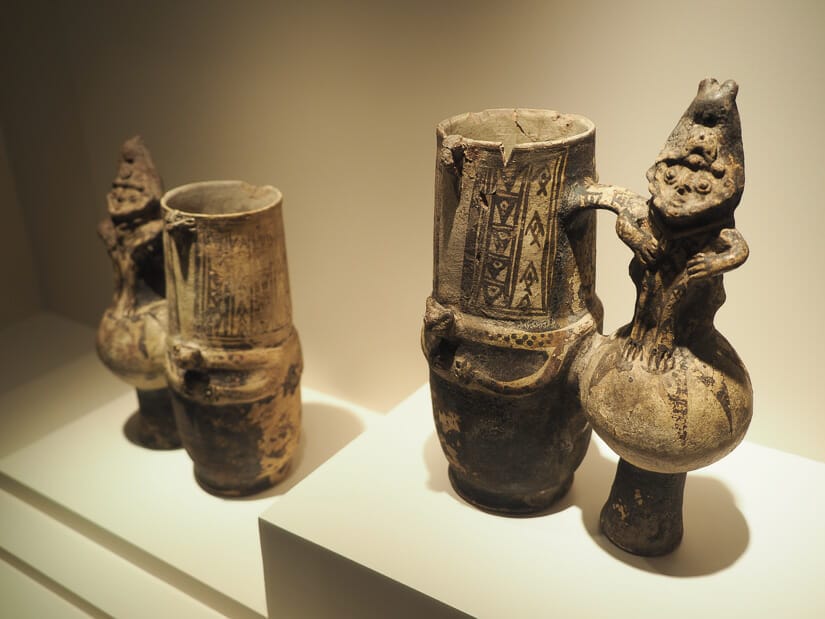
MAP is, in my opinion, the best museum in Cusco. It was the only one that was well organized and felt like a modern museum (most others consist of randomly displayed artifacts inside old Spanish mansions). It is run by the same foundation that manages Larco Museum, arguably the best museum in Lima.
The museum includes galleries on silver, gold, wood, pre-Inca, Inca, Northern Peru, Central Peru, Southern Peru, and more. The artifacts are beautifully displayed in 12 rooms.
The excellent MAP Café in the internal courtyard serves traditional Andean dishes in an upscale setting. The Wall of the Seven Snakes and Plaza de las Nazarenas are right outside. To get to the musem, follow the road uphill to the west of Cusco Cathedral, past Inka Museum (see below) and Plaza Tricentenario.
Entrance is 20 soles. It is not included on the Boleto Turistico. Photography (no flash) is actually allowed, unlike most museums (especially the church ones) in Cusco.
Museum of Monastic Life
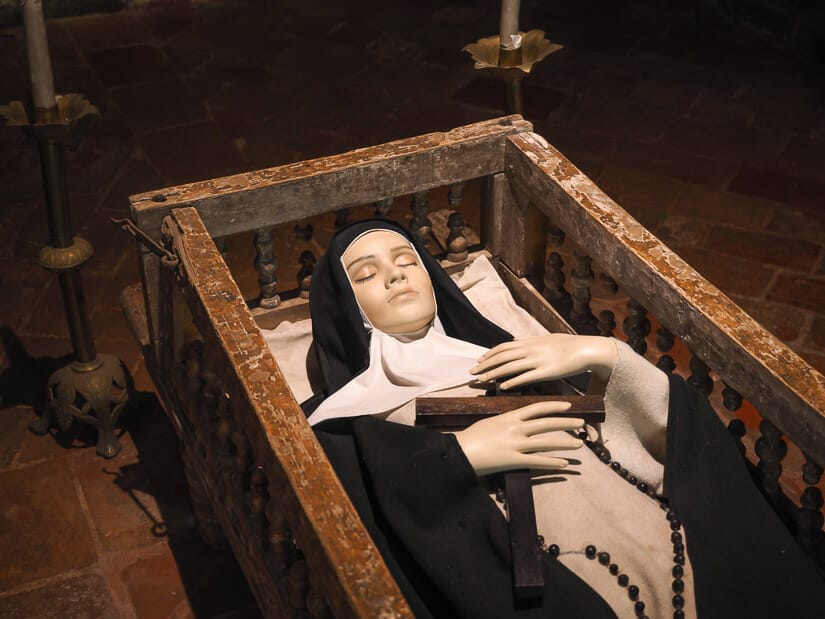
My second favorite museum in Cusco was the Museum of Monastic Life (Museo Del Monastério De Santa Catalina De Siena), which is housed in the Santa Catalina Monastery (Monasterio de Santa Catalina de Nuestra Señora de Los Remedios) just southeast of the Plaza de Armas.
Santa Catalina Monastery is a working Dominican Convent. It was built atop Acllahuasi, a so-called “House of Virgins of the Sun” in Inca times.
The museum displays the strictly cloistered life of the nuns, complete with eery statues of them in their study rooms, dining room, sleeping quarters, and even a mortuary room. There’s also an excellent collection of Cusco School paintings.
Photography is actually allowed here (no flash). This is the only place I visited in Cusco where photographing the Cusco School paintings is allowed, and the only church museum that allows photos.
Entrance is 8 soles and it is not included on the Boleto Turistico.
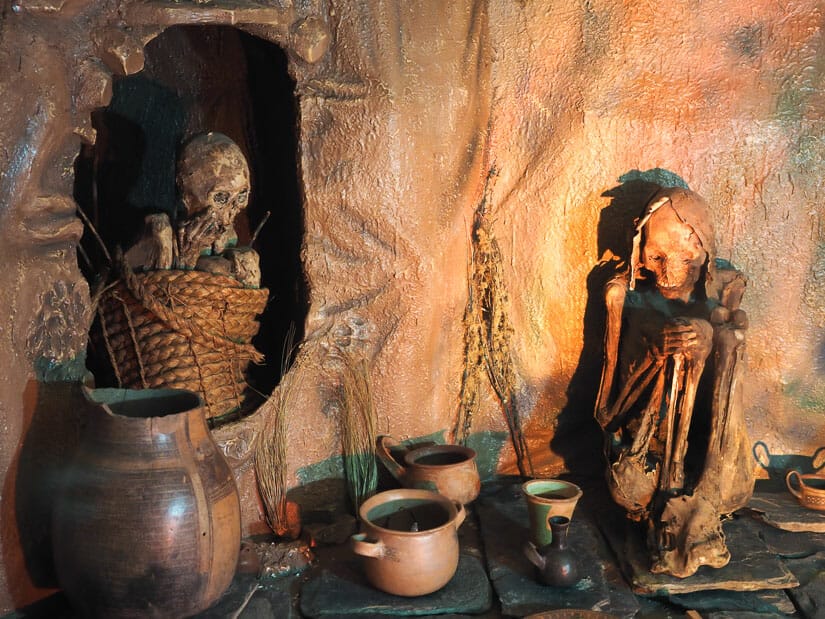
The Museo Inka is considered the best Inca museum in Cusco. It felt dated to me, but was still better than several others.
Like many museums in Cusco, it is housed in a Spanish colonial home built on Inca foundations. In this case, it was the house of Aldrete Maldonado, and often called the Admiral’s Palace.
The main highlights include several mummies, a large collection of Inca cheros (ceremonial chicha cups), and a corner column on the second floor that looks like a bearded man from the inside, but a nude woman from the outside.
In busier times, they sometimes have weaving demonstrations in the courtyard. The entrance fee is 20 soles and it is not included on the Boleto Turistico. It is beside Plaza Tricentenario, which I described above, and close to the better Museo de Arte Precolombino.
Museo Machu Picchu Casa Concha
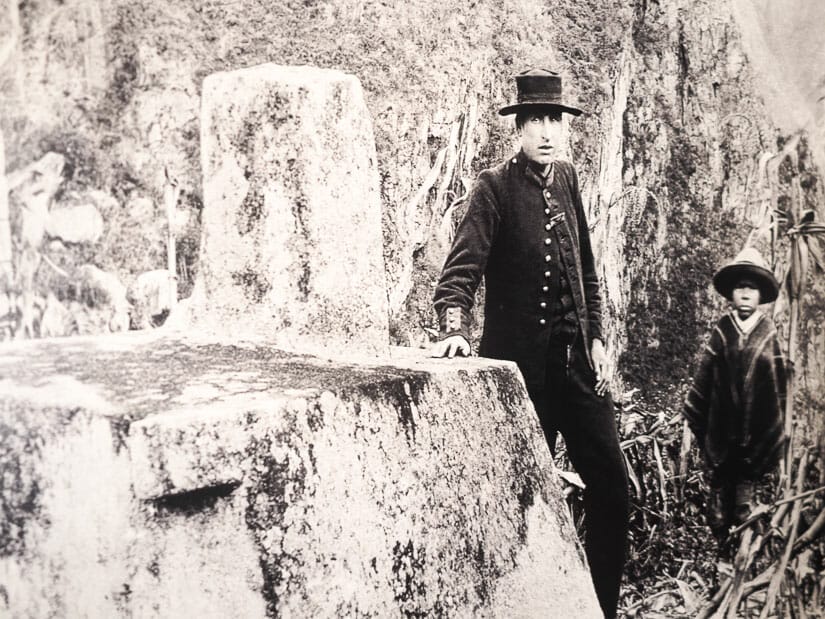
A small but significant museum is Museo Machu Picchu Casa Concha. It was established to house the artifacts taken by Machu Picchu “discoverer” Hirama Bingham in 1911 and returned to Peru by Yale University in 2011.
The artifacts themselves won’t blow you away. However, I enjoyed the museum for its black and white images of Hiram Bingham and Machu Picchu at the time he found it. There’s also a cool model of Machu Picchu and a couple mummies.
The museum is housed in a colonial building atop the palace of Tupac Yupanqui, son of Pachacuti. Entrance is 20 soles and it is not included on the Boleto Turistico.
It is just one block from the Plaza de Armas and a few steps from the Museum of Monastic Life (see above) and Museo Maximo Laura (see below).
Museum of Religious Art
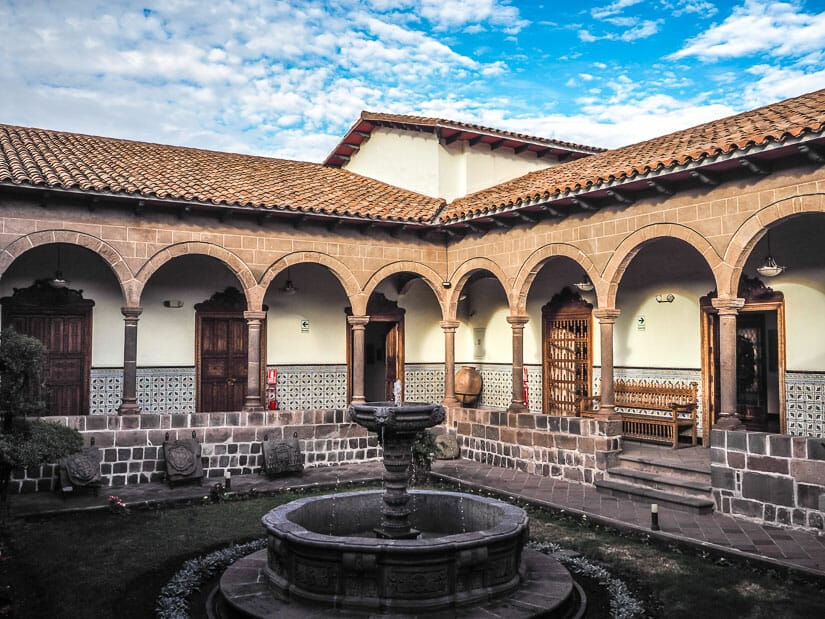
The Museum of Religious Art (Museo de Arte Religioso) houses some of the best Cusco School paintings in the city. The museum is housed in the Archbishop’s Palace, whose outer wall has the famous 12-angled stone.
Here you’ll find works from some of the most famous Cusco School artists like Diego Quispe Tito and a whole collection of works depicting the Virgin Mary. There’s also a small 18 th century chapel inside with a gold-covered baroque altarpiece.
Entrance is 10 soles. If you’re also visiting the Cusco Cathedral and San Cristobal Church, it’s a little cheaper to buy the Boleto Religioso (Boleto Integral) for 50 soles. Photography is not allowed except in the courtyard.
Regional Historical Museum
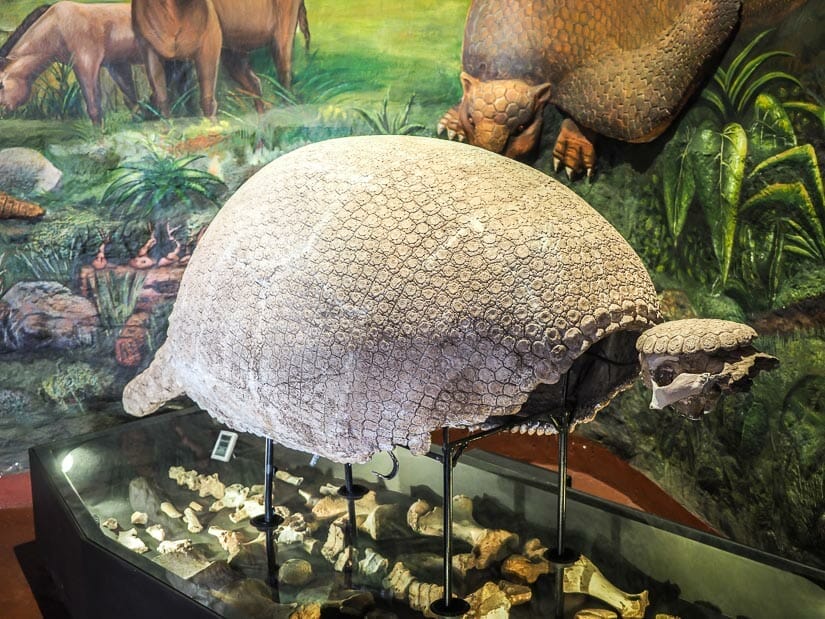
In my opinion, only 3 of the 6 museums and cultural attractions on the Boleto Turistico are worth visiting. The Regional Historical Museum is the only one that is a museum, but it is not as good as the other museums listed above.
The museum is housed in (once again) a Spanish house atop Inca foundations. The small collection of displays cover the ancient human, animal, and paleontological history of Cusco. There are a few cool artifacts, paintings, and a replica of the Inca sun disk.
It is located west of the Plaza de Armas, so consider stopping in for 15 minutes on the way to San Francisco Museum & Catacombs or San Pedro Market.
Monumento Inca Pachacutec

The Inca Pachacutec Monument is a 30-meter monument consisting of a statue of Pachacuti (builder of Machu Picchu) atop a stone tower.
The monument is in the middle of a small park and traffic circle. You can enter the stone tower and climb the spiral staircase to the feet of the statue for impressive city views. There are a few small and uninteresting displays inside the tower.
While the monument is included on your Boleto Turistico, it’s quite a ways from all other attractions.
From Qoricancha, it’s a 20-minute walk along Avenida del Sol to the statue. I actually enjoyed this walk, because it was a chance to get out of the tourist district and see normal life in Cusco. On the way, I made a small detour to Mercado Wanchaq, a very local and non-touristy market.
I recommend walking to the monument, which is slightly downhill the whole way, then taking a taxi back to the historic center.
Centro Qosqo de Arte Nativo
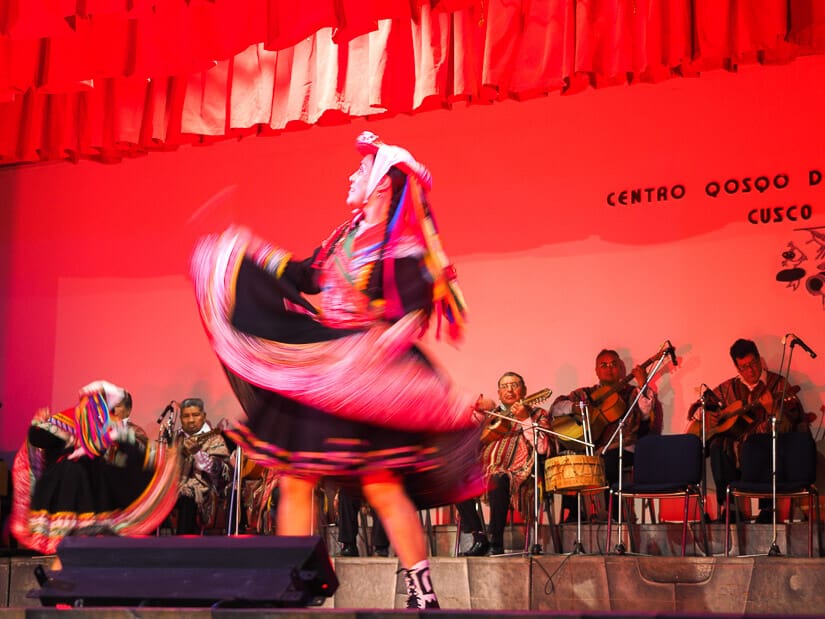
This one is not a museum but a traditional dance center, but I mention it here because it is included on your Boleto Turistico.
The performance starts every night at 7 PM and lasts about one hour. The venue is old, but the dances are worth watching if you’re interested in local Quechue and Peruvian culture.
The Center is located just down from Coricancha on Avenida del Sol. Unless you’re into bar hopping, you probably don’t have much to do in the evening after dinner anyways, so you might as well check it out!
Choco Museo

ChocoMuseo is a chain with two locations in Cusco, another in Ollantaytambo, and two in Lima (the Pisac one is now closed). There are even a few outside of Peru now.
It is more of a chocolate shop than museum. I’ve been to all of the ones in Peru, and the one is Cusco is actually the closest to a museum, because it has some chocolate sculptures and windows where you catch watch people actually making the chocolates.
Come here mainly to buy all kinds of chocolate products (bars, covered quinoa, liquors, teas, candles, soaps, etc.) or to take part in one of their bean-to-bar chocolate making classes. These classes should be booked online in advance.
Museo Maximo Laura

The final museum that I recommend you consider visiting in Cusco is the small but impressive Museo Maximo Laura. Maximo Laura is a renowned tapestry weaver. The Peruvian government has even designated him a National Living Human Treasure under UNESCO guidelines.
The works displayed in the museum/shop are incredibly intricate and colorful – I really recommend taking a look, even if you don’t care about weaving. There’s a small donation box inside.
The museum is right next to Museo Machu Picchu Casa Concha and Museum of Monastic Life. Photography seems to be allowed inside.
Other Museums
The other museums which are included on your Boleto Turistico but aren’t worth your time (in my personal opinion) include Museo de Arte Popular (in the basement of the place you buy the Boleto), Museum of Contemporary Art (so boring), and Qoricancha Site Museum (currently closed).
For more information about these, see my guide to the Boleto Turistico (coming soon).
San Blas & San Cristobal
One of the best ways to enjoy San Blas, the artisans district up the hill from Plaza de Armas, is to just choose a road leading to it, walk up (steeply up, that is) and explore. You’ll uncover surprises like interesting shops, cute cafés, street art, and the higher you go, awesome views.
Still, there are a few sights worth mentioning in San Blas and neighboring San Cristobal.
San Blas Cathedral and Plaza
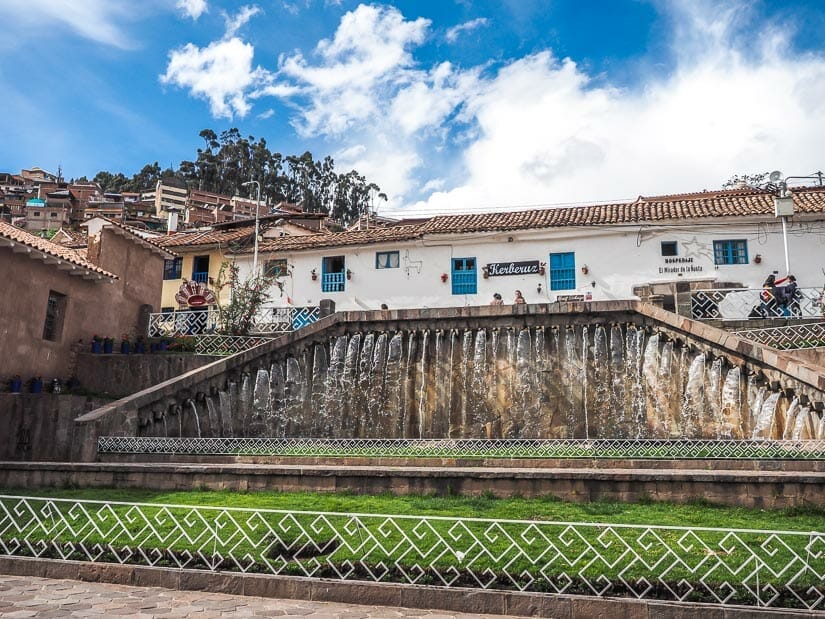
Templo del San Blas (San Bas Cathedral) and Plaza de San Blas are the focal point of this district. However, when I visited in 2023, San Blad Cathedral was undergoing major renovations, totally closed, and not looking very nice.
The small square beside the cathedral is lovely, but the renovations and many cars parked there are taking away from it for the time being. Once the renos are finished, you can expect entrance to the cathedral to be added back to the Cusco Boleto Religioso as it was before.
Coca Museum
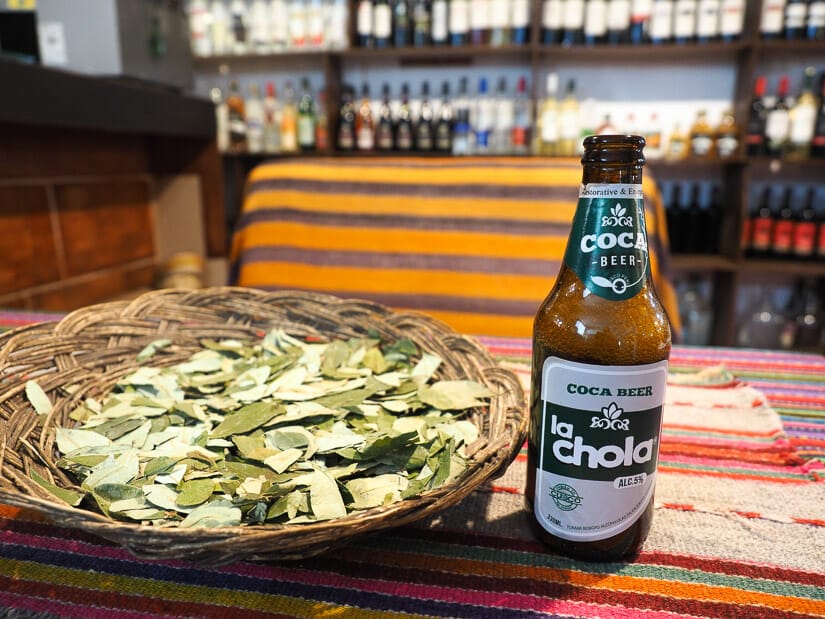
This Museo de Coca is right on San Blas Plaza. The museum is small and quite low budget (for example, display signage was printed off a home computer. There is information about the history and use of coca leaves for medicinal, ceremonial, and narcotic purposes.
The most interesting thing to me was the large collection of products (like Coca Cola!) that do or once did contain coca. They also sell various coca products, like coca candies, coca tea, and even coca beer (I had one but it was not good). Keep in mind that it is most likely illegal to bring any of these back to your country.
Entrance is 10 soles.
Limbus Restobar
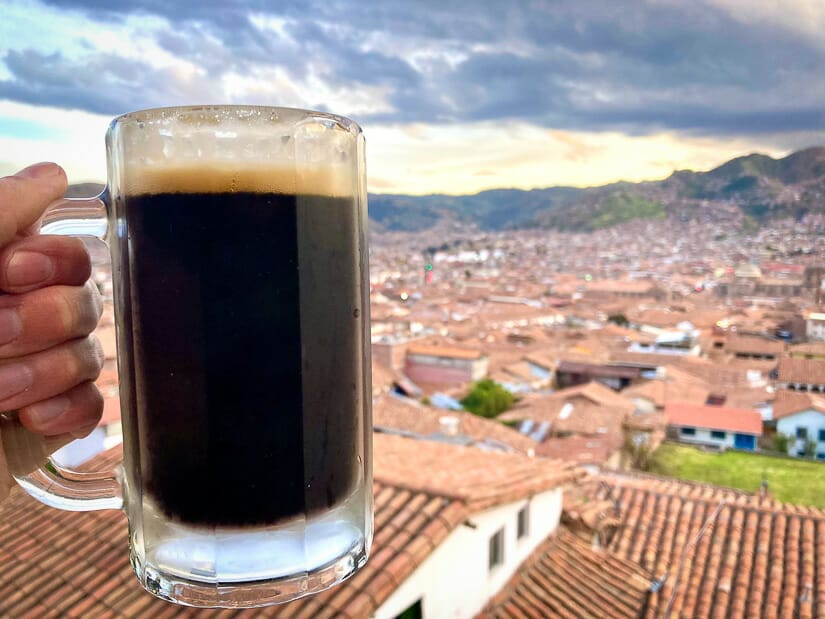
Billed as the restaurant with the best view in Cusco, it’s hard to disagree when you sit on the outdoor patio at Limbus Restobar.
The food is below average, but at least the beer is good! Their cocktails are also fun and Instagrammable, with some of them coming in unusual containers, with smoke, and so on.
While Limbus is the most popular restaurant in the area, several others nearby have equally good views and are less crowded. Try Aura Restobar, ViewHouse Restobar, or music-focused Black Bird.
I also recommend Samay Wasi hostel nearby. The private room I stayed in had a view just as good as Limbus!
San Blas Viewpoint
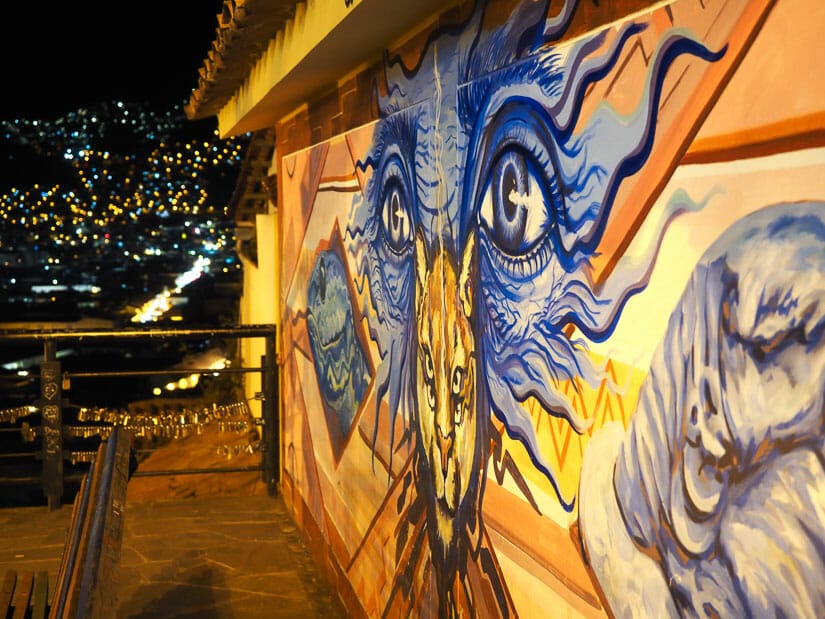
To enjoy the same views for free, head to Mirador San Blas, just a few steps up and around the corner from Limbus. The large terrace here is a popular spot for local youths and couples (note all the love locks on the fence in the photo above).
While I felt safe here, even at night, others have reported that they didn’t. So it might best to avoid going alone at night.
L’atelier Café Concept
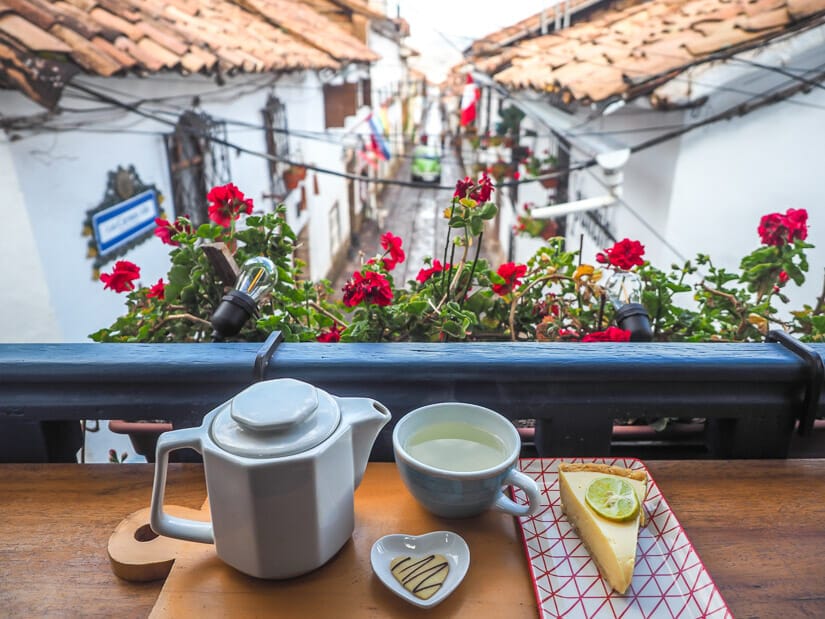
One café in San Blas stands out for its particularly unique view. That would be L’atelier Café Concept. The café is at the end of a pretty and very typical San Blas street, Carmen Alto.
If you can manage to score the sweet spot in the café, which is in a niche overlooking the street, you’ll enjoy one of the best views to be had in San Blas.
Seven Borquitos Street
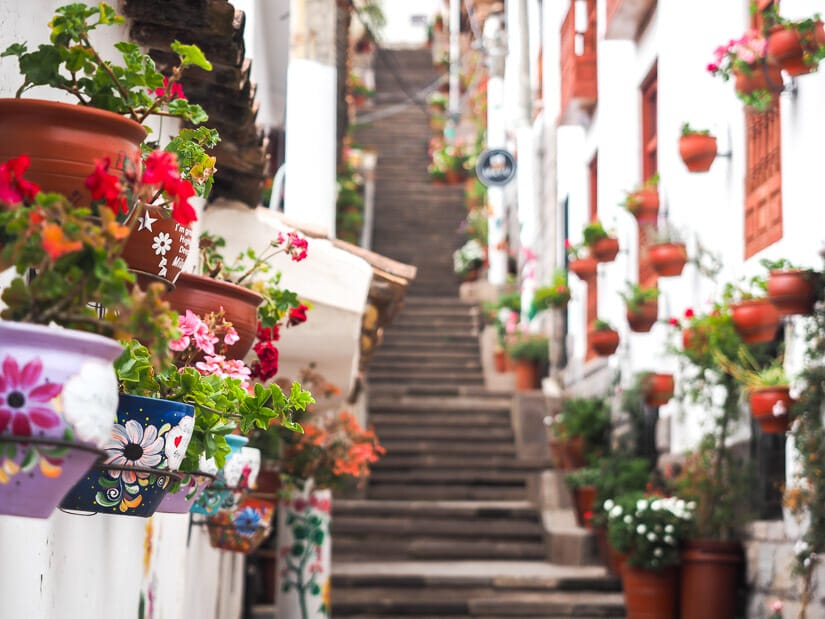
Siete Borreguitos is an incredibly picturesque staircase around the meeting point between San Blas and San Cristobal neighborhoods.
Flower pots lining either side have made this into one of Cusco’s most famous photography spots among the Instagram masses. Come early if you want to get a shot without other people in it!
If you’re walking from Plaza de Armas or San Blas to Sacsayhuaman, then you can walk up this staircase on the way.
Sapantiana Aqueduct
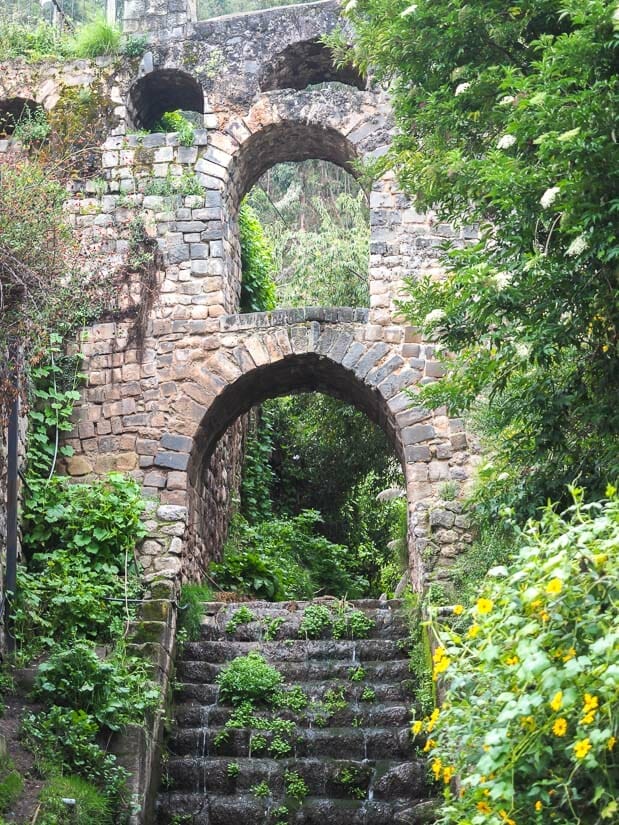
A few steps away from the top of Seven Borquitos Street, you’ll cross a small bridge over a stream. Look upstream and you’ll see the lovely Acueducto de Sapantiana.
This is a Jesuit-built colonial aqueduct dating to the 17 th or 18 th century. Carefully, it is possible to walk right up to it.
San Cristobal Church and Plaza
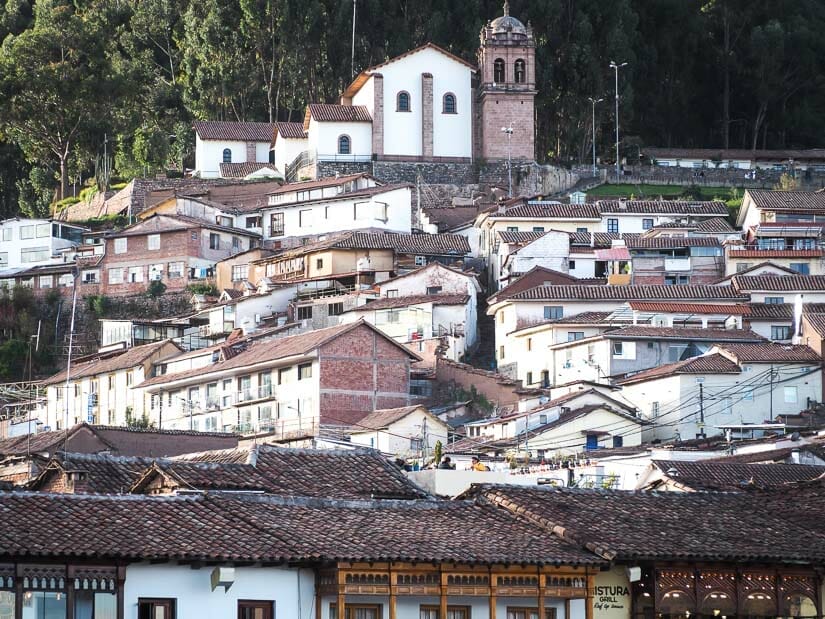
Just a few minutes from the bottom of Seven Borquitos Street, you can follow a road that connects to San Cristobal Church and Plaza. You could do this as a small detour if walking up to (or down from) Sacsayhuaman.
San Cristobal is one of Cusco’s most recognizable churches – you can easily spot it from the Plaza de Armas or other places in the city. It is perched high up on the valley wall, just below Sacsayhuaman.
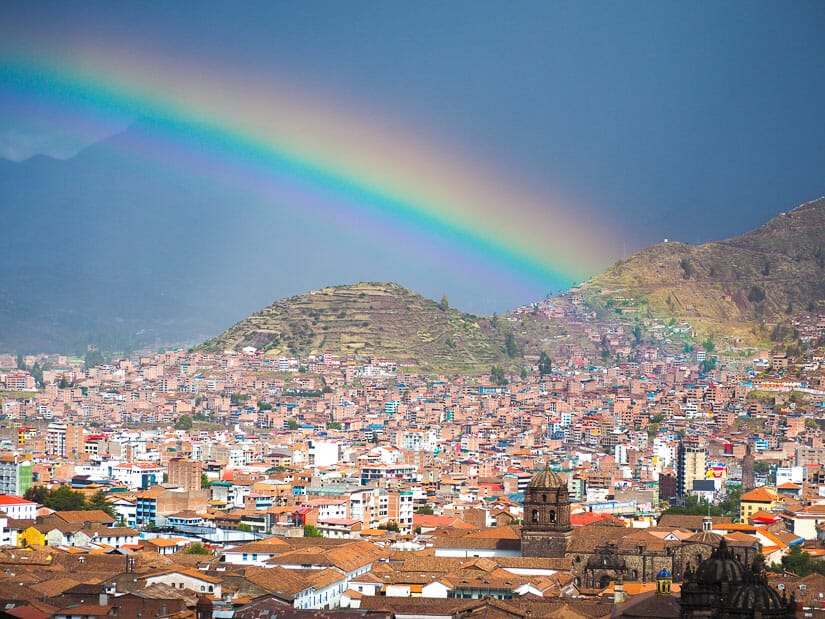
The plaza offers one of the best views of Cusco. I was unlucky to have rain when I was there, but then very lucky to enjoy a stunning rainbow after it ended.
The interior of the church is nothing special, but the climb up the bell tower offers an even more commanding view. If you plan to do this, then get the Boleto Religioso (Boleto Integral) when you visit Cusco Cathedral, which also works here.
Nearby, Escaleras Calle Armargura is considered one of the prettiest staircases in the area.
Christo Blanco
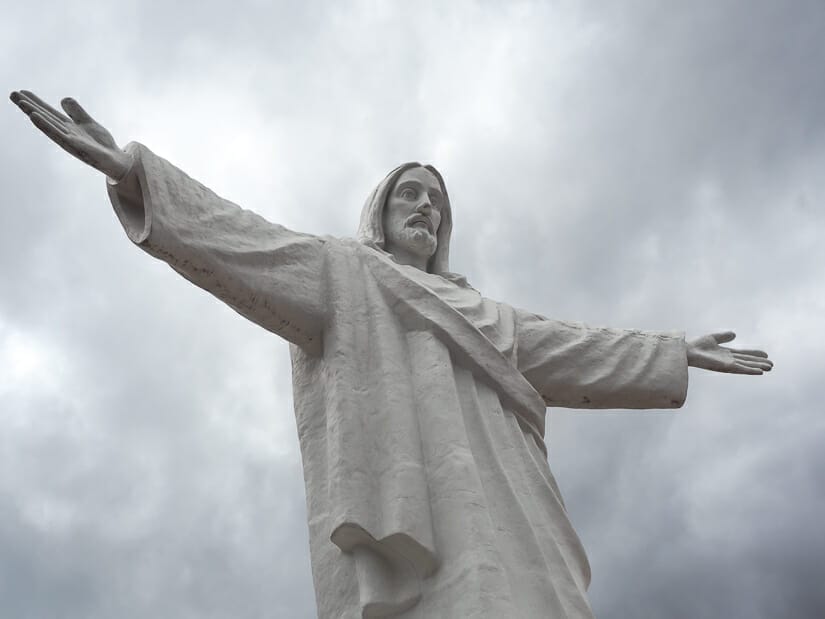
You can’t miss the giant white Jesus statue looking over Cusco. He’s visible from Plaza de Armas, including at night when he’s lit up.
The statue stands at the same elevation as Sacsayhuaman, but east of the ruins. From the main entrance and parking lot of Sacasayhuaman located here , there’s a walking path leading to the Jesus statue, which only takes 5 to 10 minutes.
Beside the statue, there are three large green crosses, not to be confused with the cross at Sacsayhuaman that is visible from the Plaza. From Christo Blanco, you could also walk to Q’enqo ruins (see below).
Ruins around Cusco
Besides Sacsayhuaman, there are many other ruins in the Cusco region. Here I’ll just cover the main ones.
It makes sense to visit Sacsayhuaman, Q’enqo, Puka Pukara, and Tambomachay in a day trip, as they all lie north of Cusco. All four are included on your Boleto Turistico, or you can get a partial ticket that only includes those four.
If you’re feeling adventurous, you could also add some smaller ruins like Temple of the Moon, Zona X, and others, as well as the popular weaving center, Manos de la Comunidad, on the same day trip.
You could devote another day to visiting the ruins east of Cusco: Tipon, Pikillacta, Rumicolca, plus the “Sistine Chapel of the Americas”, Saint Peter the Apostle of Andahuaylillas. Tipon and Pikillacta are on your Boleto, while the other two spots are free. You can visit these on a half-day tour .
A third day could be devoted to doing a Sacred Valley day tour like this one or this one . These very popular tours include the ruins of Pisac, Ollantaytambo, and Moray. I really loved these ruins and towns, so I highly recommend spending some days in each of them instead of just speeding through on a day trip.
To find out how to plan the above day trips without taking a tour, see my guide to visiting the ruins around Cusco .
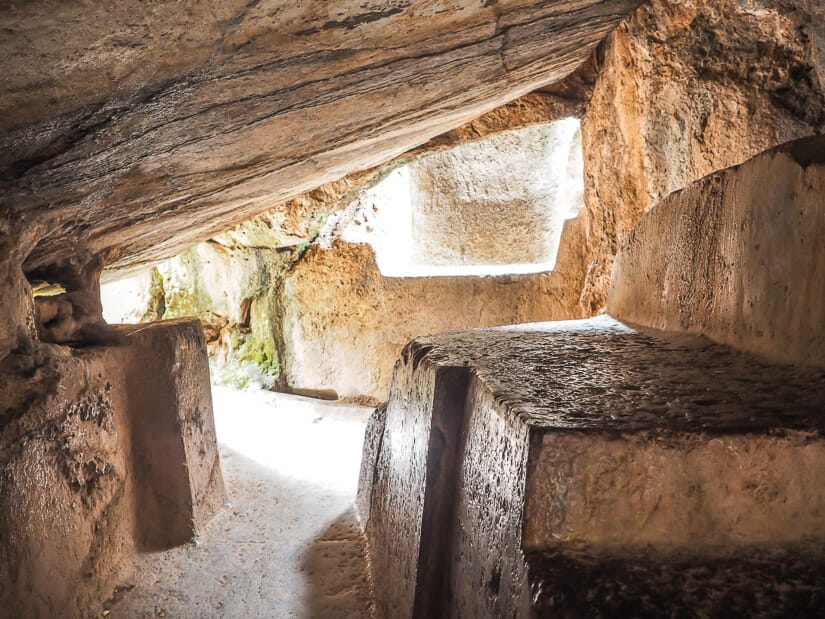
After Sacsayhuaman, Q’enqo is the next closest major ruins to Cusco. You can walk between them via Christo Blanco (the white Jesus statue) in about 25 minutes.
Q’enqo is quite a bit smaller than Sacsayhuaman, so you only need about 15 minutes to visit it. This was an Inca ceremonial site. It is believed that llama blood was poured at the top of the site, and the way it flowed down through channels could predict the harvest.
The highlight of Q’enqo for me was the cave in the middle of the site which contains a couple stone altars or beds.
Temple of the Moon
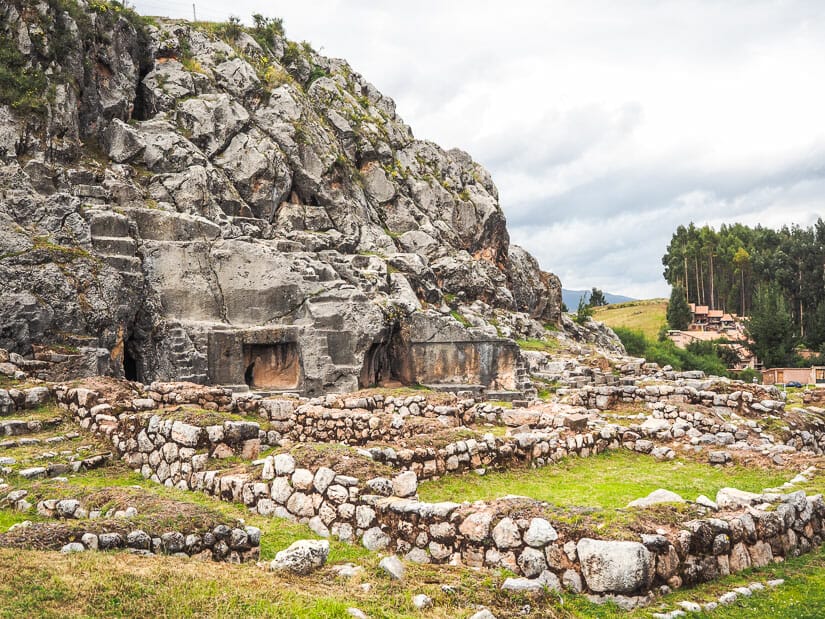
The Templo de la Luna (Temple of the Moon) is a remote set of ruins surrounded by farmland and eucalyptus forest above Q’enqo. You’ll need to walk about 15 minutes slightly uphill from Q’enqo to get there.
Your reward is that you’ll likely be the only one there. The ruins are built on and in front of a stone mound rising from the plain. From there, you could continue walking 25 minutes to the next spot.
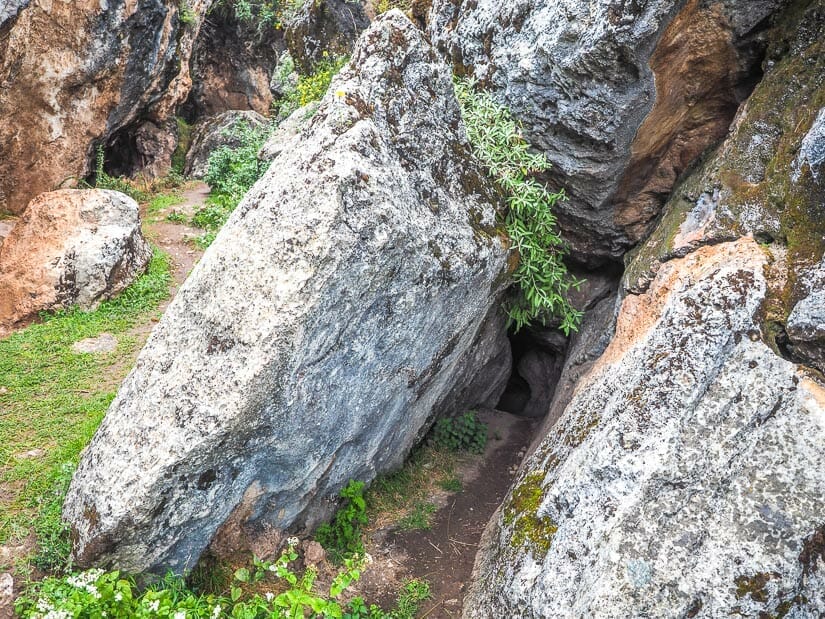
Zona X, or Lanlakuyoc, is another remote and seldom visited archaeological site. In fact, countless visitors pass right by it without realizing, as it is just off the road between Sacsayhuaman and Puca Pucara/Tambomachay.
This site is not a ruin but rather a collection of tunnels and carves that have been caves out. Some of the tunnels are surprisingly long and narrow – you’ll definitely need a flashlight.
However, Zona X is not considered safe for two reasons. First, some of the caves have steep drop off points inside them. Second, muggings have been reported in this area. If you decide to go, be careful, and don’t visit alone (I did and was fine, but it’s still best to be aware of the risk).
Use this AllTrails map to find the area, but once you’re there, you’re not likely to stick to the trail. Note that instead of starting from the highway, as the map indicates, turn down the road that heads to Sacsayhuaman, then you’ll see an entrance path on the right. If you try to enter from the highway, there’s barbed wire and a small piece of private land blocking the way.
Puka Pukara
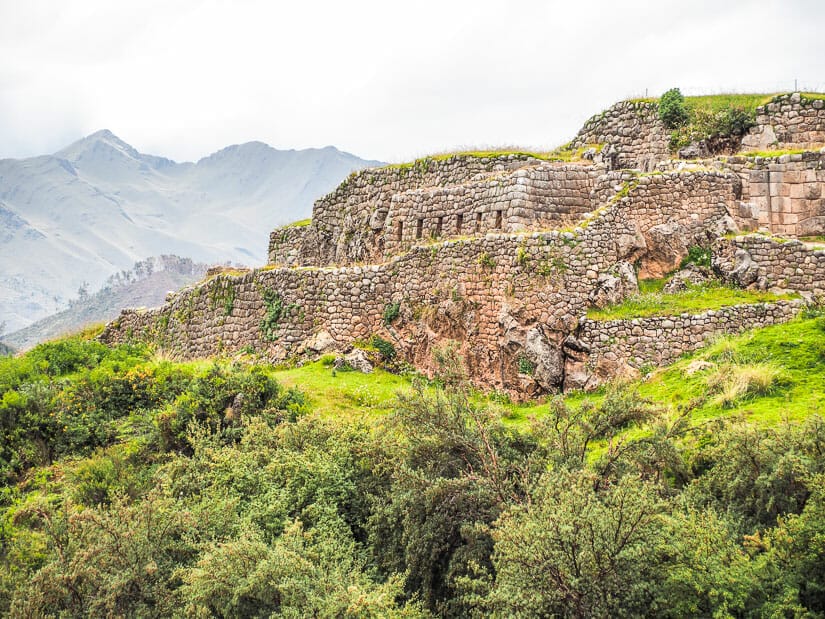
Puka Pukara (or Puca Pucara) is also known as the Red Fort for the slightly red color of its stones, especially around sunset.
Not much is known about this fort, except that probably protected the valley, which it has a commanding view over.
It only takes about 15 minutes to visit this site, which is included on your Boleto Turistico. From there, you can walk to Tambomachay, just five minutes further up the highway. The best view of the Puka Pukara ruins is actually from the highway between the two sites.
Tambomachay
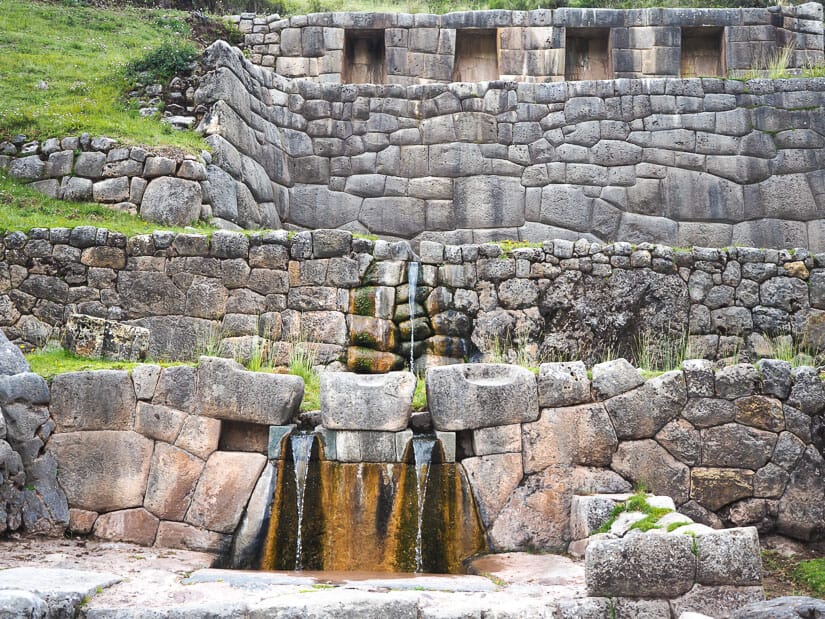
Tambomachay, also called the “Inca’s Bath”, is just five minutes’ walk to the north of Puka Pukara. The main attraction here is a set of aqueducts and fountains thought to have been a ceremonial bathing location.
Upon arriving, you’ll need to walk about 20 minutes (slightly uphill) to the site. The ruin is relatively small, so it only takes a few minutes to see, but you can make your visit longer by doing a small or longer loop trail around it (see the dotted lines on the AllTrails entry ).
Some people start their day by driving up to Tambomachay first, then working their way back to Cusco via Puka Pukara, Q’enko, and Sacsayhuaman. With a driver, consider going further to Cochahuasi and Awana Kancha (see “other day trips” section below), or even as far as Pisac, then back to Cusco.
Pisac Ruins
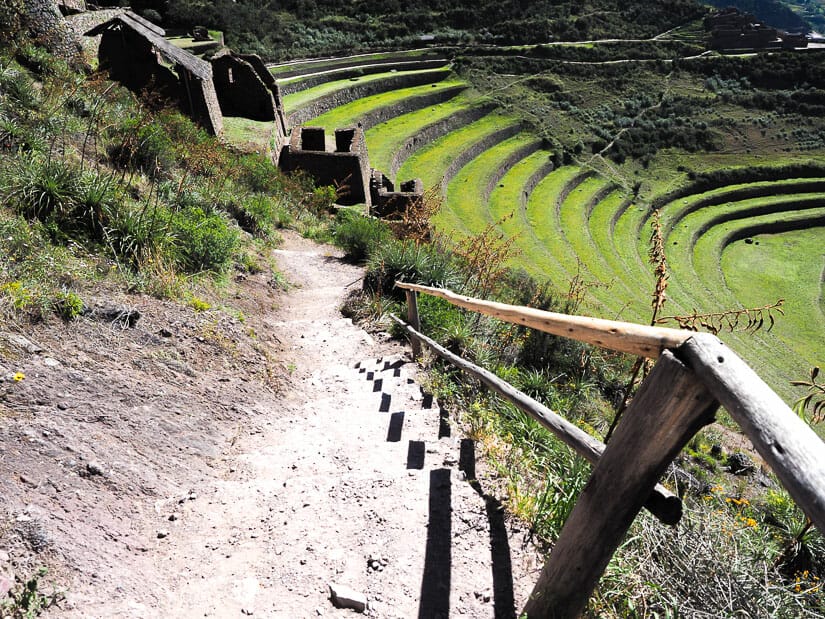
Pisac is the easternmost town in the Sacred Valley and the one closest to Cusco (or furthest from Machu Picchu).
Sitting high above the town are some of the most impressive ruins in the Sacred Valley. See my detailed guide to visiting Pisac ruins and other things to do in Pisac .
Many people visit the Pisac ruins as part of a Sacred Valley day tour from Cusco. I actually spend my first 4 days in Peru in Pisac to acclimatize and enjoy the area. I loved it, but Ollantaytambo was even better.
Pisac ruins, as well as Ollantaytambo ruins, Chinchero ruins, and Moray ruins, are included on the Boleto Turistico. You can also get a partial Boleto that only includes these four sites.
Ollantaytambo Ruins

The ruins at Ollantaytambo are the second most important in the region after Machu Picchu itself. It was there that the Incas staged their only successful defeat of the Spanish.
The ruins are right beside town so they are easy to access. I absolutely loved Ollantaytambo, more than Cusco, actually! Many people also visit the ruins as part of a Sacred Valley day tour, which is really too bad.
I highly recommend staying there for as long as you can. It’s also the perfect staging point for the Inca Trail, as the trains pass through town and the hike starts a short drive away from it.
See my guide to visiting Ollantaytambo ruins and other things to do in Ollantaytambo .
Moray Ruins & Maras Salt Mines

Moray is a unique Inca site consisting of a collecting of round depressions in the ground lined with circular terraces, with the deepest one going down 30 meters (98 ft).
The Incas used these for agricultural experimentation, as there is a 15 degree temperature difference between the highest and lowest terrace. You can view the terraces from just inside the site or walk around the whole site in about 30 minutes.
Nearby, the Maras Salt Mines, or Salineras, are another incredibly impressive site. Here the Incas built hundreds of salt terraces to harvest salt from a natural spring. Local families still use the terraces today.
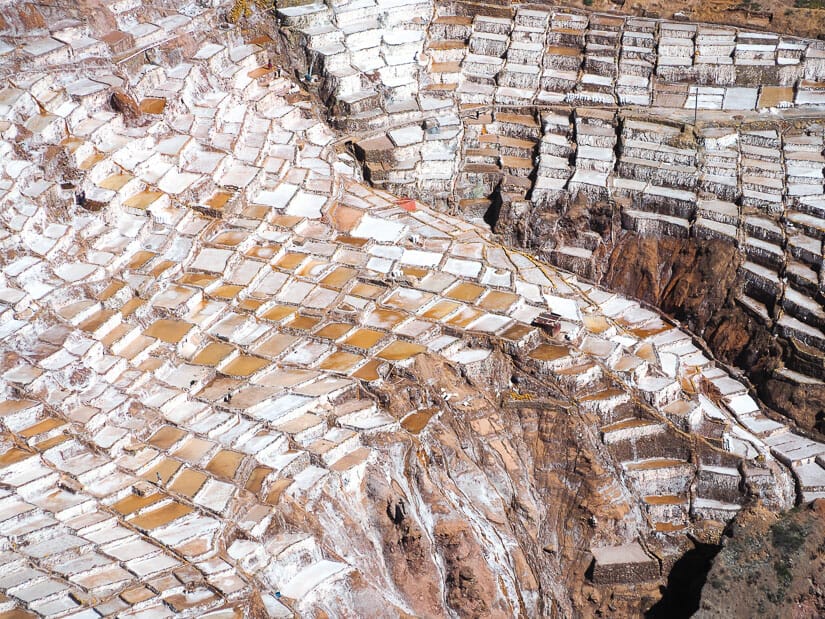
You can buy delicious salts, including smoked and flavored ones, and salted chocolates. Just a heads up that some countries have limits for how much salt you can carry (for Canada it is only 350 ml) so I could only buy a few small packs.
Most Sacred Valley tours include a stop at both of these sites. Moray is on the Boleto Turistico, while Maray Salt Mines has an entrance fee of 10 soles.
The agricultural, high mountain plateau area around Moray and Maras is incredibly beautiful. There are views of towering mountains all around, including the sacred Mt. Veronika. My incredible stay at Mountain View Maras was one of the highlights of my Peru trip.
Chinchero Ruins
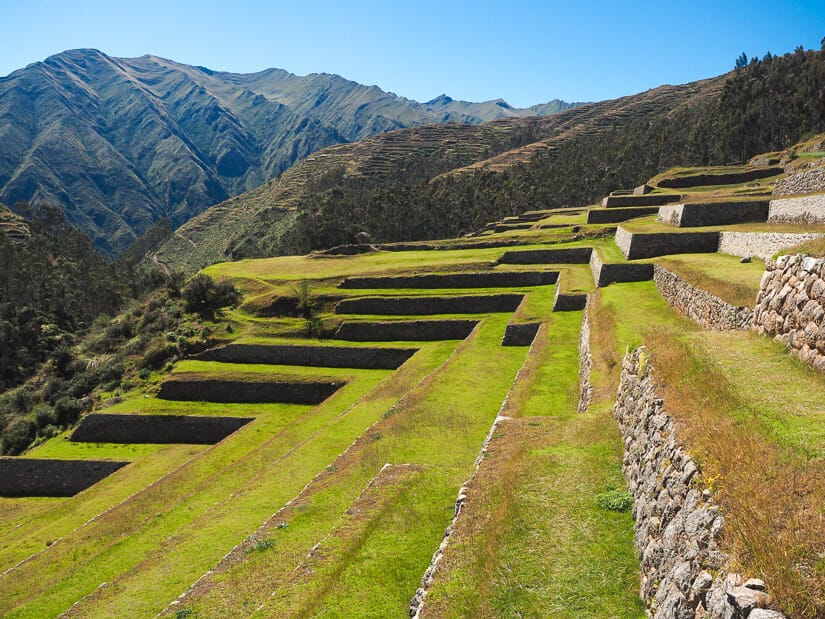
Chinchero is a weaving village in the highlands on the way from Ollantaytambo back to Cusco, about 30 minutes’ drive from Moray.
Sacred Valley tours like this one include a stop in Chinchero, which will often involve watching a weaving demonstration. I saw one here on my own and it was the best demonstration of several I saw in Peru. I bought several textiles there.
Chinchero is also known for its Sunday local market, which takes place near the Chinchero ruins. The ruins include a whitewashed Spanish church built atop the summer palace of Inca Tupac Yupanqui and some impressive terraces.
If you’ve got the time, there’s an excellent 2-hour return hike from the ruins to Poc Poc Waterfall (Catarata Poc Poc). The hike is mostly downhill, so the return is the hard part. The waterfall spills into an incredibly beautiful valley.
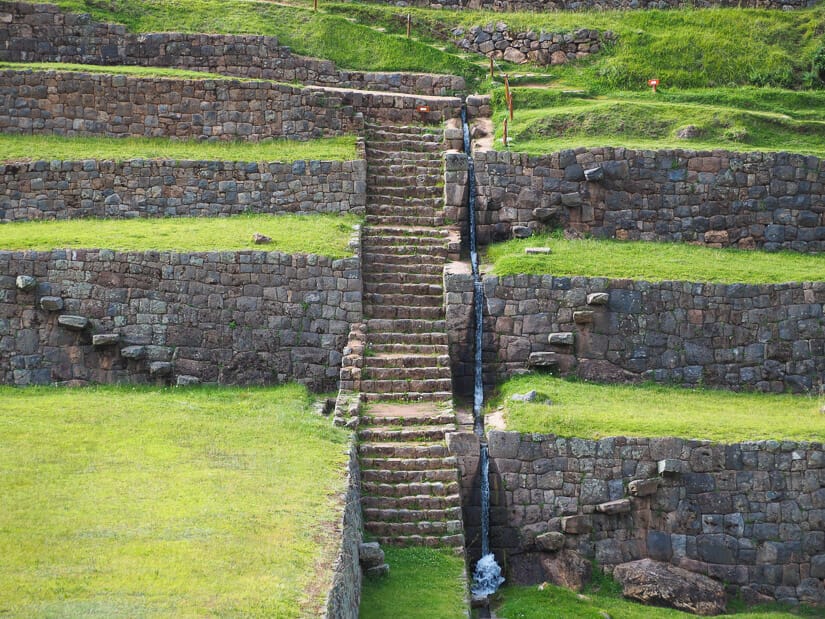
Tipón is one of the more difficult to reach ruins included on your Boleto Turistico. Far fewer tourists make it here, but that is one of the biggest reasons to go.
I actually loved Tipón. The site showcases the Inca’s incredible ability to control water through a series of irrigation canals and fountains. It’s in a stunning location and I was the only person there when I visited. It took me around 45 minutes to do the loop around the ruins.
Tipón is a 45-minute drive east of Cusco. It makes sense to combine it with the following 3 spots as a half-day to full day trip. I paid $60 for a driver with Taxidatum , which I highly recommend. You can message them for a quote for drives anywhere in Cusco, the Sacred Valley, or in Lima.
Pikillacta & Rumicolca
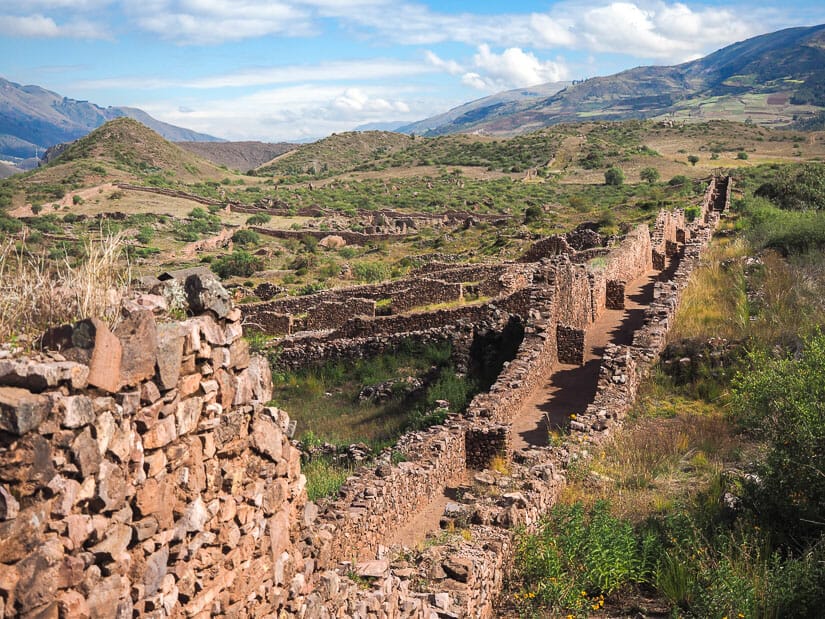
Pikillacta is an expansive pre-Inca site 20 minutes’ drive past Tipón. It was constructed by the Wari people. The biggest highlight for me was the sheer size of the site, including its ultra-long walls and passageways.
I spent around 30 minutes here. I first visited some ruins in the middle, then did a walk from the midway point of the back outer wall back to the entrance.
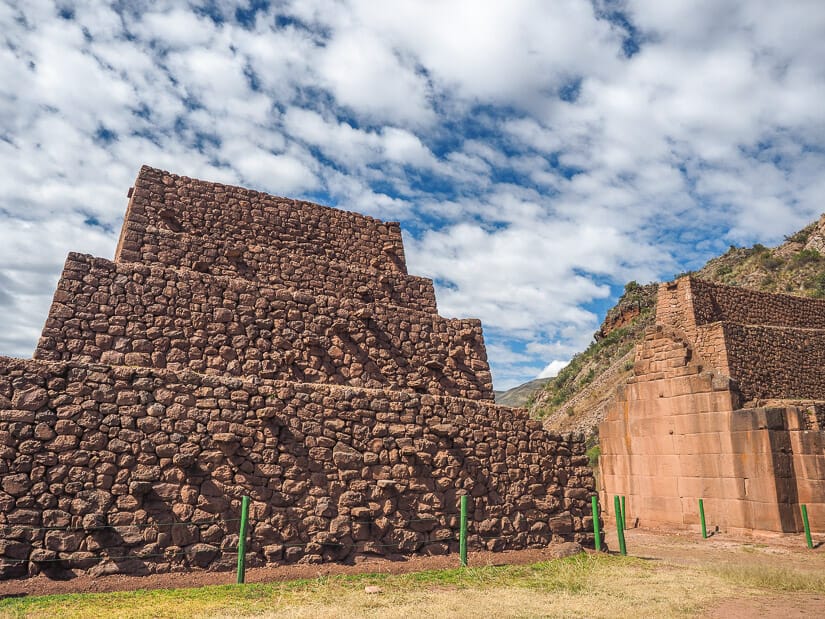
Just a few minutes past the entrance to Pikillacta, but on the opposite side of the road, is Rumicolca. This was possibly first built by the Wari people then expanded by the Inca and used as a checkpoint into the city.
What you see in the picture above is most of it, so it only takes a few minutes to visit. Entrance is free.
Saint Peter the Apostle of Andahuaylillas
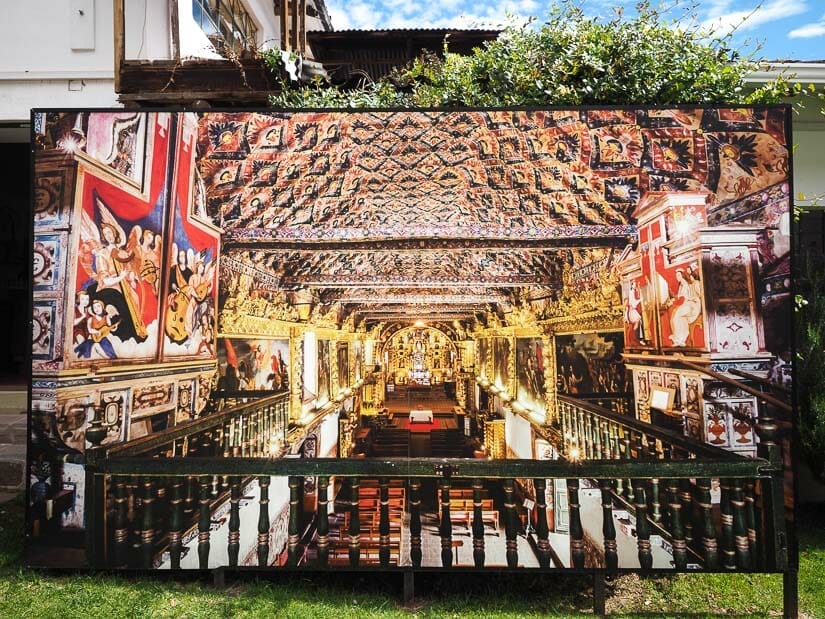
This one is not a ruins but a church. But if you make it as far as Rumicolca, then it only makes sense to drive another 20 minutes to Saint Peter the Apostle of Andahuaylillas, also called the “Sistine Chapel of the Americas”.
As the nickname suggests, the interior of this church is totally covered in intricate paintings and patterns. Unfortunately no photos are allowed, but you can buy a postcard or take a photo of the large photo of the church interior outside.
Other Cusco Day Trips
Besides the three day trips I described above (ruins to the north of Cusco, Sacred Valley day trip, and ruins to the east of Cusco), here are a few more more possible day trips you’ll want to consider making.
Rainbow Mountain
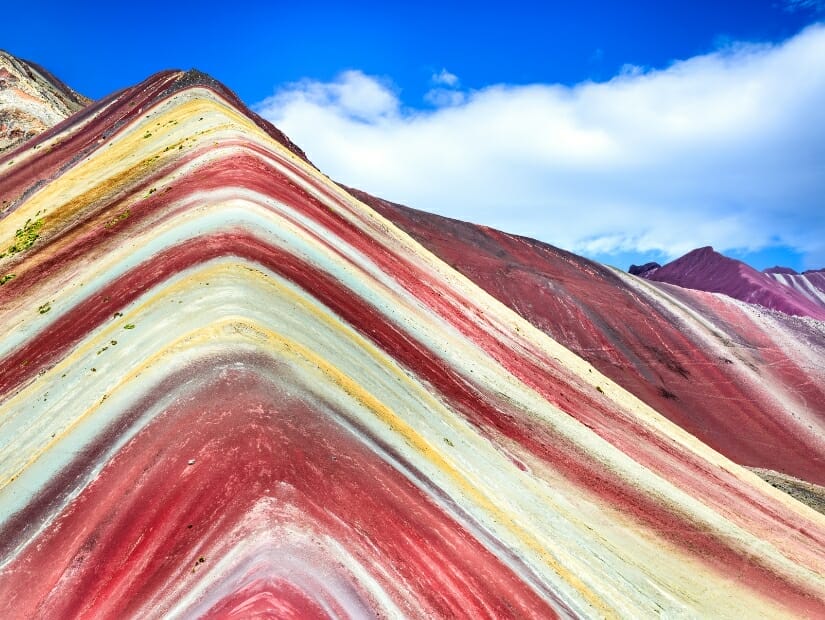
Rainbow Mountain (also called Vinicunca and Montaña de Siete Colores) is the single most popular non-ruins day trip from Cusco. This colorful mountaintop first appeared after snow covering it melted in the mid-2010s.
Visiting Rainbow Mountain is a full-day trip involve a very early start, 7 hours of driving (return), and a 3-hour return hike. It’s very popular and touristy, and not as vibrantly colorful as in all the Photoshopped images you’ve seen, but most visitors still enjoy it.
Note that Rainbow Mountain is very high 5,200 meters (17,060 feet), so you wouldn’t want to go here until you are fully acclimatized.
Lake Humantay

Another popular nautral attraction you can visit as a day trip from Cusco is Lake Humantay. This is another long, full day trip, in this case to a stunning alpine lake.
Tours also tend to leave very early, although it is only a four-hike return drive and 3-hour hike.
Cochahuasi and Awana
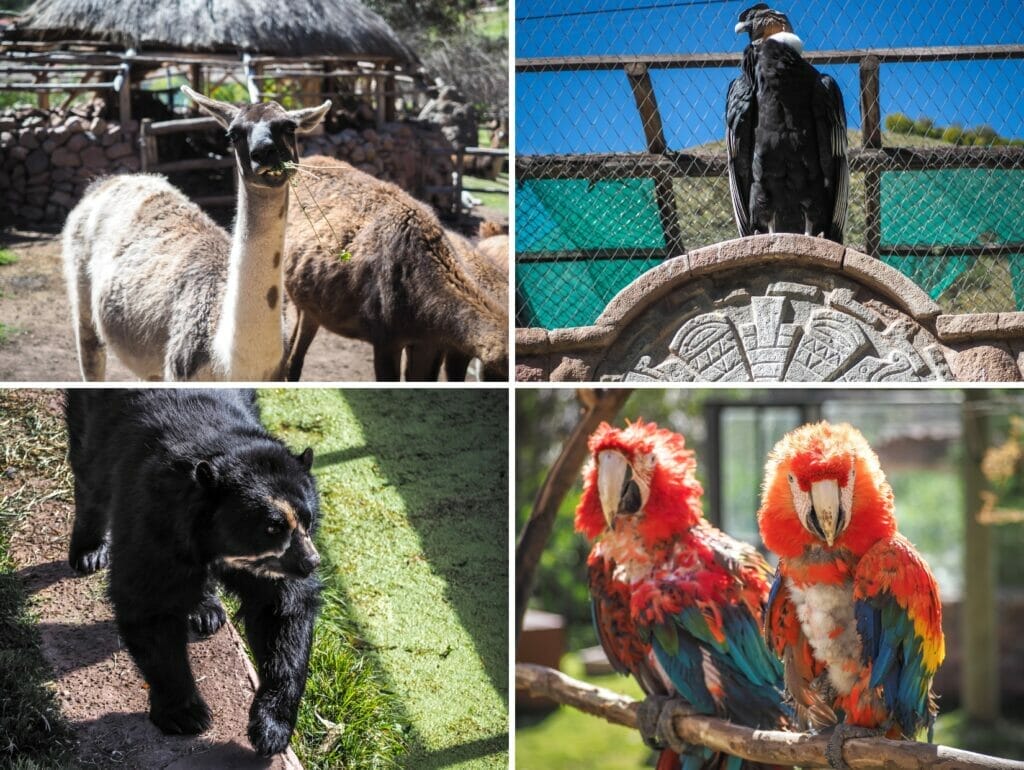
Cochahuasi is an animal rescue and rehabilitation center on the road between Cusco and Pisac. Some Sacred Valley day tours stop in here on the way to Pisac.
When I visited, I saw Andean bears, a puma, small mountain cat, parrots, coati, and more. I also got to witness a condor flying over my head and pet lots of llamas.
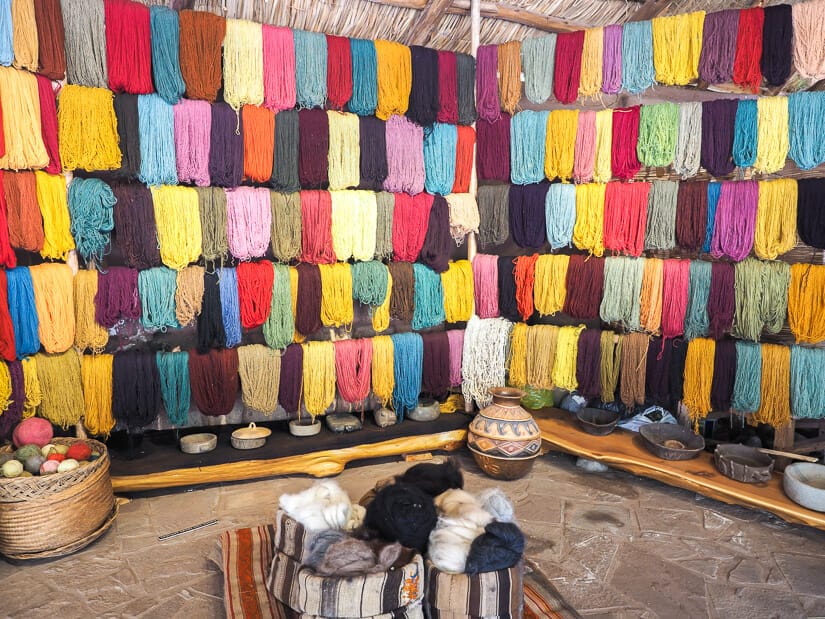
Awana Kancha is just a few minutes past Cochahuasi. This is another weaving center, similar to Manos de la Comunidad.
You can see all four of Peru’s camelids here, weaving demonstrations, displays of yarn, and so on. A small donation is expected. The items on sale in the shop here are high quality but pricey.
If you want to visit these places on your own, you can take any bus or colectivo traveling between Cusco and Pisac.
Machu Picchu
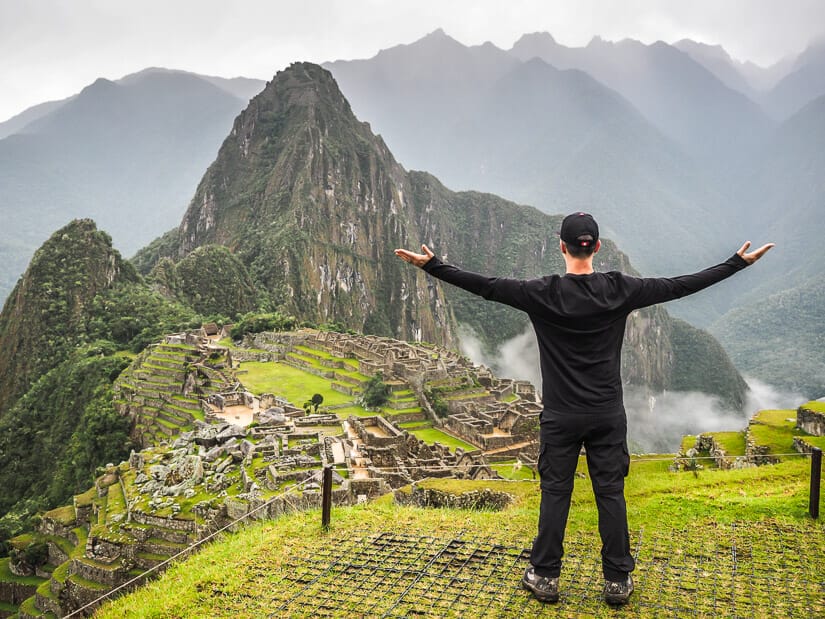
Although I don’t recommend it, you can even visit Machu Picchu as a day trip from Cusco. I don’t recommend it because it is better to spend some time in the Sacred Valley first, especially Ollantaytambo, do the Inca Trail to Machu Picchu, or sleep in Aguas Calientes the night before you visit Machu Picchu.
The main reason is that if you do a day trip to Machu Picchu from Cusco, you’ll be arriving there at the absolute busiest time of the day. By hiking in or sleeping in Aguas Calientes the night before, you can get there first thing in the morning, before the masses of tourists.
If you must do it as a day trip, this will involve taking the train from Poroy (just outside of Cusco) or Ollantaytambo to Aguas Calientes (3 hrs 15 min / 1 hr 30 min), then a bus from Aguas Calientes to Machu Picchu (20 minutes). See my Aguas Calientes guide and guide to the Machu Picchu circuits for all the details.
Well, that brings us to the end of my Cusco guide. Thank you if you’ve made it this far! If I’ve missed any fun things to do in Cusco, please let me know in the comments below!
Related Posts
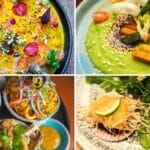
Leave a Comment Cancel reply
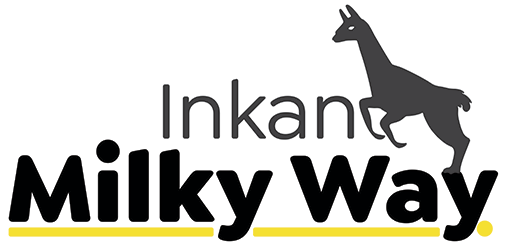
- Tourist Information
Cusco: exploring 7 traditional streets.
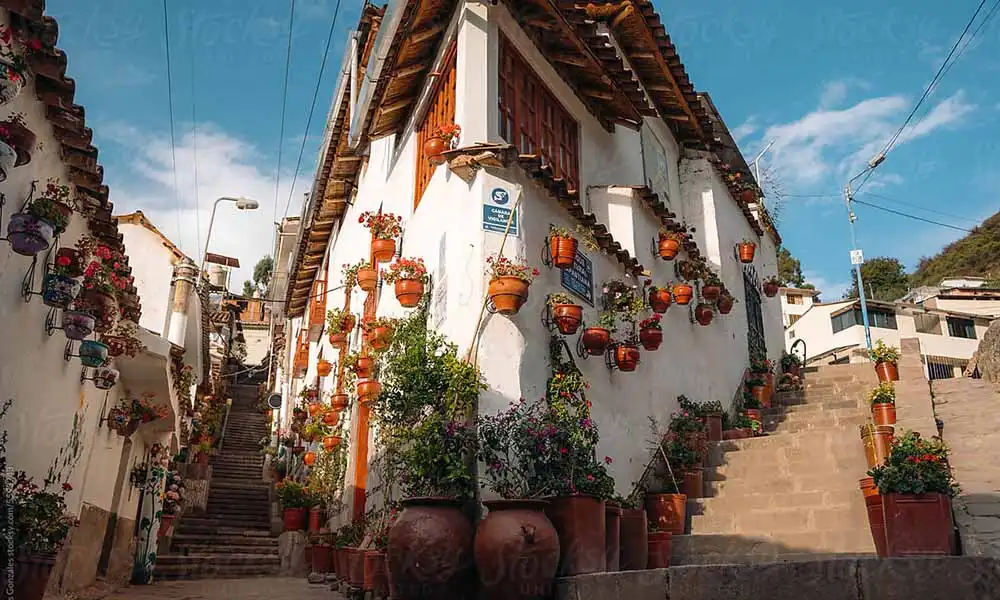
The history, past, and traditions of Cusco are not only found in the halls of its museums , the stone walls of its archaeological parks , or the popular festivals that honour the sun, the earth, the saints, and the virgins who perform miracles from the altars of colonial churches.
These stories of Incas and invaders, the Andean and Hispanic past , and the traditions that make those born here and visitors from afar feel alive, praying and dancing, spill out from centuries-old buildings and museum exhibitions to take to the streets.
And there they are, in the Historic Centre, waiting for you to “take you” back to the Inca and colonial past that endures and is preserved in today’s Cusco, the Cusco of always. Yes, in those cobbled streets that wind between pre-Hispanic walls and colonial buildings, you will feel the mystique of the city that was the centre of the world .
That is what its founders, the “Children of the Sun,” the highland men who forged the greatest empire in this part of the planet, believed. The Spaniards who turned the so-called “Archaeological Capital of America” into the epicentre of the invasion that would become the Viceroyalty of Peru also understood this.
As you walk through its traditional streets, you will discover that the past lives on in Choquechaka, Asnoqch’utun, Hatun Rumiyoq , and all the paths that lead to a cobbled square, a centuries-old temple, or a monumental colonial house.
Stroll through Cusco so its streets can tell you stories and reveal the myths, legends, and even the whispers that have circulated for centuries in the Historic Centre of the Inca capital and the colonial city, which was declared a UNESCO World Heritage Site in 1983.
If you want your steps to decipher the distinctive characteristics and even the hidden “messages” of the traditional streets of Cusco, you must read carefully what we will share next:
What are the traditional streets like?
Hatunrumiyoc, asnoqch’utun, atoqsayk’uchi, k’uichipunku, choquechaka, things to keep in mind.
Cobblestoned and generally narrow, some streets rise while others descend. Almost all lead to squares, churches, and grand houses . Several were designed by Inca architects , and many are flanked by colonial buildings, built upon the stone walls of the “Children of the Sun.”
With their Andean and Western nuances, narrow pre-Hispanic alleyways, irregular stones in the pavement, and the interweaving of urban spaces of great archaeological, historical, and artistic value , the arteries of Cusco’s Historic Centre are incomparable, unique… a treasure of humanity!
In these streets—bordered by intricately carved stone doorways and wooden balconies— nostalgia does not roam . On the contrary, the heart of Cusco beats and vibrates. It is a meeting place, bustling with life. Artisan galleries, museums, restaurants, pubs, and cafés infuse it with colour and movement, adding a cosmopolitan touch.
Now you know. You will not only connect with the past of an Andean city that fuses indigenous and European elements, but you will also discover a vibrant present that reveals that, in many ways, Cusco continues to be the centre of the world.
Guide to Traditional Streets
Not all of them are included, but in this guide, you will find information about seven traditional streets in the tourist destination that awaits you on your next holiday.
On a splendid Inca wall where the stones fit perfectly together without the need for mortar, a 6-ton block, one metre high and 1.2 metres long, has become a symbol of the city and the architectural skill of Cusco’s founders.
The interest it generates is explained by the 12 carved or sculpted angles created by its builders, allowing the block to fit into one of the exterior walls of the palace of Inca Roca , as if it were a massive piece of a puzzle.
If you want to admire the Stone of the Twelve Angles , head towards Hatun Rumiyoq Street , one of the most traditional in the Historic Centre. Easily accessible from the main square, its name in Quechua translates to “the street that has large stones.”
To see the iconic stone, you won’t spend a single sol or dollar ; you’ll only need to invest a bit of your energy and time. Be patient, as groups of tourists often gather in front of the wall that once was the residence of Inca Roca, which now houses the Archbishop’s Palace and the Museum of Religious Art.
As you stroll through the Historic Centre, your imagination runs wild. When that happens, you can “play” with the names of the streets to create “little” stories with their respective morals. Here’s one for you: to amass a great amount of gold, one must first walk up the Slope of Bitterness until reaching Ccoricalle.
Truth or myth? What’s certain is that in Cusco, there’s a tale that in one of its traditional streets, there was a house whose basement was filled with gold dust. The rumour emerged in 1866 (the republican era) and was so loud that the street began to be called Ccoricalle.
Beyond the stories and morals, from Ccoricalle—which runs parallel to Suecia and Tecsecocha streets—you’ll have a magnificent view of the city centre.
You don’t need to be an expert in Quechua to notice that the name of this street is related to donkeys, one of the pack animals that arrived in the Andes during the conquest. The mystery lies in uncovering the meaning of the rest of the word.
Learning various words in Quechua, one of Peru’s official languag e s , is part of the experience of exploring Cusco. In this case, the street name translates to “snout (ch’utun) of a donkey,” which might be explained by its location.
Asnoqch’utun, located opposite Pantaq Street, is notable for the stairs leading to the San Blas market. It’s likely that, on those steps, more than one heavily laden donkey has “gone snout-first” after a spectacular fall or slip.
What do you think? Regardless, take the opportunity to explore the market and perhaps buy a few items . Prices are reasonable, and you’ll help boost the local economy.
Its name in Quechua translates to Spanish as “mistaken” or “a person who makes errors.” This curious name is explained because Pantaq is a dead-end alley ; thus, those who enter with the intention of taking a shortcut “make a mistake.”
But it’s not a serious error . On the contrary, the lost passerby will have a great time in the affordable restaurants, shops, and hostels that bring life to this charming corner of the city.
It is one of the narrow, cobbled, and inspiring little streets of San Blas, the artisan district that has sheltered great masters such as the imaginer Hilario Mendívil , the sculptor Edilberto Mérida, and the creator of the Cusco children Manuelito (Jesus), Antonio Olave.
In this street, whose name translates to “the place where even the fox gets tired,” you will find the best of local craftsmanship . Take advantage of your walking journey to explore the shops and galleries, where you can buy everything from jewellery and paintings to alpaca sweaters and shawls.
More Quechua lessons: Punku means door, and kuychi refers to the rainbow god in Andean cosmology. The Rainbow Door is the name of this iconic and popular street that leads to Avenida El Sol and the magnificent temple of Qoricancha.
Due to its strategic location, K’uichipunku features hotels and restaurants , along with other businesses related to tourism. It’s a great place to stroll and also to stay, as it will facilitate your movements in and out of the Historic Centre, the most attractive area of the city.
The Choque brothers were owners of a property called Urupampachayuq. They were not hatunrunas (common folk); they were orejones (descendants of Inca rulers) with power and resources, and thus ordered the construction of three bridges over the Tullumayu stream.
These bridges ( chakas in Quechua), made of wooden planks, not only facilitated access to the Choque estate but also came to define an area of the city that breathes culture, home to the Museum of Contemporary Art and the Centre for Traditional Textiles of Cusco.
But let’s return to the past. During the colonial period, Choquechaka was a commercial and residential area inhabited by wealthy Spanish families. That’s not all; various religious institutions beautified the urban landscape of Almudena, as it was renamed during that time.
- Walking will allow you to better appreciate Cusco’s architecture and feel the unique atmosphere of the city.
- Exploring markets, such as the central market of San Pedro or San Blas , will bring you closer to the culture, craftsmanship, agricultural production, and local gastronomy.
- The Plaza de Armas isn’t the only one you should visit. San Francisco and Regocijo , for example, are two spaces you will love.
- If you have questions or need help finding a place, don’t hesitate to ask the locals. They are very friendly to visitors.
Related Tours
- Offices for paid tours
- Work with us
Heladeros 225, Cusco 08000
Pje. Porta 132, Miraflores 15074
Santa Catalina 204, Arequipa 04001


IMAGES
COMMENTS
Cusco is a fascinating gateway to rich Andean culture, offering a perfect starting point for exploring Machu Picchu and the Sacred Valley. Discover our complete travel guide below, packed with essential information, expert travel tips and must-see attractions to make the most of your trip to Cusco. Introduction
The undisputed archaeological capital of the Americas, Cuzco is the continent's oldest continuously inhabited city and the gateway to Machu Picchu. Cosmopolitan Cuzco (also Cusco, or Qosq'o in Quechua) thrives with a measure of contradiction. Ornate cathedrals squat over Inca temples, massage hawkers ply the narrow cobblestone passages, a ...
Travel Tips Plan Ahead. Traveling to Peru in the peak season (June, July, August) requires a lot of planning several months in advance. This includes booking hotels in Cusco and Aguas Calientes (Machu Picchu), flights to/from Cusco, train tickets to/from Machu Picchu, Huayna Picchu tickets (limited to 400 and sell out weeks in advance) and Inca Trail permits if applicable.
18. The Qosqo Center of Native Art. 19. Rainbow Mountain and Other Day Trips. 20. Inca Trail to Machu Picchu. 1. The Cusco Cathedral. Built between 1560 and 1664 and nestled in the heart of Cusco, the beautiful Cusco Cathedral boasts an imposing exterior, intricate architecture, and a unique collection of religious art.
Cusco in Peru is the ancient Inca capital. This is the starting point for visiting Machu Picchu and the Sacred Valley. Cusco, Peru: The Ultimate Visitors Guide ... Travel Insurance Don't forget a travel insurance for your Peru trip! Heymondo covers medical emergencies, theft, delays, cancellations, lost luggage, and more, with 24/7 worldwide ...
Cusco is the top destination in Peru, so you cannot be surprised that the city is easily accessible no matter where you travel from - you can get to Cusco either by bus or by plane. Budget travelers, including us, usually get around Peru by overnight buses. Distances between cities are vast, so it is a great way to save time and accommodation ...
In Cusco, every corner is filled with history, as the ancient capital of Peru (during the Inca Empire) still preserves remnants of the most important power of this ancient civilization. The ancient history can be felt in every step you take through the streets of its towns, which seem to have stopped in time. Its cities are riddled with so much ...
Best Months to Visit. The best time to visit Cusco is from June to mid-September. Though temperatures hover in the mid- to upper 60s throughout the year, the city sees fewer rain showers during ...
The Imperial City of Cusco is known as the "Navel of the World" and the former capital of the Inca Empire. It is an enchanting introduction to the Andean culture and the main gateway to the Sacred Valley and Machu Picchu Citadel. Almost all people who like to travel, have the city of Cusco among the places they have to visit in life.
*Practical information Getting to Cusco From Lima. Many visitors will catch an inexpensive flight from Lima to Cusco (1.5hr, S/130-300) and then take a S/15-25 taxi from the airport into the city; this is the best option if your main objective is to get there quickly and comfortably.
Irrespective of time of the year, evenings in Cusco are really quite chilly. To this end, whether you're travelling in summer or winter (but especially in winter), be sure to pack the appropriate clothing. Fleeces, wooly hats, and even a few thermal tops will be greatly appreciated, as will an accommodation that supplies plenty of blankets.
Stray dogs are a common problem in Cusco, and one of the most common Cusco travel tips is that travelers get vaccinated against rabies. Whether you're exploring the outskirts of the city or downtown, you'll see many homeless dogs in alleyways, on busy sidewalks and lying on steps and benches. It's estimated that at least 14,000 dogs roam ...
Cusco's altitude is usually given as around 3300 meters (around 10,800 feet), but that is an average, with the highest part of the city, the Inca fortress of Sacsayhuaman (pronounced a little like "sexy woman") at 3700 meters (around 12,100 feet). Further adding to the workout, some of the more touristy parts of the city are accessed by ...
All About Cusco for travelers, tourists & expats. Welcome to Cusco, the old capital of the Incas, nestled high in the Andes Mountains in Peru. Cusco is a place of stunning natural beauty, friendly locals, full of culture and history, and with endless opportunities for adventure & exploration. Cusco is also the gateway to the Sacred Valley of ...
Altitude Tips. One of the things you need to be acutely aware of when you visit Cusco is the altitude of the area. The city of Cusco sits at an altitude of 11,152 feet (3,399 meters), which is a much higher elevation than many travelers are used to. For some people, this high elevation can be a bit much.
Altitude Sickness in Cusco. The altitude in Cusco can hit you hard. Cusco sits at an elevation of 3,399 m (11,152 ft) above sea-level, and visitors who arrive straight to Cusco from lower altitudes often suffer from altitude sickness. If you only have 2 days in Cusco, take it easy and don't over-exert yourself.
Enjoy! Cusco Peru Hotels, Tours, Travel information Comprehensive site for travel and tourism to Cusco, Machu Picchu and Peru. Find Package tours, Hotels booking, Inca trail hikes, tailor made holiday vacations and travel information. Join one of our all inclusive Cusco and Machu Picchu package tours or let us create your own personalized tour ...
17. Visit Machu Picchu. And now last, but certainly not least, the real reason most travelers make their way through Cusco: to visit the famous Machu Picchu Inca ruins. As one of the Seven New Wonders of the World, travelers from all over the globe come to marvel at the ancient wonder.
Cusco. Also known as Cuzco or Qosqo, archaeological capital of America, it was the main city of the Inca Empire, considered by them as "Navel of the world". It was the vital center of the millenary Tahuantinsuyo (Empire of the Incas) and nowadays it is the most visited city in Peru because it offers great architectural and spiritual richness.
Cusco itinerary for five days of travel Days One and Two: Cusco. Arriving at the airport, take a taxi to your accommodation. Take a day or two to simply walk around, hydrate and acclimate. Starting at the Plaza de Armas, visit the Catedral de Cusco and Iglesia de la Companía de Jesús, the most impressive Spanish architectural feats.
Santo Domingo and Coricancha. The courtyard and tower of Santo Domingo in Cusco. The church of Santo Domingo is built on the ruins of the famous Inca site of Coricancha, the Templo del Sol or Temple of the Sun. Coricancha (Q'orikancha in Quechua) means "golden courtyard," and its walls were once lined in sheets of solid gold.
Cusco is the ancient capital of the Inca empire and gateway to Machu Picchu. It is known for its Spanish convents sitting atop Inca foundations, plethora of ruins, Quechua culture, and incredible food. I had wanted to go to Cusco and Machu Picchu for over 20 years. Other things always got in the way.
The BEST Things to do in Cusco, Peru. 1. Visit the Sacsayhuamán Fortress. This place is so cool to see, the stonework is fantastic! Built in the 15th Century, Sacsayhuamán is a collection of impressive structures and walls just outside Cusco. It's the largest structure ever built by the Incas and a Cusco must-do.
The history, past, and traditions of Cusco are not only found in the halls of its museums, the stone walls of its archaeological parks, or the popular festivals that honour the sun, the earth, the saints, and the virgins who perform miracles from the altars of colonial churches.. These stories of Incas and invaders, the Andean and Hispanic past, and the traditions that make those born here and ...
WASHINGTON, Sept 24 (Reuters) - U.S. President Joe Biden will travel to Germany and Angola Oct. 10-15, the White House said on Tuesday, in what will be his first visit to Africa as president.